Anatomy
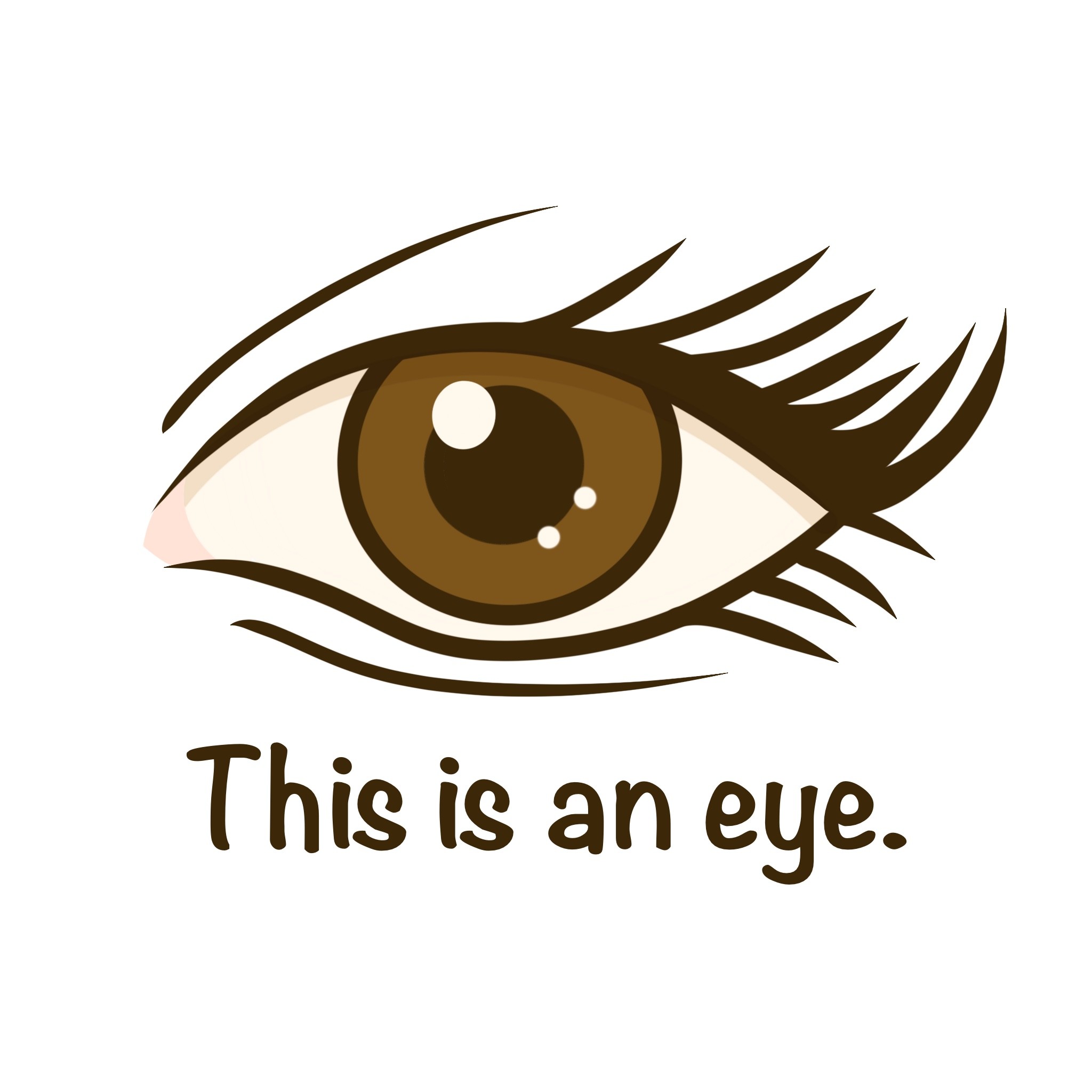
The study of the biological form of an organism
Physiology
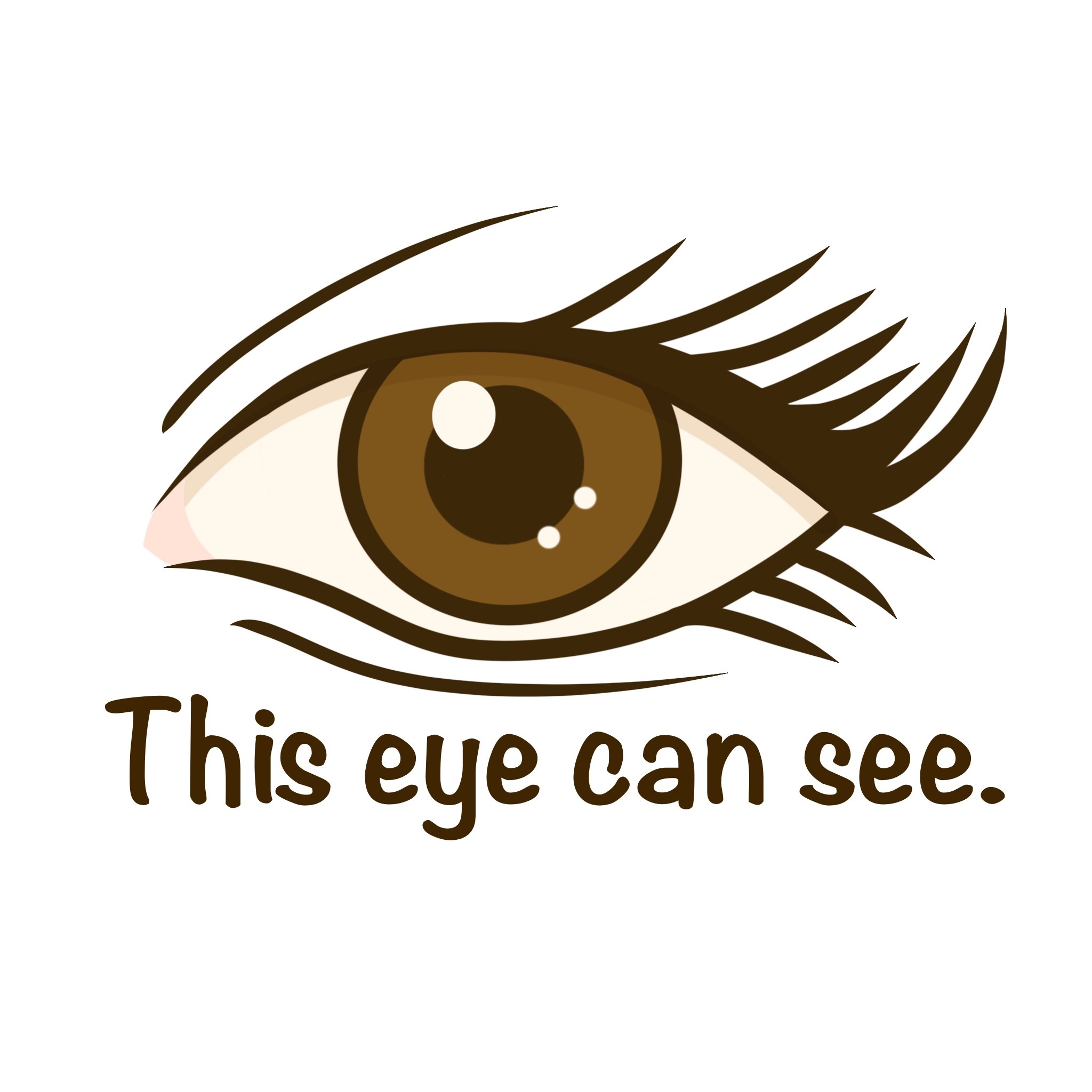
The study of the biological functions an organism performs
How has size and shape evolved?
Through interactions between animals and their environments (abiotic & biotic) & mutations
What do physical laws constrain regarding animal forms?
Strength, diffusion, movement, heat exchange
As an animal increases in size, what happens to the skeleton?
The skeleton must be proportionally larger to support mass
As an animal increases in size, what happens to the muscles?
muscles must be larger to support locomotion
What does gravity influence the body shape of?
Flying animals
What does drag influence the body shape of?
Swimming animals

Water properties cause fast-swimming animals to have what?
-Smooth body surfaces
-Fusiform (Football) body shape
This increases gravity & drag, optimizing survival
Convergent Evolution
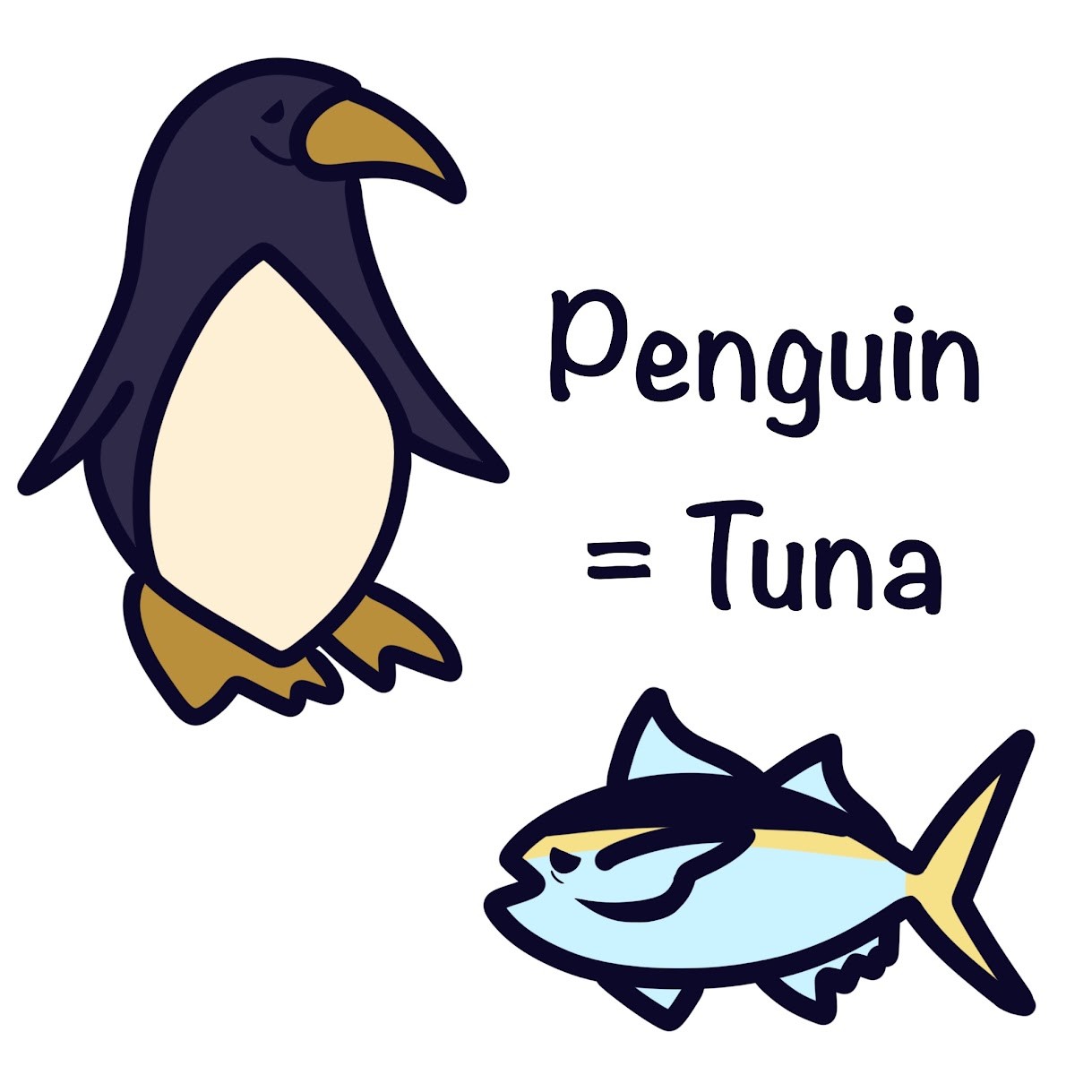
Similar adaptations of diverse organisms facing the same or similar environmental changes
What molecules can be exchanged by simple diffusion?
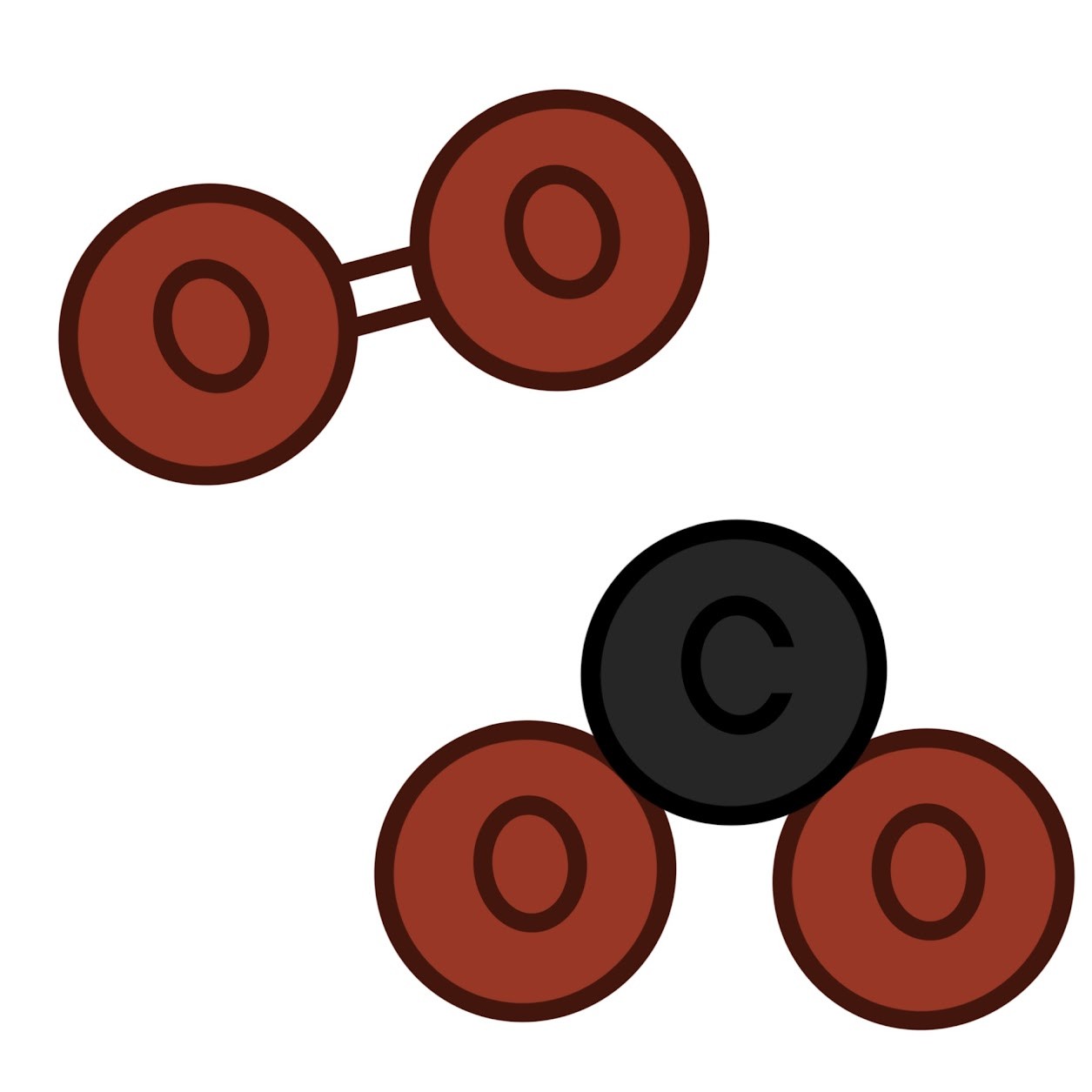
Small molecules like O2 & CO2
Why is diffusion efficient over very short distances?
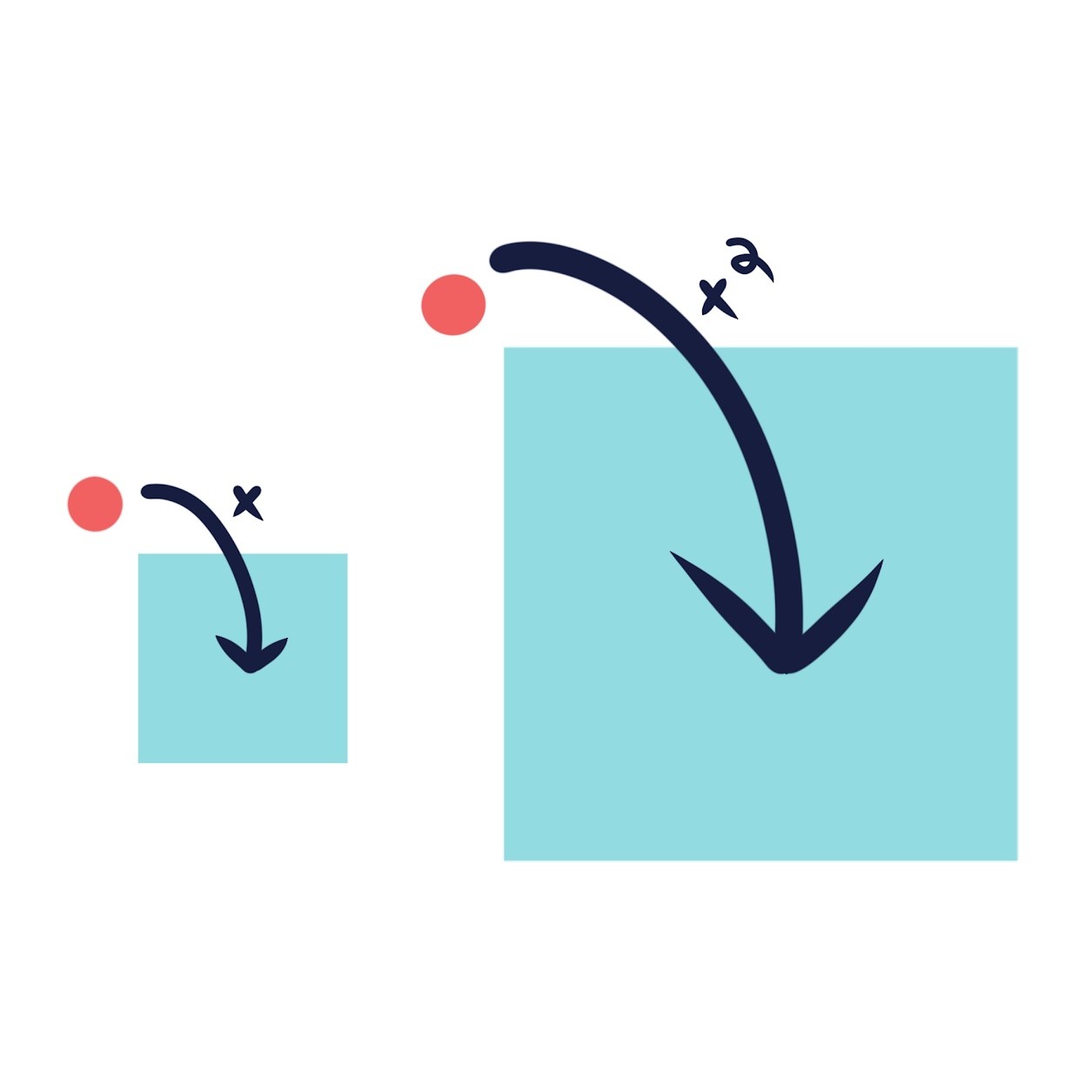
Diffusion time is proportional to the square of the distance.
The rate of diffusion _________ as diffusion distance increases
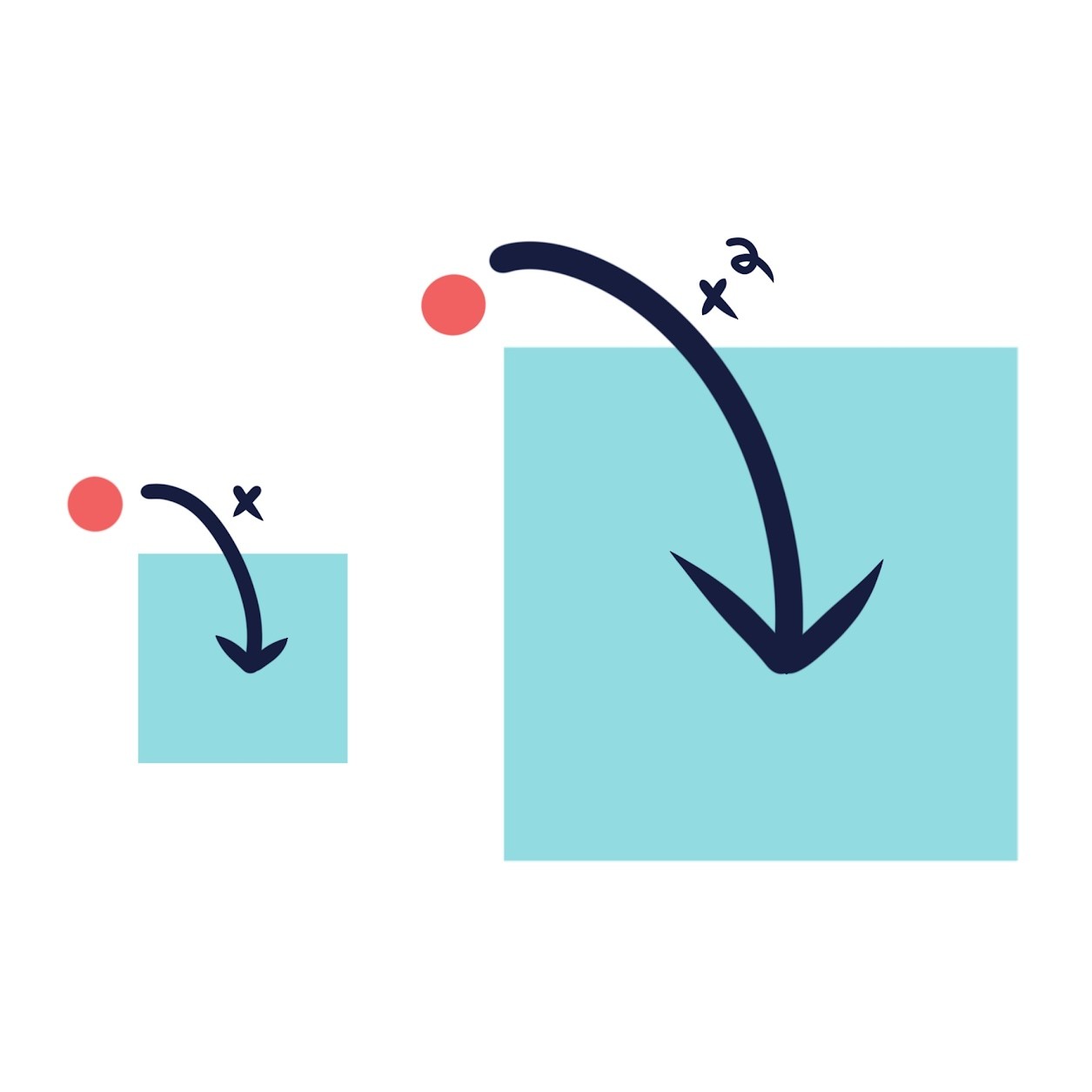
Decreases
Rate of exchange is proportional to
cell/tissue exchange surface area
Amount of exchange material is proportional to
cell/body volume
Multicellular organisms require that each cell has access to a(n) _____ _____ for exchange to occur.
aqueous enviornment
As a cell gets larger, its _____ increases much faster than its ____.
volume; surface area
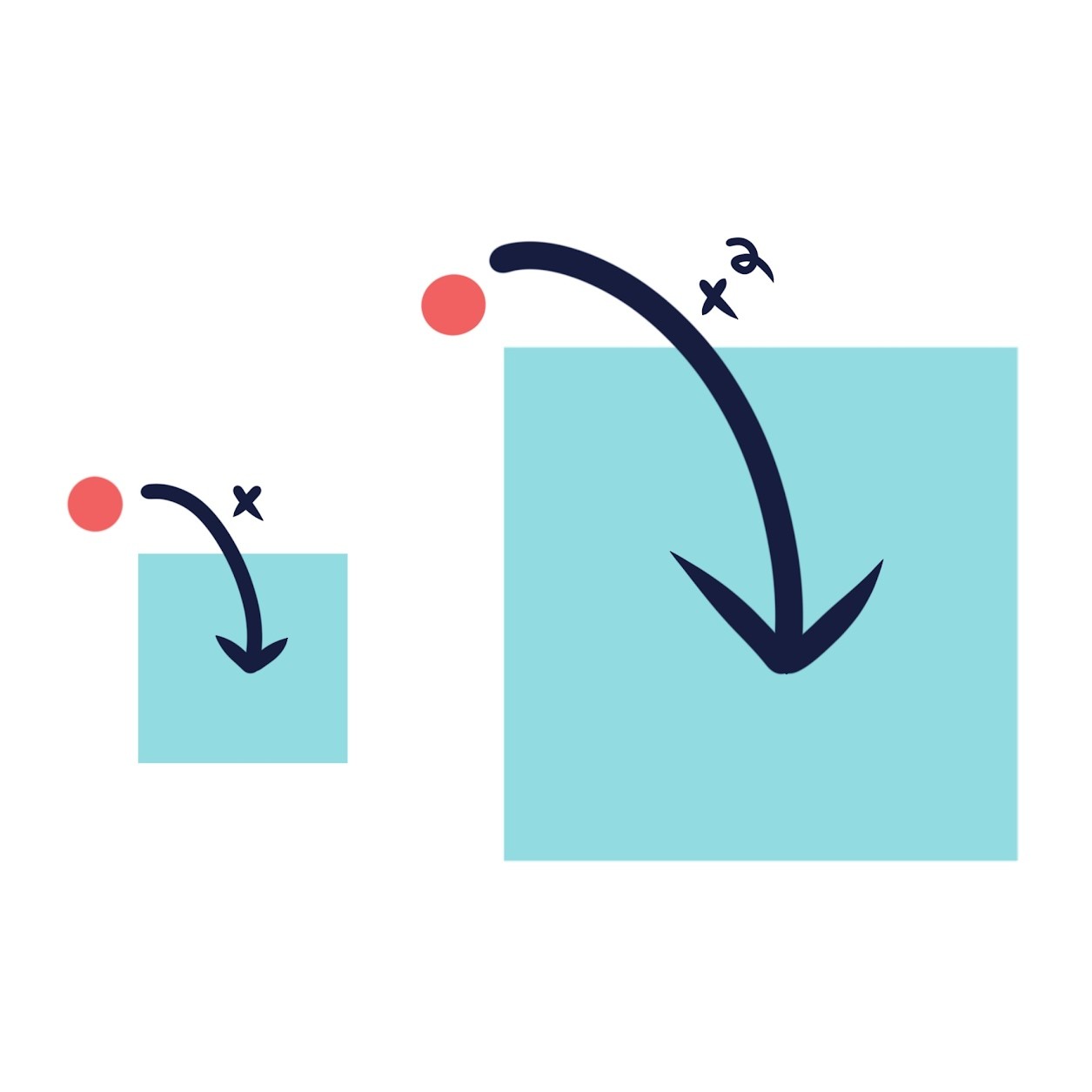
Why is a cell's volume increasing faster than its surface area a problem?
-Increased demand for exchange
-Decreased surface area relative to volume
Surface area increases as the ____ of the linear dimension
square
Volume/mass increases as the ____
cube
How do very small/thin organisms meet the needs of exchanging with the environment?
They rely on diffusion/direct exchange
How do larger organisms meet the needs of exchanging with the environment?
They require specialized surfaces that are extensively branched or folded
Would a mouse release more or less heat per unit mass compared to an elephant?
More
Intracellular
Inside the cells
Extracellular
Around the cells
Hierarchical Organization of Body (CTOOO)
Cells → Tissues → Organs → Organ Systems → Organisms
Tissues
Composed of similar cells that perform a function
What must tissue be covered in so that exchange can occur?
Fluid
4 types of tissues
Epithelial, Connective, Muscle, Nervous
Epithelial Tissue
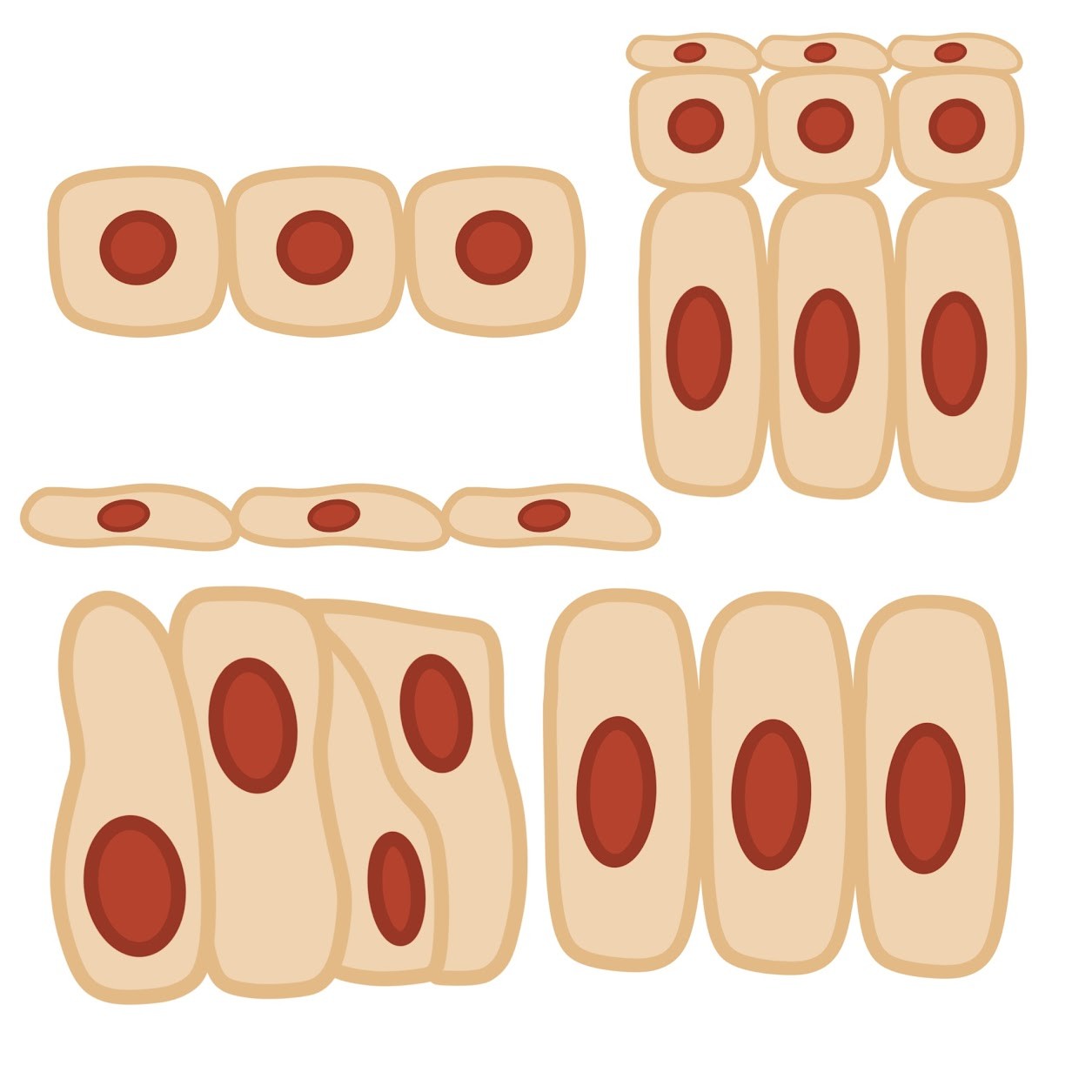
Covers the outside of the body and lines the organs & cavities within the body; closely joined
Epithelial Tissue Functions
Protection, exchange/interface with environment
Squamous Epithelial Tissue

Allows for exchange by diffusion
Examples of Squamous Epithelial Tissue
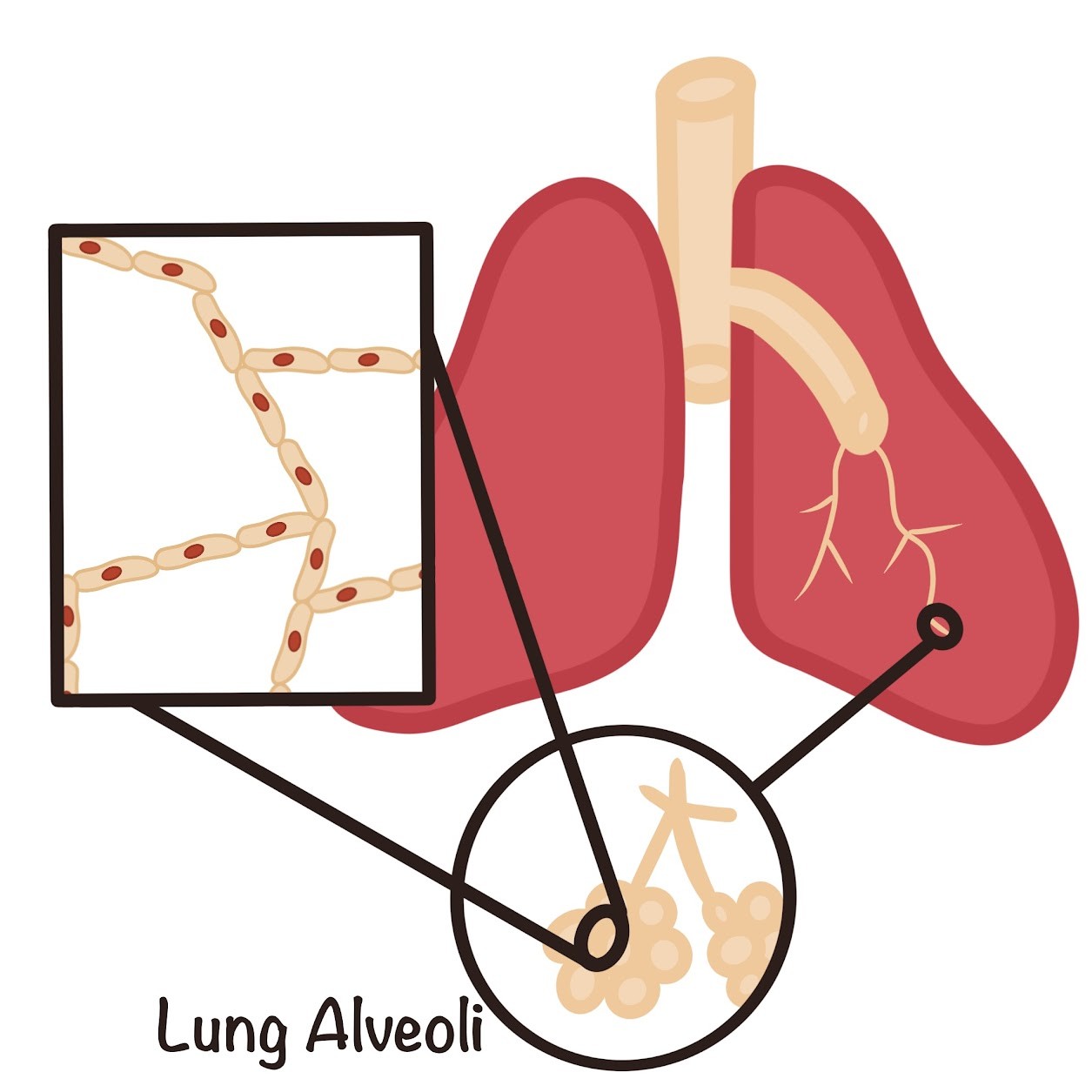
Lungs, blood vessels
Cuboidal Epithelial Tissue

Forms tubules and ducts
Examples of Cuboidal Epithelial Tissue
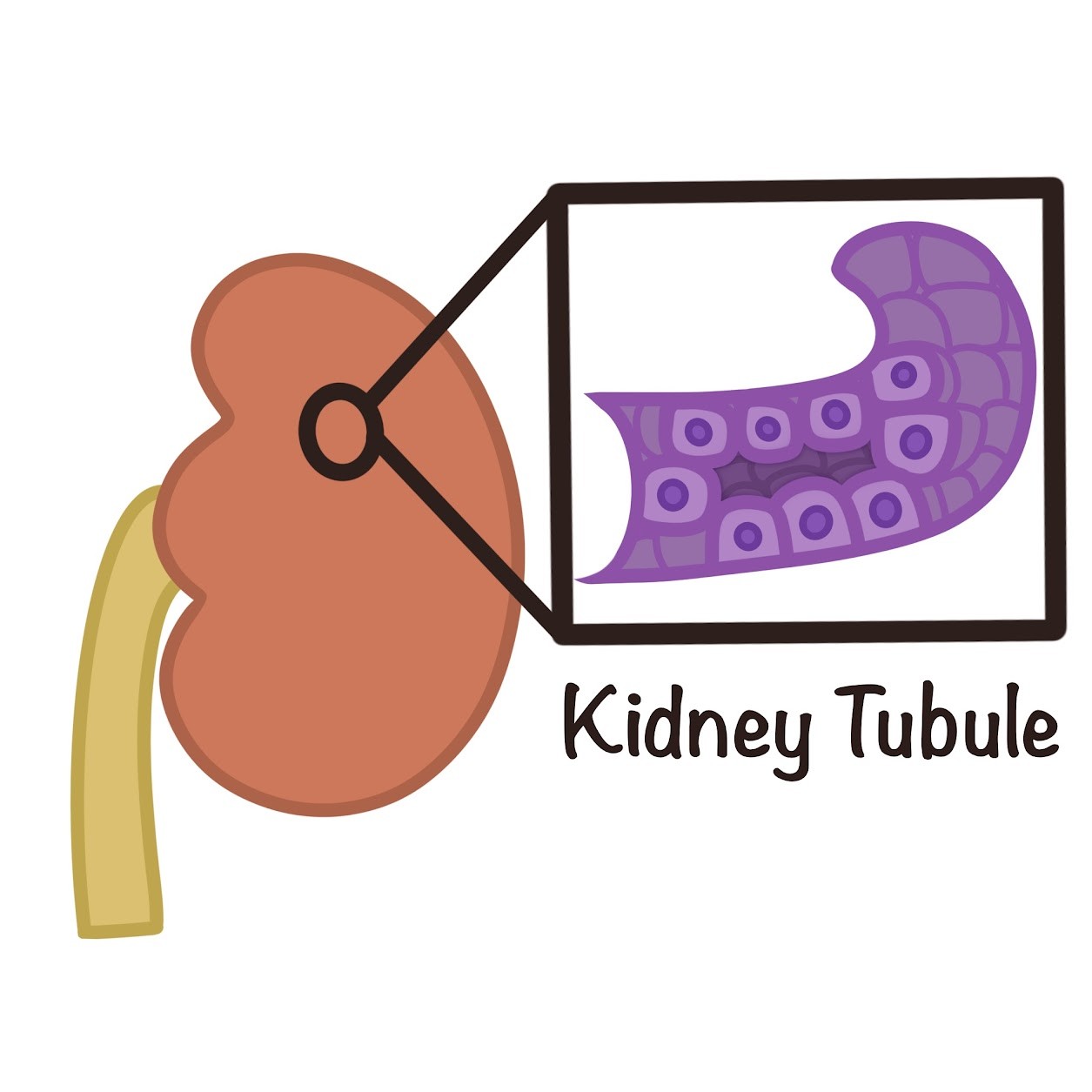
Kidneys, various glands for secretion
Columnar Epithelial Tissue
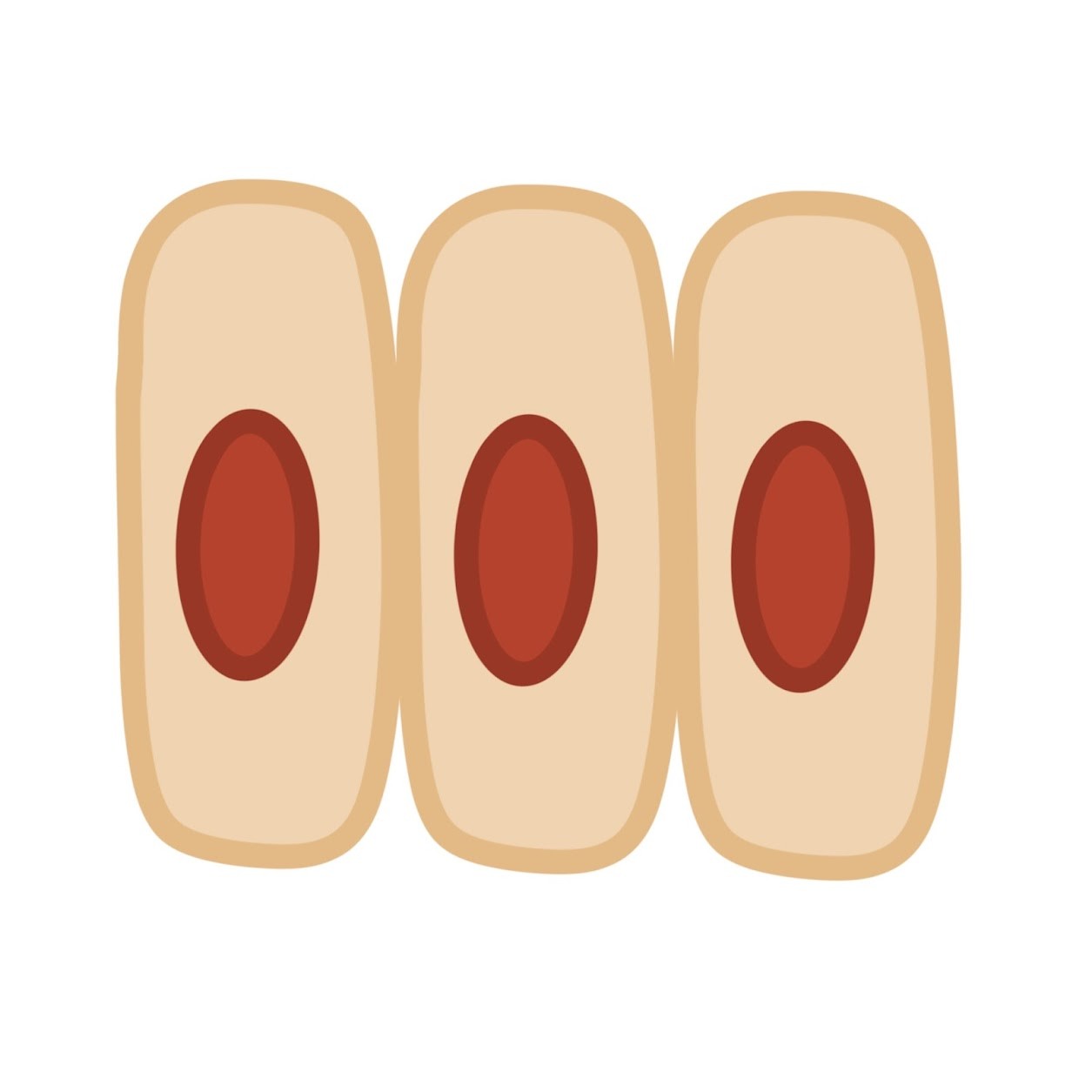
Allows secretion and absorption
Example of Columnar Epithelial Tissue
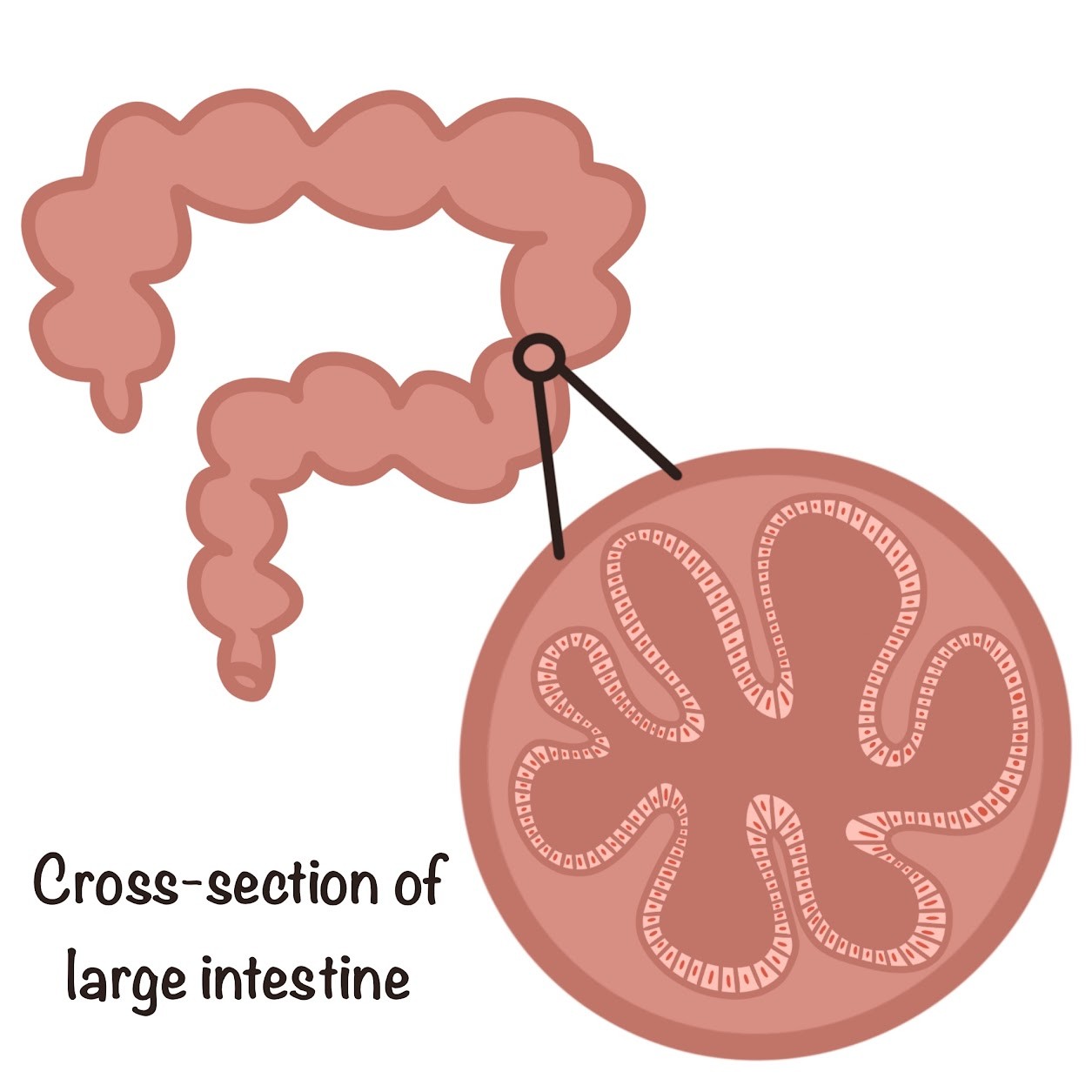
Intestines
Simple Epithelial Tissue
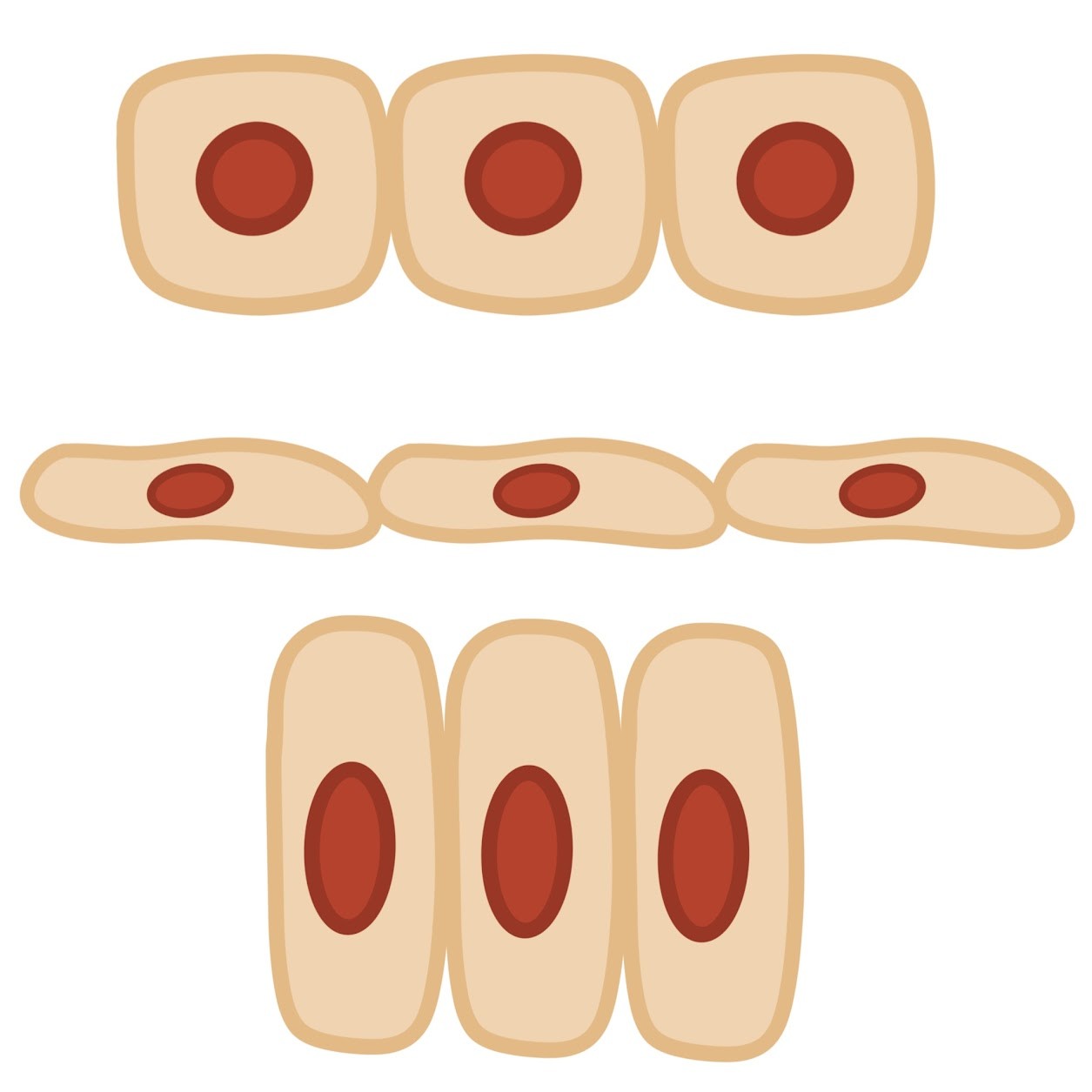
A single cell layer of epithelial cells
Stratified Epithelial Tissue
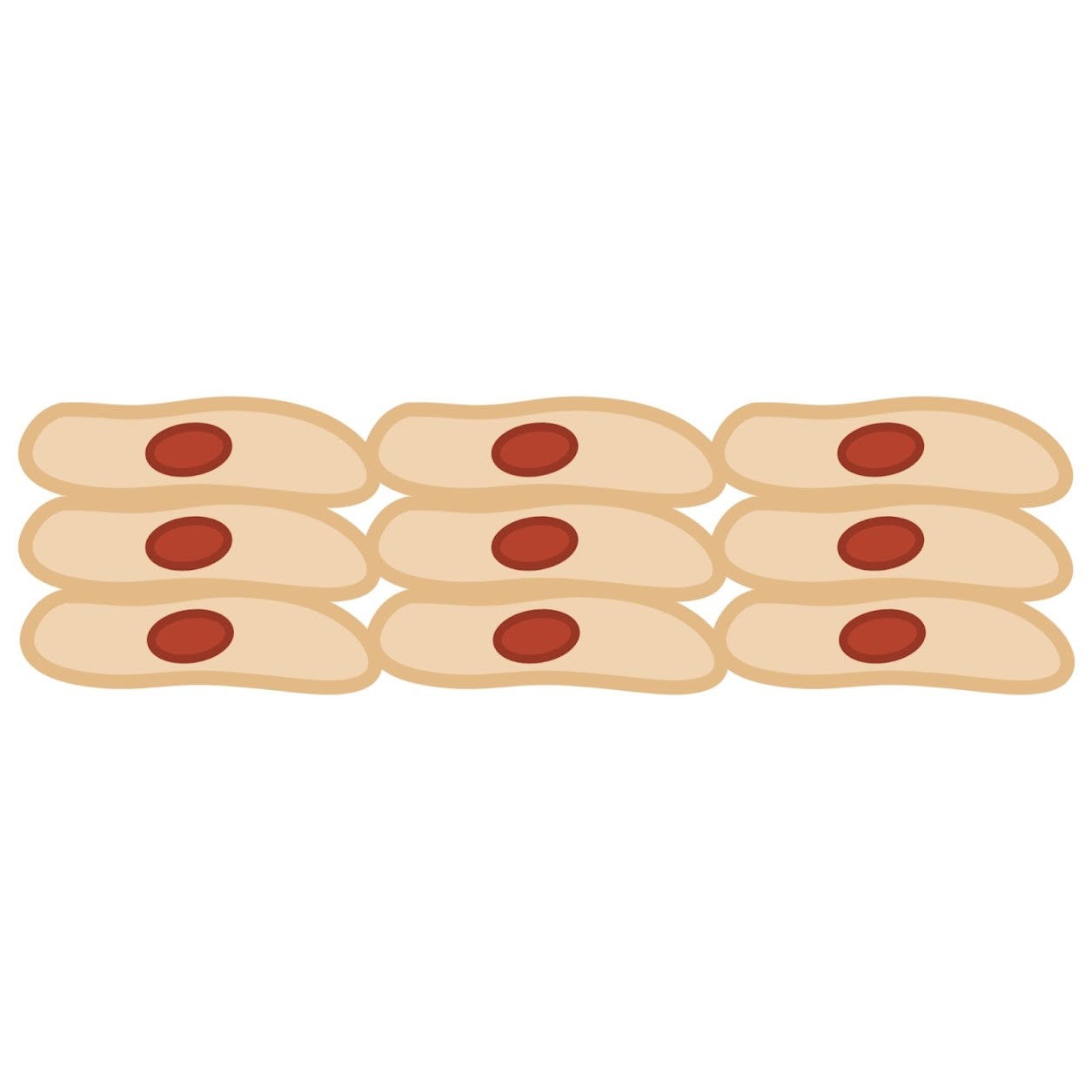
Multiple tiers of epithelial cells
Pseudostratified Epithelial Tissue
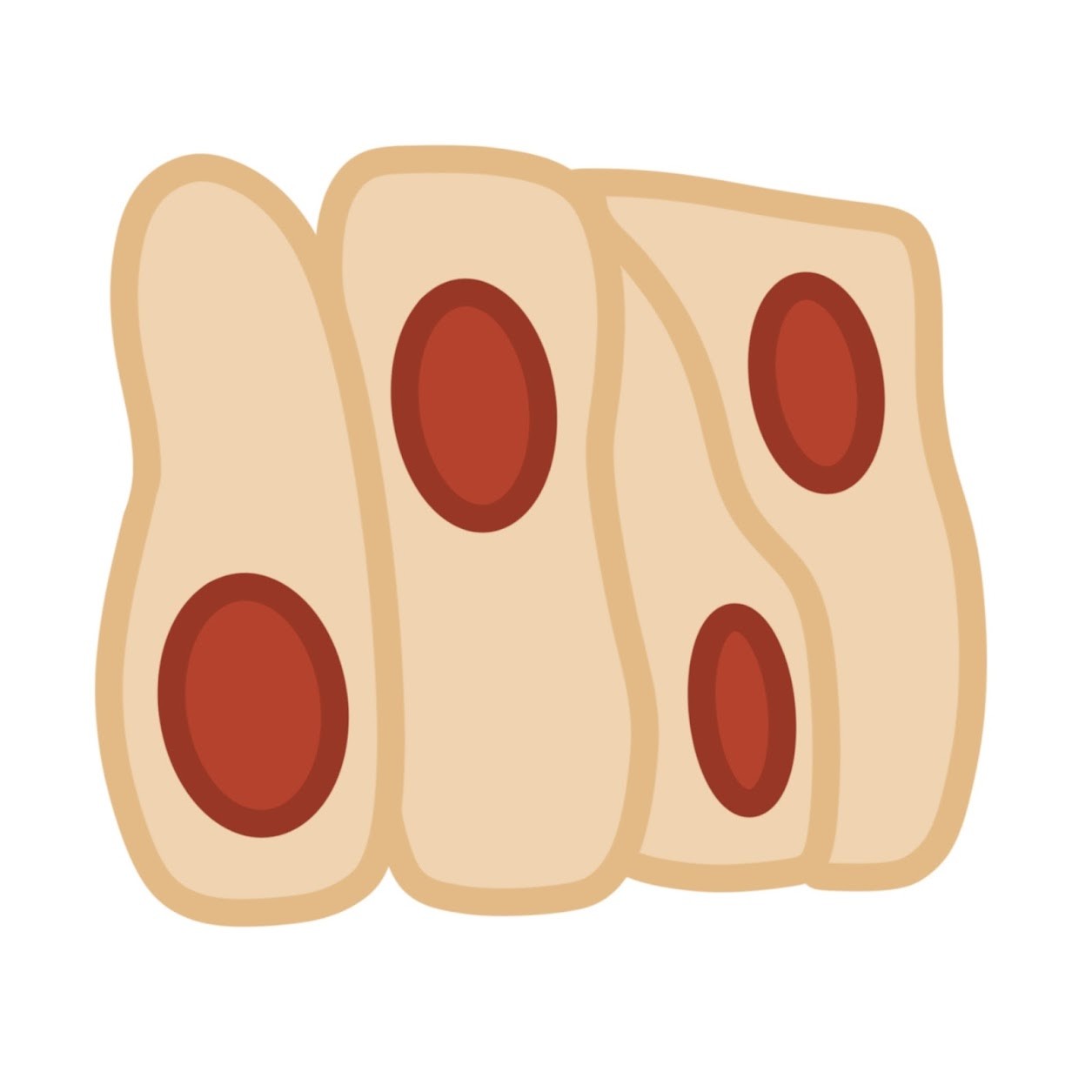
A single layer of cells of varying length
Transitional Epithelial Tissue
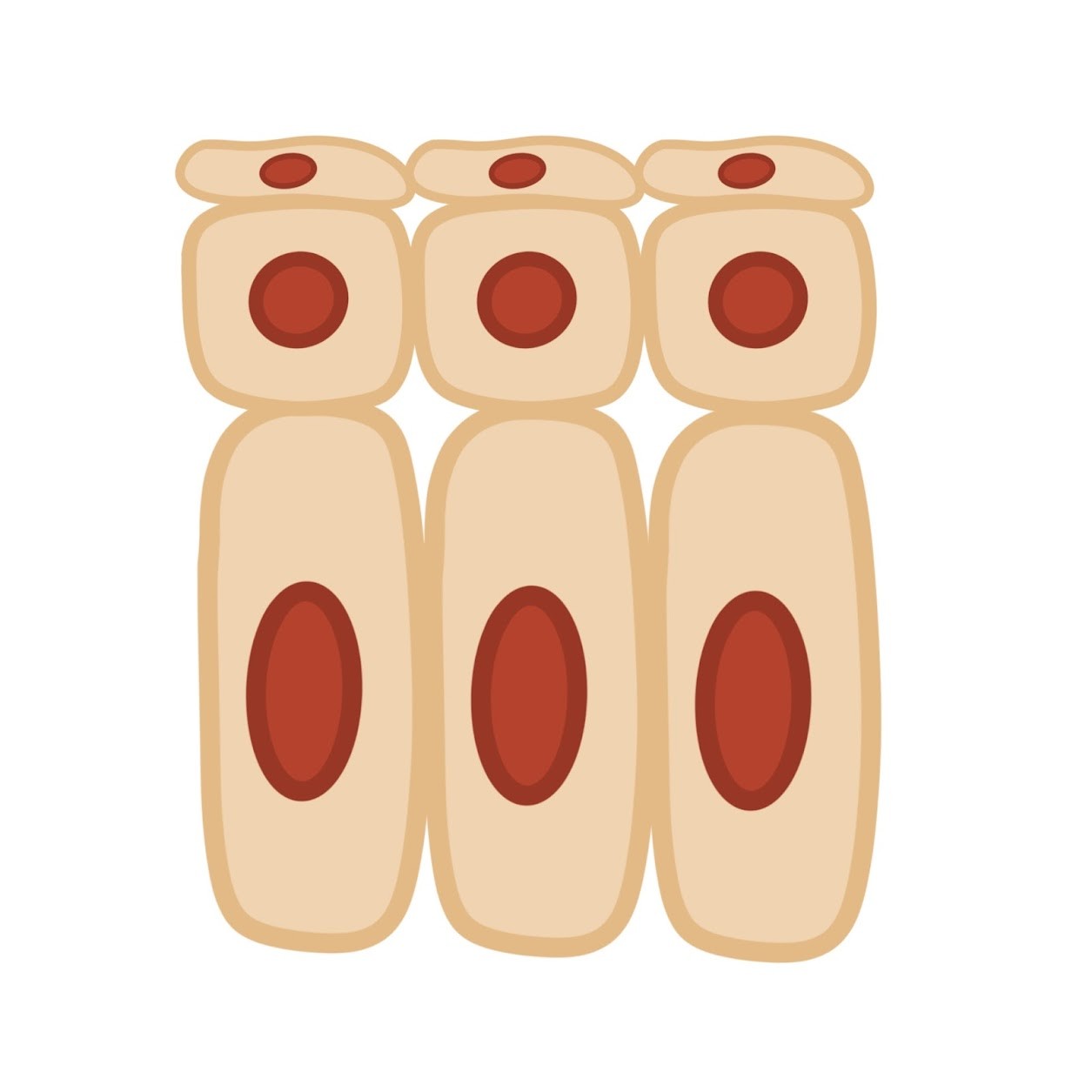
Stratified epithelial tissue but can change shape based on function or state
Example of transitional epithelial tissue
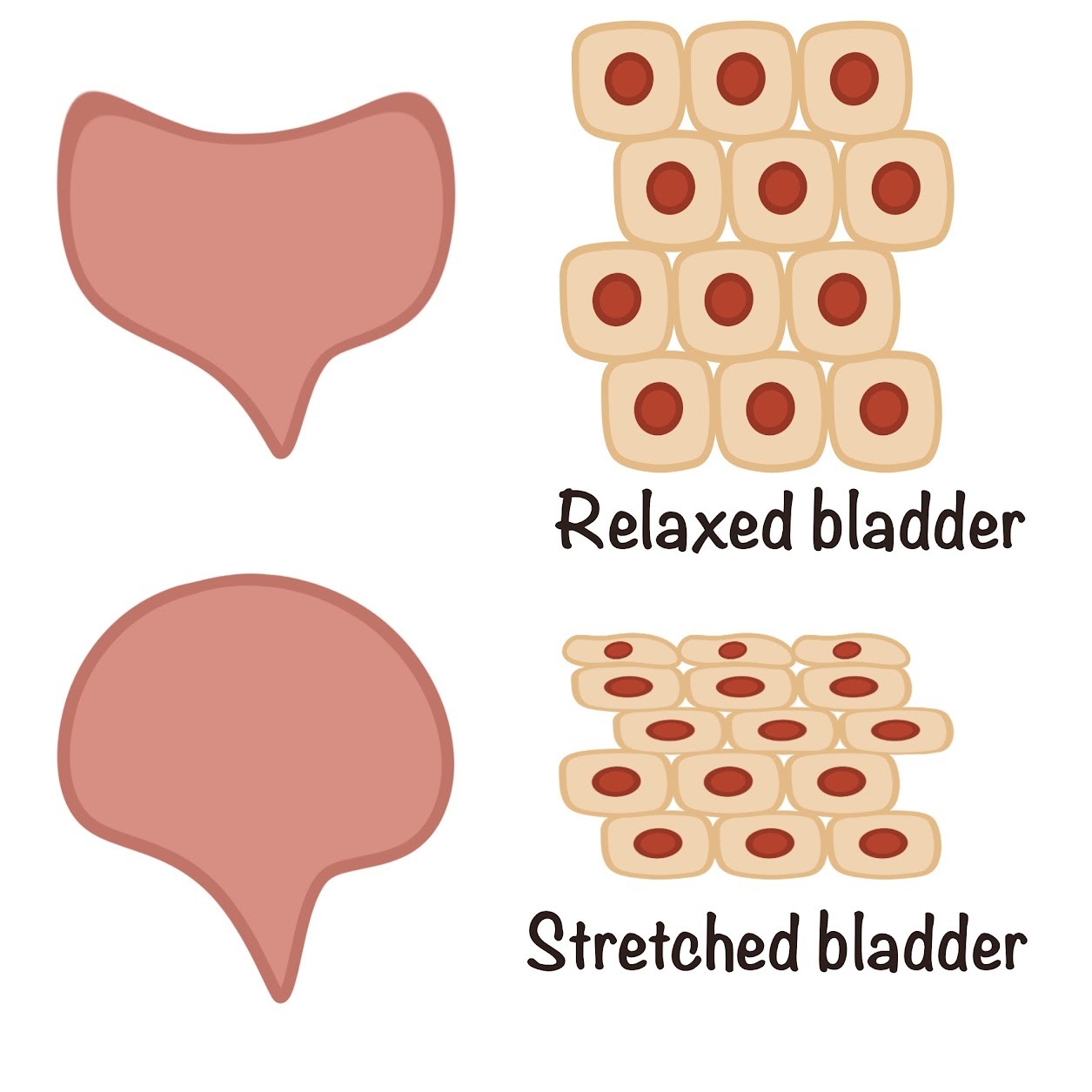
Urinary Bladder
Connective Tissue
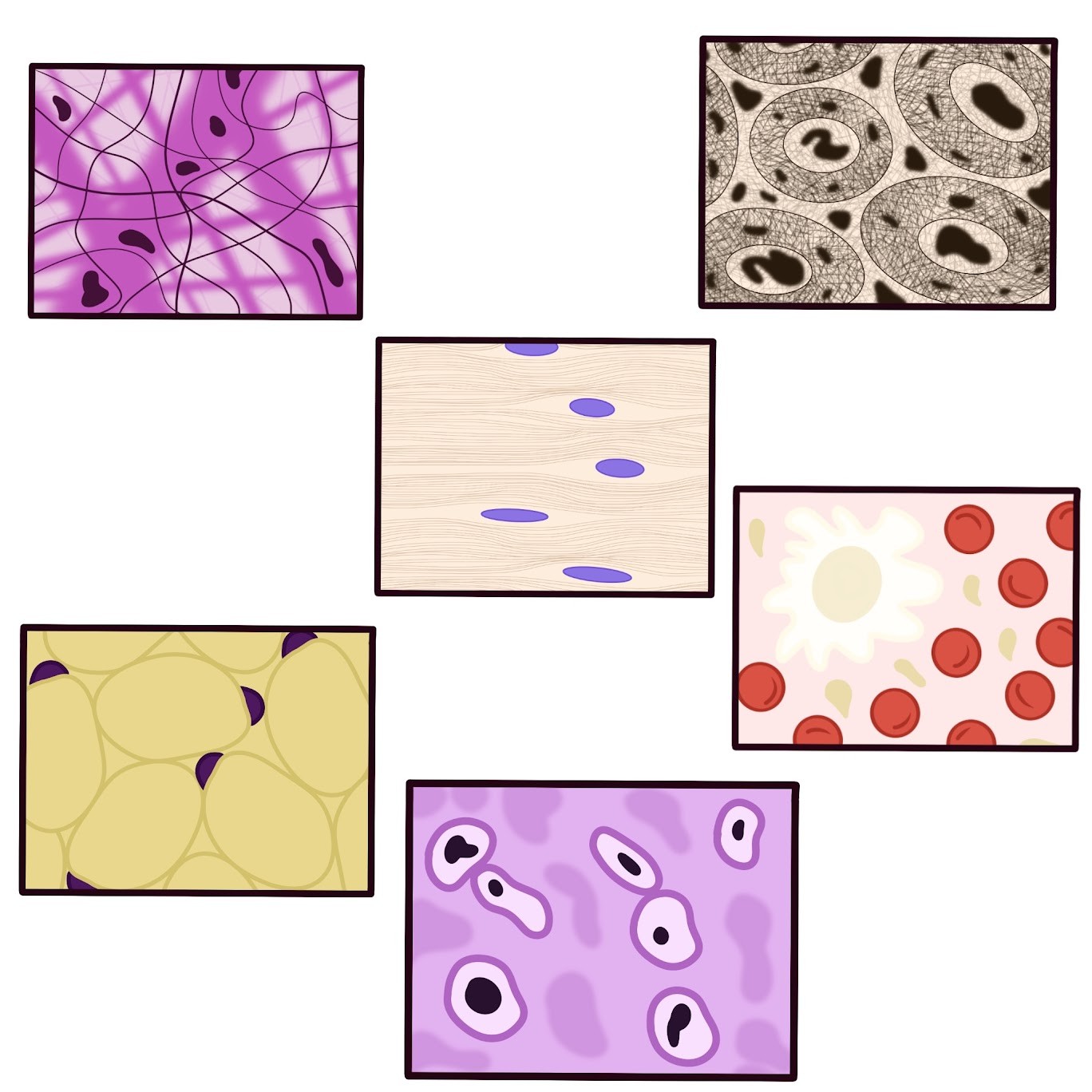
Contains sparsely packed cells scattered throughout an extracellular matrix
Connective Tissue Functions
Binds and supports other tissues
Extracellular Matrix (ECM)
Consists of fibers in a liquid, jellylike, or solid foundation
3 Types of Connective Tissue Fiber (all made of protein)
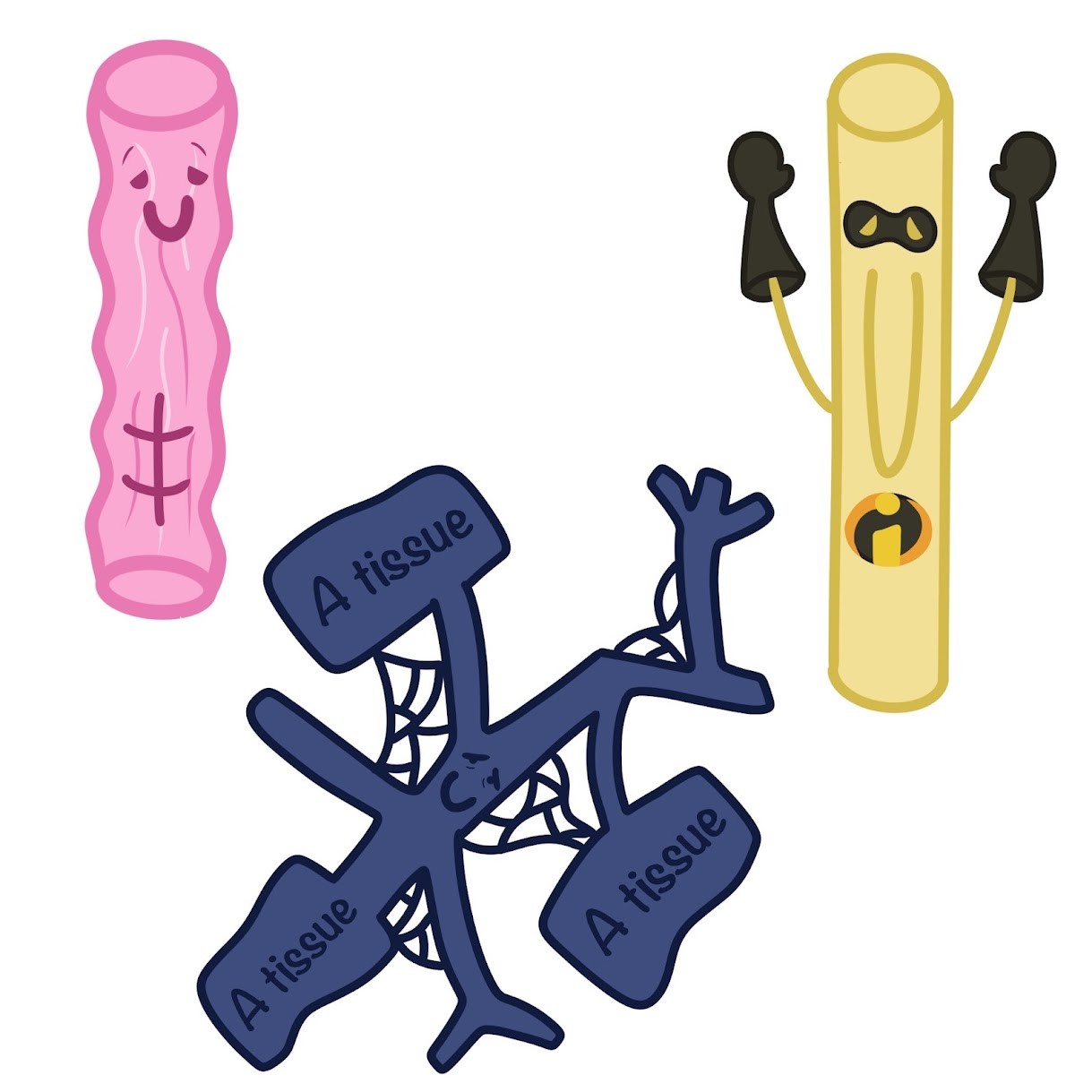
Collagenous, Reticular, Elastic
Collagenous Fibers
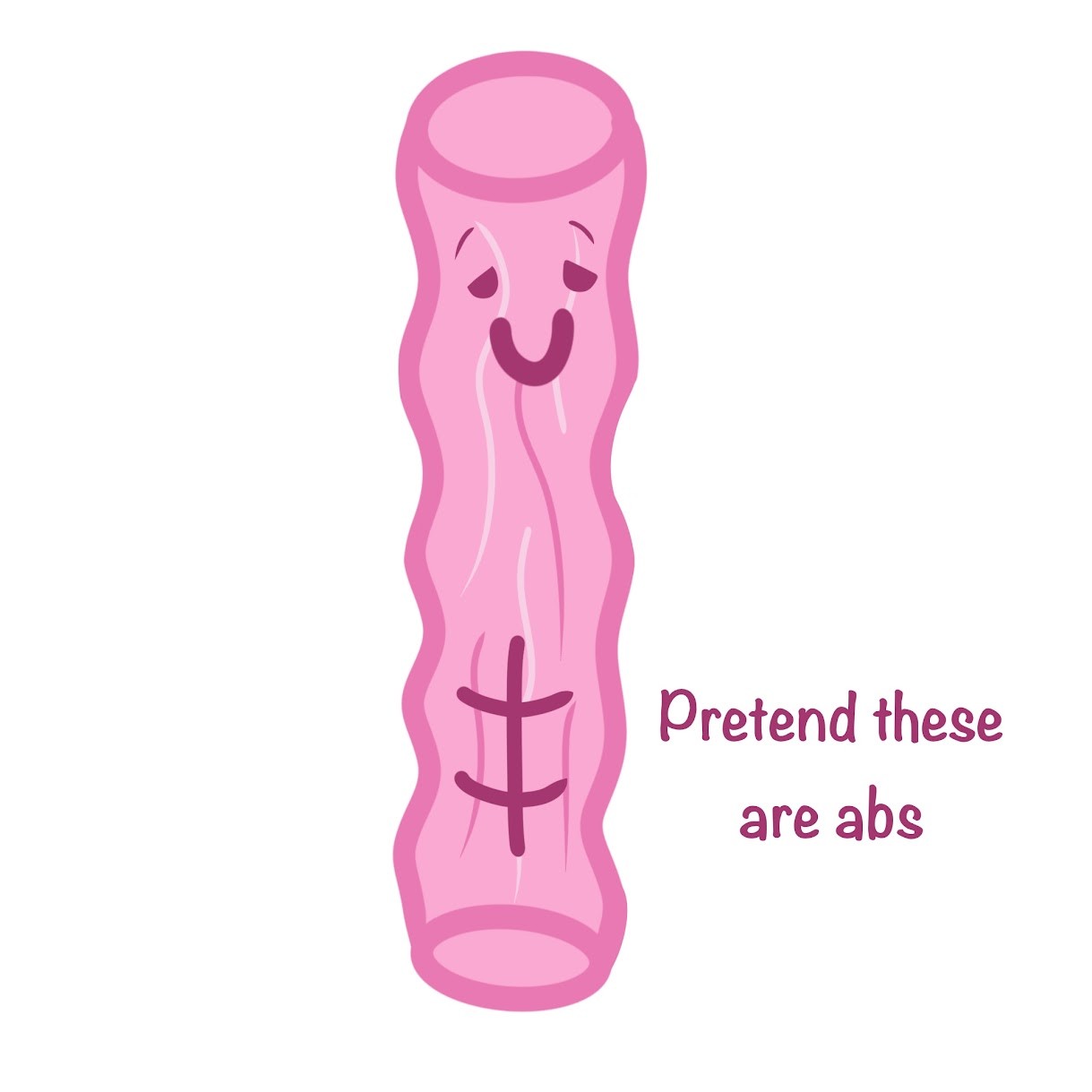
Provides strength and stability to a tissue
Reticular Fibers
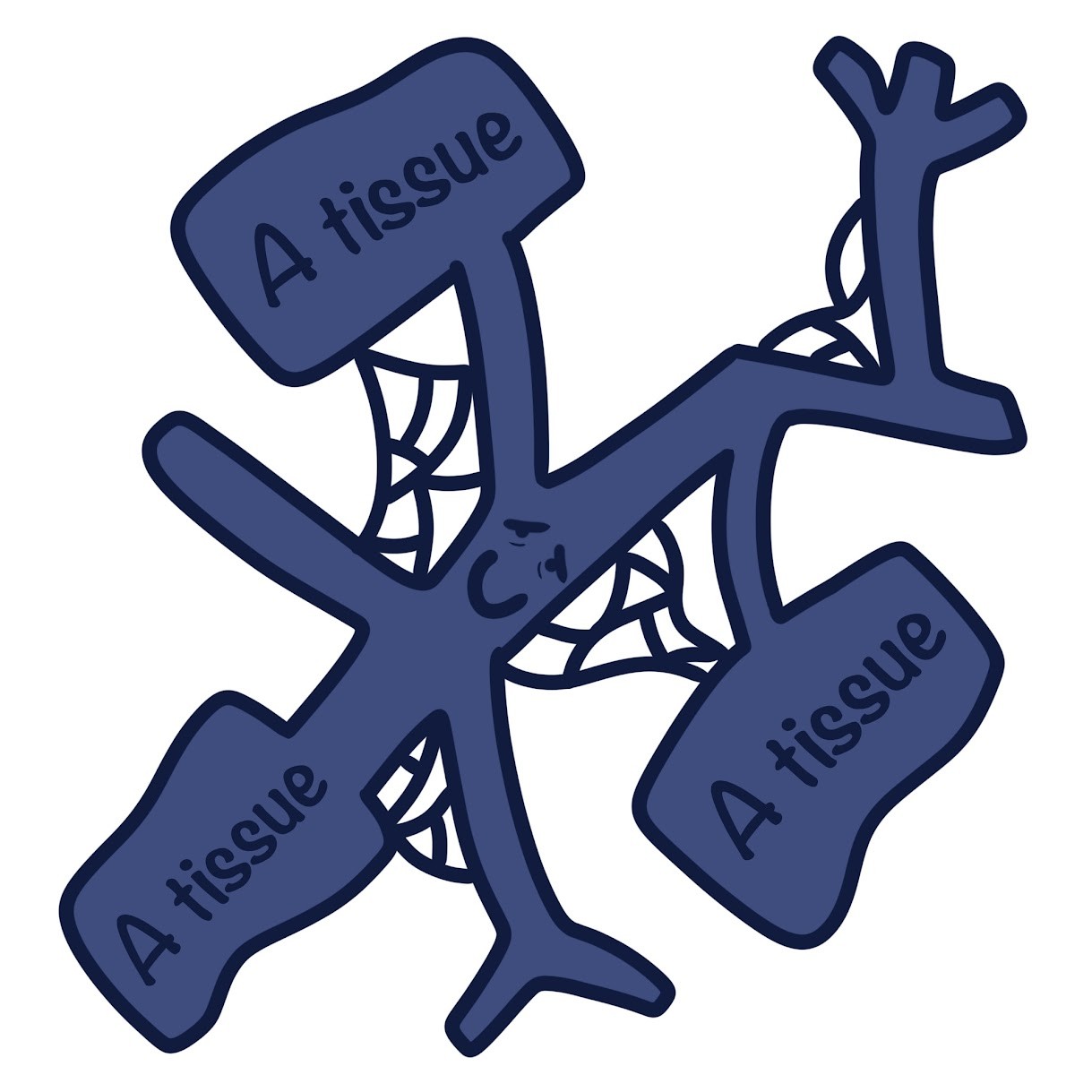
Join connective tissue to adjacent tissues
Elastic Fibers
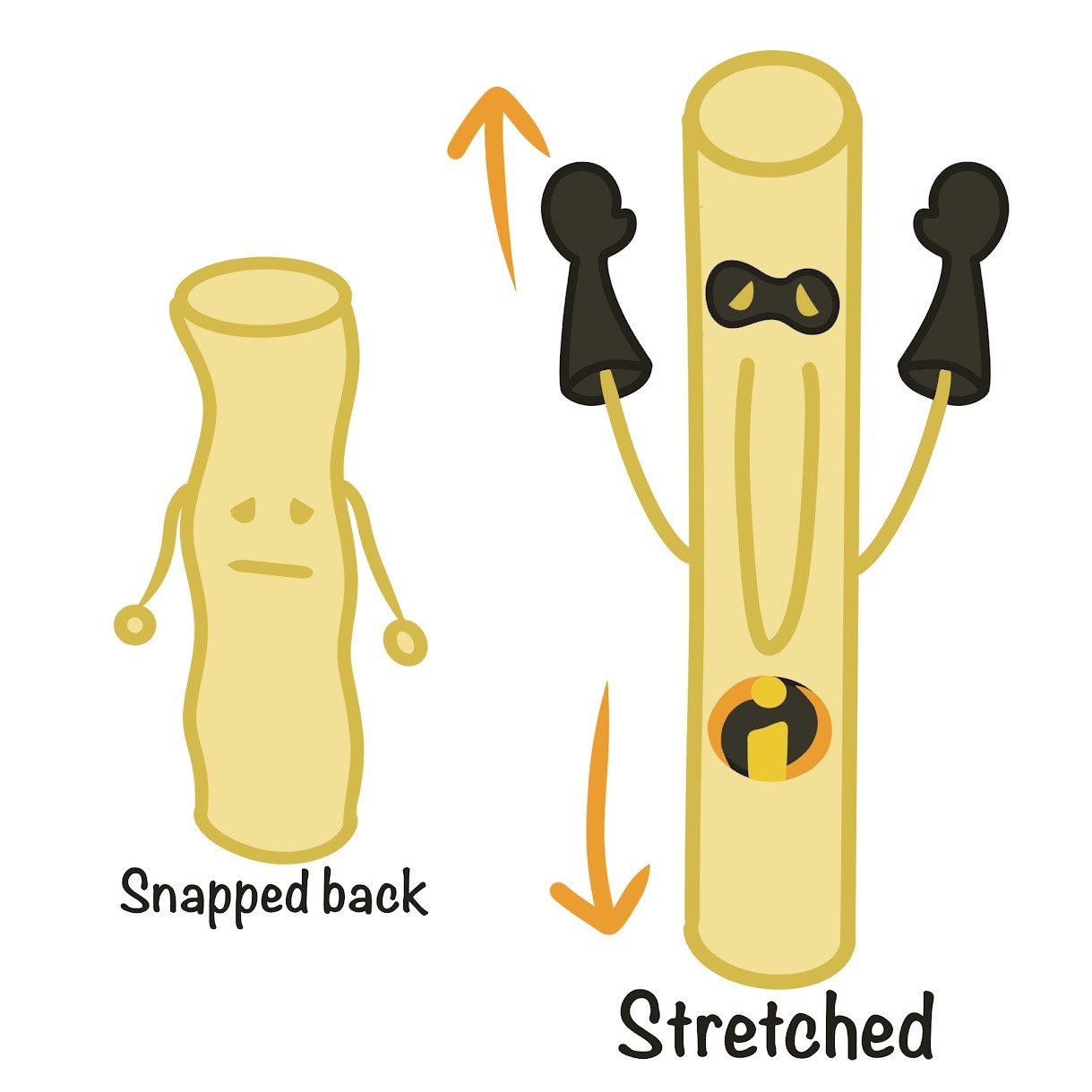
Stretch and snap back to their original position; provides flexibility
Fibroblasts
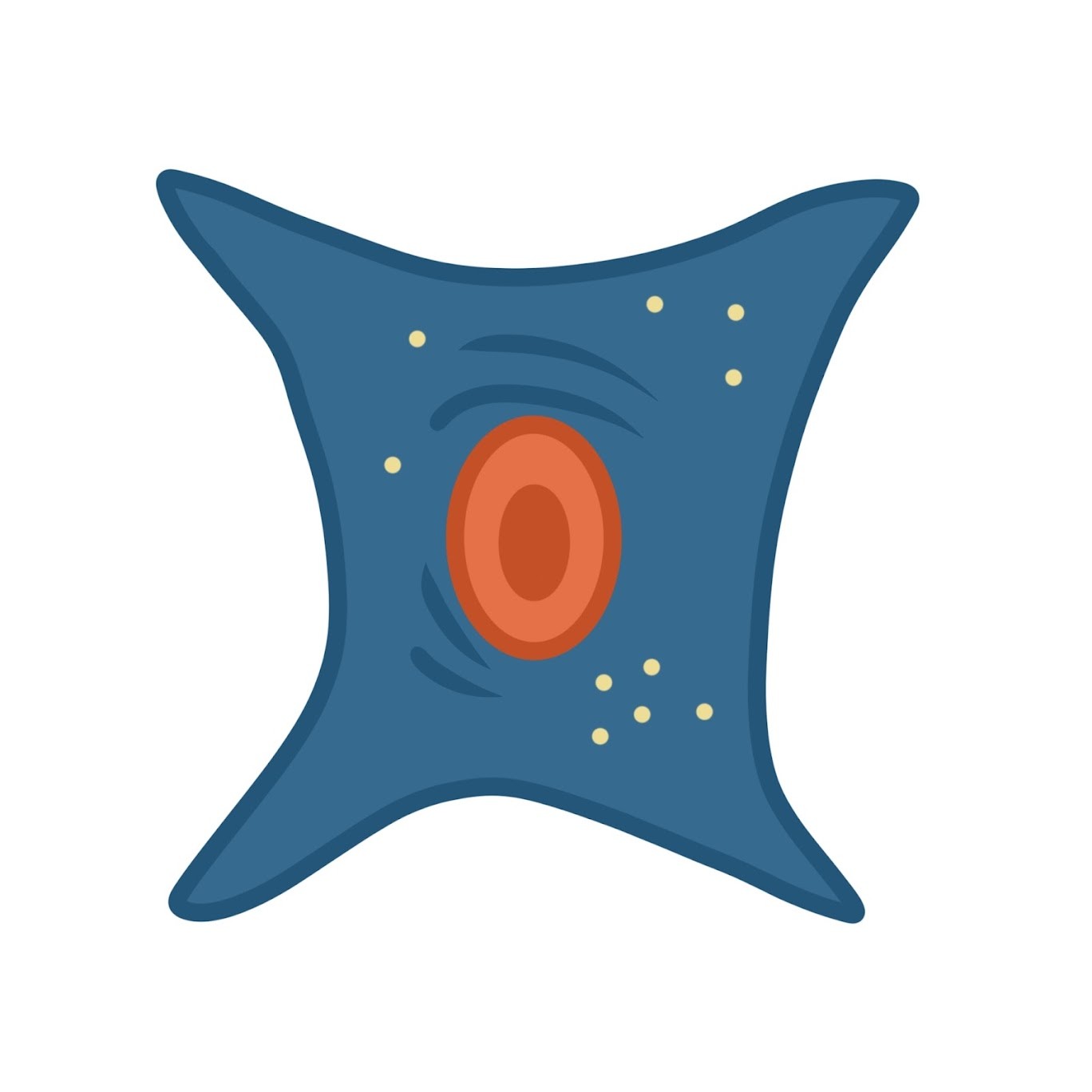
Principal cells of connective tissue that secretes the protein of extracellular fibers
Macrophages
Involved in the immune system
6 major types of connective tissue in vertebrates
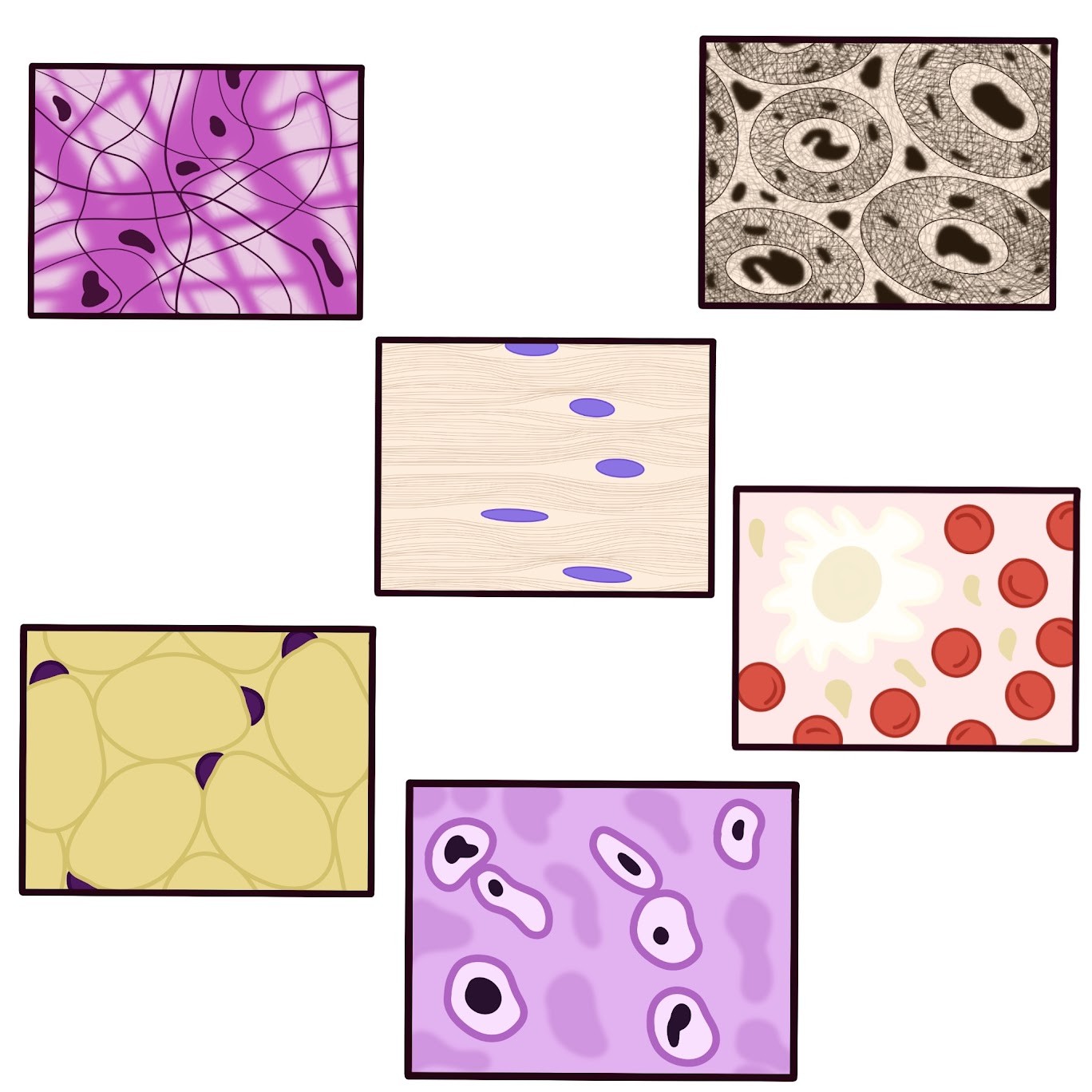
Loose, fibrous, bone, adipose, cartilage, blood
Loose connective tissue
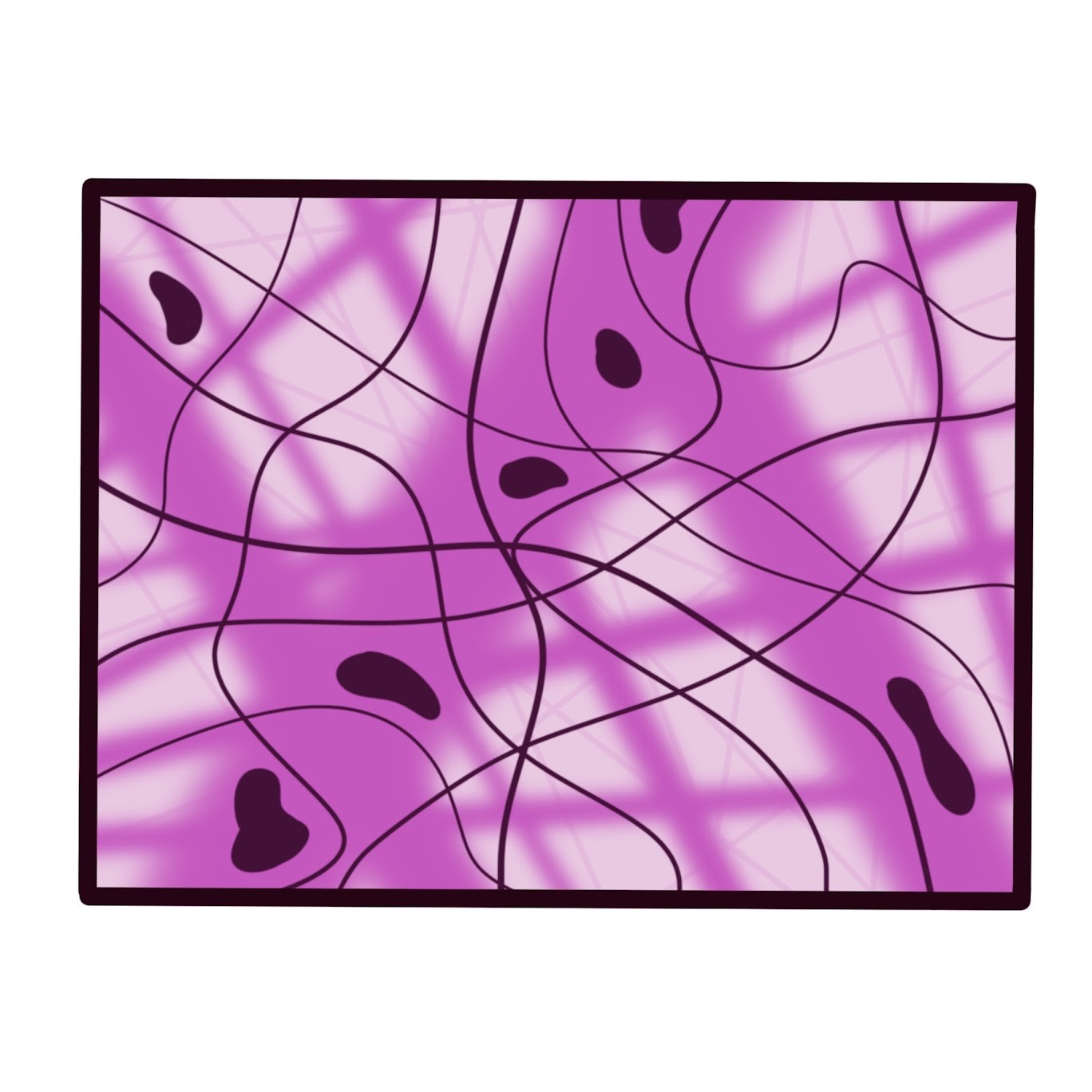
Found around & between most body organs (including blood vessels); most widely abundant connective tissue
Loose connective tissue functions
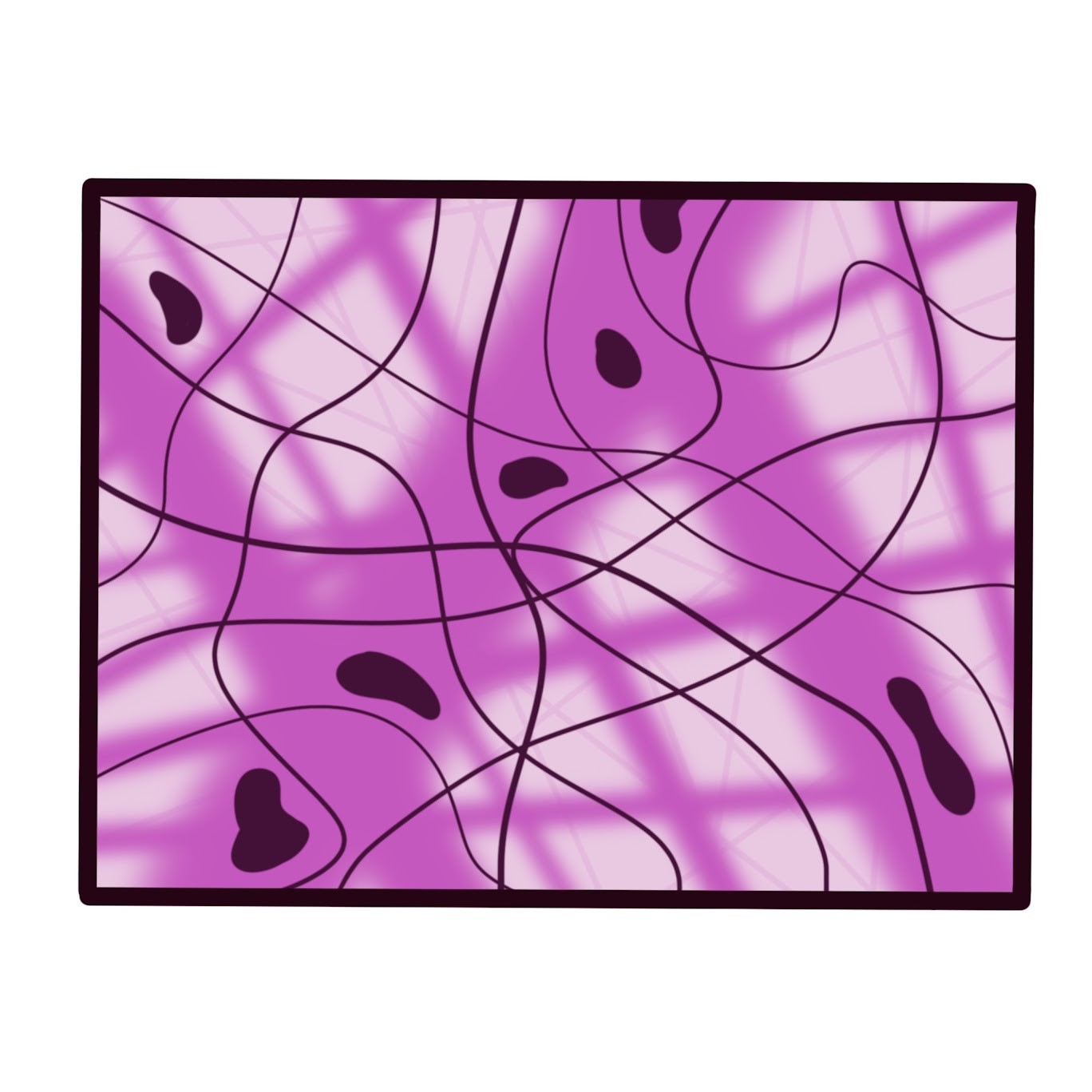
Binds epithelia to underlying tissue and holds organs in place
Fibrous connective tissue
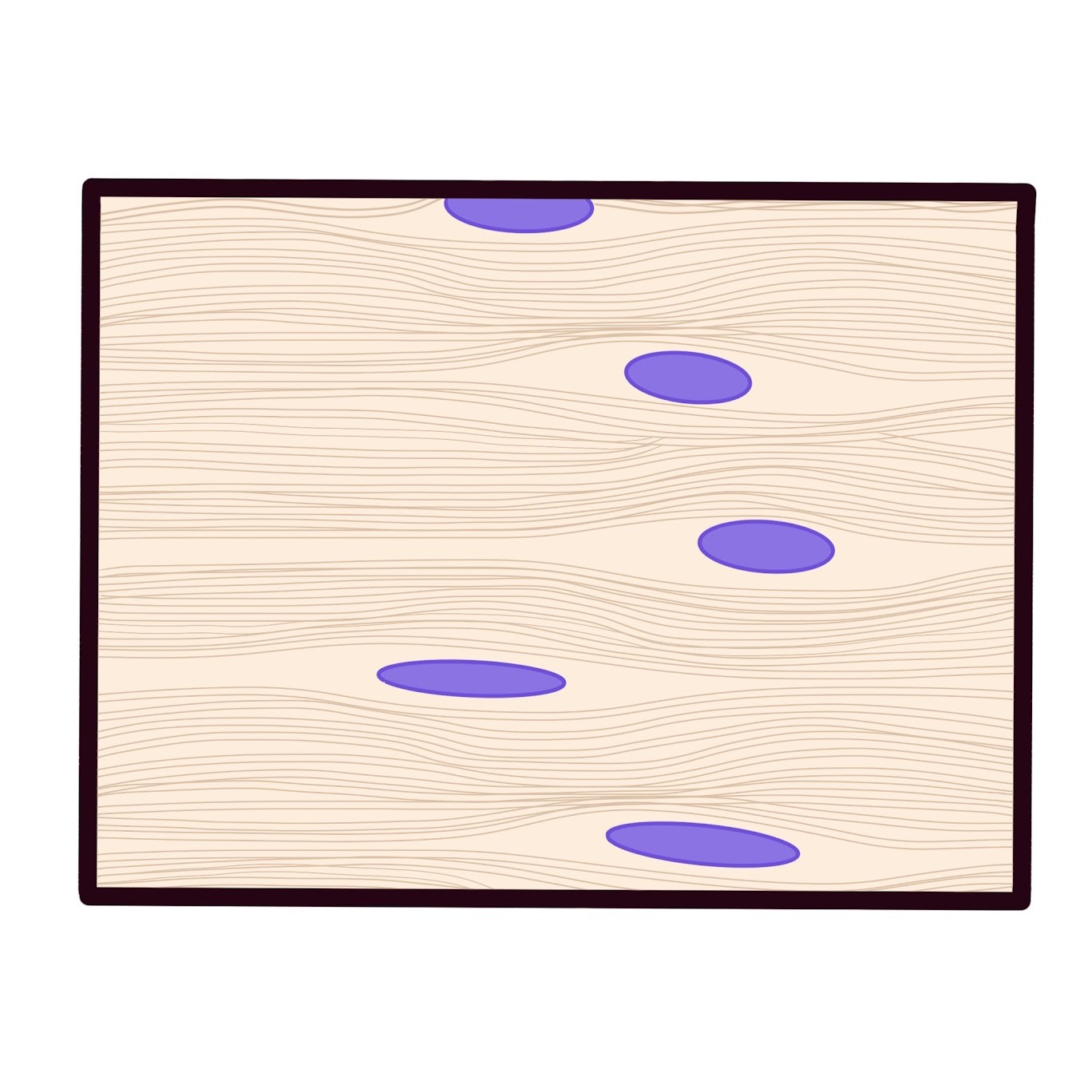
Found in tendons, ligaments, and dermis of the skin
Tendons
Connects muscle to bone
Ligaments
Connects bones at joints (bone to bone)
Bone connective tissue
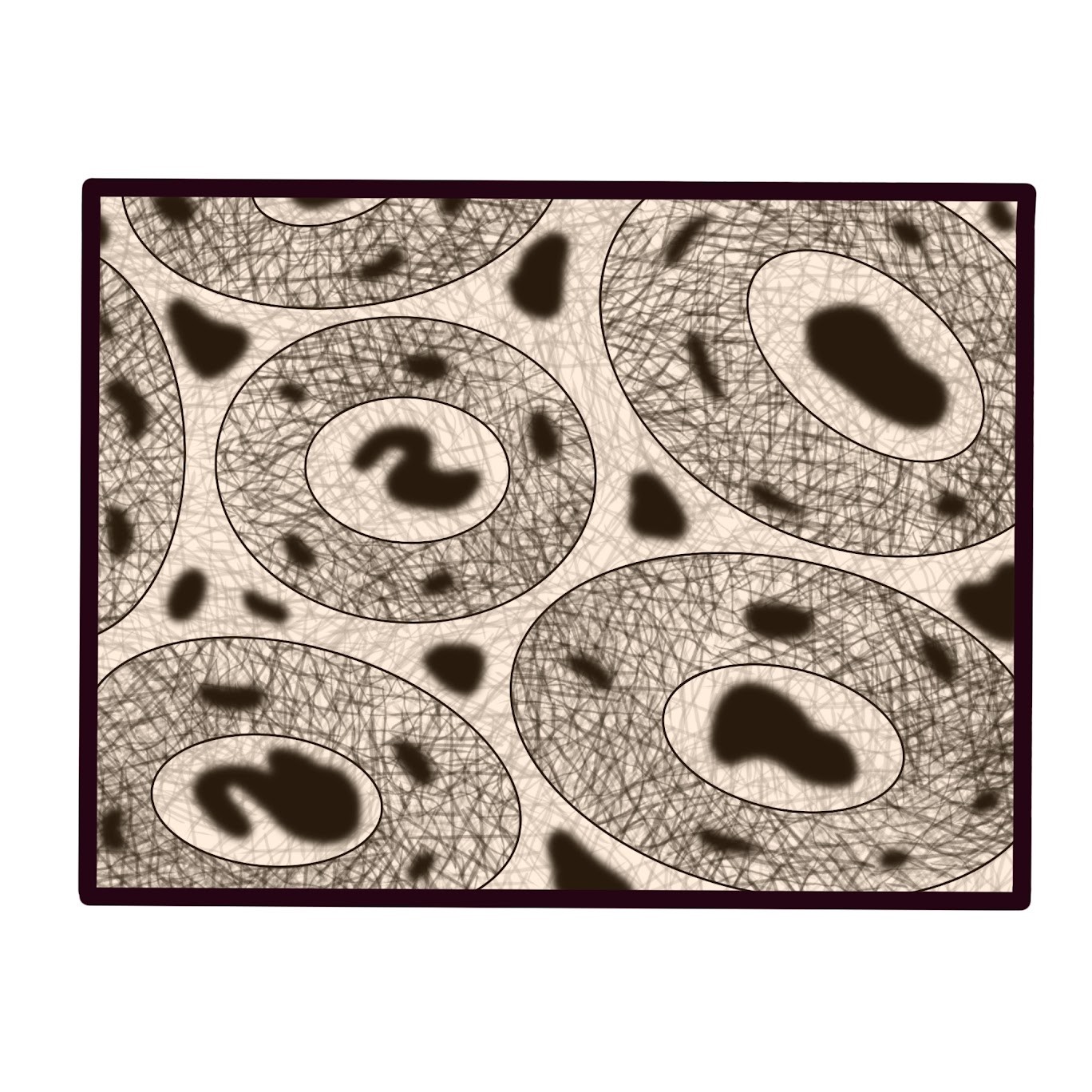
Mineralized (with calcium salts), forms the skeleton
Bone connective tissue functions
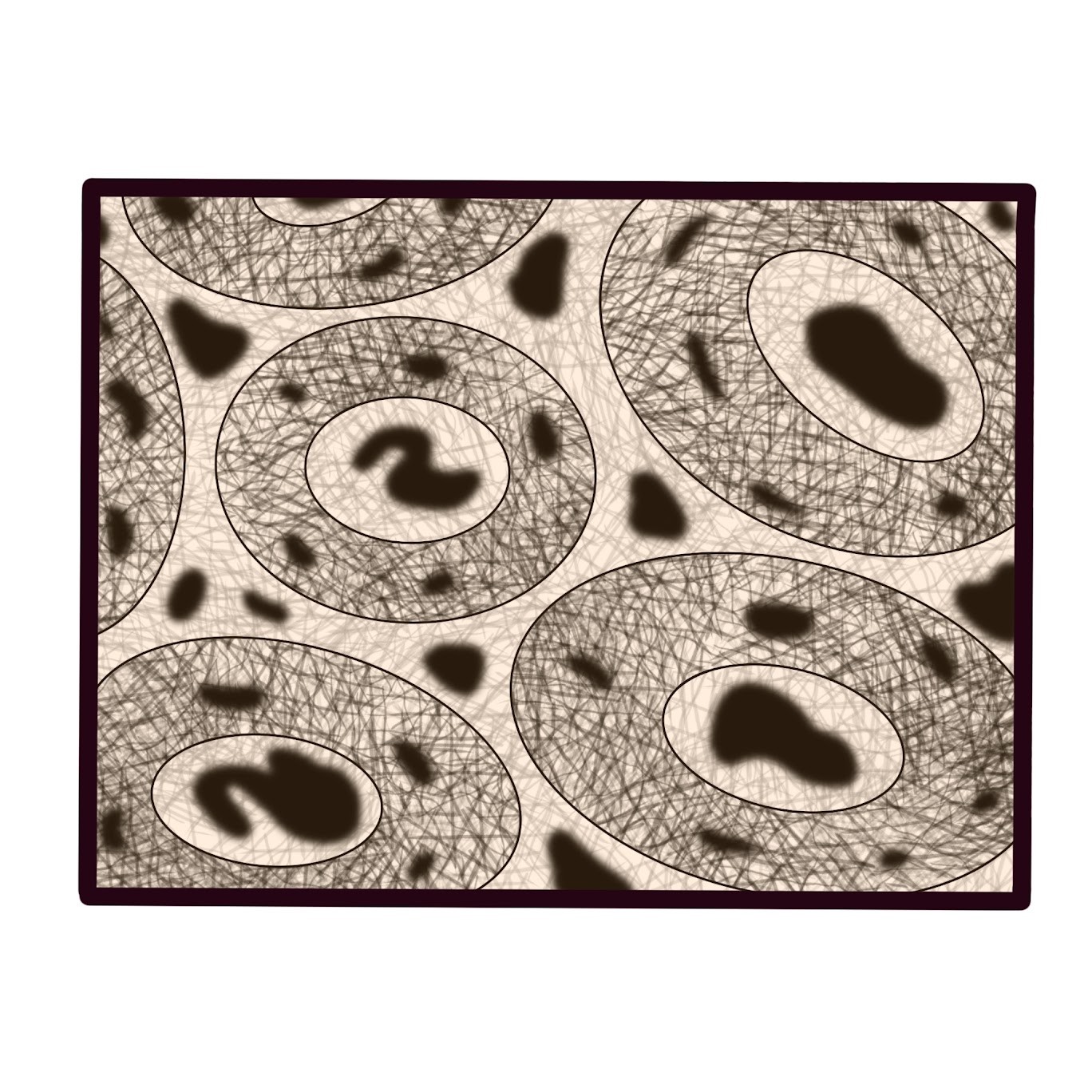
Provides structure and support and points of attachment for tendons
What are Adipose connective tissues comprised of?

Adipoctyes
Adipose connective tissue functions
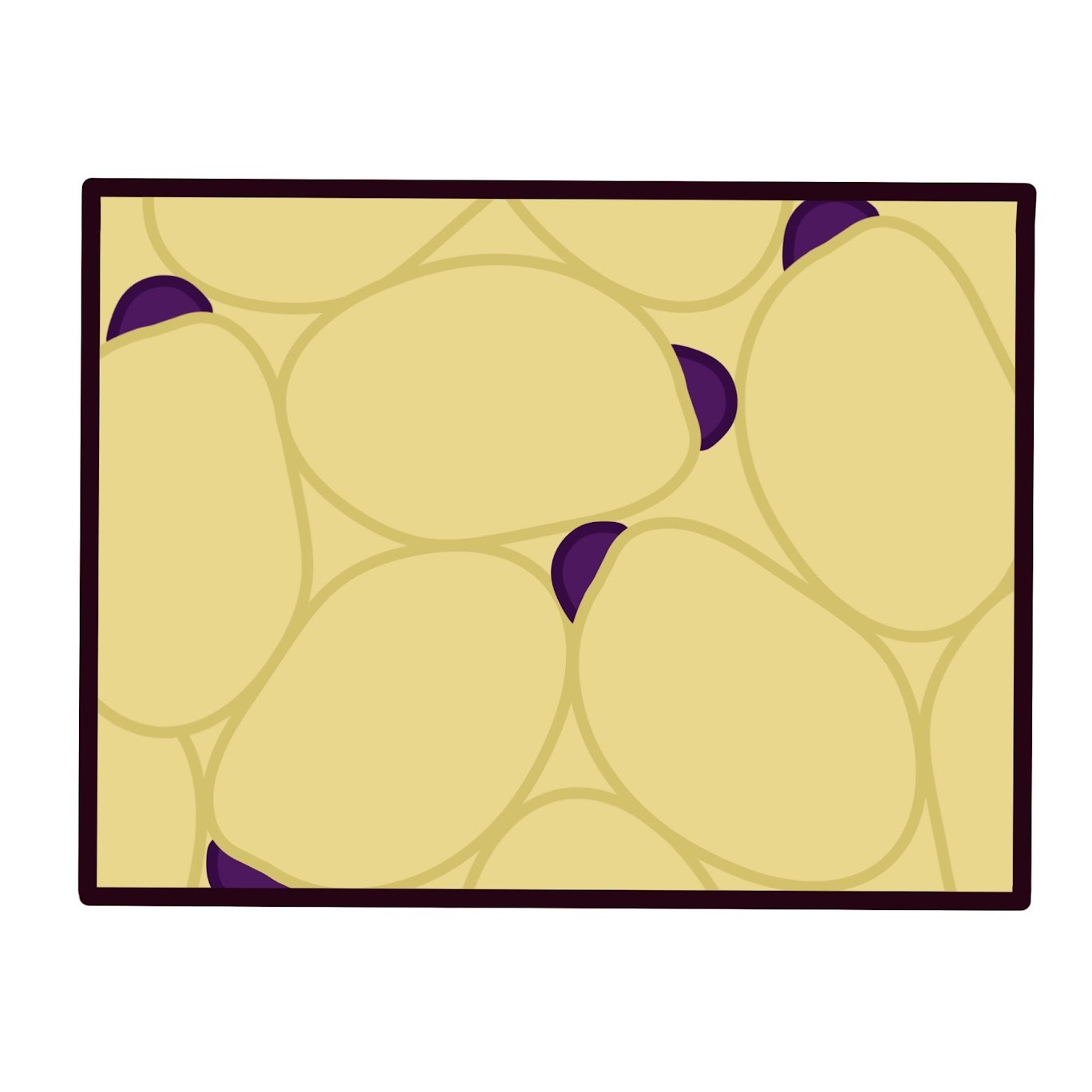
Stores fat for insulation and fuel
Cartilage Connective Tissue Functions
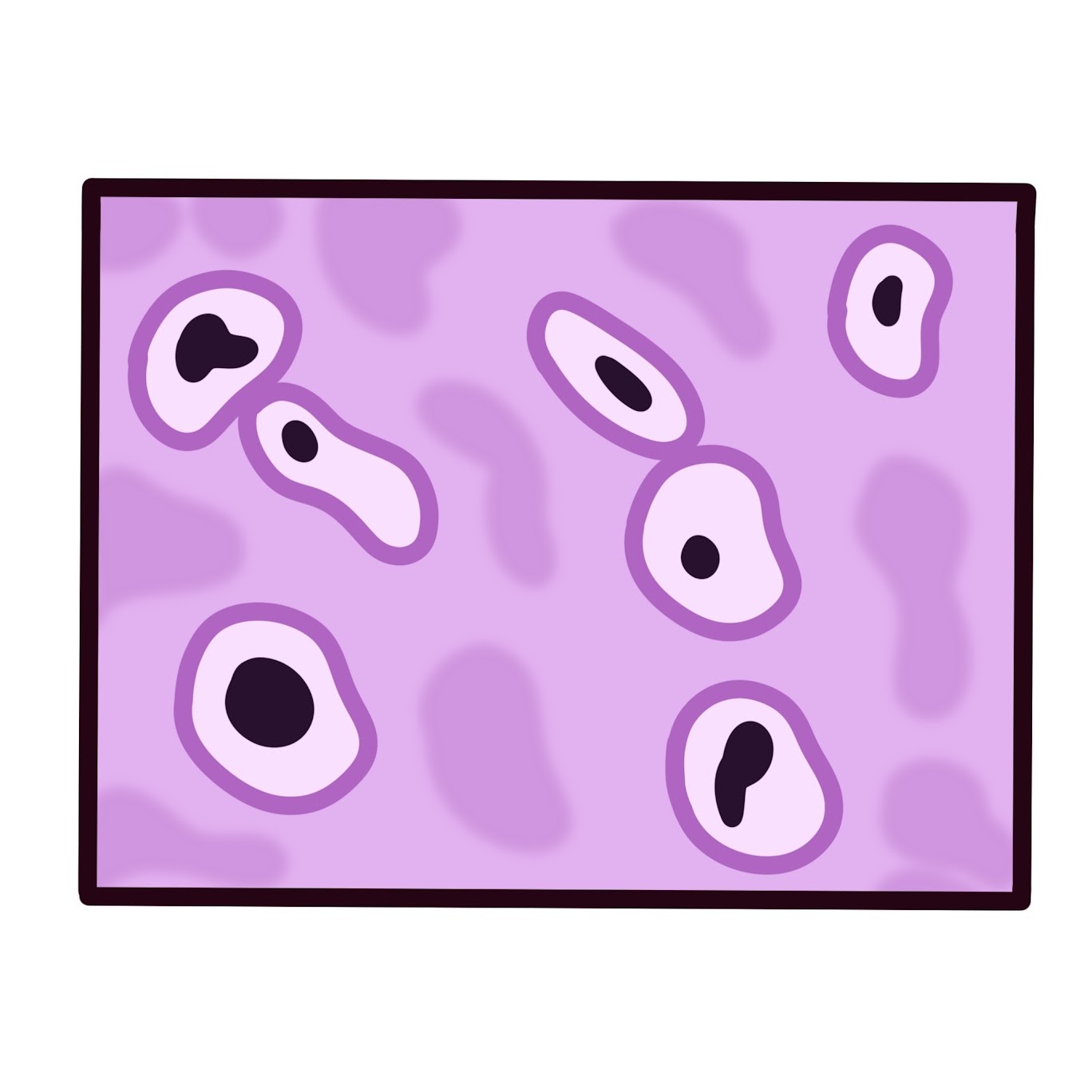
Strong and flexible support material; acts as a skeleton to sharks and prenatal humans; reduces friction and provides a cushion between bones; adds flexibility to some structures (like ears)
Blood connective tissue is composed of:
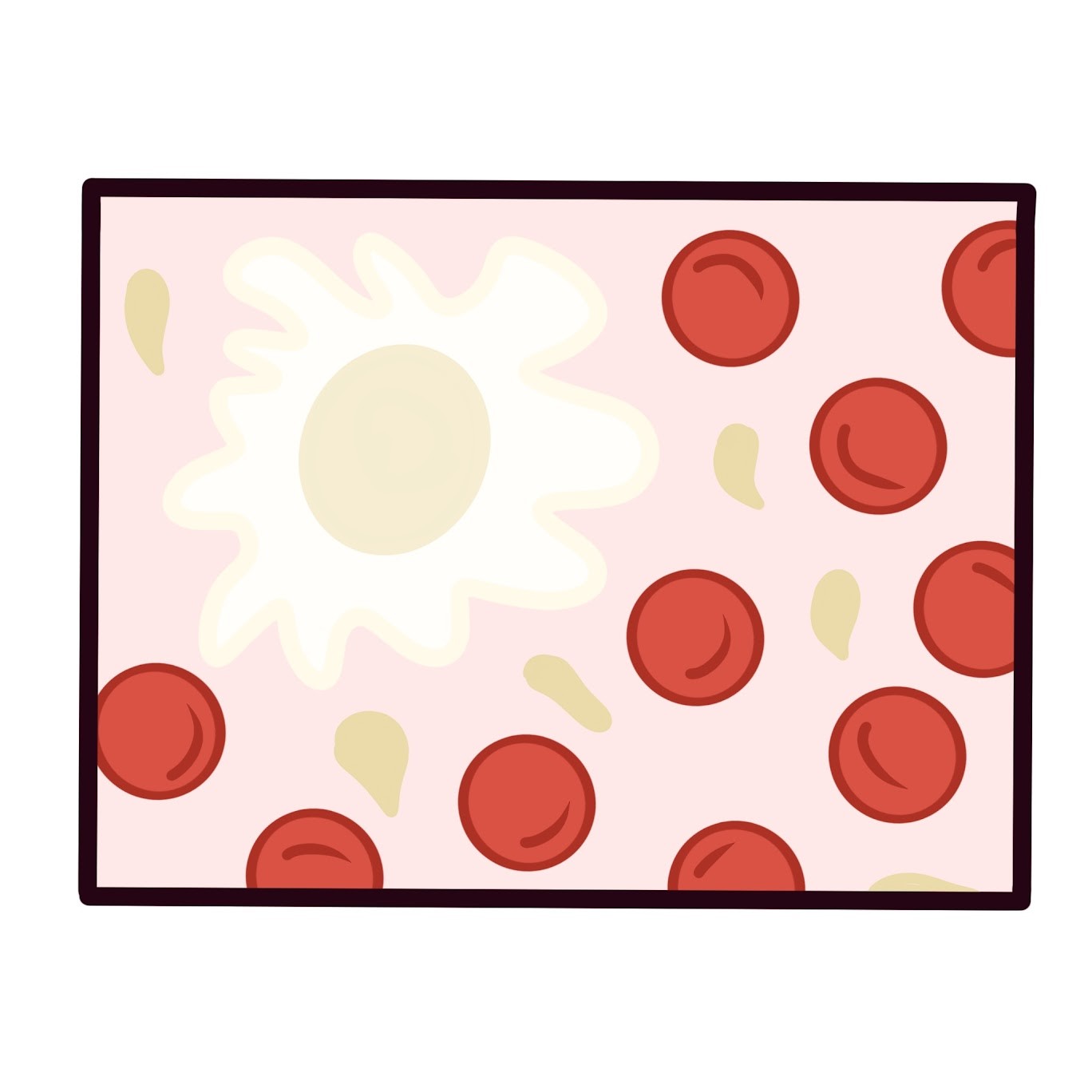
-Fluid ECM (plasma, no fibers)
-Red blood cells
-White blood cells
-Cell Fragments
Blood connective tissue functions
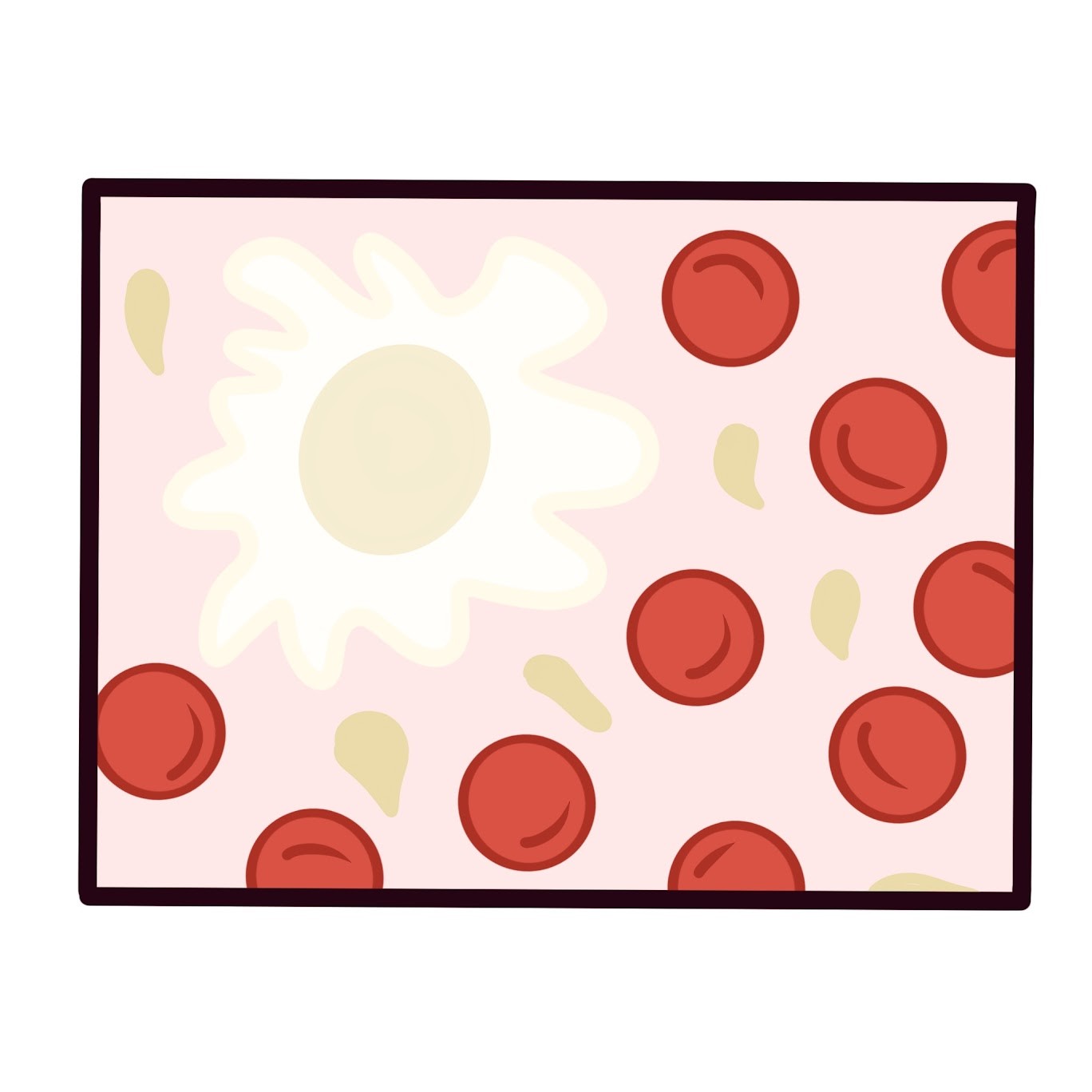
-Red blood cells carries O2
-White blood cells= immune defense
-Cell Fragments= aids with clotting
What protein filaments do muscle tissues contain?
Actin & Myosin
Muscle Tissue Functions
Movement of limbs & materials in the body (heart, vasoconstriction/vasodilation, digestive track)
3 Types of Muscle Tissues
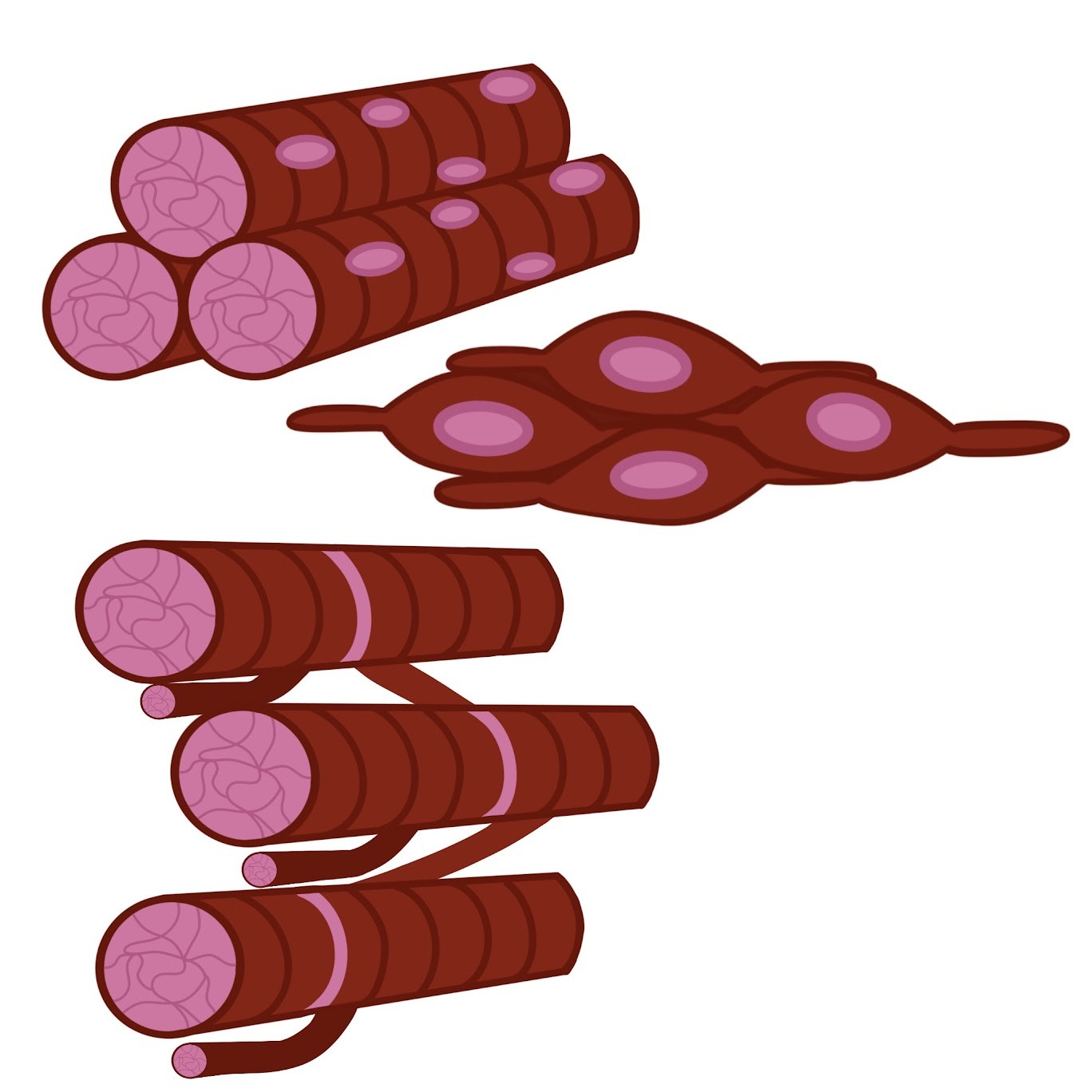
Skeletal, Smooth, Cardiac
Skeletal Muscle Tissue
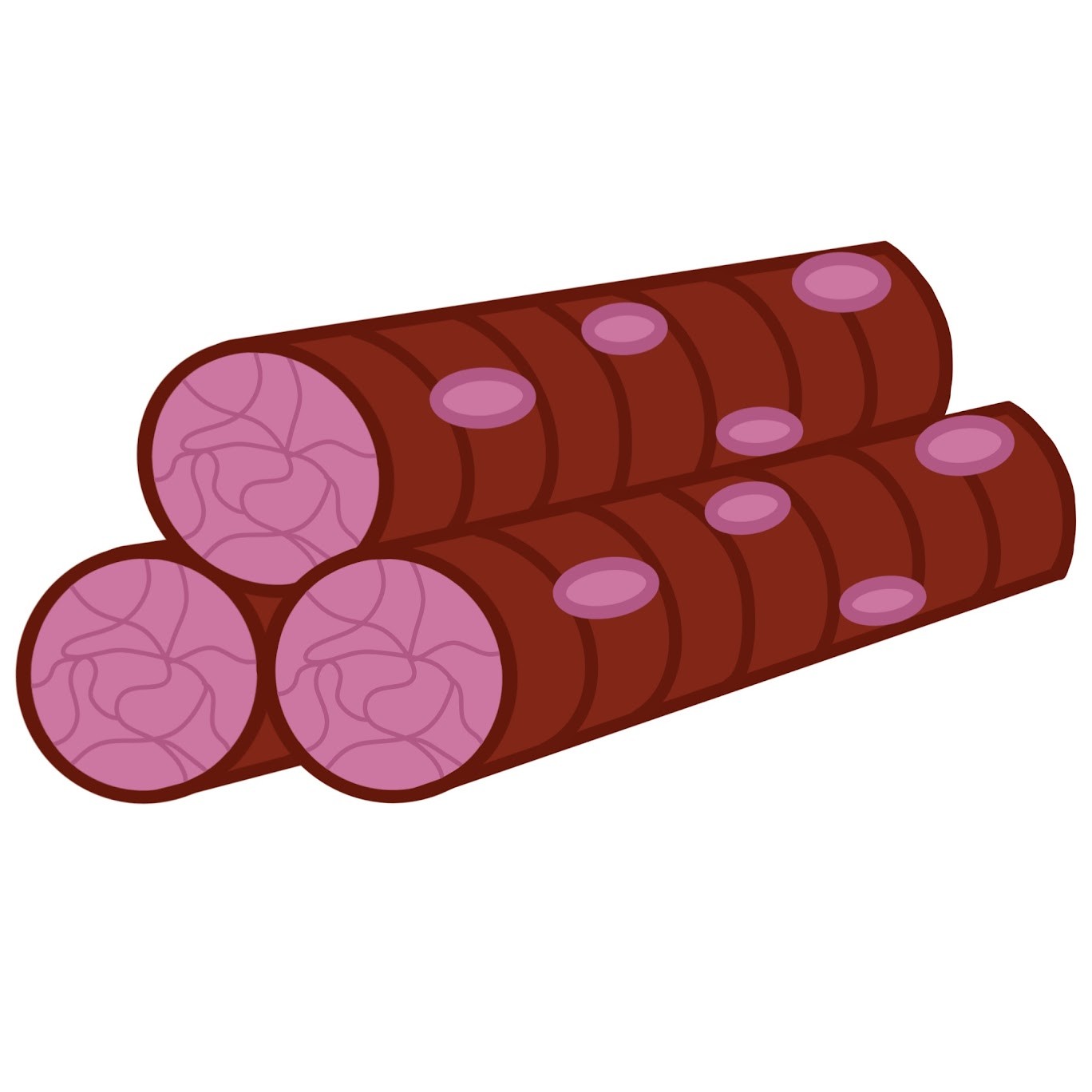
Made up of long multinucleated cells (nuclei at the periphery), bundled into fibers; attached to the skeleton
Skeletal Muscle Tissue Functions
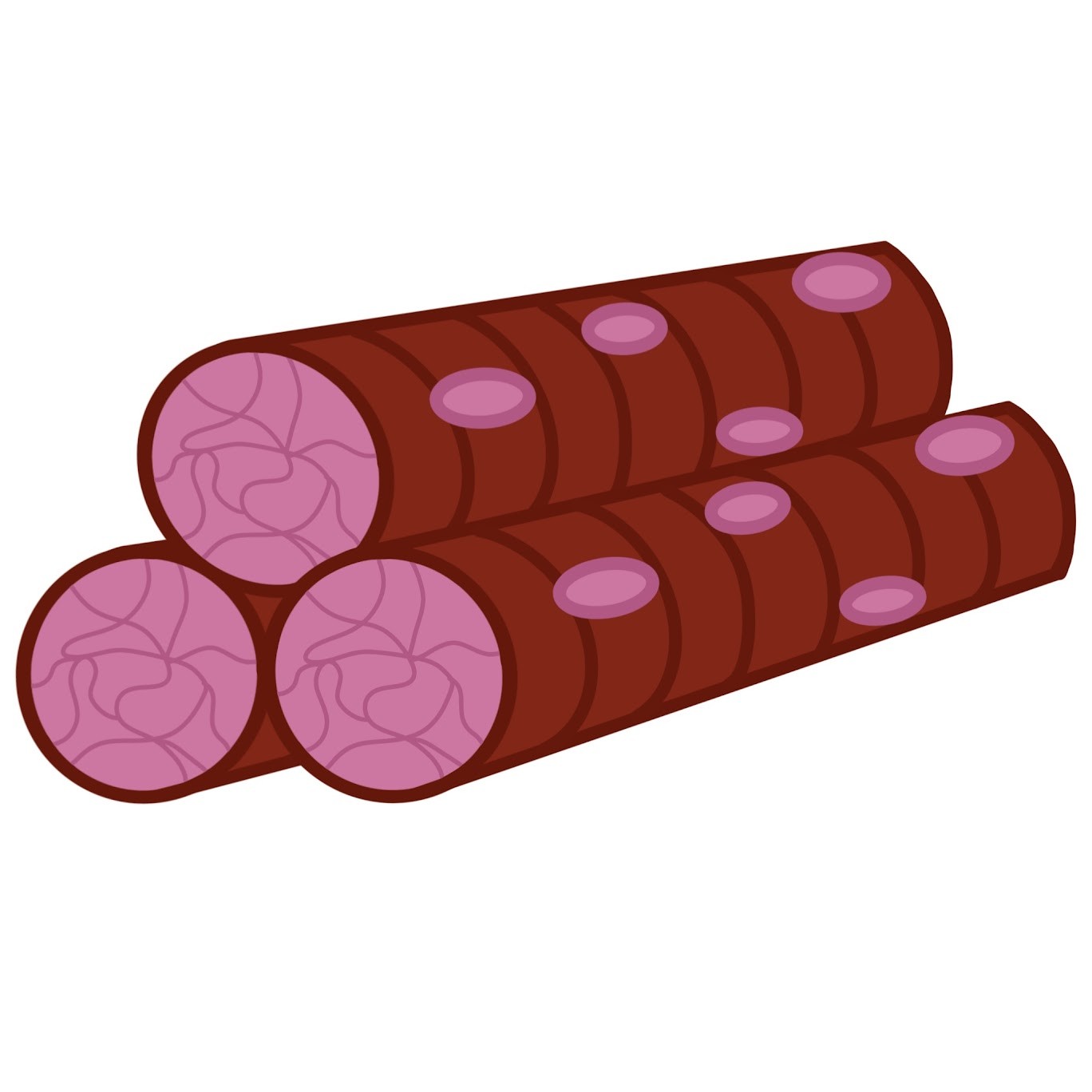
Used for voluntary movement
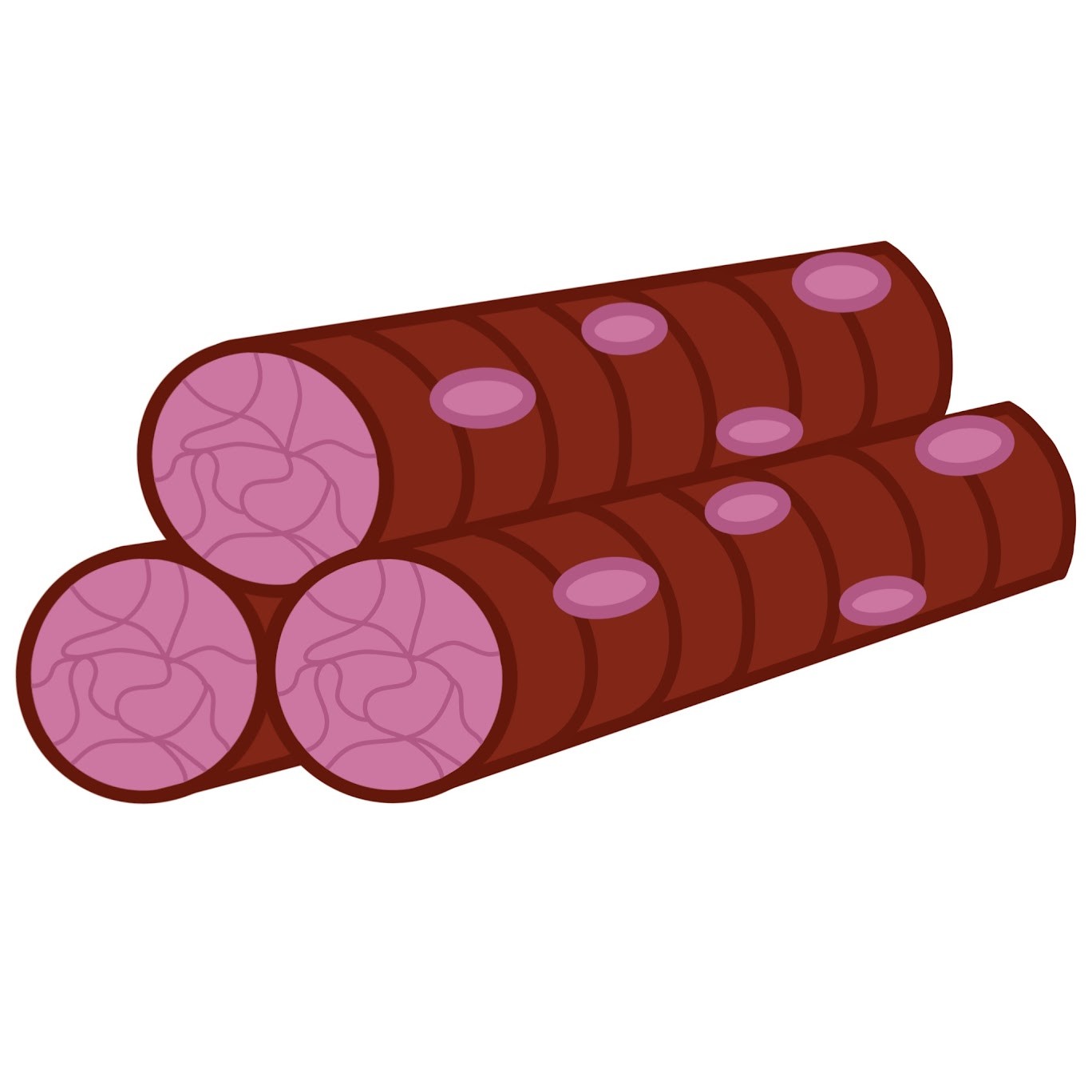
What causes a striated appearance?
Contractile units (sarcomeres)
Smooth Muscle Tissue
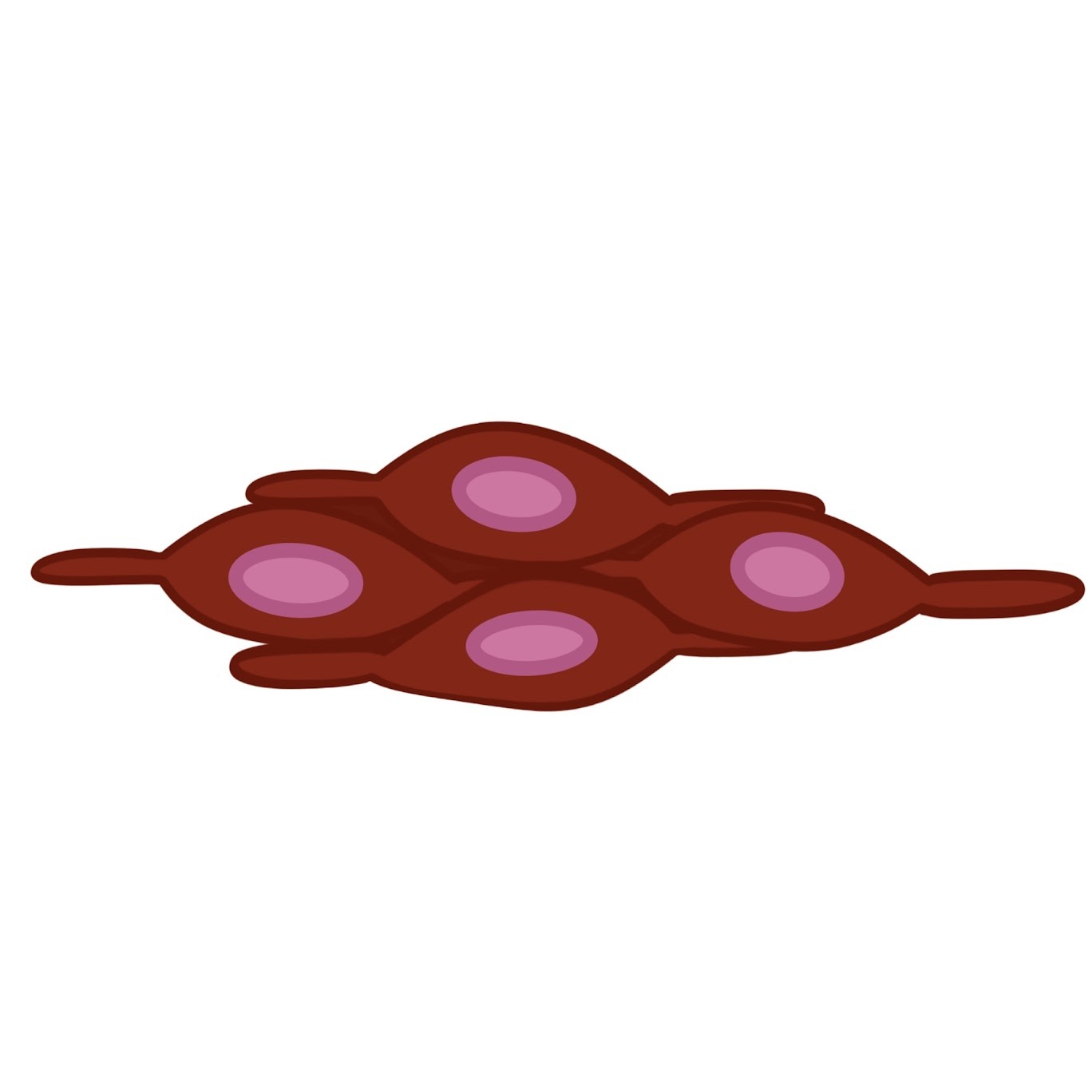
Made of small single nucleated cells that lack striations; commonly associated with internal/visceral organs throughout the body (digestive track, vessels, etc.)
Smooth Muscle Tissue Functions
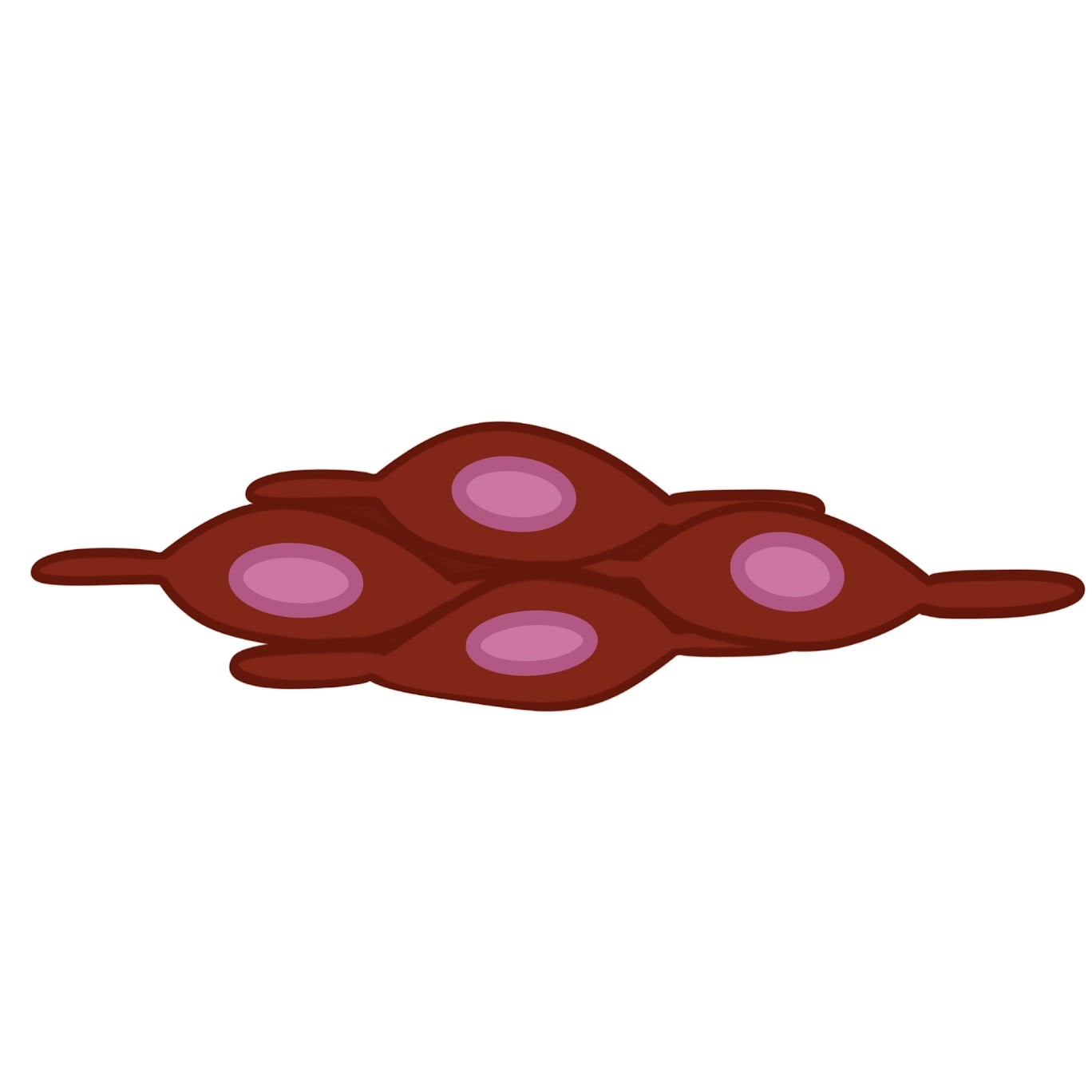
Responsible for involuntary body activities
Cardiac Muscle Tissue
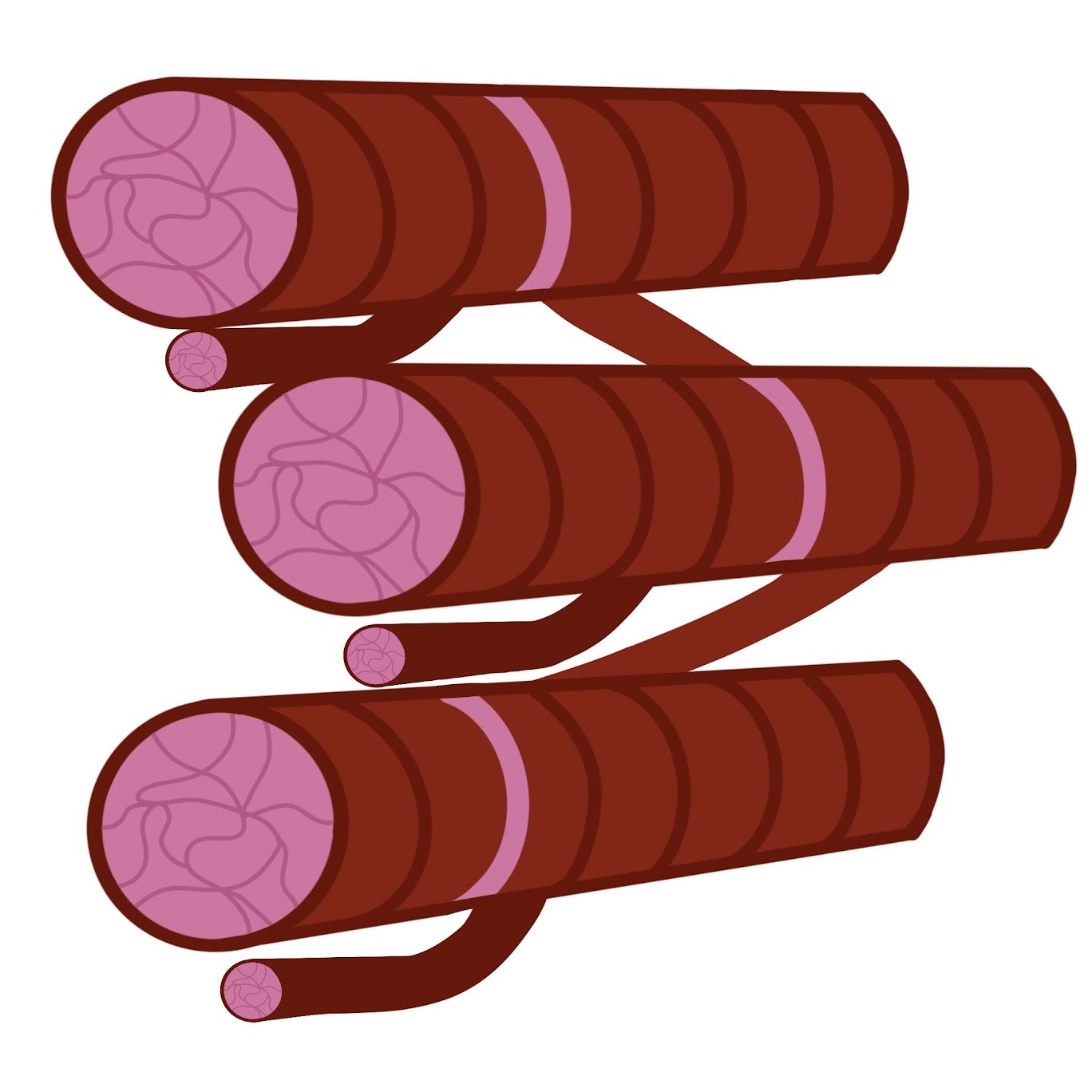
Has branched fibers that connect via intercalated disks; forms contractile wall of heart; spontaneously active (under involuntary control); has striations and single nuclei in the center
Intercalated Disks
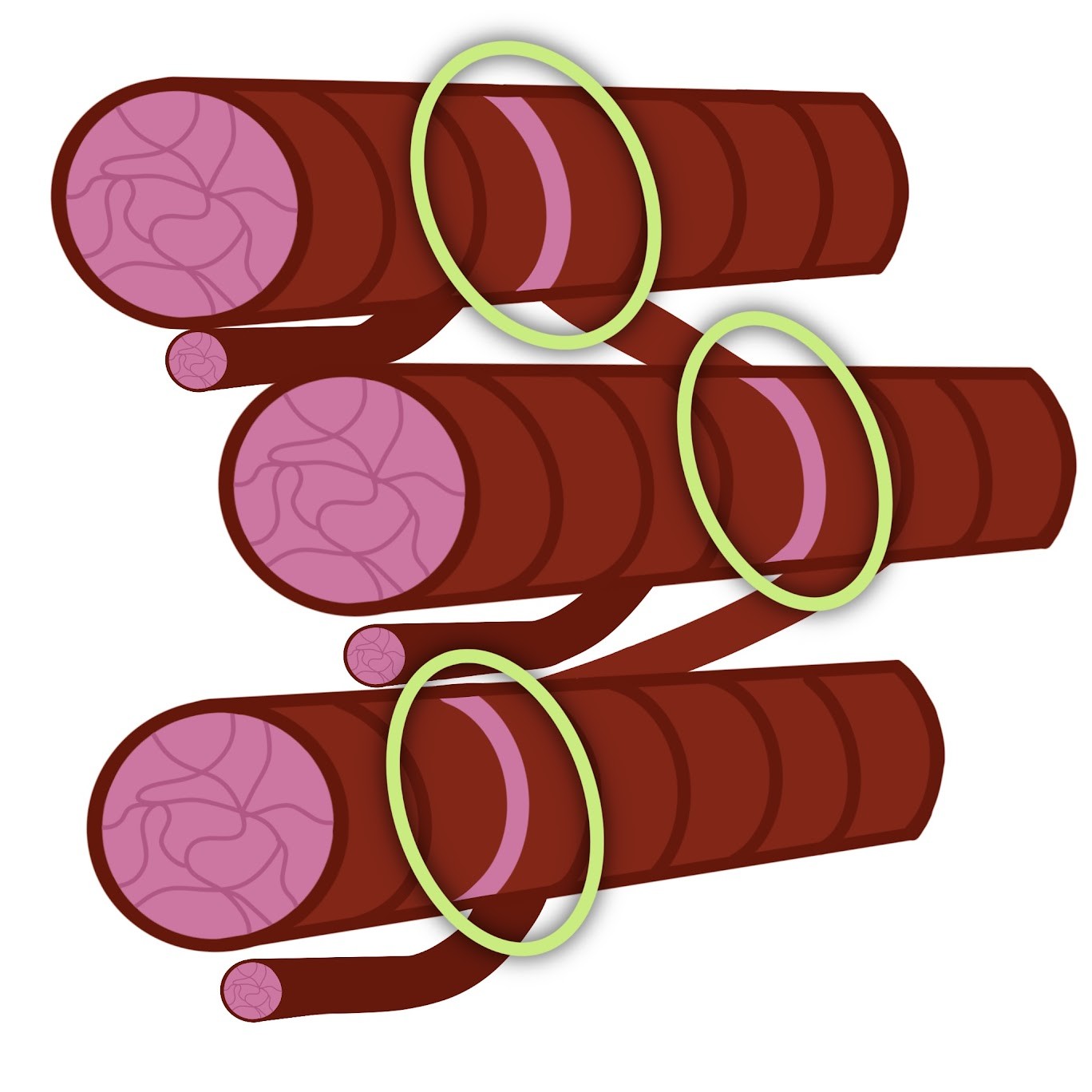
Relays signals between neighboring cells and help synchronize contractions
Nervous Tissue Functions
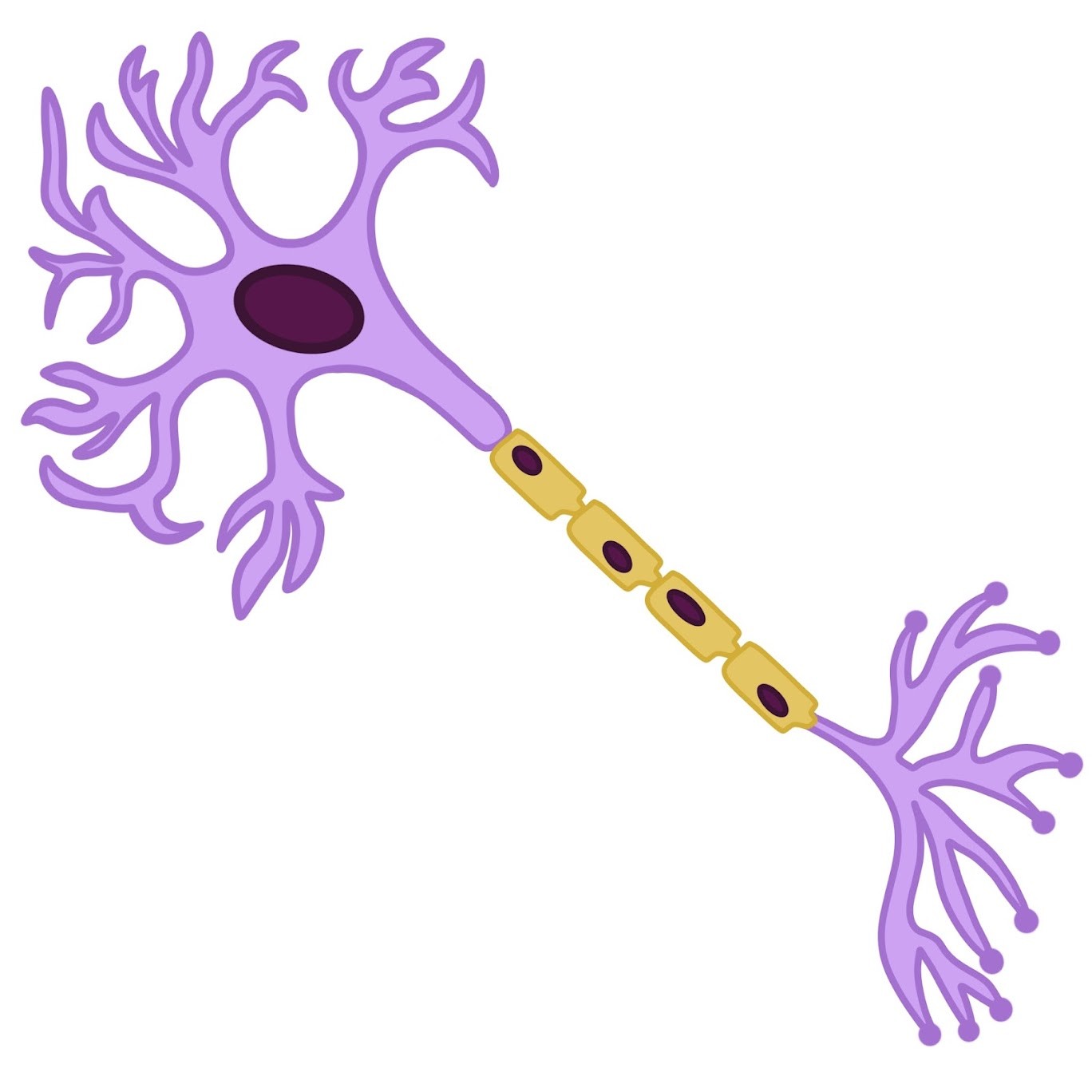
Receives, processes, and transmits information
Nervous tissue contains
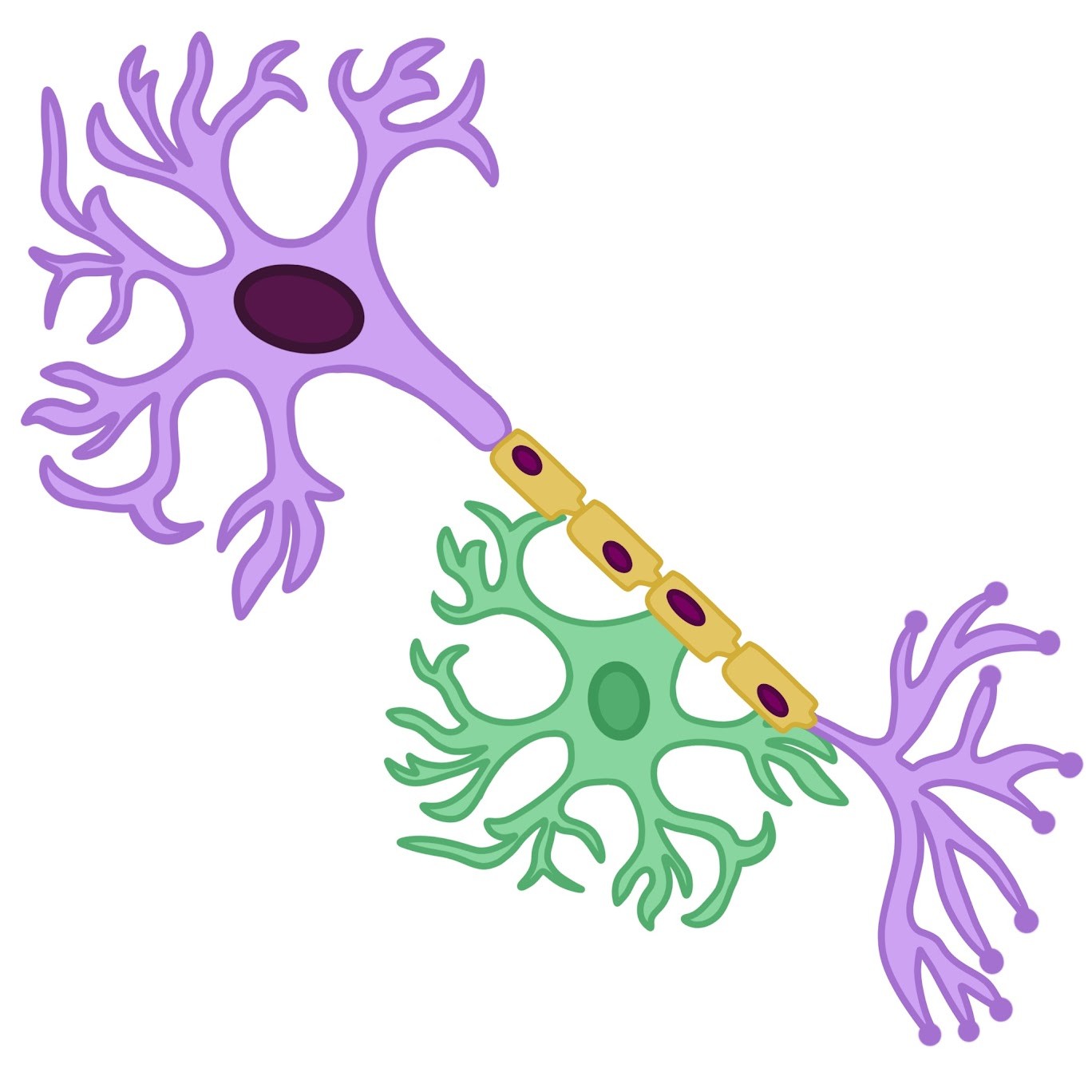
Neurons & Glial Cells
Neurons (Nerve Cells)
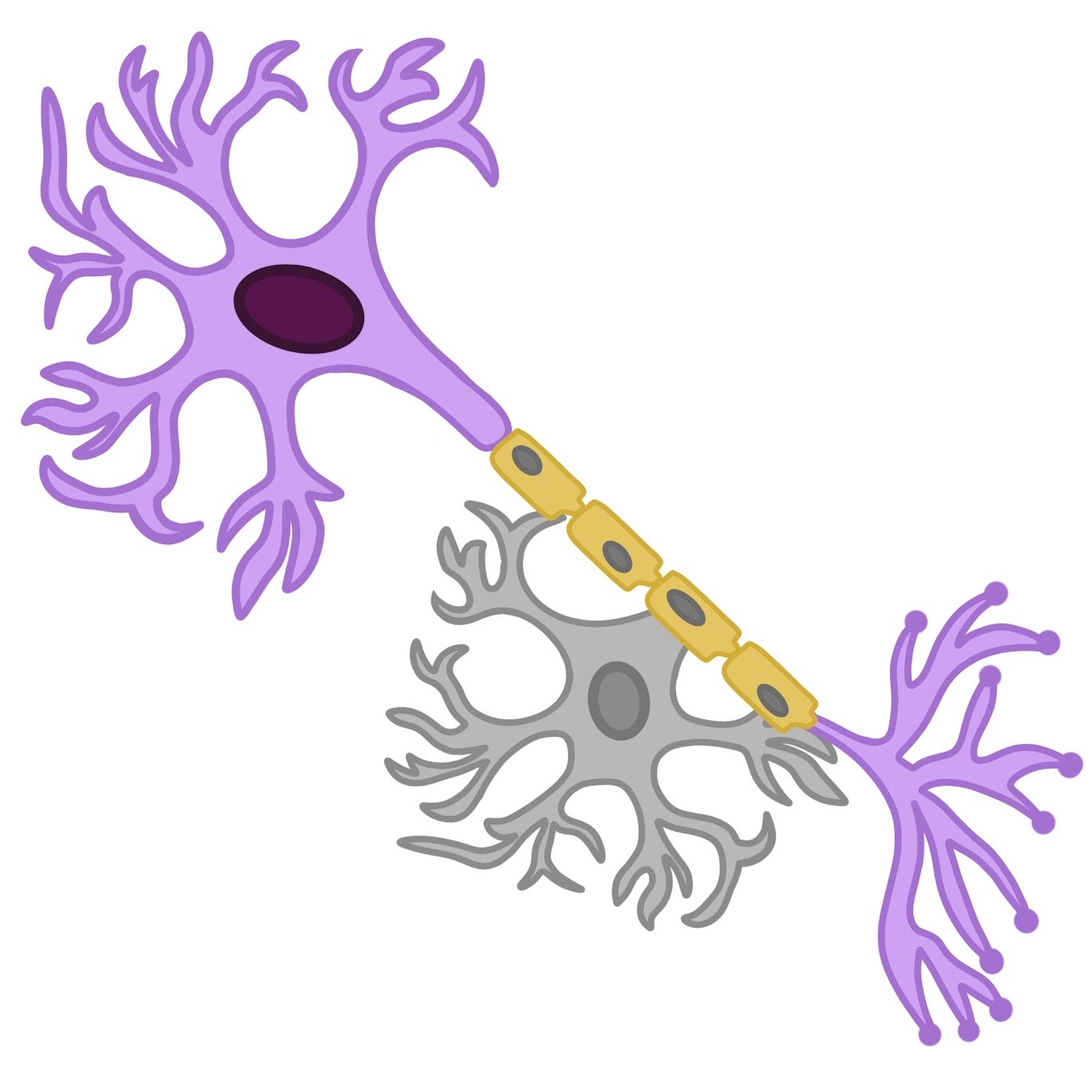
Transmits nerve impulses
Glial Cells (Glia)
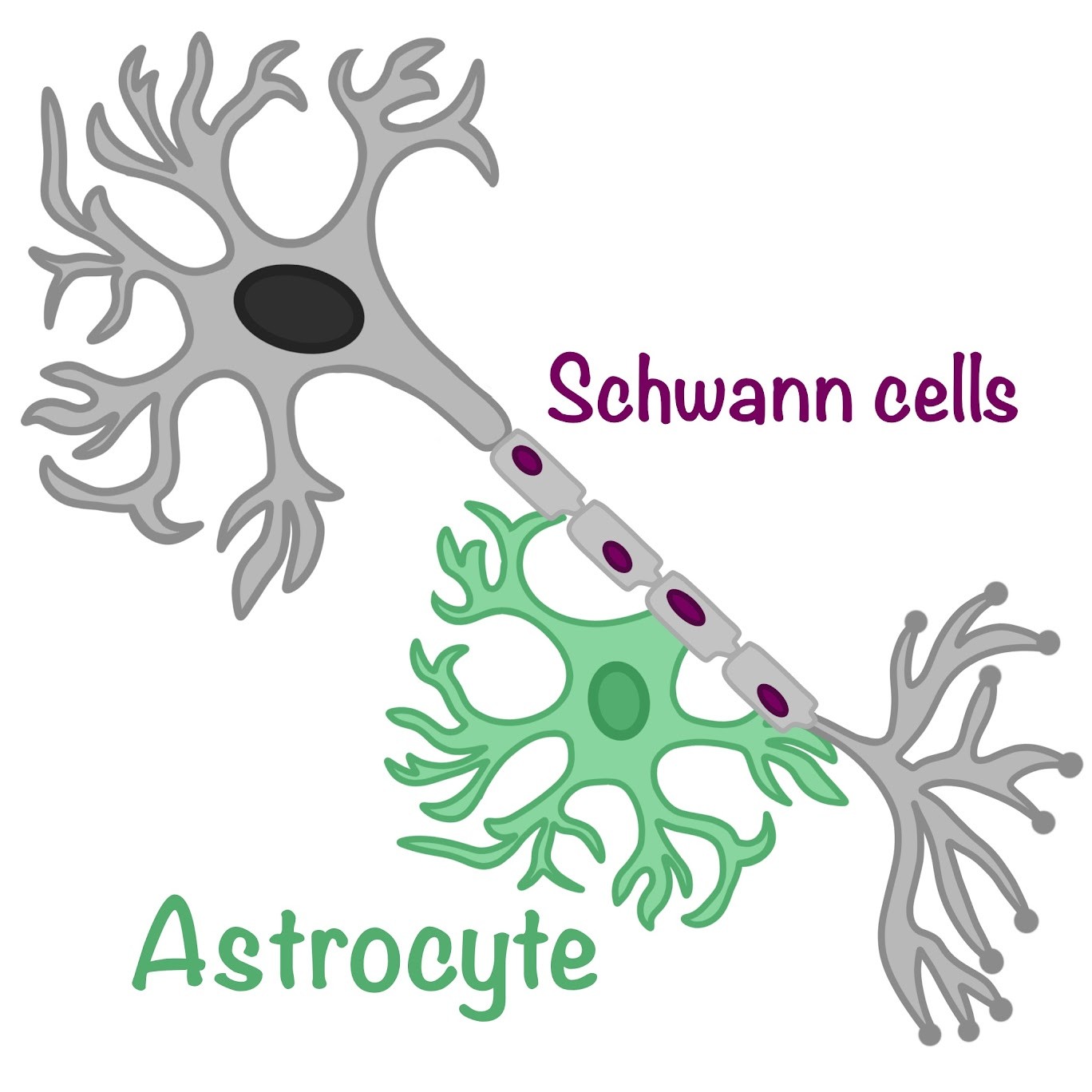
Helps nourish, insulate, and replenish neurons
How do animals manage their internal environment?
By regulating or conforming to the external environment
Examples of challenging factors
Temperature, water availability, gas availability/composition, salinity, pH
Regulator

Moderates internal change in the face of external, environmental factors
Conformer
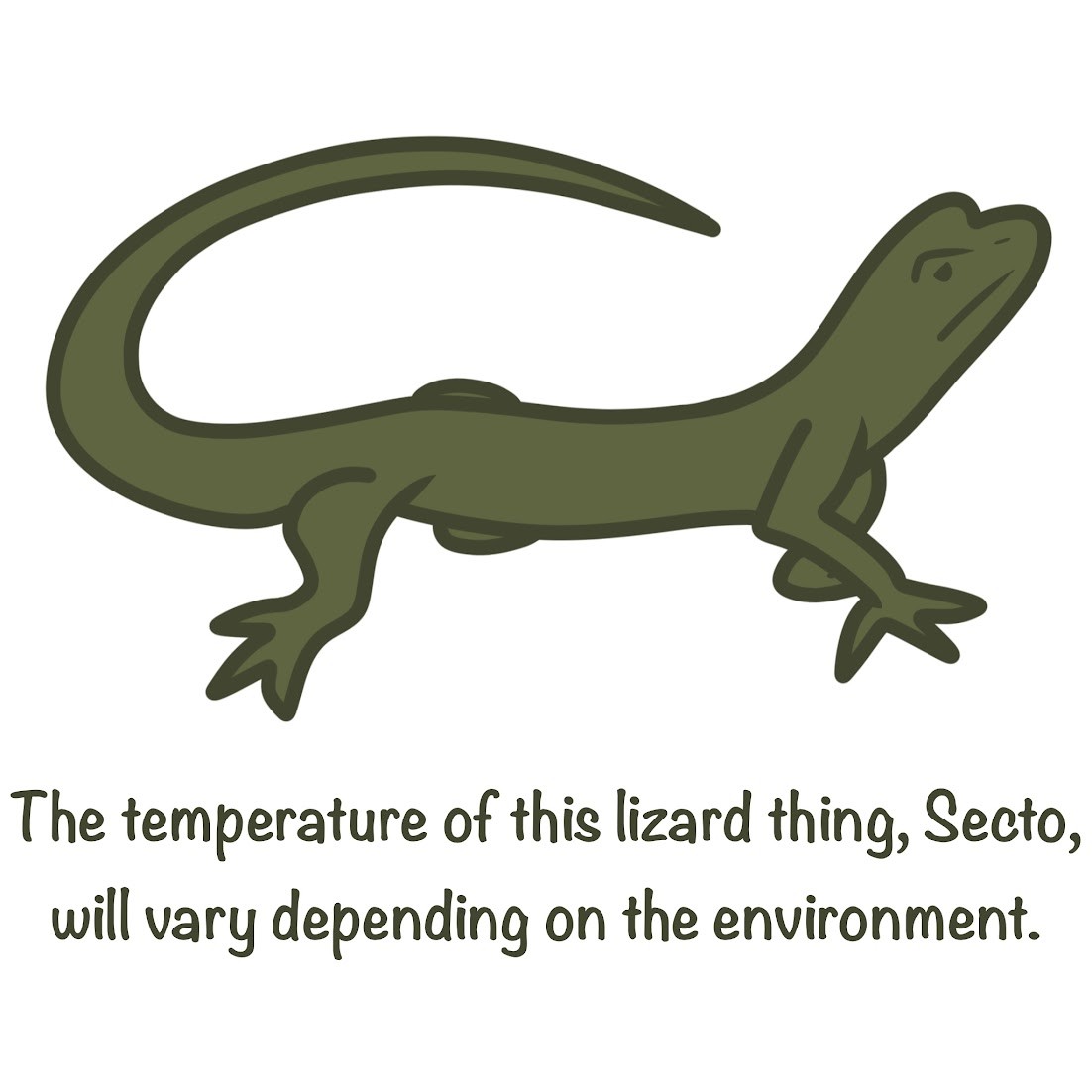
Allows its internal condition to vary with certain external changes
Homeostasis
Maintenance of equilibrium around a point or value called a set point, regardless of the external environment
Examples of homeostasis parameteres
Body temperature, blood pH, glucose concentration
Control of Homeostasis
Fluctuations above or below a set point serve as a stimulus, detected by a sensor that triggers a response that returns the variable to the set point.
Set point of a thermostat
Room temperature at 20℃
Stimulus of a thermostat
Room temperature increases/decreases
Response of a thermostat
Thermostat turns the heater on/off, causing the temperature to go back to 20℃.
Negative Feedback
Buildup of the end product shuts the system off and helps to return variable to a normal range
Negative Feedback examples
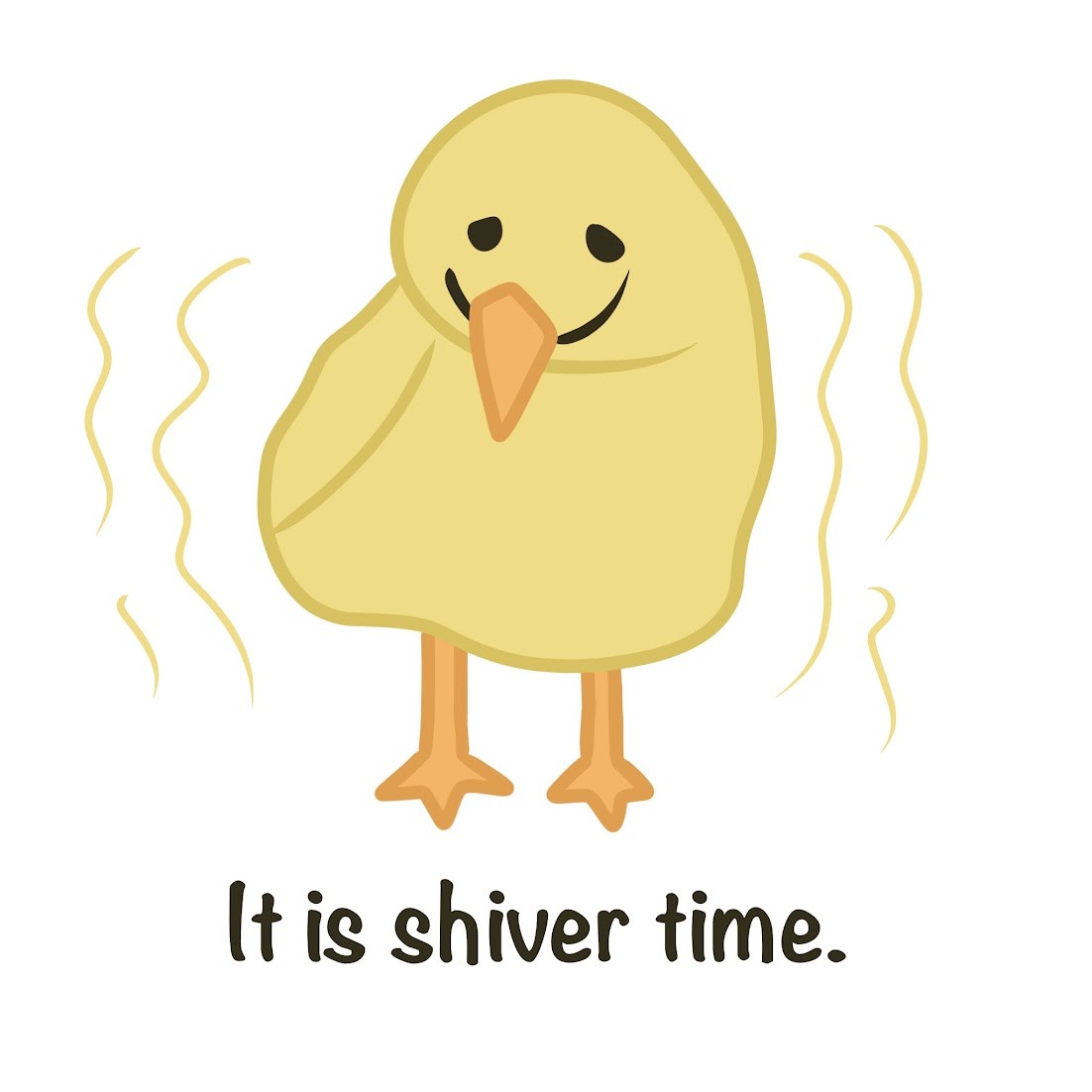
Glucose regulation, sweating/shivering to regulate body temperature
Positive Feedback
Amplifies a stimulus and does not usually contribute to homeostasis in animals
Positive Feedback examples
Childbirth
Circadian Rhythm

Governs physiological changes that occur roughly every 24 hours
Acclimatization
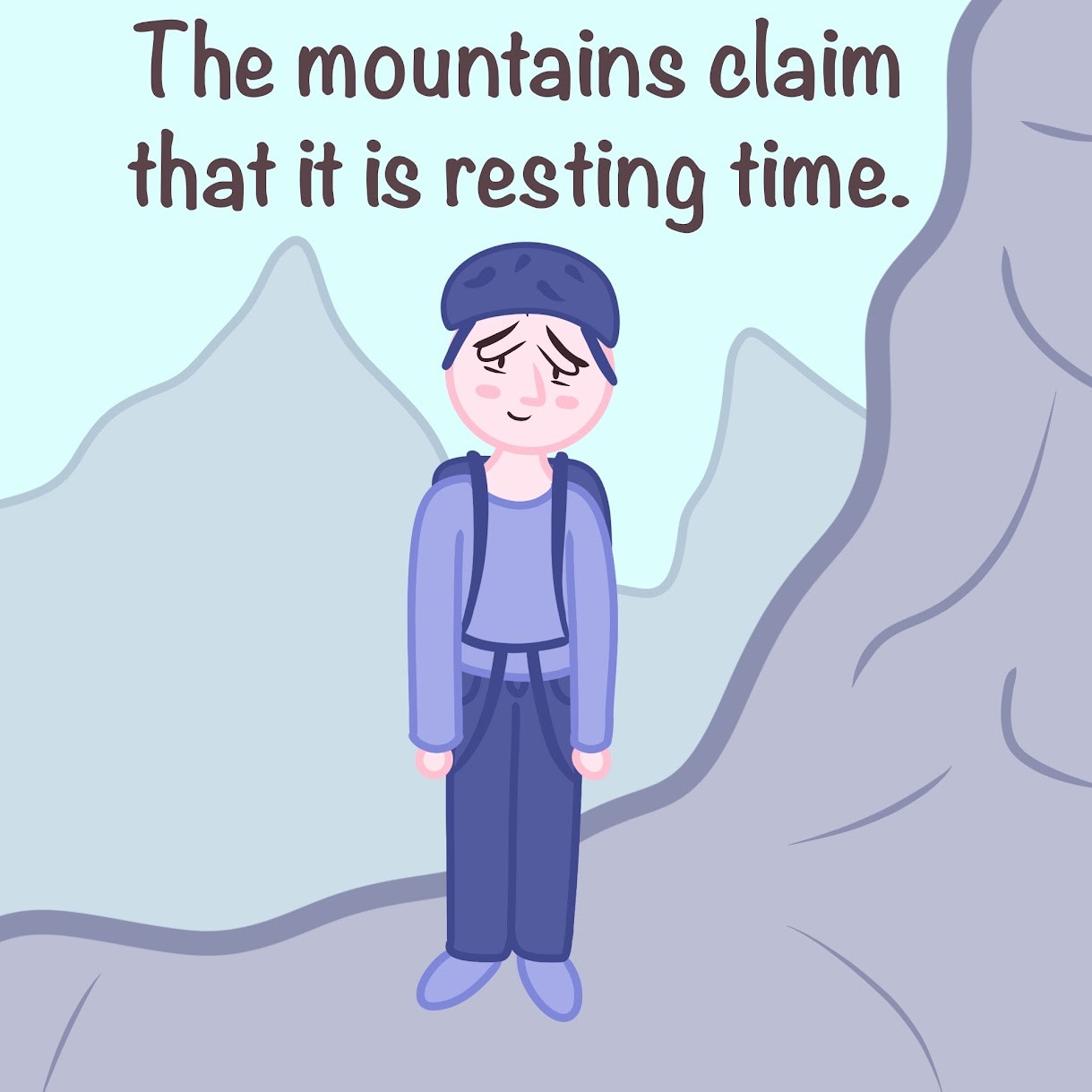
Short-term (within single life span) physiological responses to changes in the natural environment
Acclimation
Short-term (within single life span) physiological responses to changes (experimental changes) in a laboratory setting
Adaptation
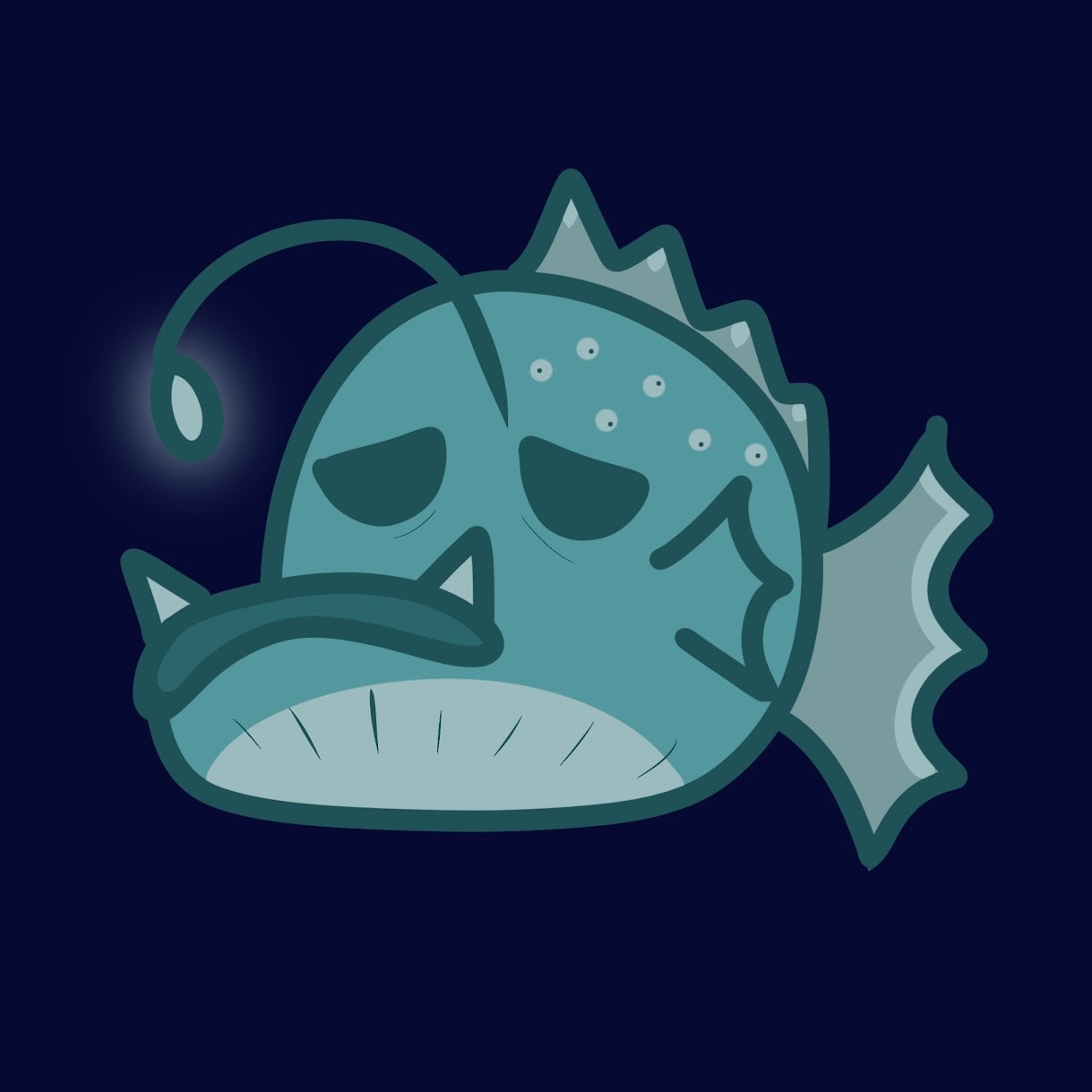
Process by which natural selection adjusts frequency of genes in a population that code for traits affecting fitness over many generations.
Thermoregulation
Process by which animals maintain an internal temperature within a normal range
Endothermy

Heat form metabolism; tolerates greater variation in internal temperature but more energetically expensive
What time of animals use endothermy?
Birds and mammals
Ectothermy

Heat from environment; more active at a greater range of external temperatures
What time of animals use ectothermy?
Invertebrates, fish, amphibians, nonavian reptiles
Example of regional endothermy

Swordfish (has heat exchange vessels that supply blood to muscles)
What is endothermy vs ectothermy based on?
The primary source of heat
What is homeothermy vs poikilothermy based on?
The stability of body temperature
Homeothermy
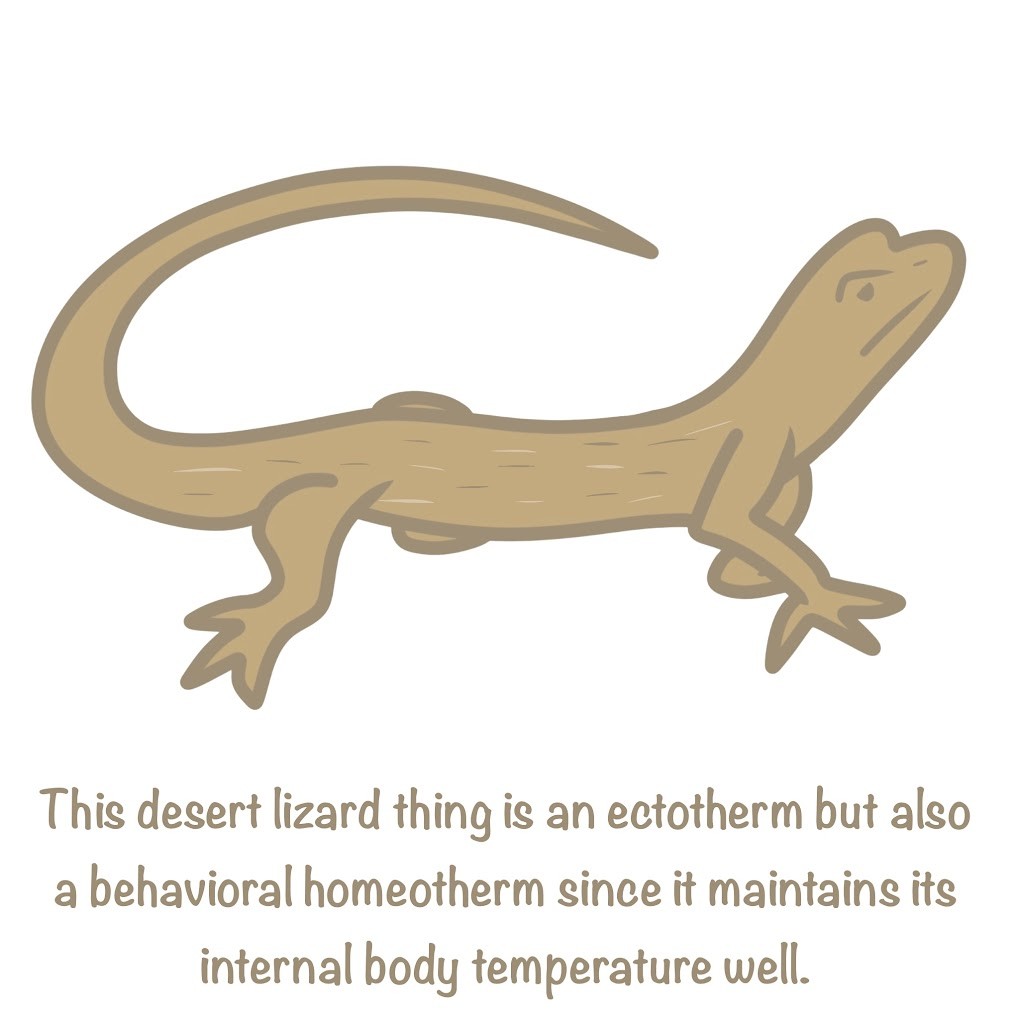
Maintains more or less a stable body temperature; includes many aquatic ectotherms
Poikilothermy
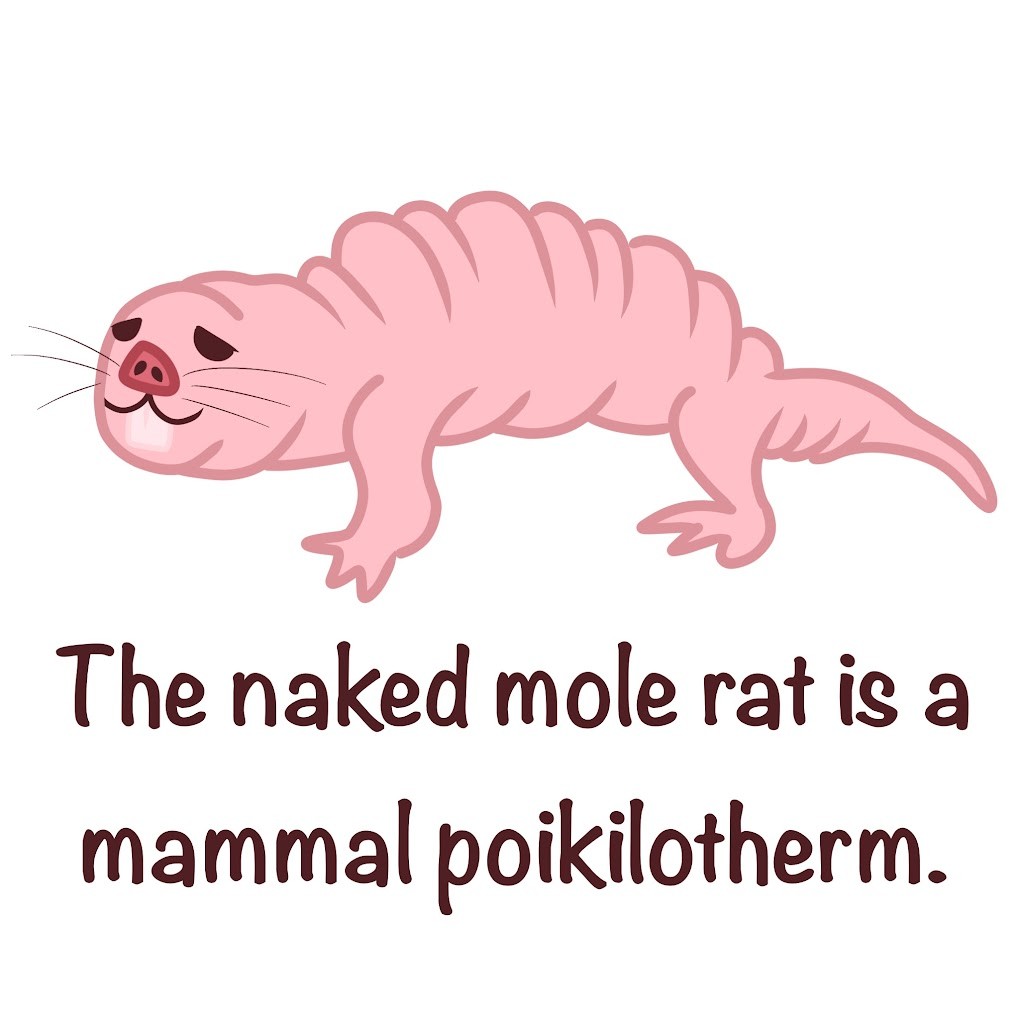
Allows their internal temperature to vary with the environment; includes most terrestrial ectotherms, small mammals, and birds
Is the relationship between heat source and body temperature fixed?
No
Heterothermy
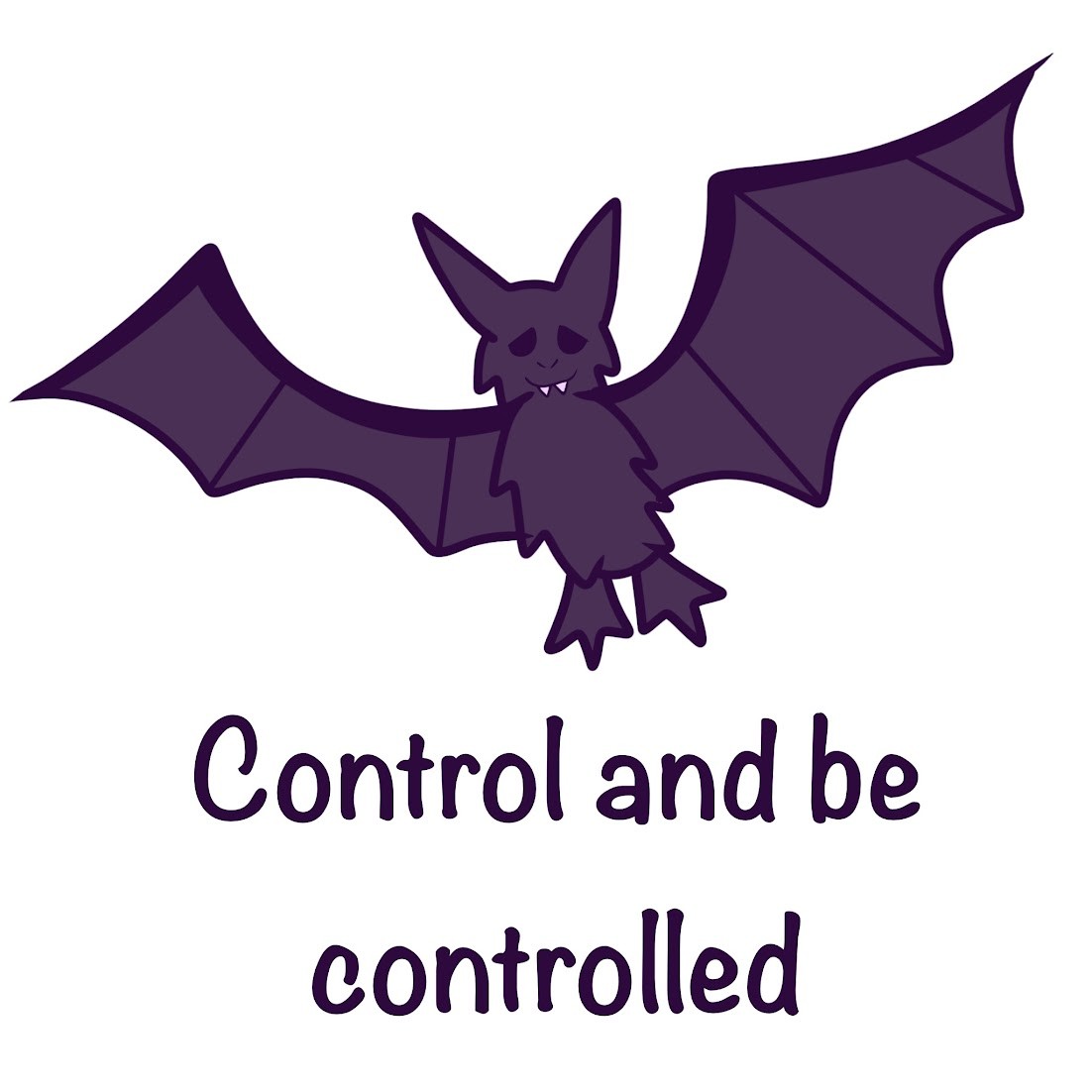
Applies to animals that vary between self-regulating their body and allowing the surrounding environment to affect it.
4 physical processes of exchanging heat
Radiation, Evaporation, Convection, Conduction
Raditation
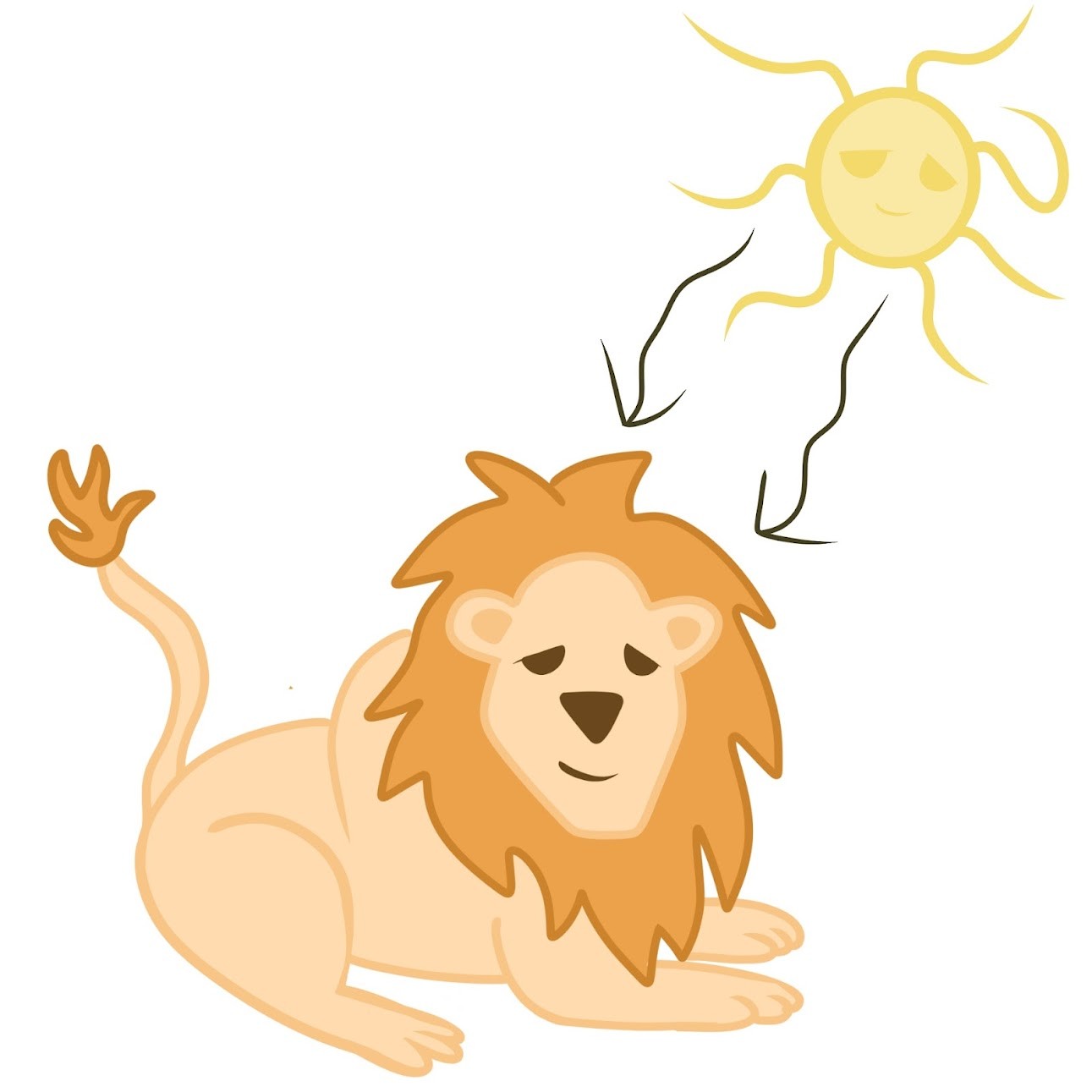
Electromagnetic waves
Evaporation
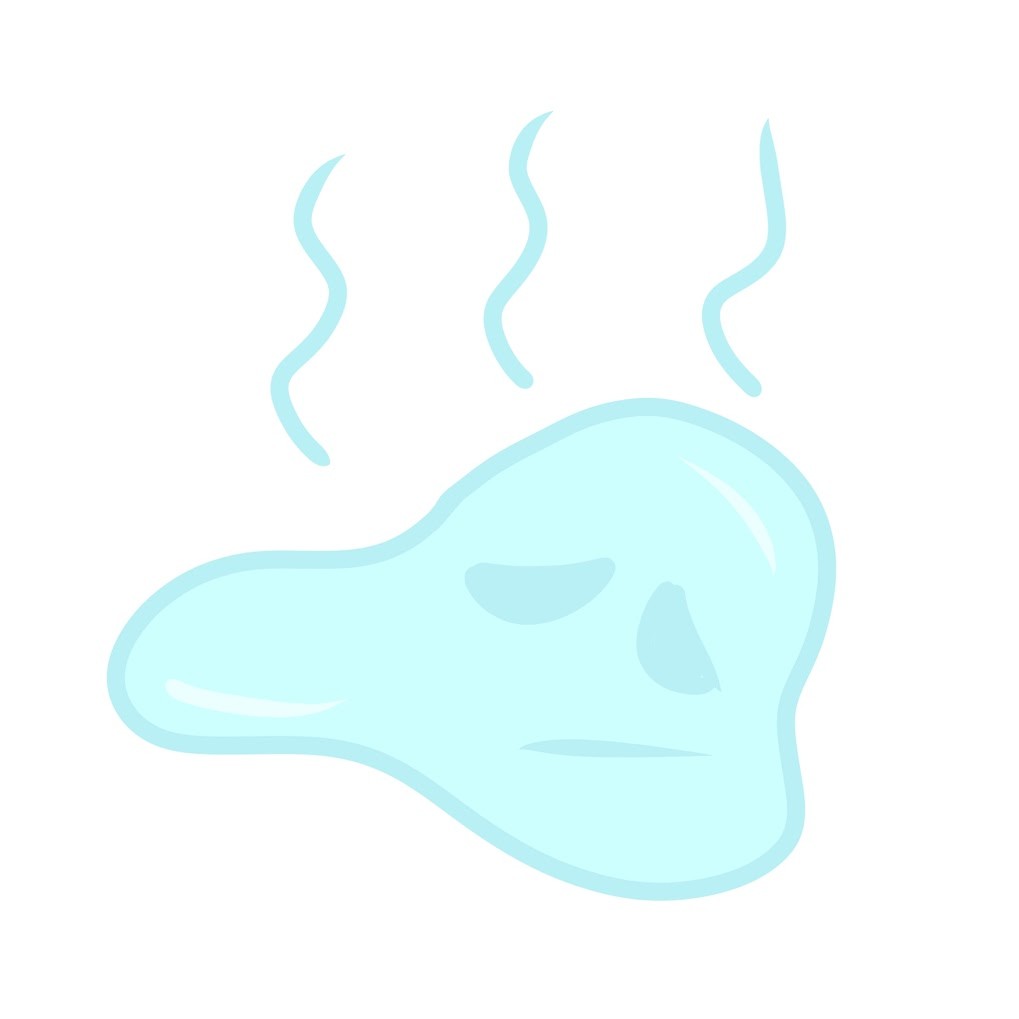
Removal of heat in transfer of liquid to gas
Convection
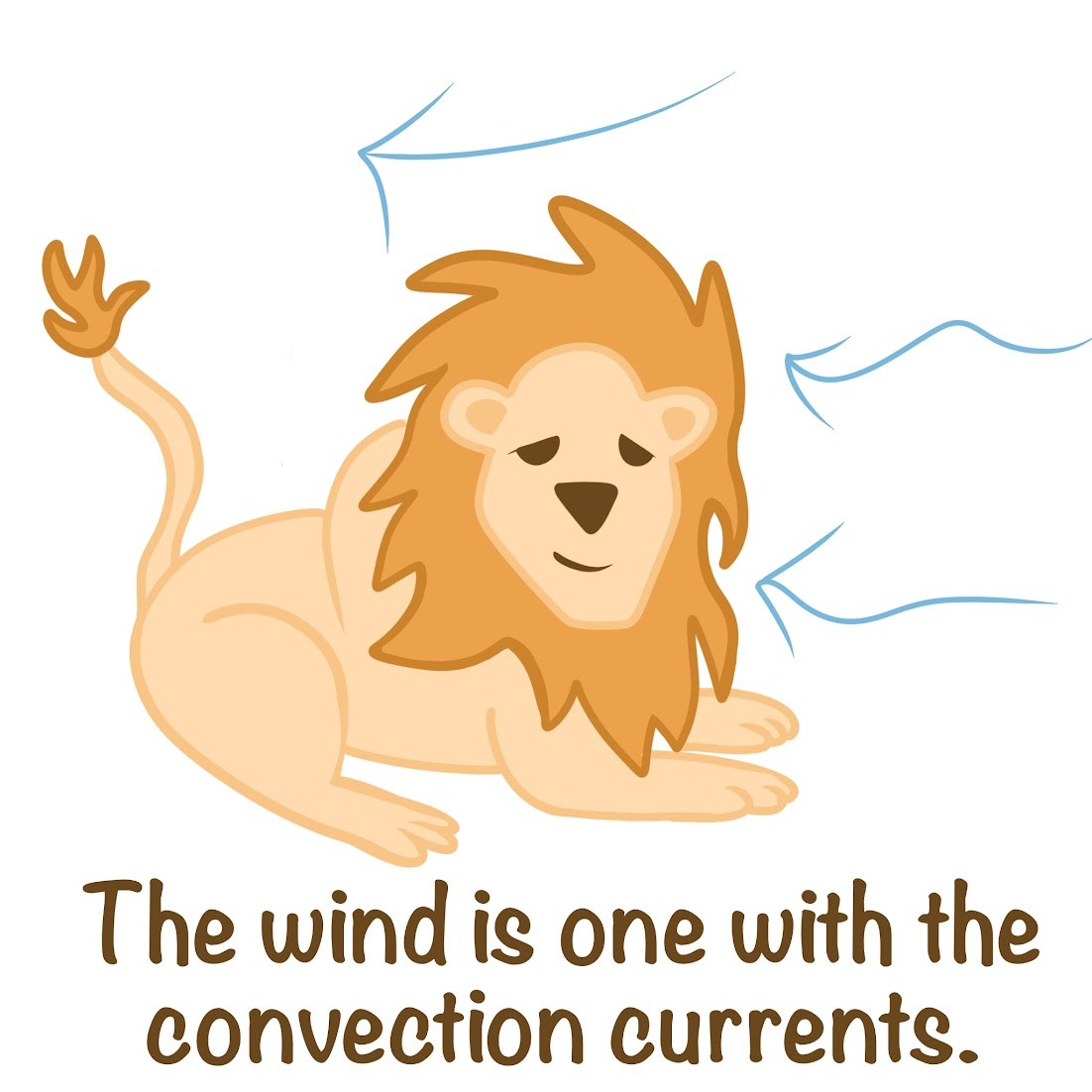
Movement of air or liquid past a surface
Conduction
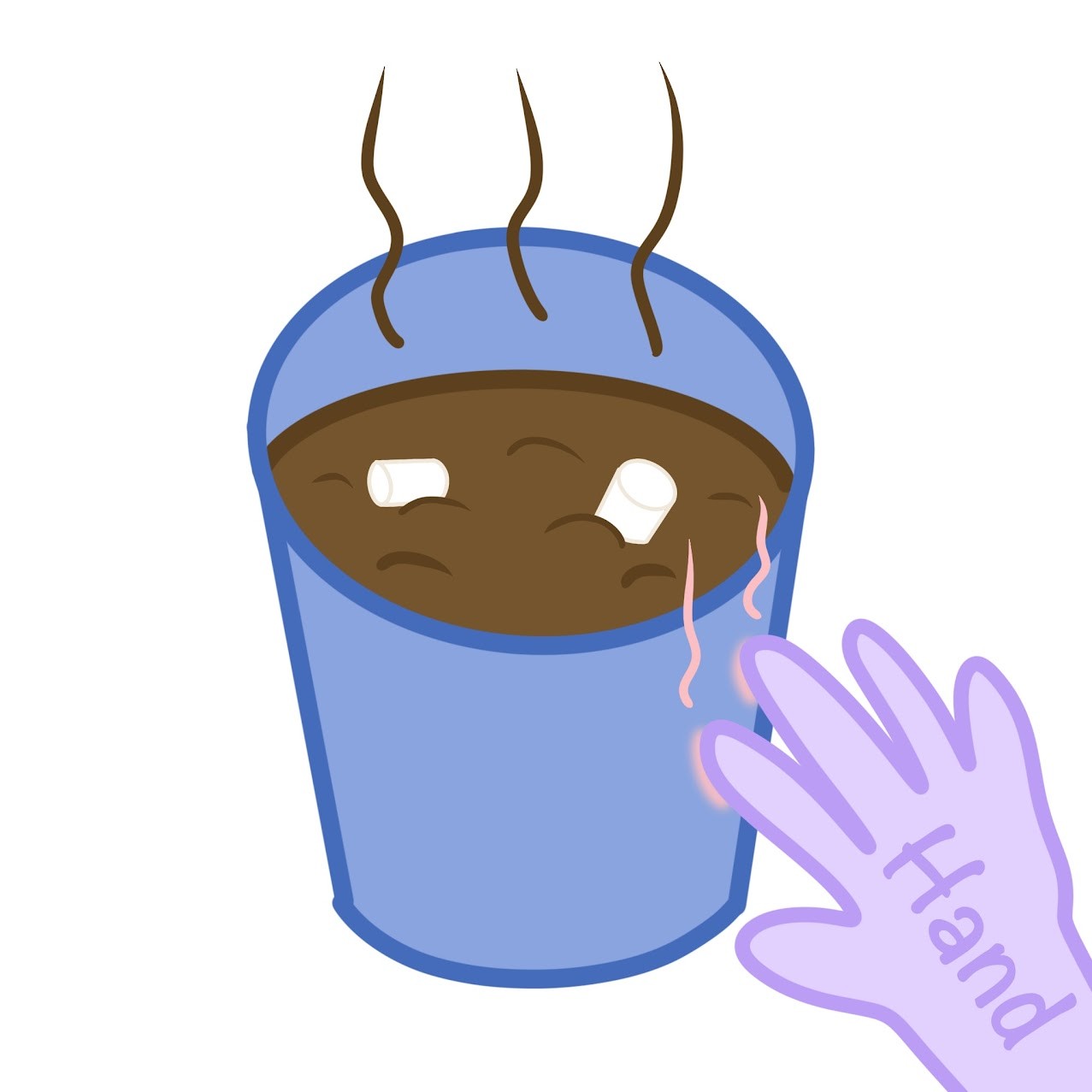
Transfer of heat between objects in direct contact
5 adaptations that help animals thermoregulate
Insulation, circulatory adaptations, cooling by evaporative heat loss, behavioral responses, adjusting metabolic heat production
What reduces heat flow between an animal and its environment?
Skin, feathers, fur, blubber
Why is insulation important in marine animals (like whales and walruses?)
The transfer of heat to water is 50-100X faster than heat to air
Vasodilation
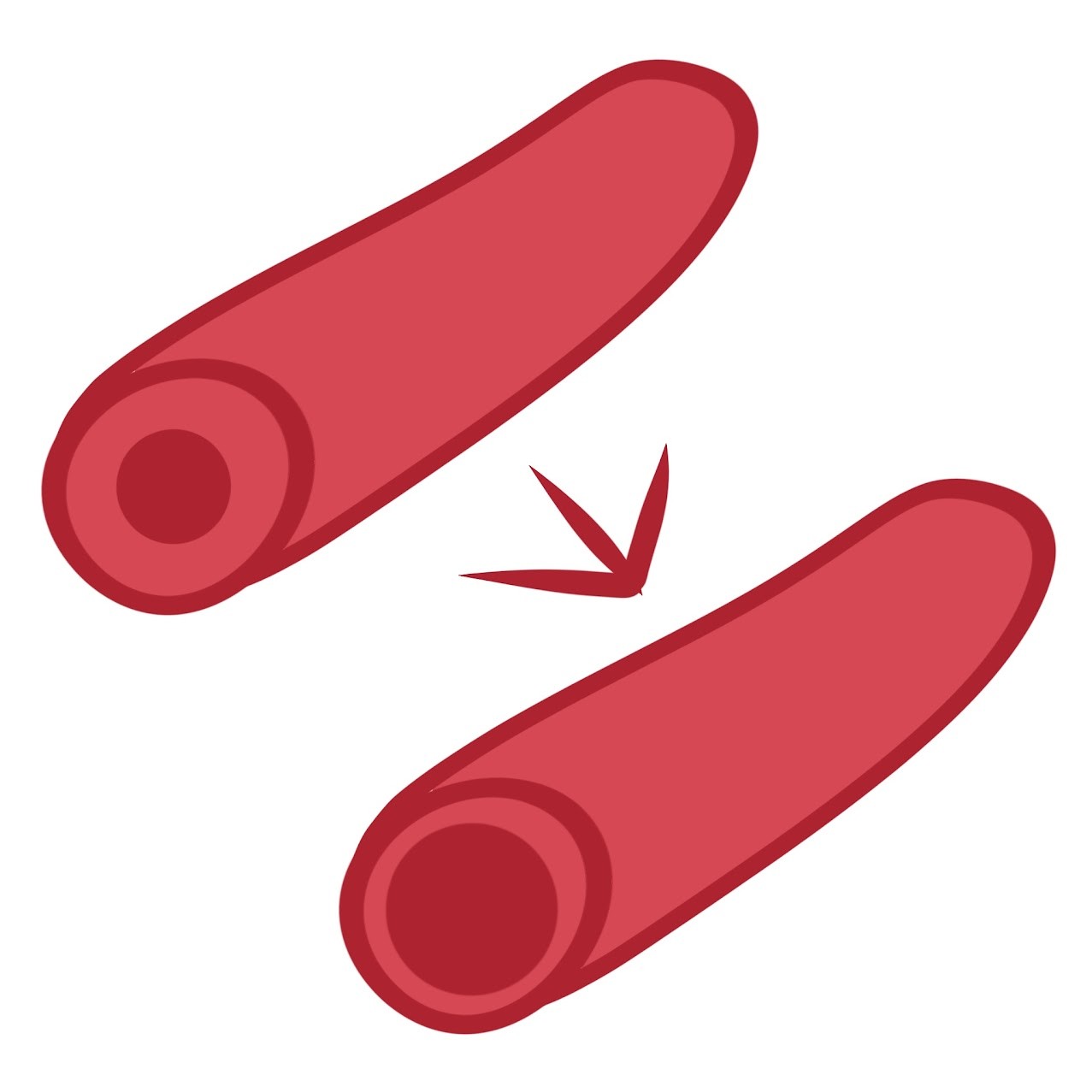
Blood flow in the skin increases, facilitating heat loss
Vasoconstriction
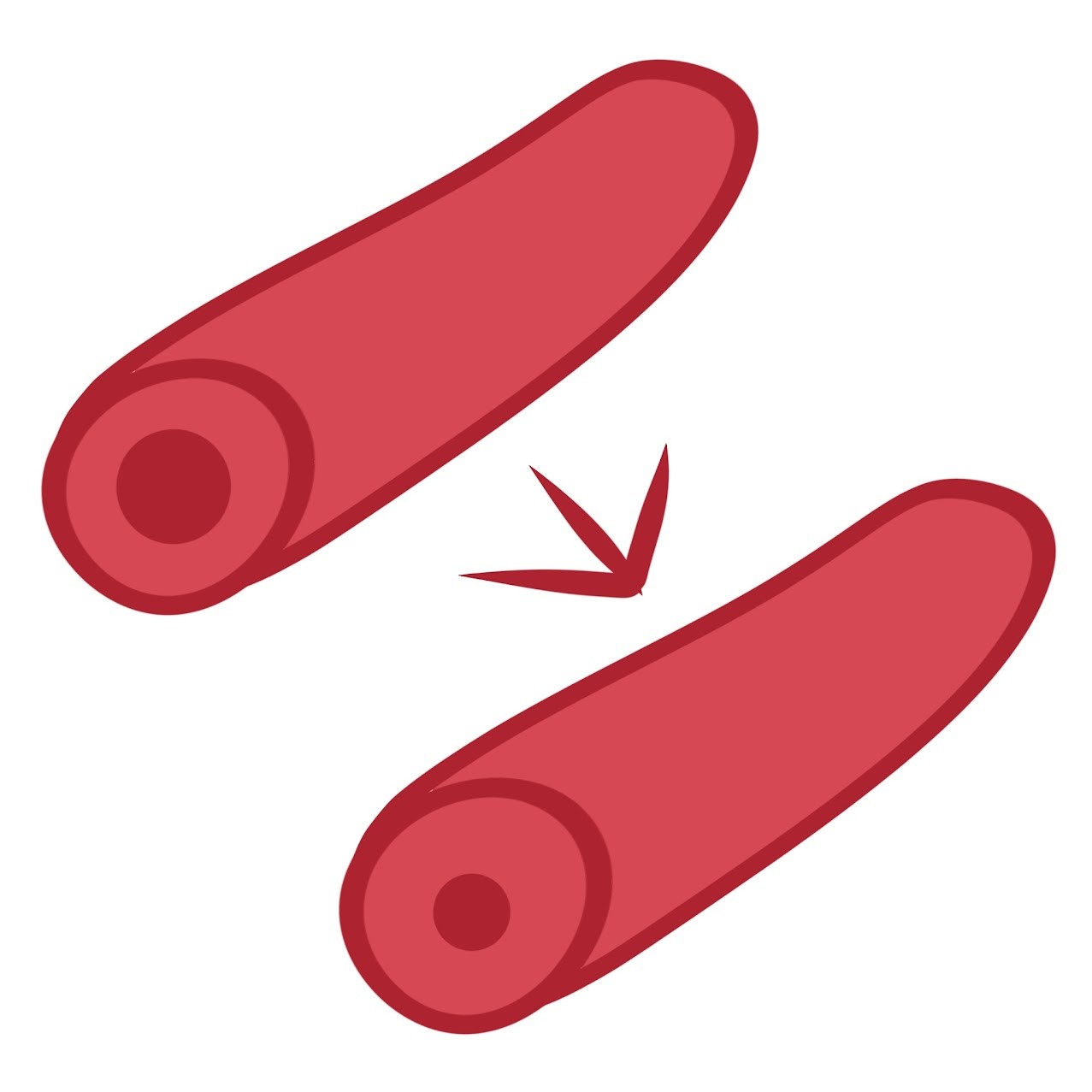
Blood flow in the skin decreases, lowering heat loss
What circulatory adaptation helps maintain core temperature in marine mammals and birds?
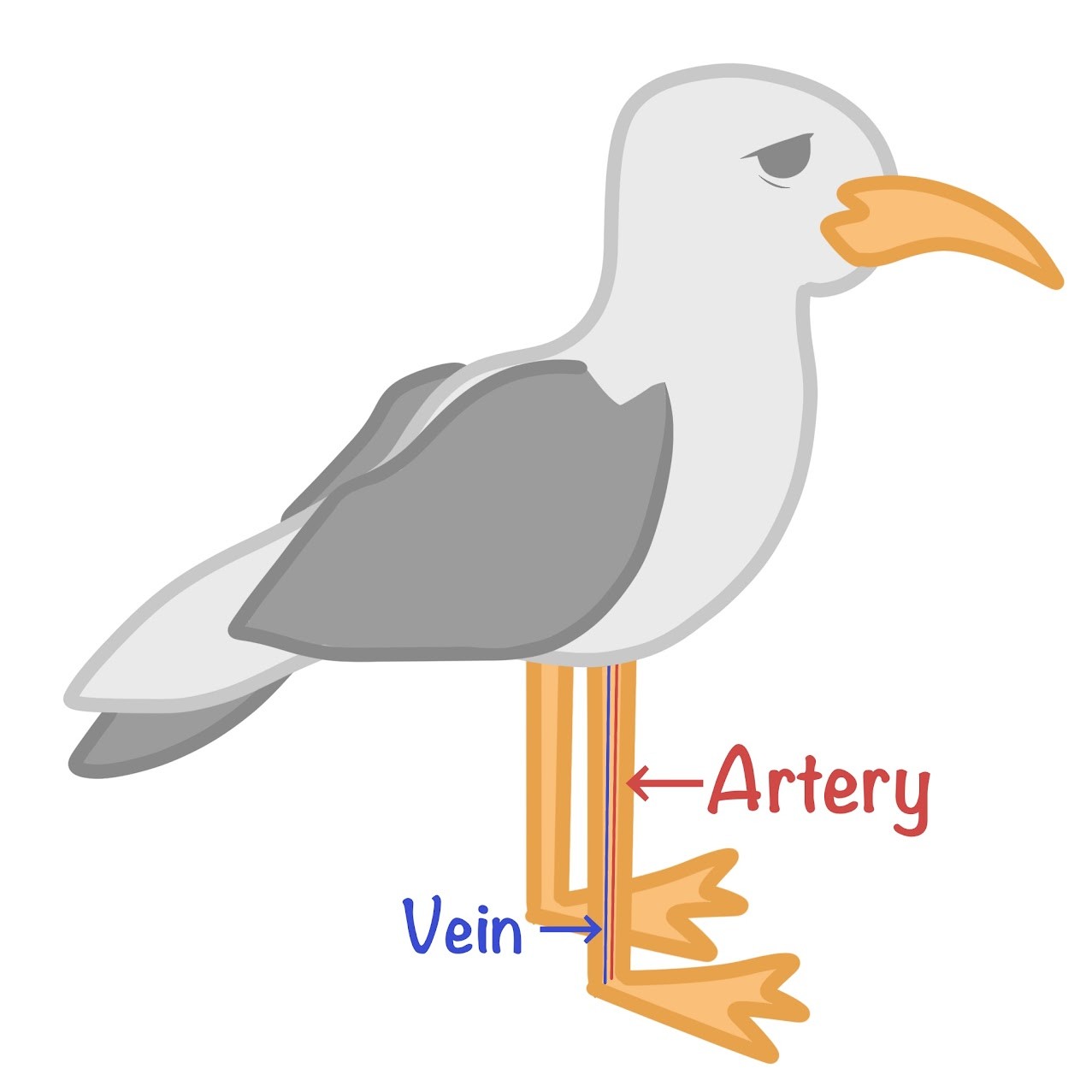
Countercurrent heat exchangers (close alignment of arteries and veins)
Examples of cooling by evaporative heat loss

Sweating, panting
Who uses behavioral responses to control body temperatures?
Both endotherms and ectotherms
Examples of behavioral responses to control body temperature
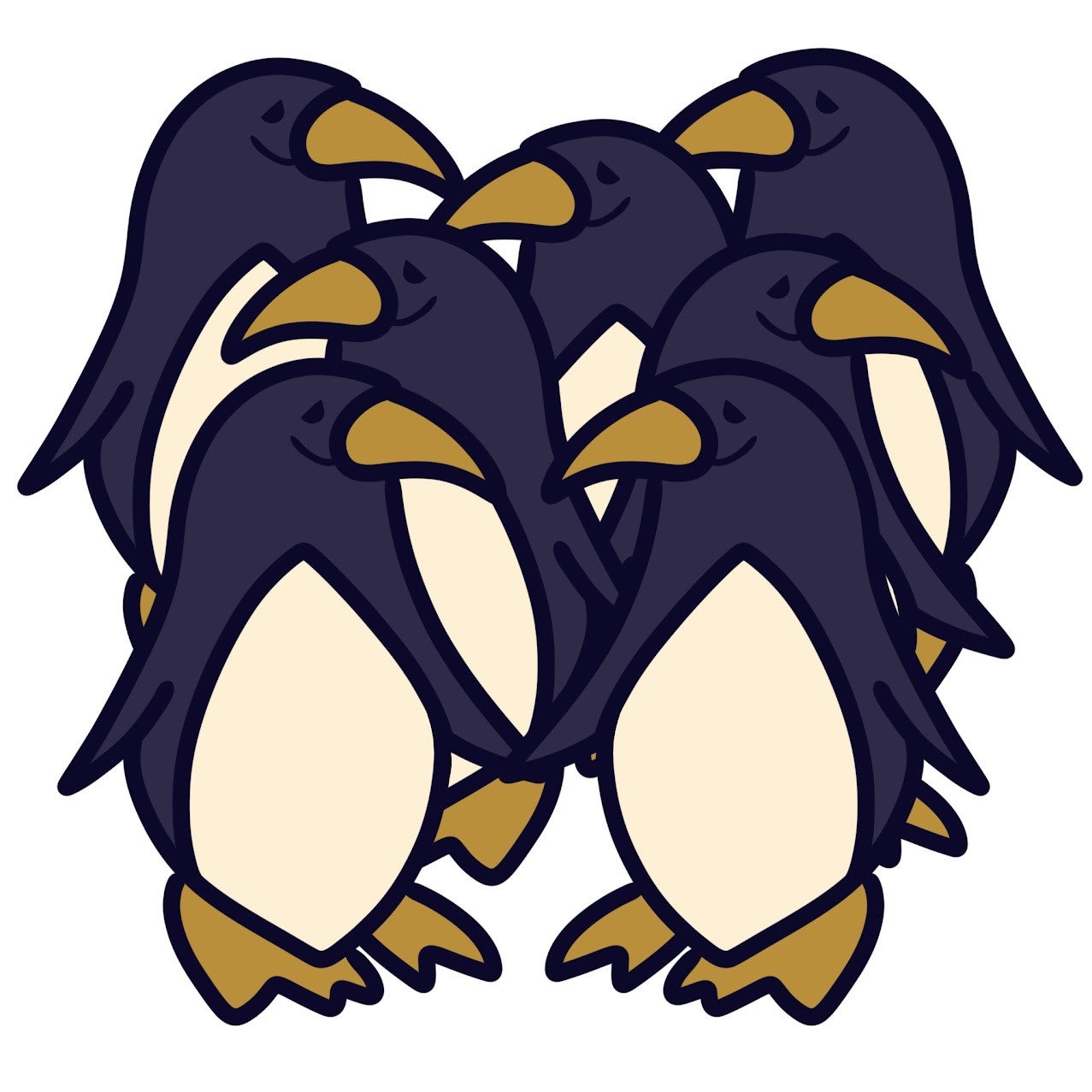
Seeking warm/cool places, balling up, huddling with other animals
How do some terrestrial invertebrates maximize/minimize absorption of solar heat?
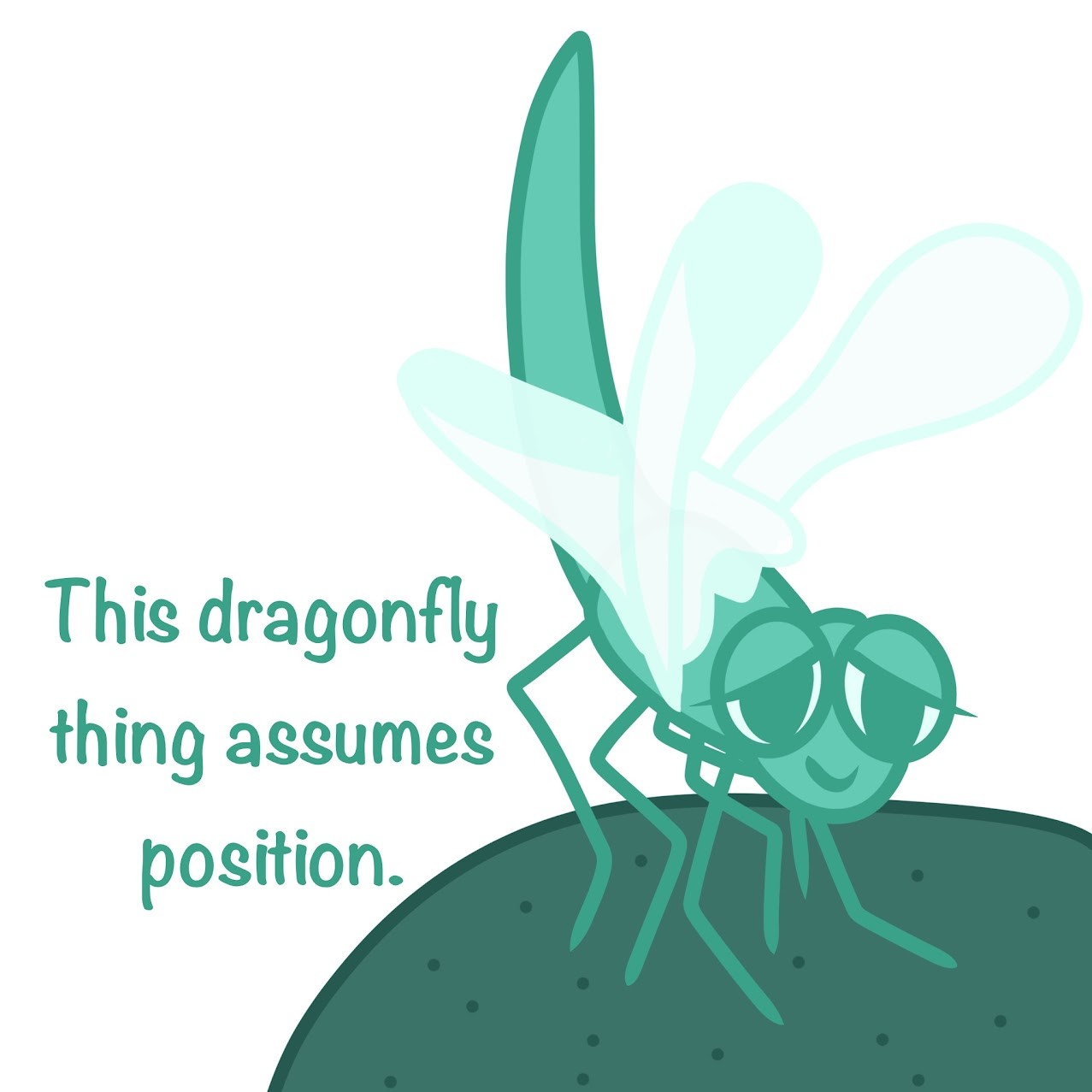
They use posture
Thermogenesis

The adjustment of metabolic heat production to maintain body temperature; increased by muscle activity
Nonshivering Thermogenesis
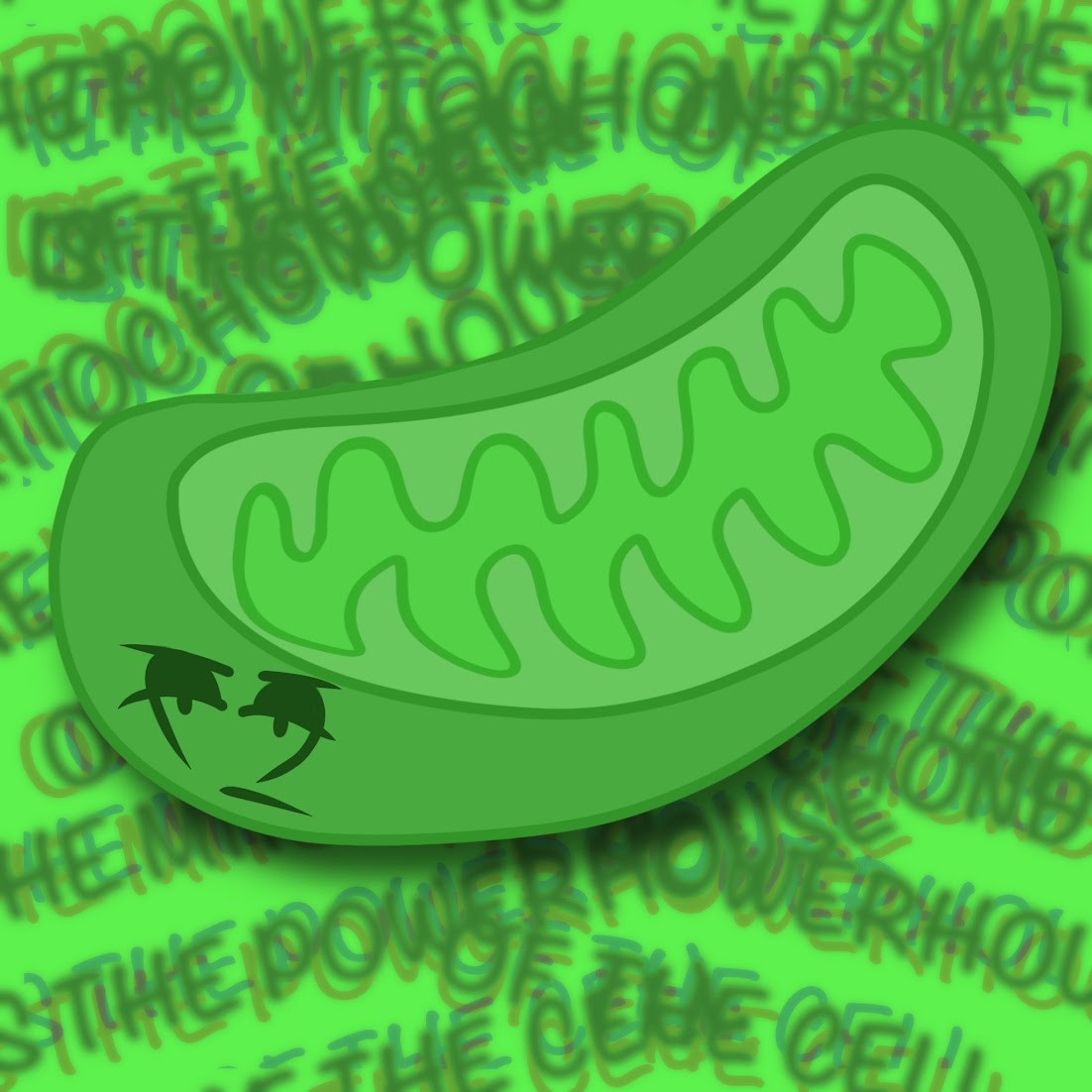
Hormones cause mitochondria to increase their metabolic activity
Some mammals have specialized tissue called _____ for rapid heat production.
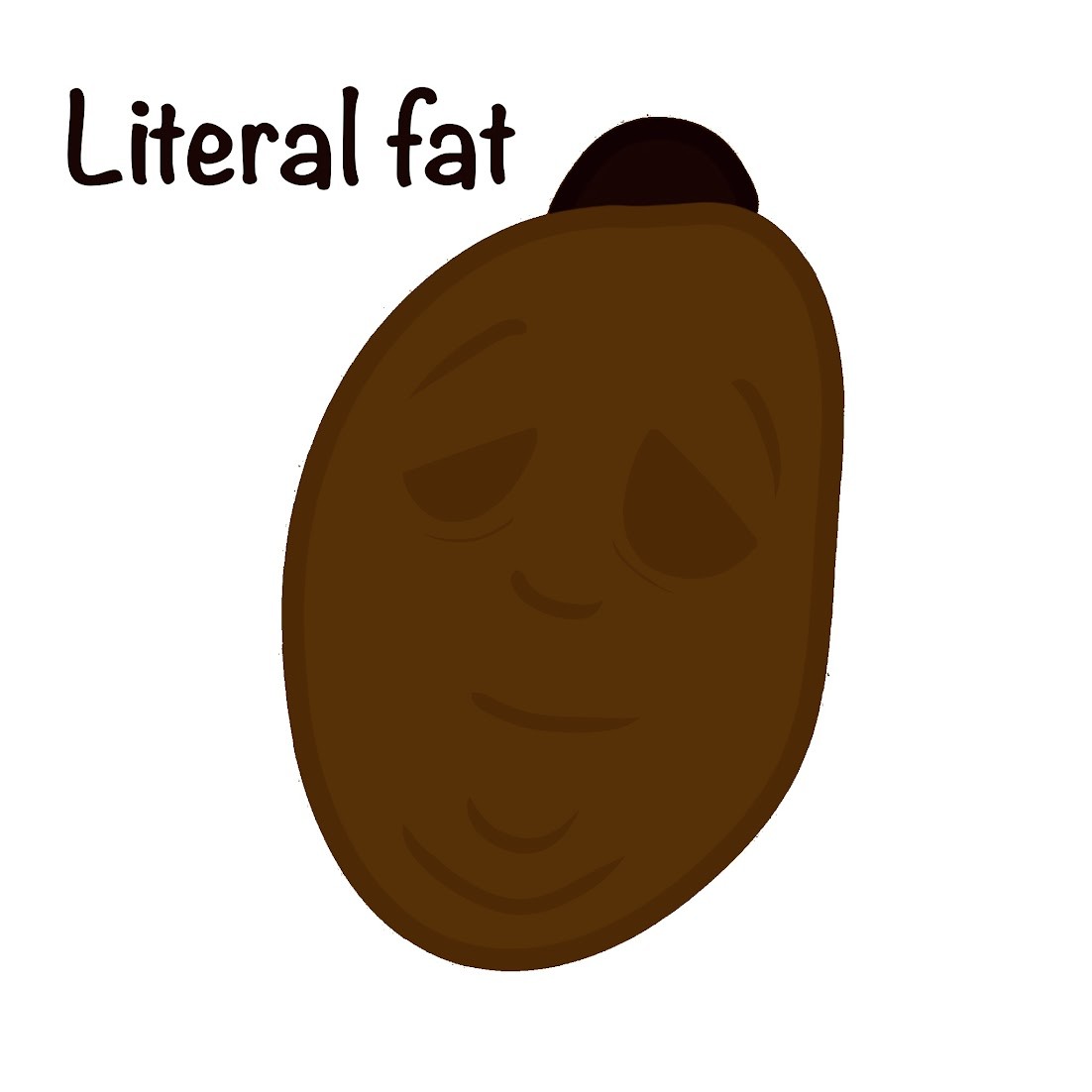
Brown fat
____ of cell membranes may change with temperature to maintain proper integrity.
Lipid composition
What do some ectotherms produce to prevent ice formation in their cells when temperatures are subzero?
"Antifreeze" compounds
Bioenergetics
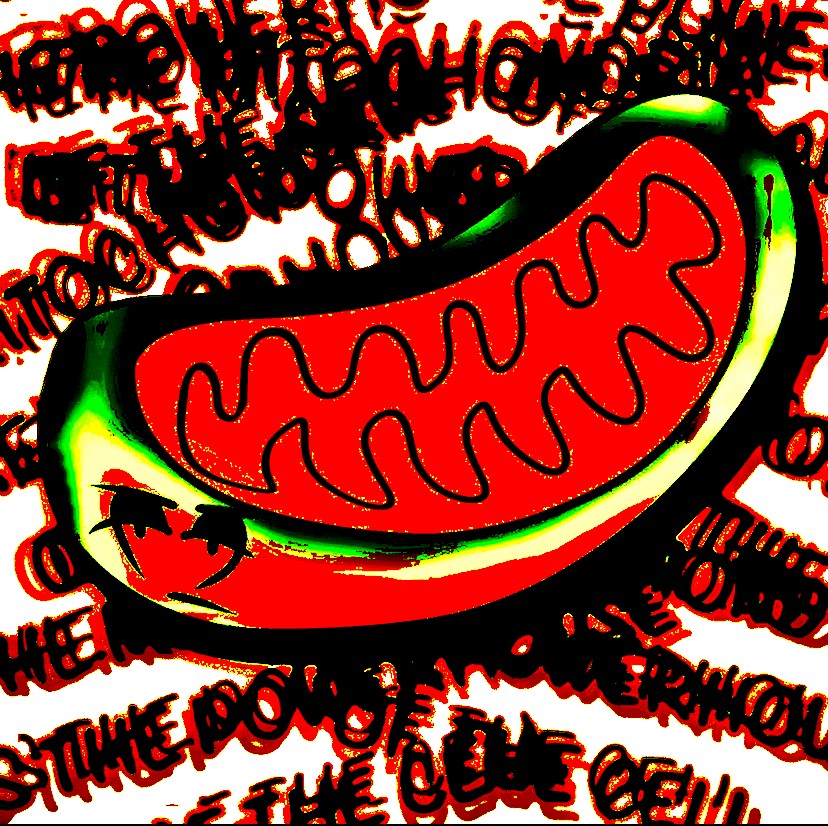
The overall flow and transformation of energy in an animal
Metabolic rate
the sum of all energy an animal uses in a unit of time
Metabolic rate can be directly determined by

An animal's heat loss
Metabolic rate can be indirectly determined by
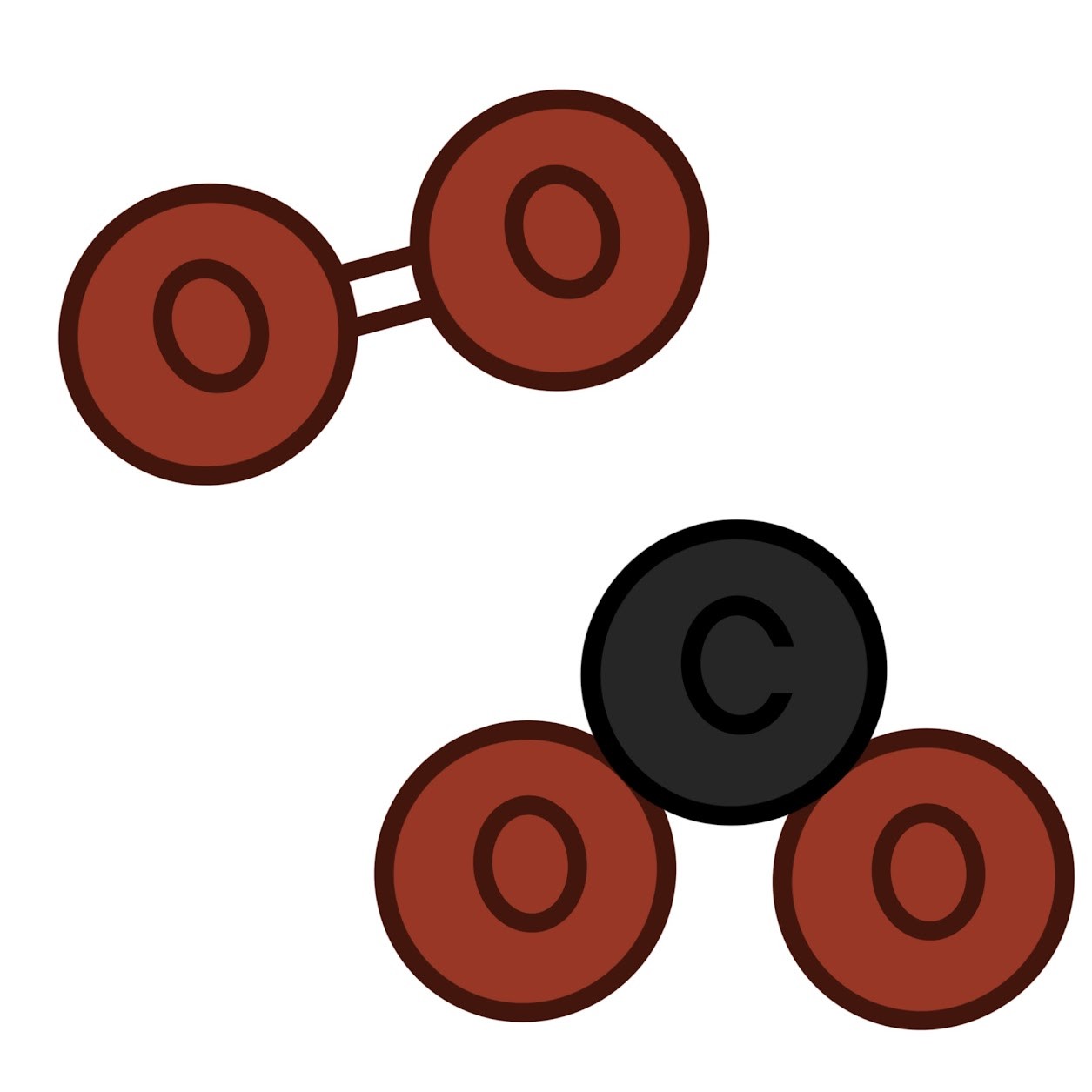
The amount of oxygen consumed or carbon dioxide produced
2 Characterizations of minimum metabolic rate (assuming a nongrowing, fasting, and nonstressed animal)
Basal metabolic rate & Standard metabolic rate
Basal Metabolic Rate (BMR)

Metabolic rate of an endotherm at rest at a "comfortable" temperature
Standard Metabolic Rate (SMR)

Metabolic rate of an ectotherm at rest at a specific temperature
Maximum Metabolic Rate (MMR)
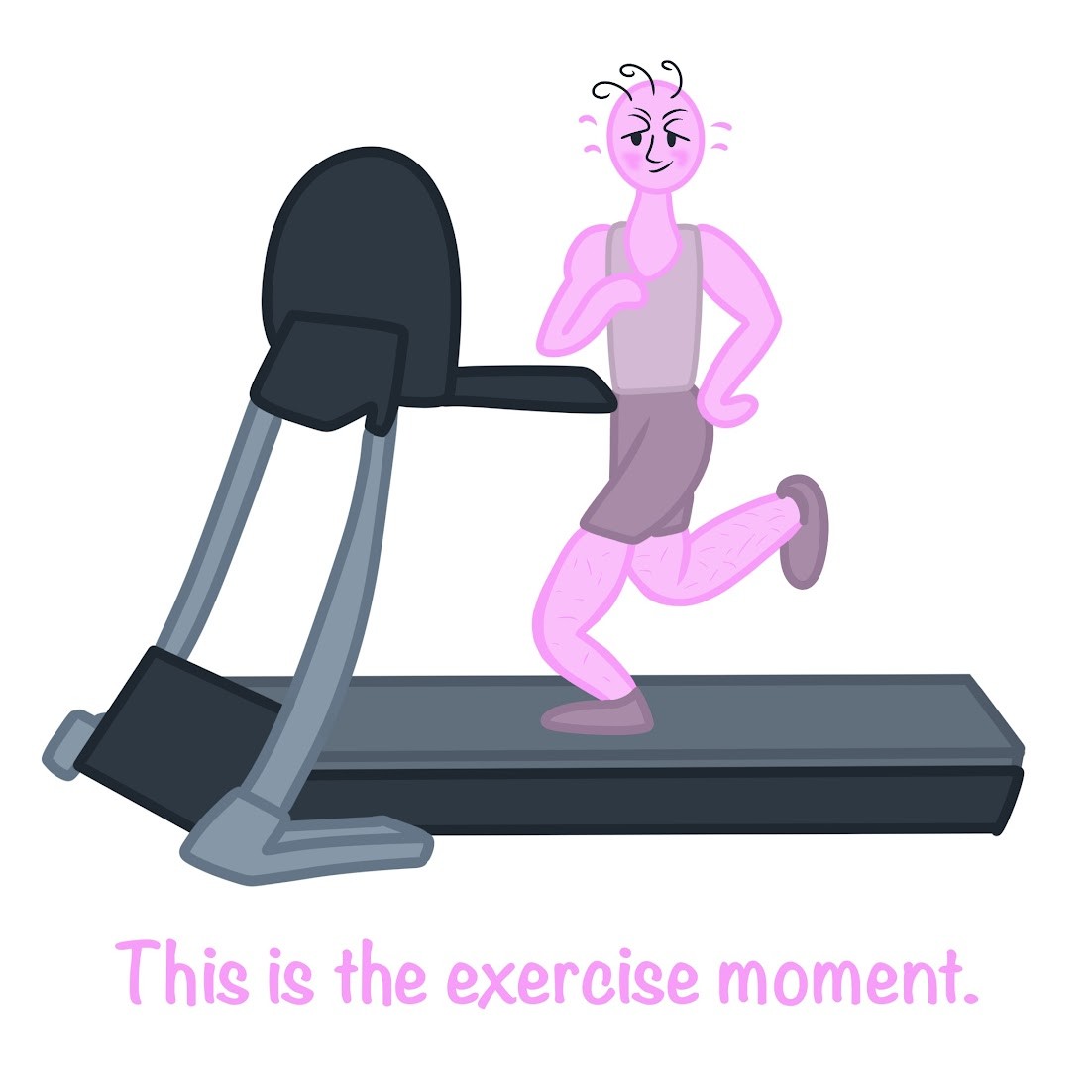
Maximum rate during a sustained period of exhaustive aerobic exercise
Metabolic rate is proportional to body mass to the power of?
The power of three quarters (m3/4)
Do smaller animals have a higher or lower metabolic rate per unit mass?
Higher
The higher metabolic rate of smaller animals leads to what compared with a larger animal?
-higher oxygen delivery rate
-higher breathing rate
-higher heart rate
-greater (relative) blood volume
Torpor
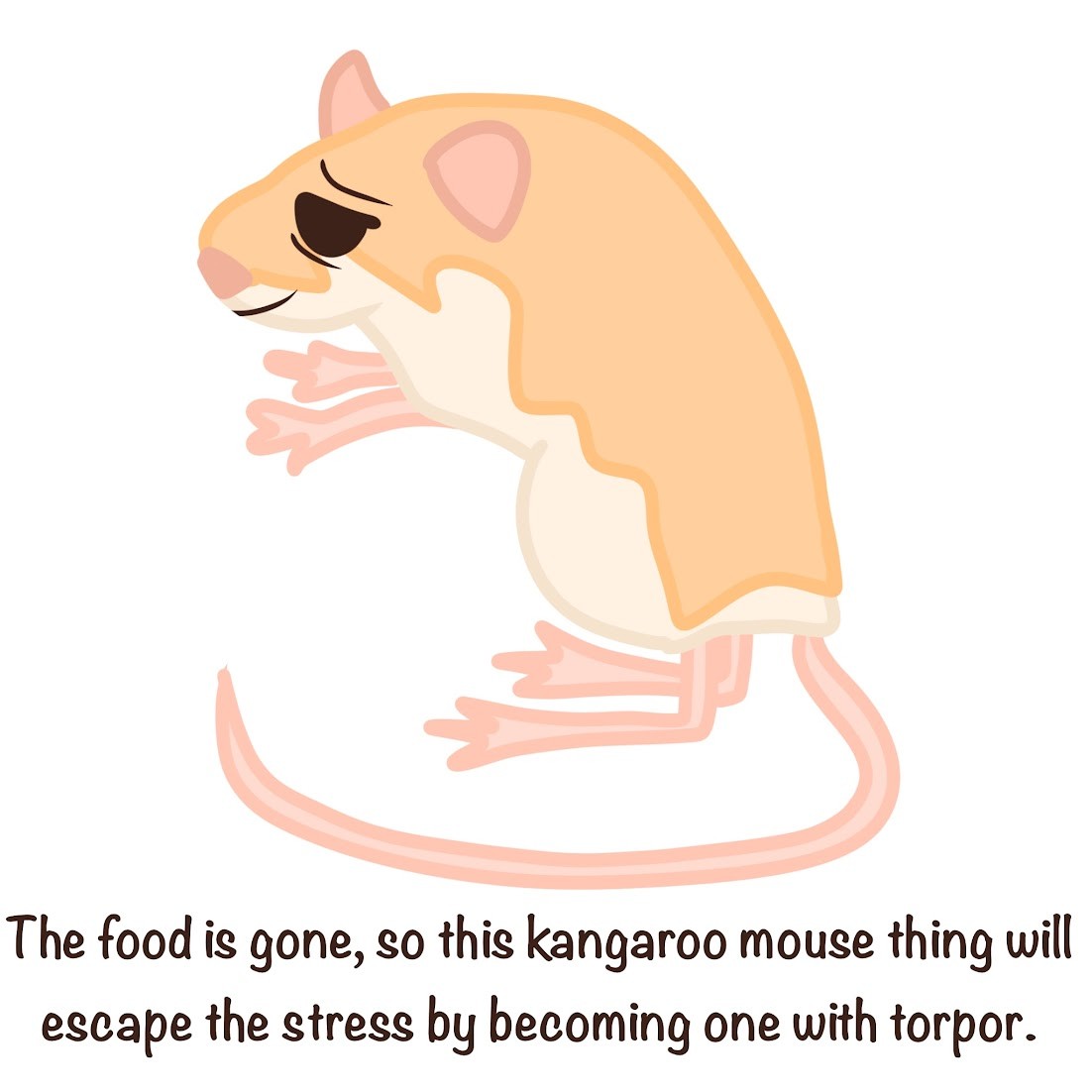
A physiological state of decreased activity and metabolism; enables animals to save energy while avoiding difficult and dangerous conditions
Hibernation
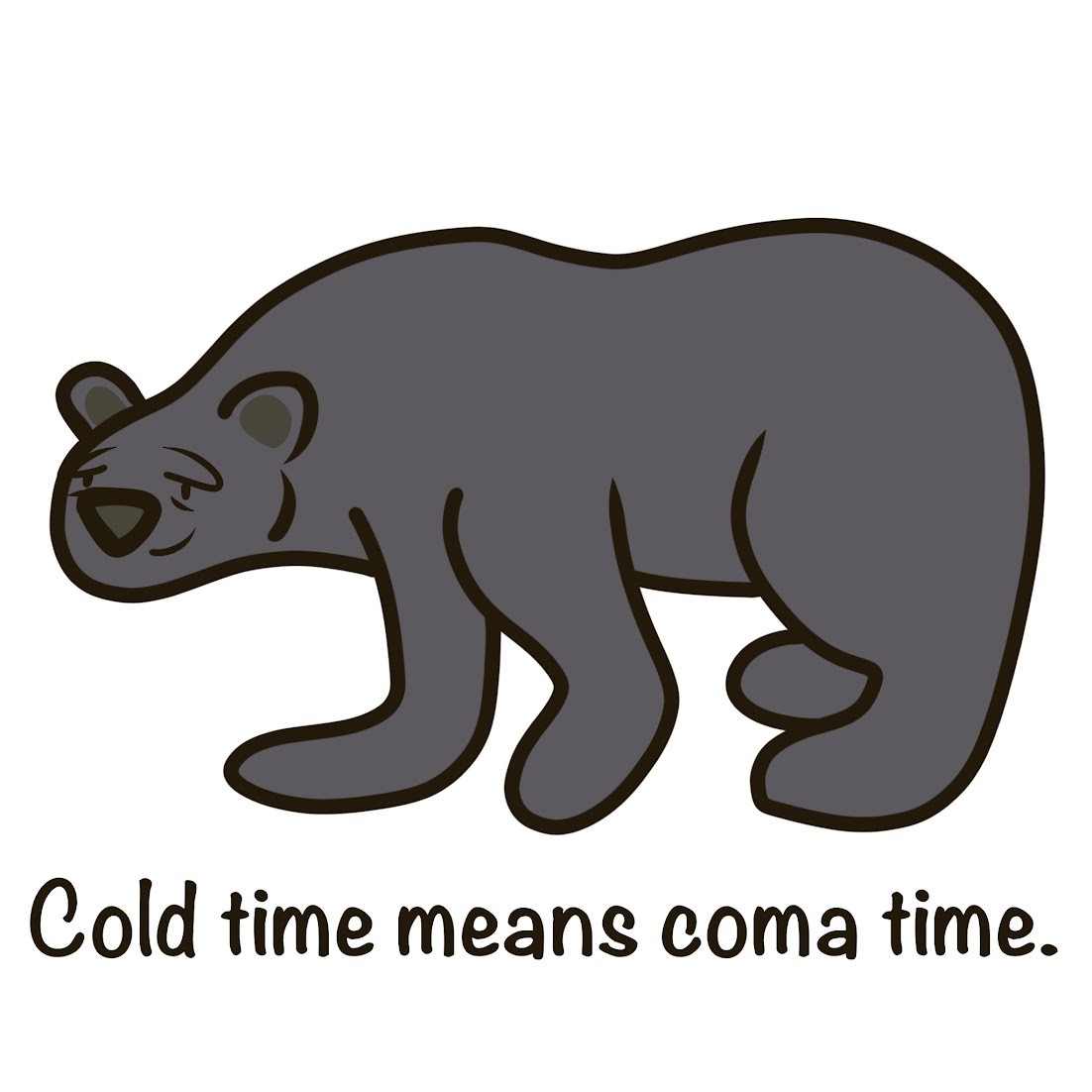
Long-term torpor that is an adaptation to winter cold and food scarcity; body temperature declines, metabolism slows, and the molecular components of the biological clock stop oscillating.
Estivation
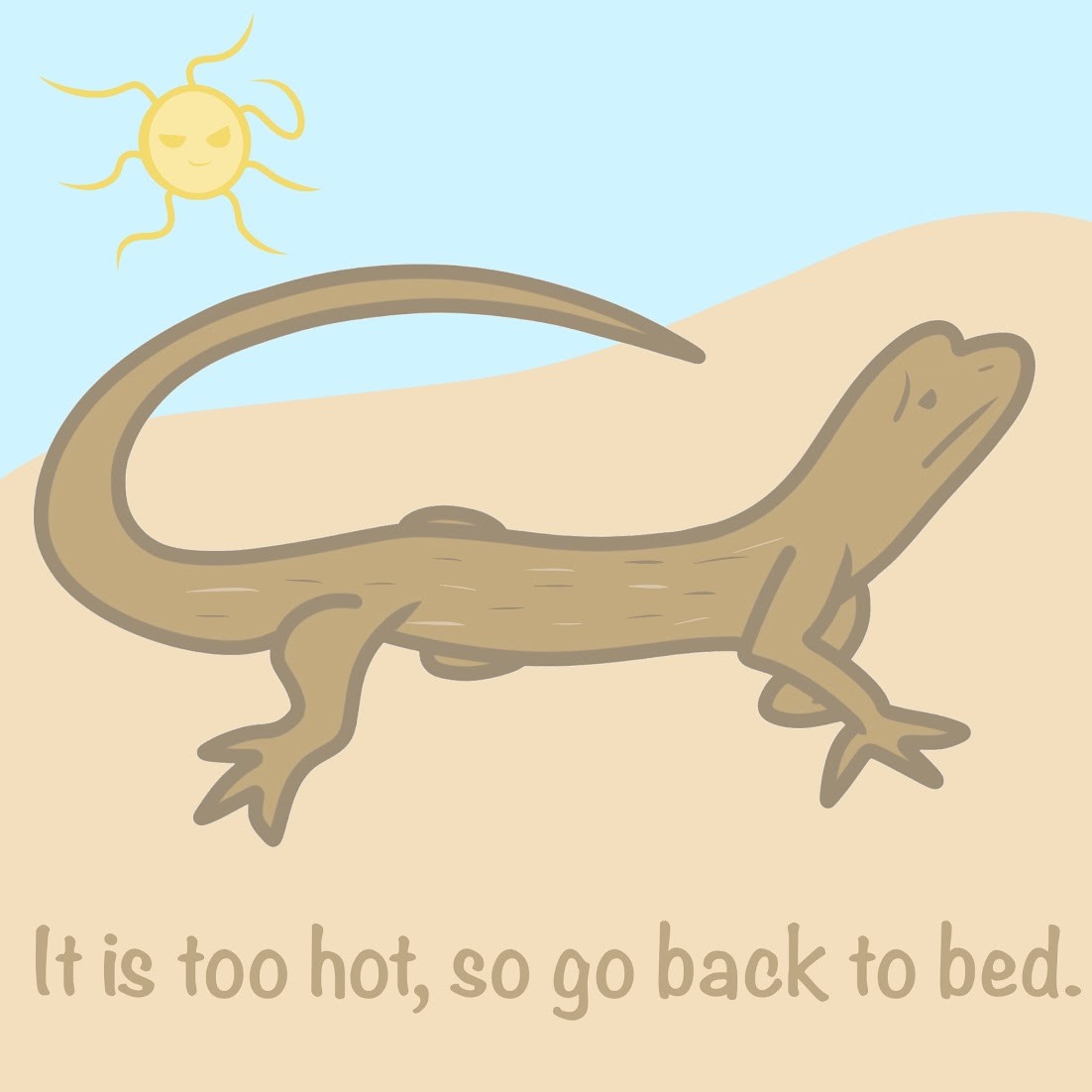
Summer Torpor, enables animals to survive long periods of high temperatures and scarce water
Daily Torpor
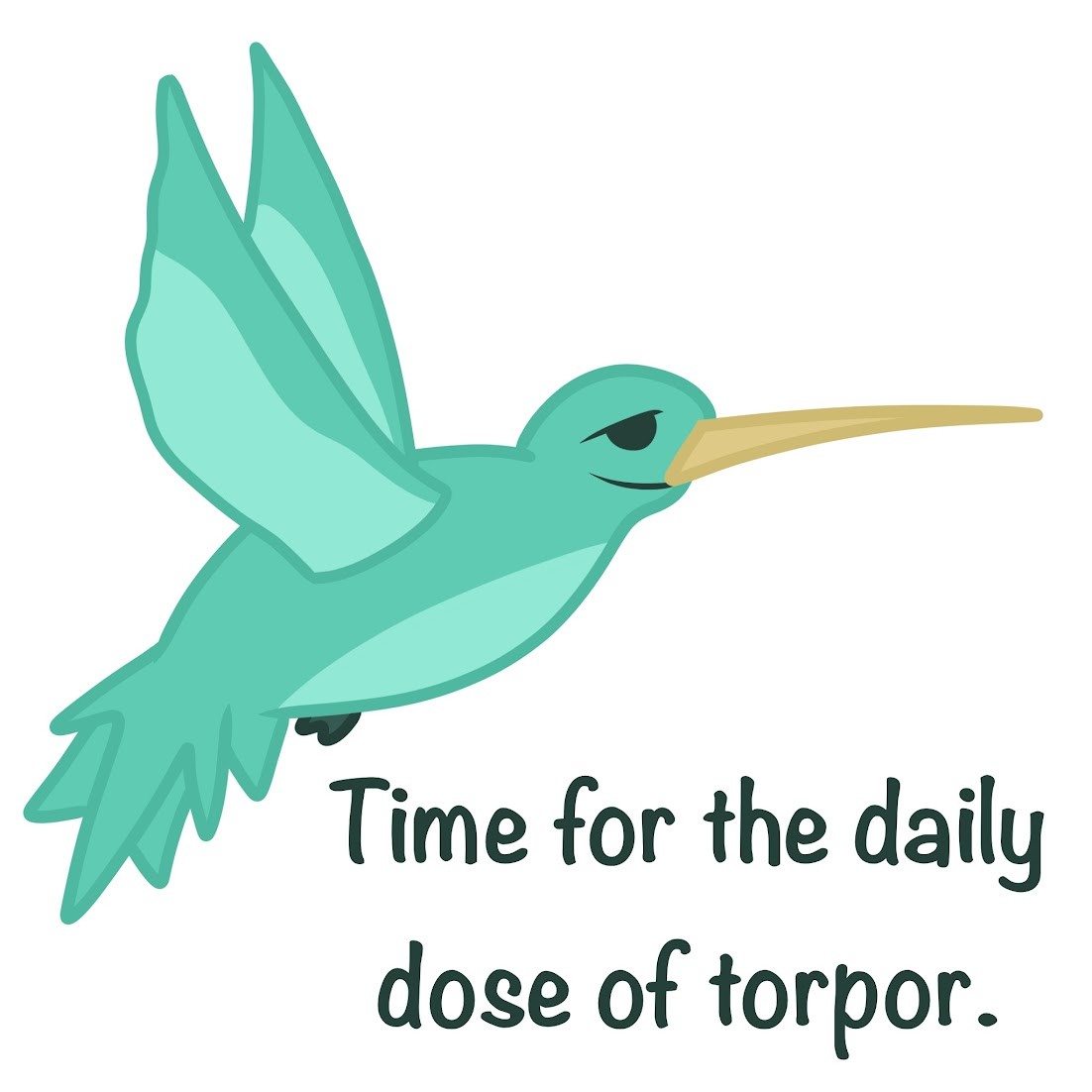
More adapted to food and water shortage, exhibited by many small mammals and birds
Nervous System
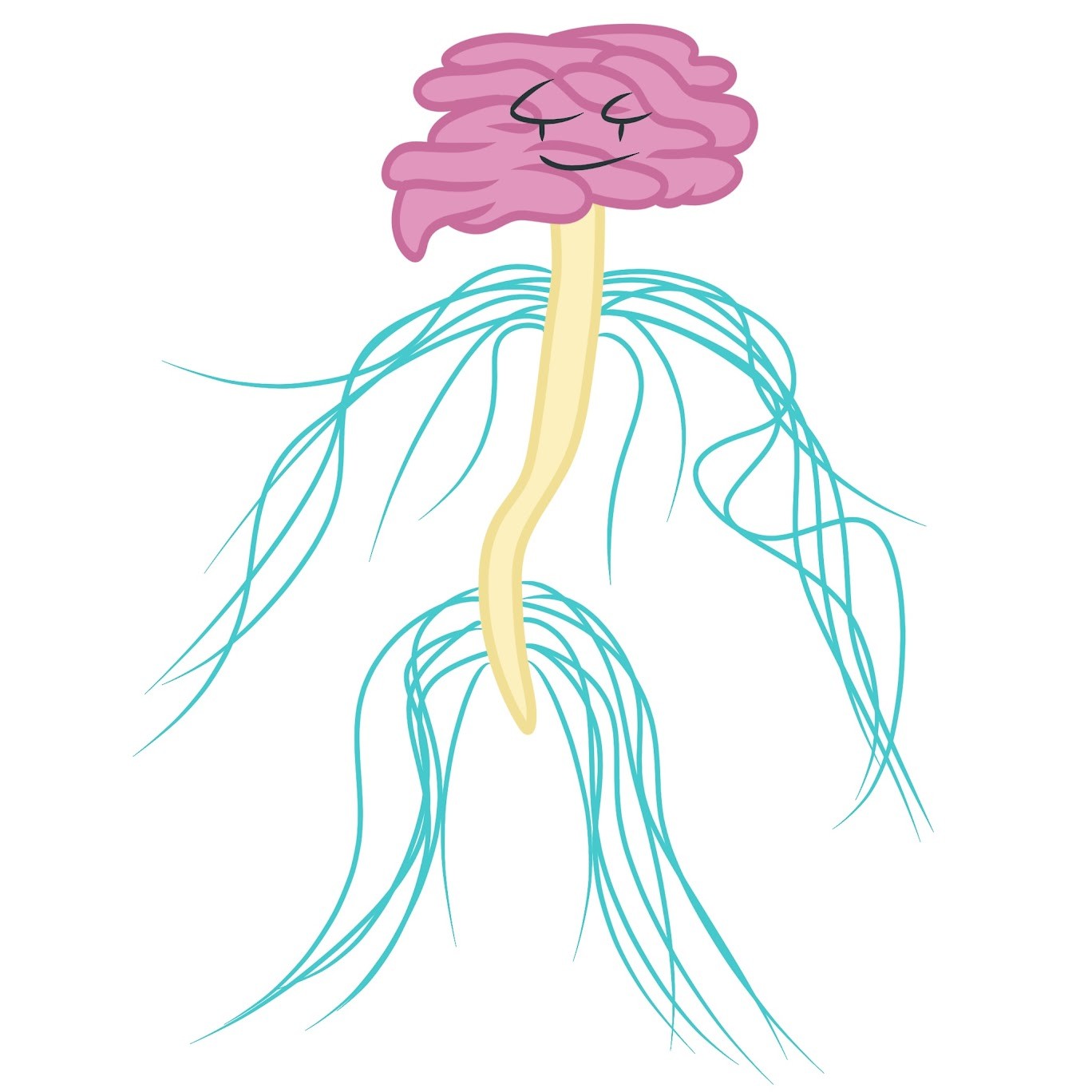
Transmits information between specific locations; processes sensory information; controls all motor output; well-suited for rapid responses
The Nervous System involves long-range _____ signals and short-range _____ signals.
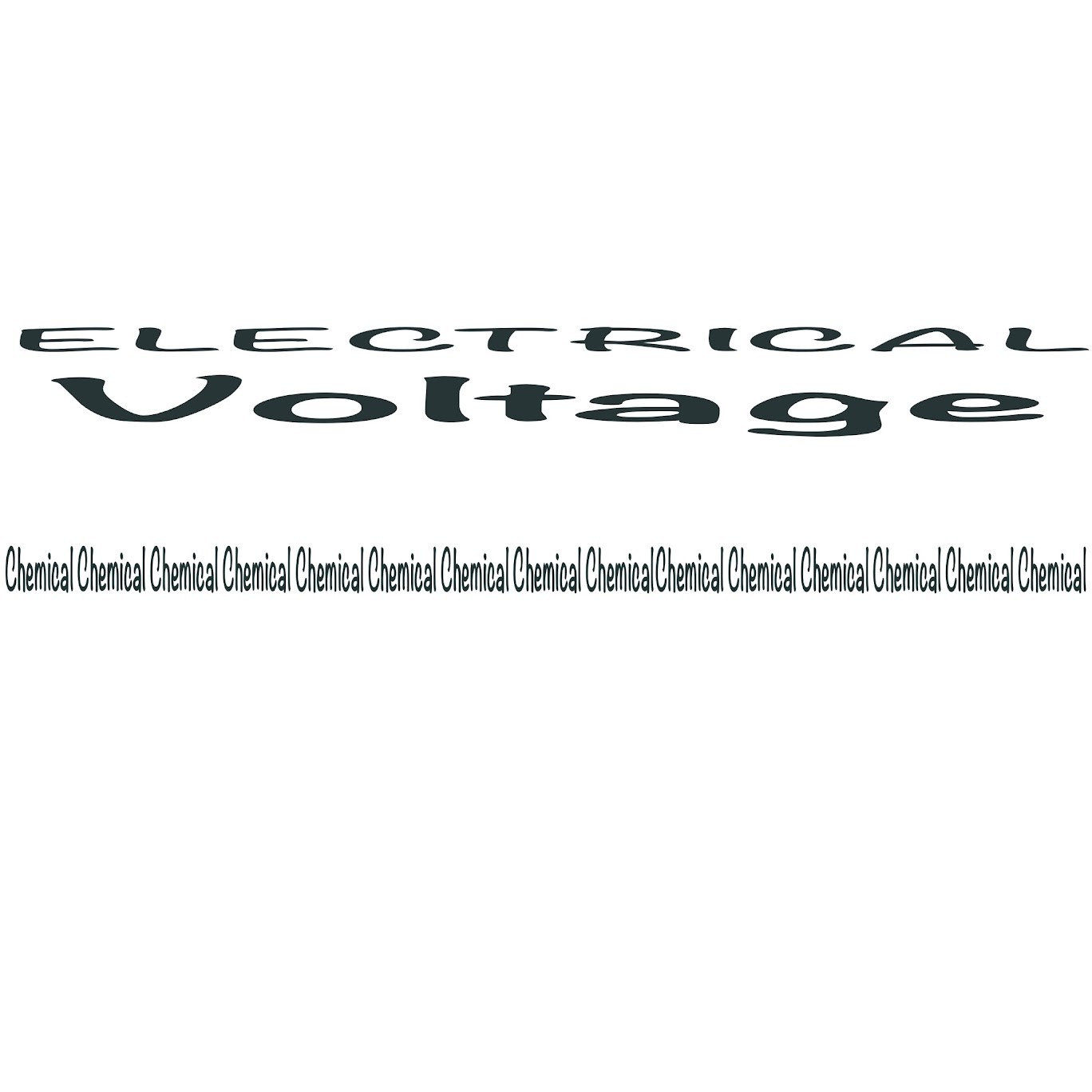
Voltage/Electrical; Chemical
The Nervous System acts on
-Other Neurons
-Muscle Cells
-Secretory glands and cells
How has the Nervous System evolved?
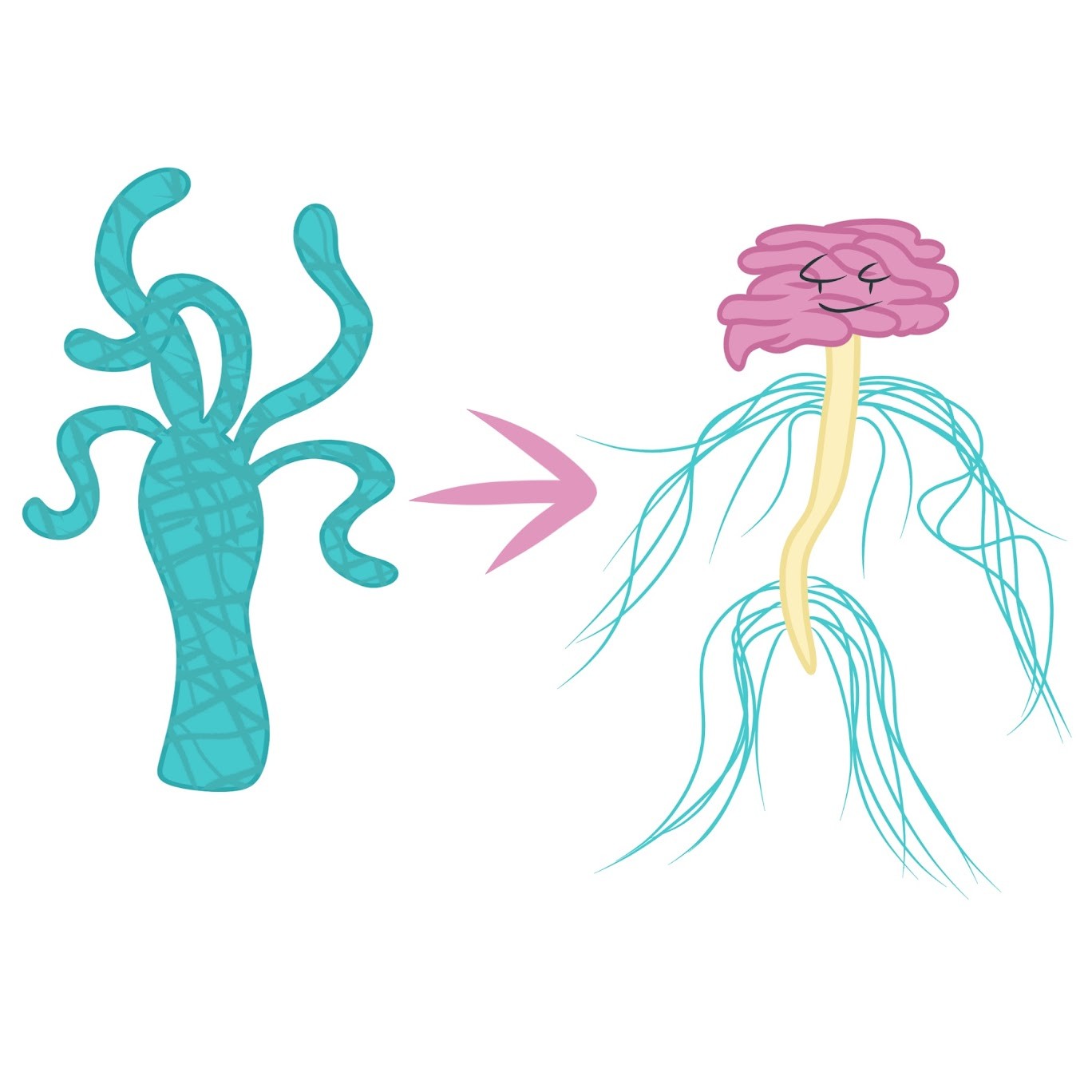
From simple, decentralized nerve nets to more complex and centralized systems with ganglia and/or brain
What reflects function in the transfer of information within the body?
Neuron structure and organization
Cell Body (Soma)
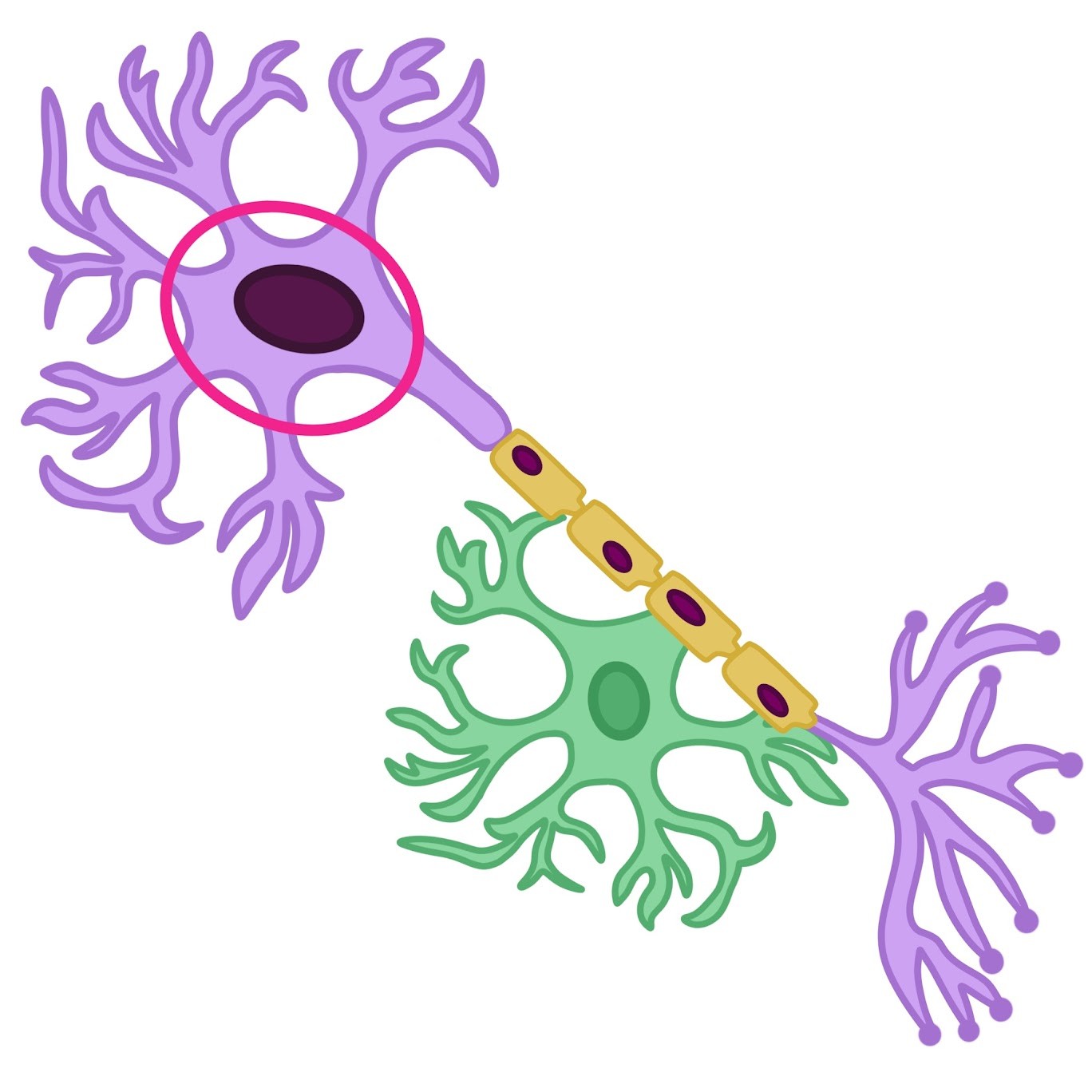
Where most of a neuron's organelles are located
Dendrites
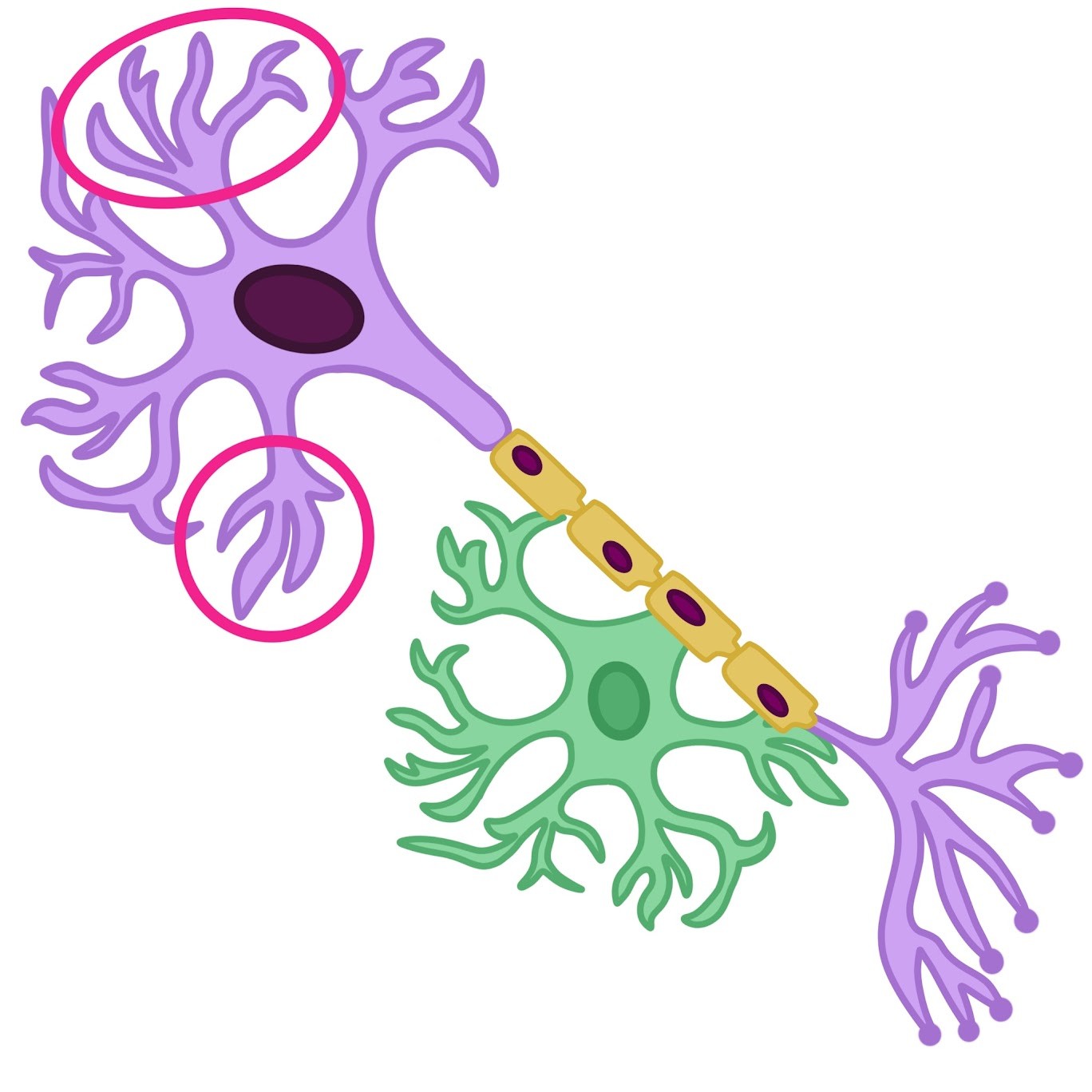
Highly branched extensions that receive signals from other neurons or sensory cells
Axon
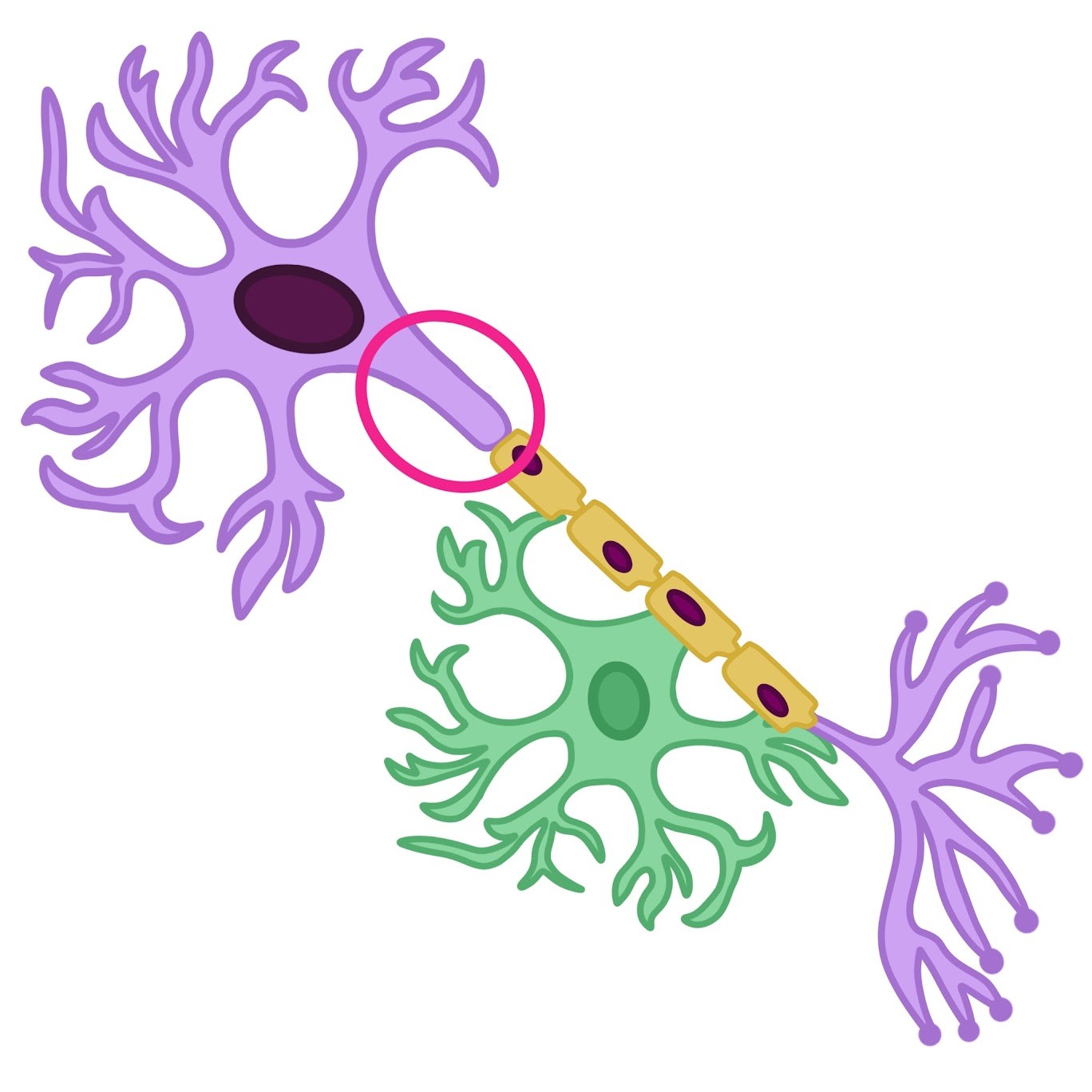
A much longer extension that transmits signals to other cells at synapses
Axon Hillock
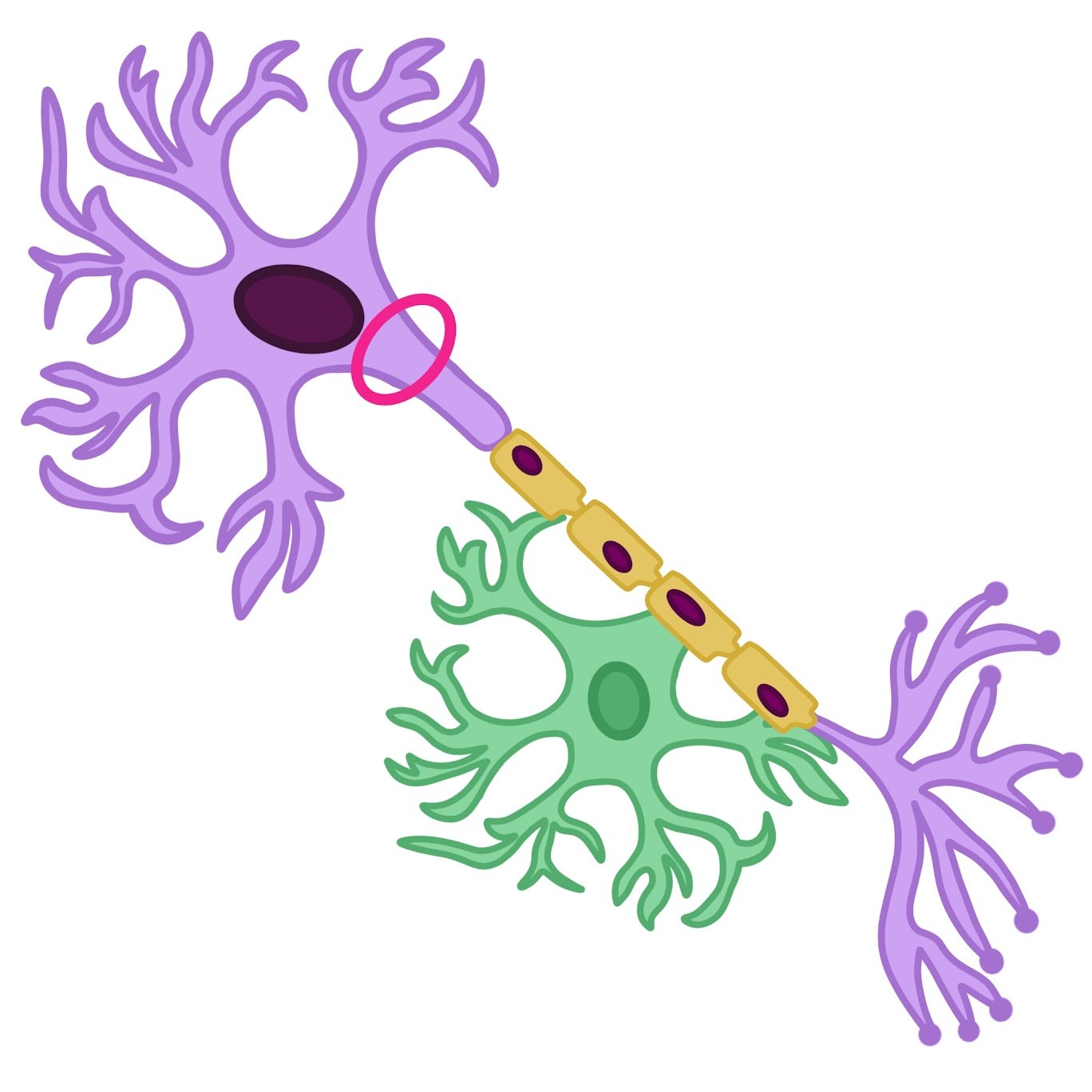
Cone-shaped base of an axon
Myelin Sheath & Nodes of Ranvier
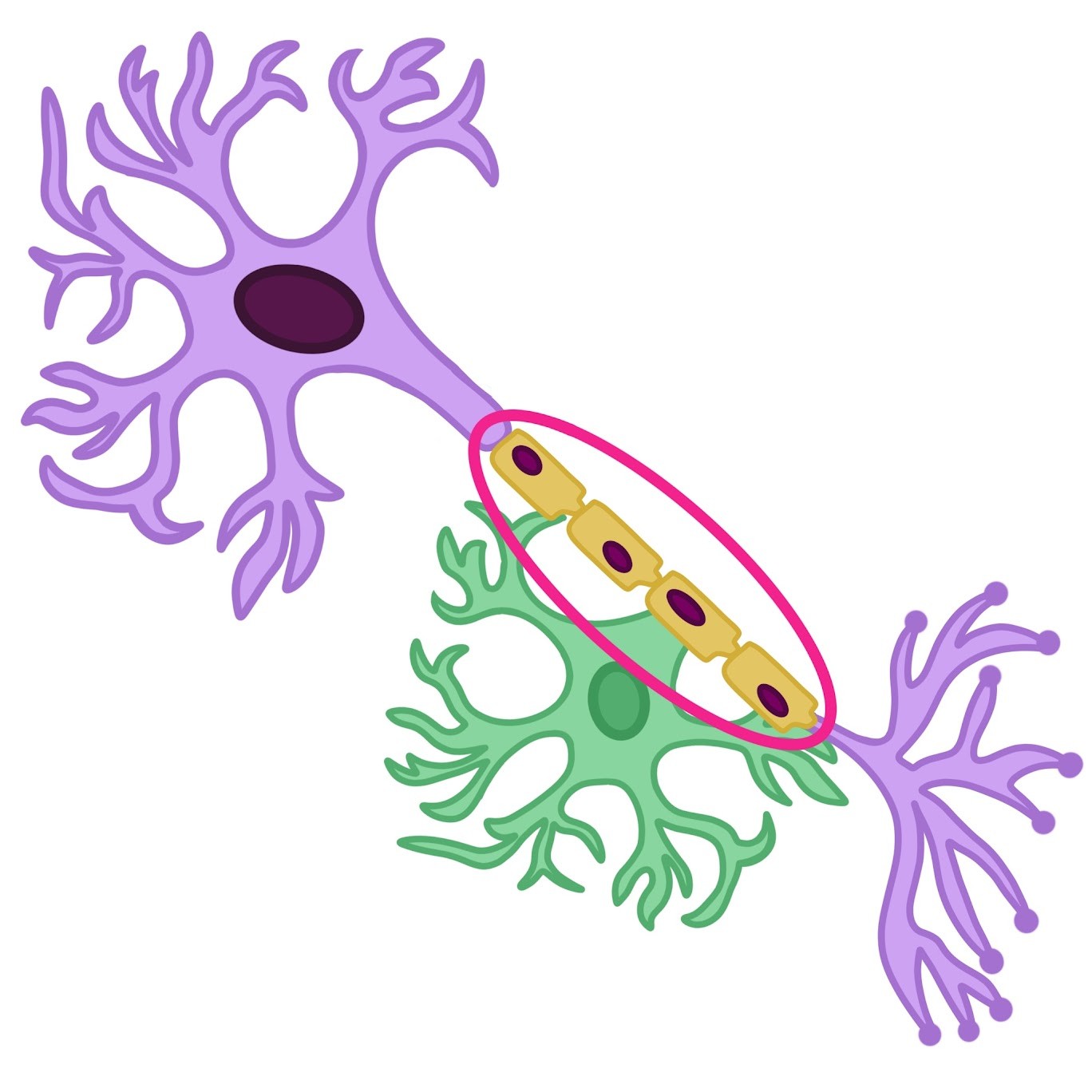
Facilitate rapid transfer of electrical signal down the axon
What is myelin sheath produced by?
Glial cells
Synapse
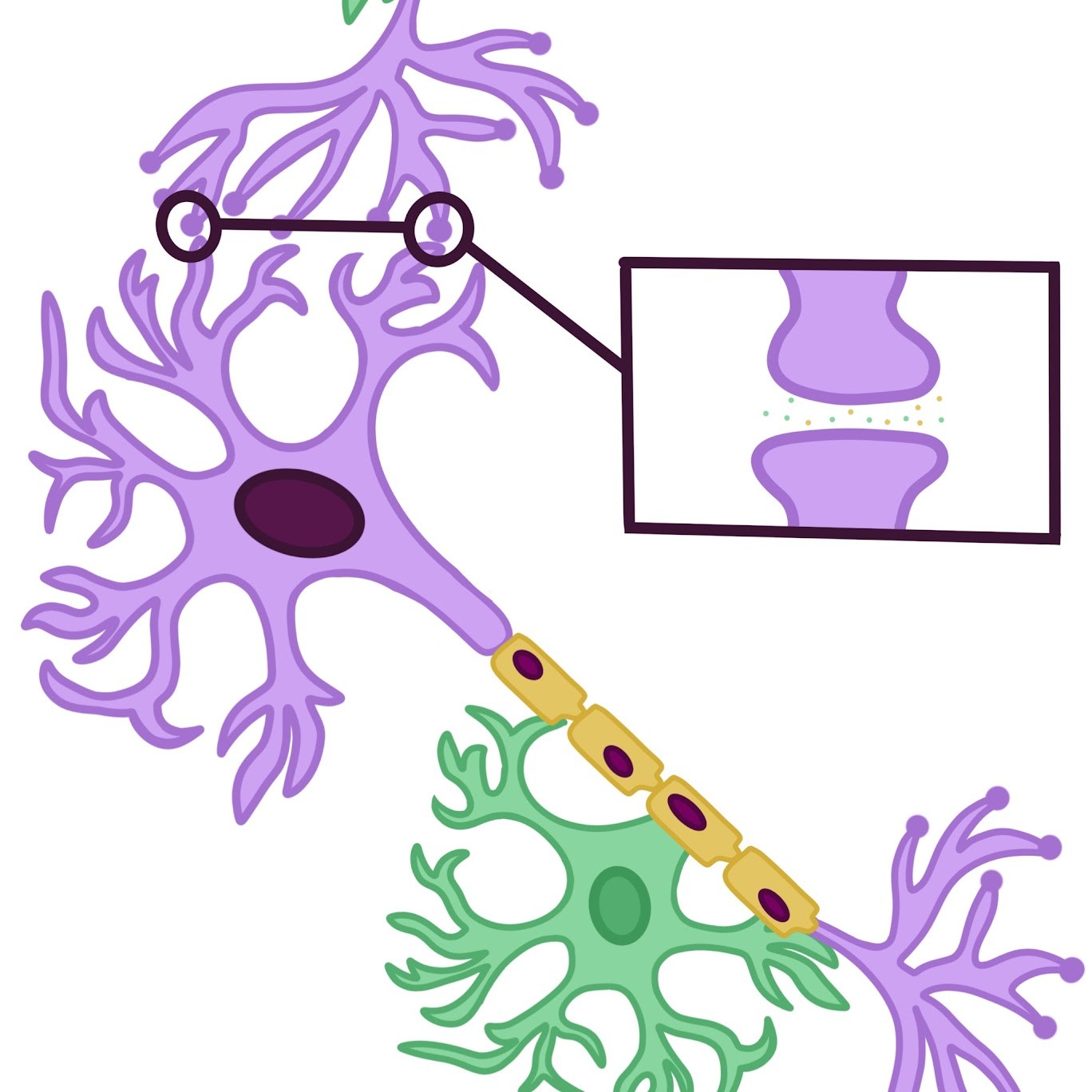
Junction between an axon and another cell
Synaptic Terminal
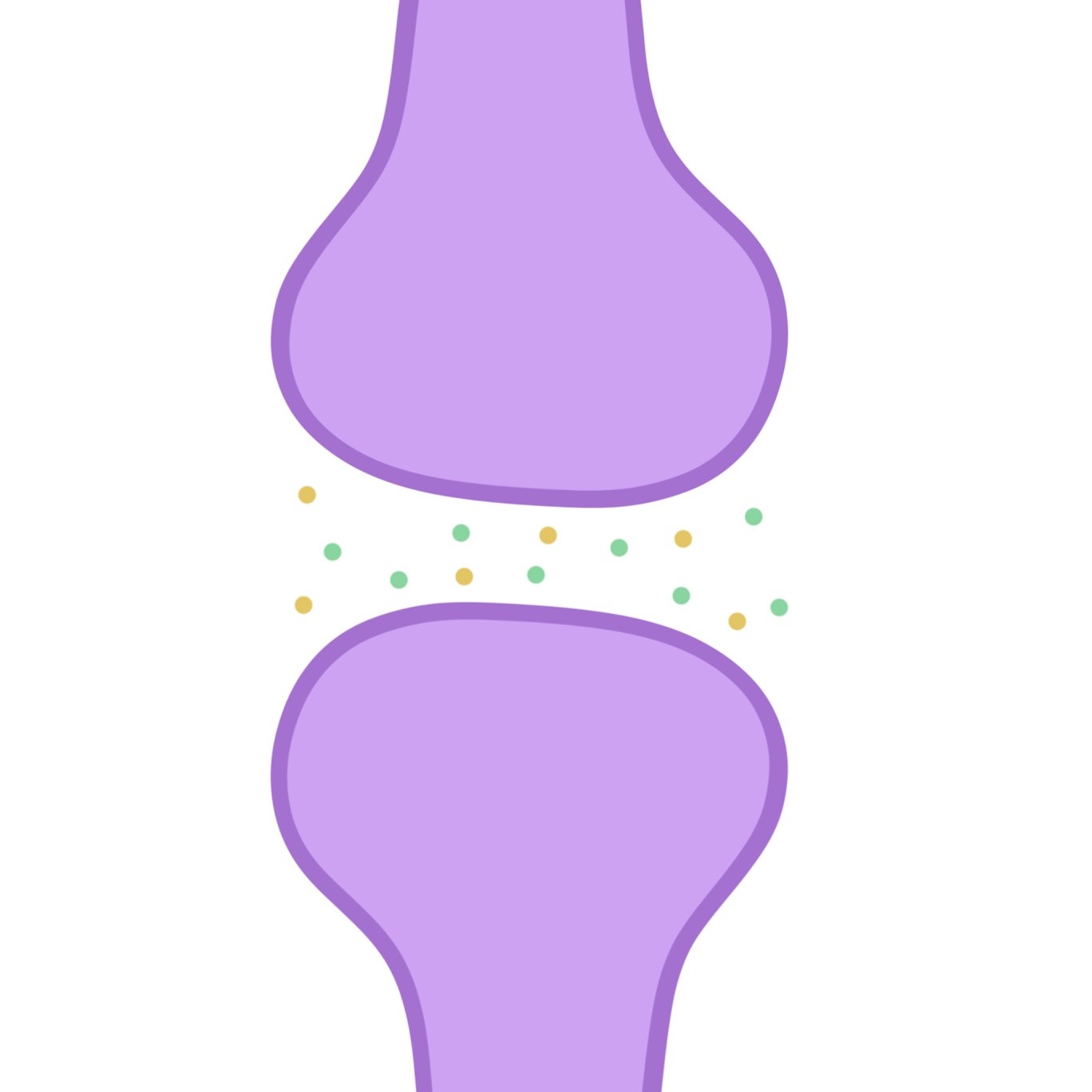
Passes information across the synapse in the form of neurotransmitters (chemical messengers)
Information is transmitted from a ____ cell (neuron) to a _____ cell (a neuron, muscle, or gland cell)
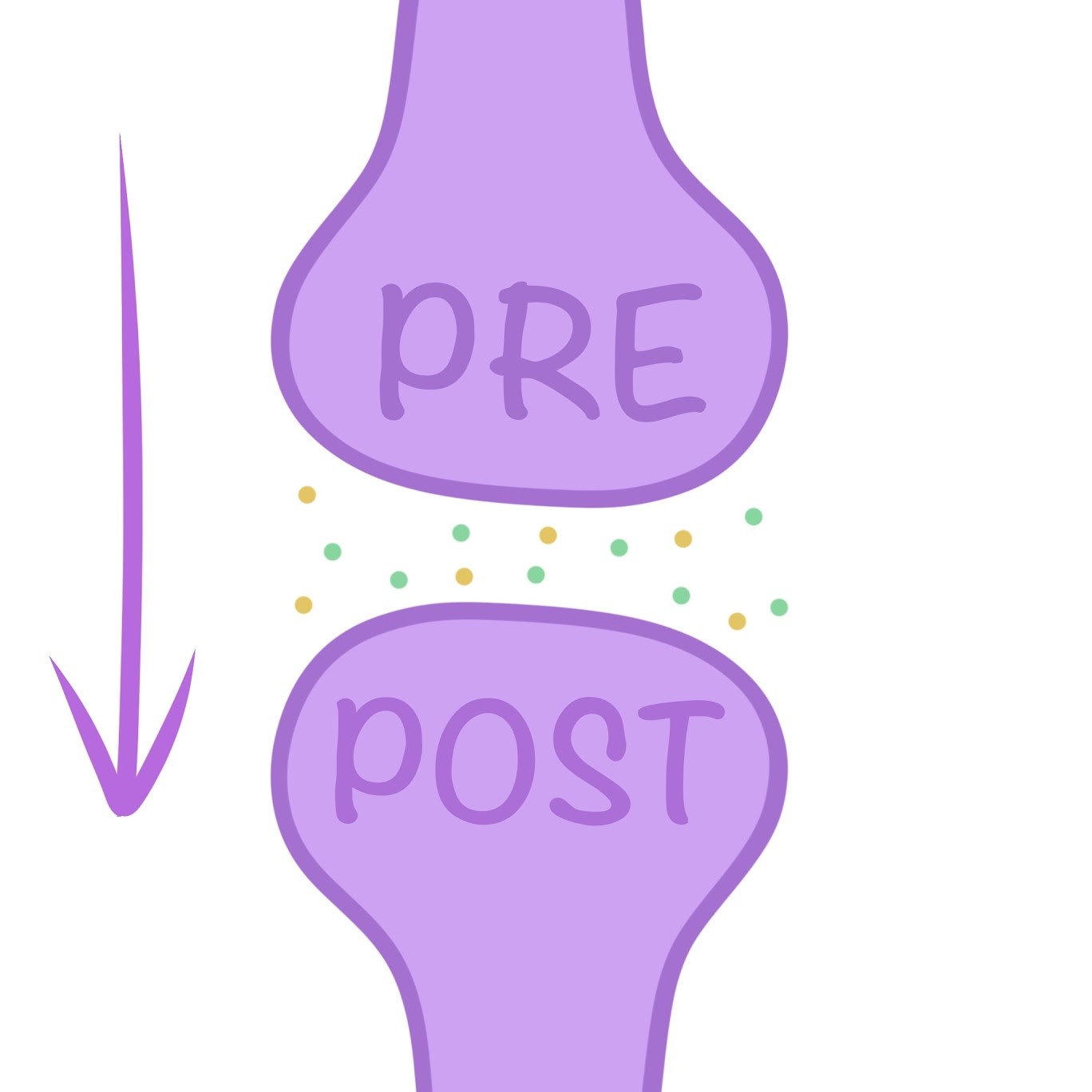
Presynaptic; Postsynaptic
Ependymal Cell
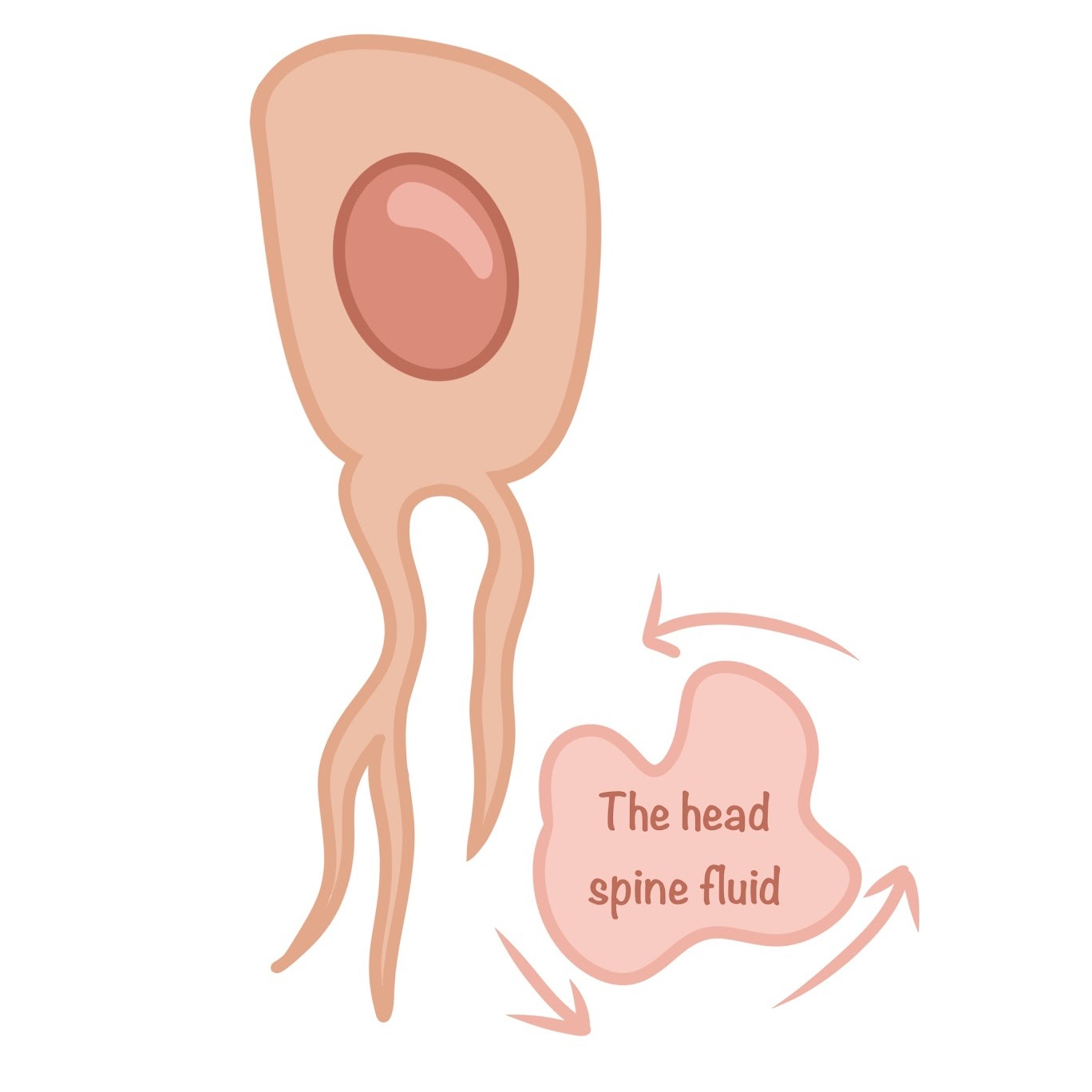
Promotes circulation of cerebrospinal fluid
Astrocytes
-Facilitates information transfer
-Regulates EC ion concentration
-Promotes blood flow
-Forms blood-brain barrier
-Act as stem cells
Oligodendrocytes
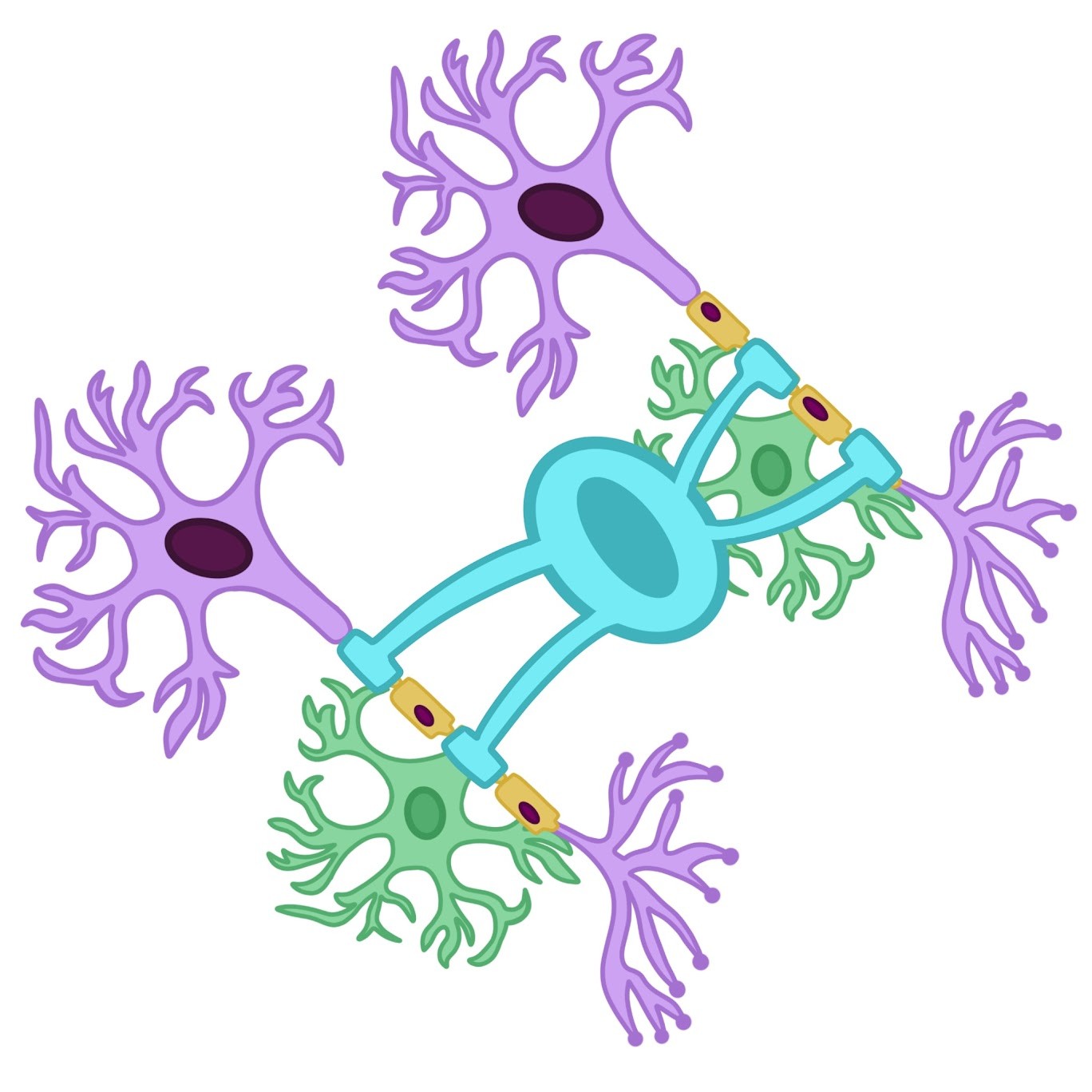
Myelinate axons in the CNS
Microglia
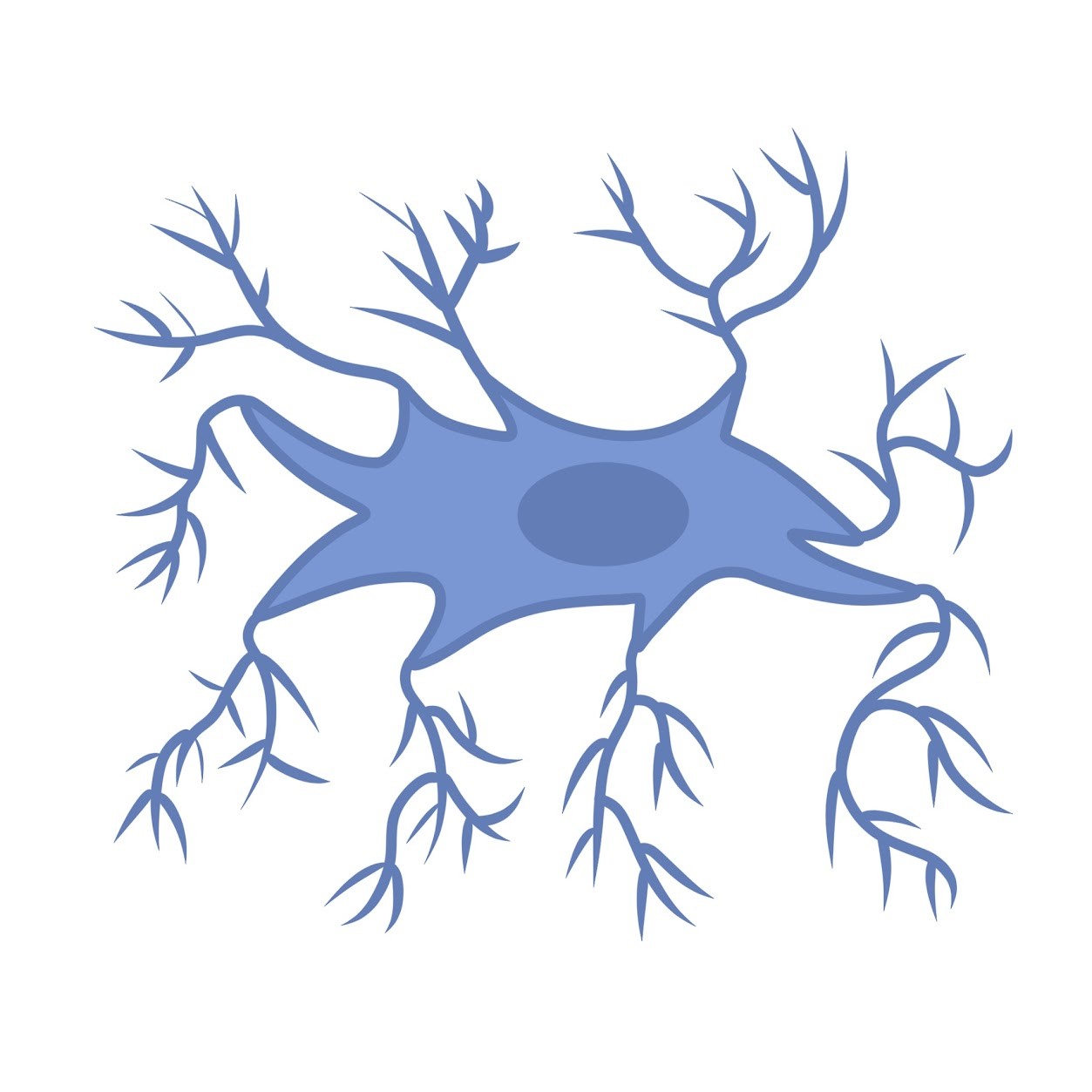
Immune cells that protect the CNS
Schwann Cells
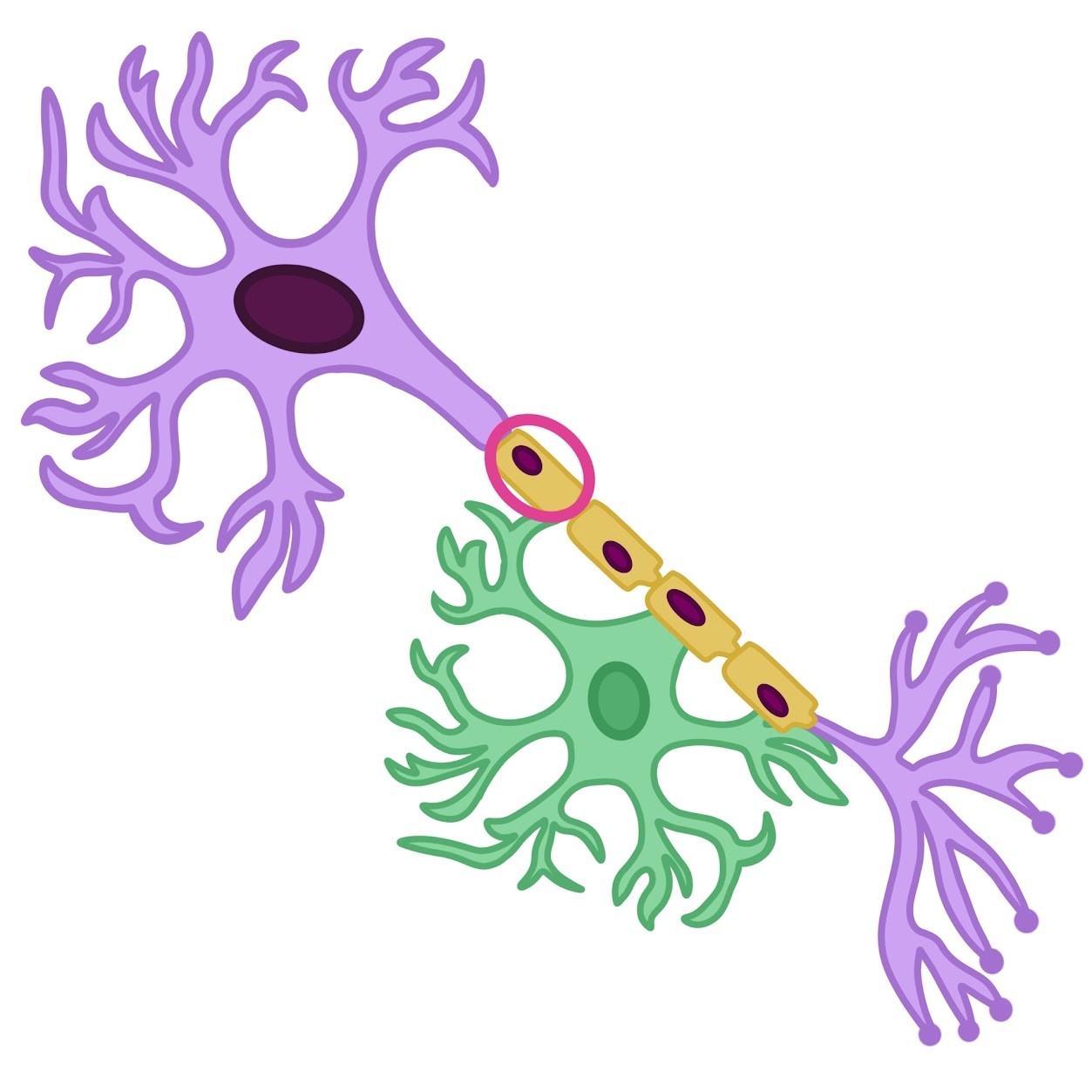
Myelinate axons in the PNS
Satellite Glia
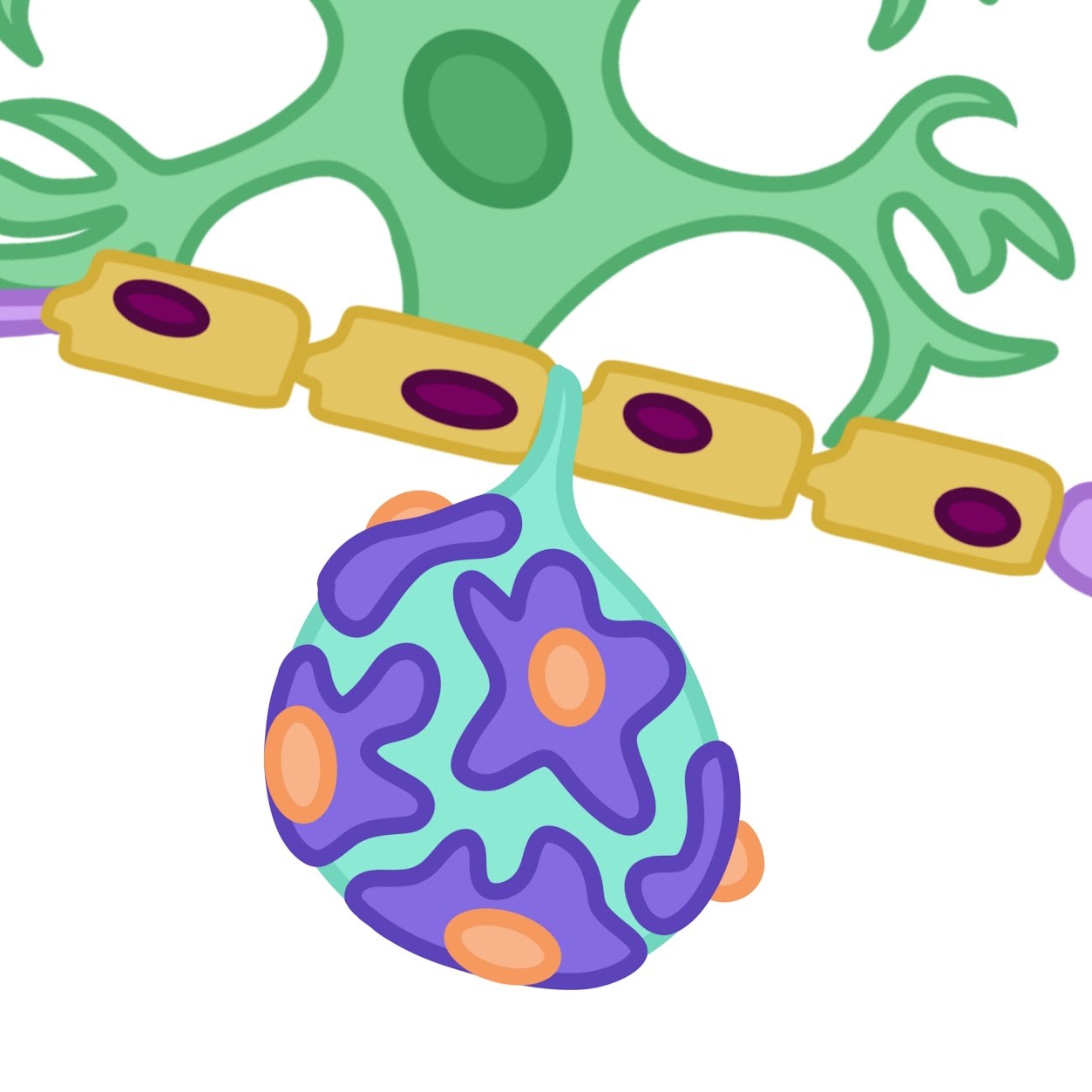
Provide nutrients and structural support to neurons in the PNS
3 stages of information processing
Sensory input, integration, motor output
1st step of information processing
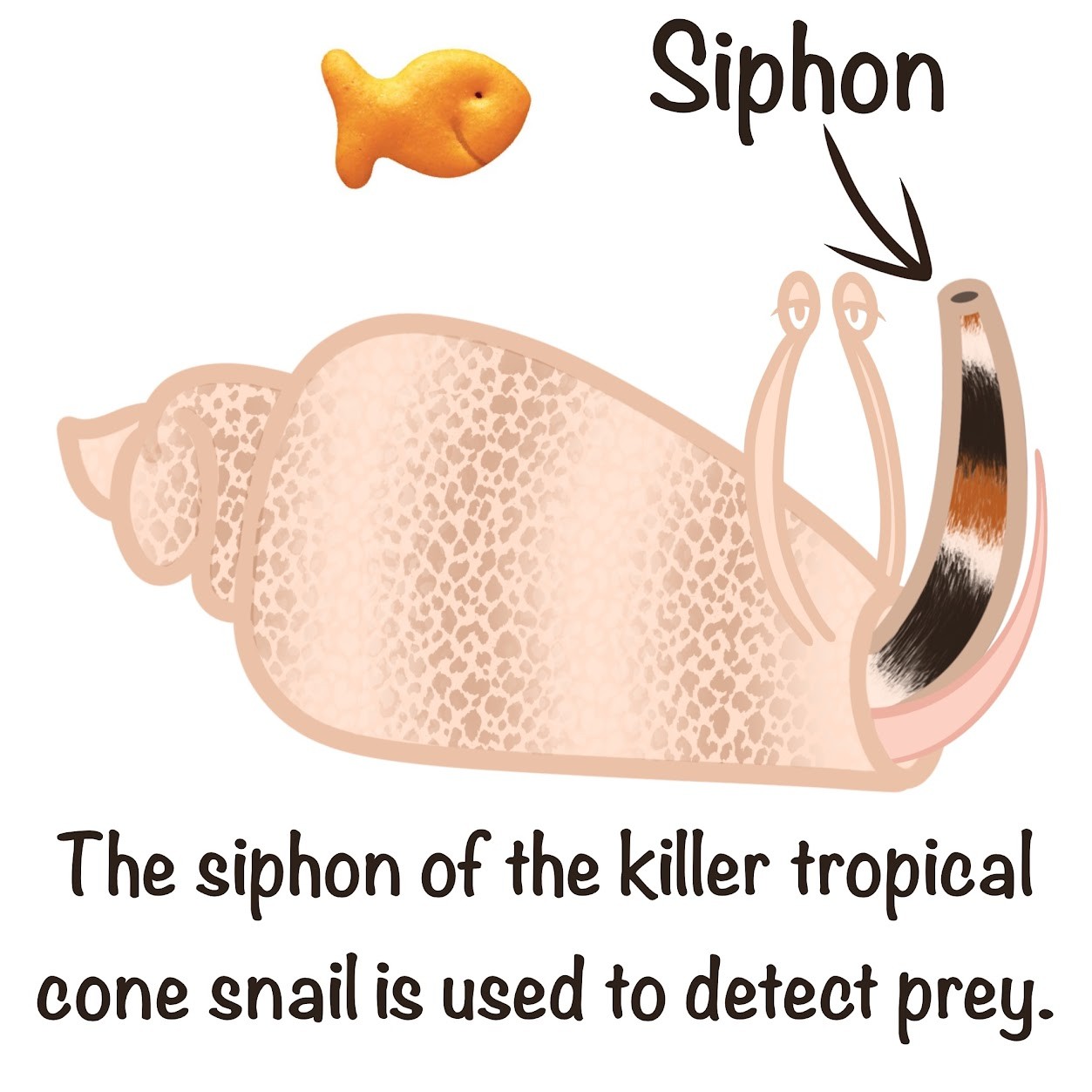
Sensory input- Sensors detect external stimuli and internal conditions and transmit information along sensory neurons
2nd step of information processing
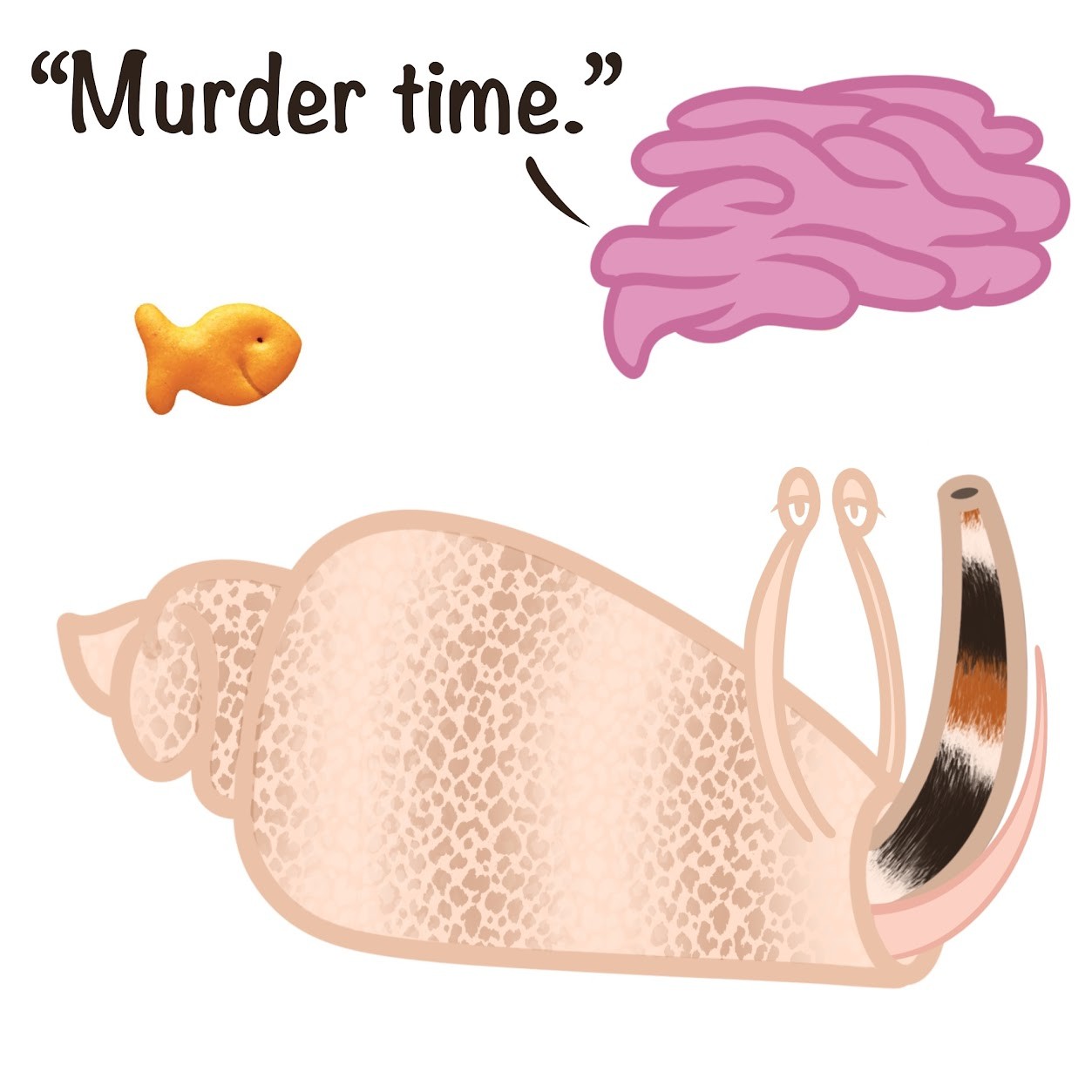
Integration- Sensory information is sent to the brain or ganglia, where interneurons integrate the information.
3rd step of information processing
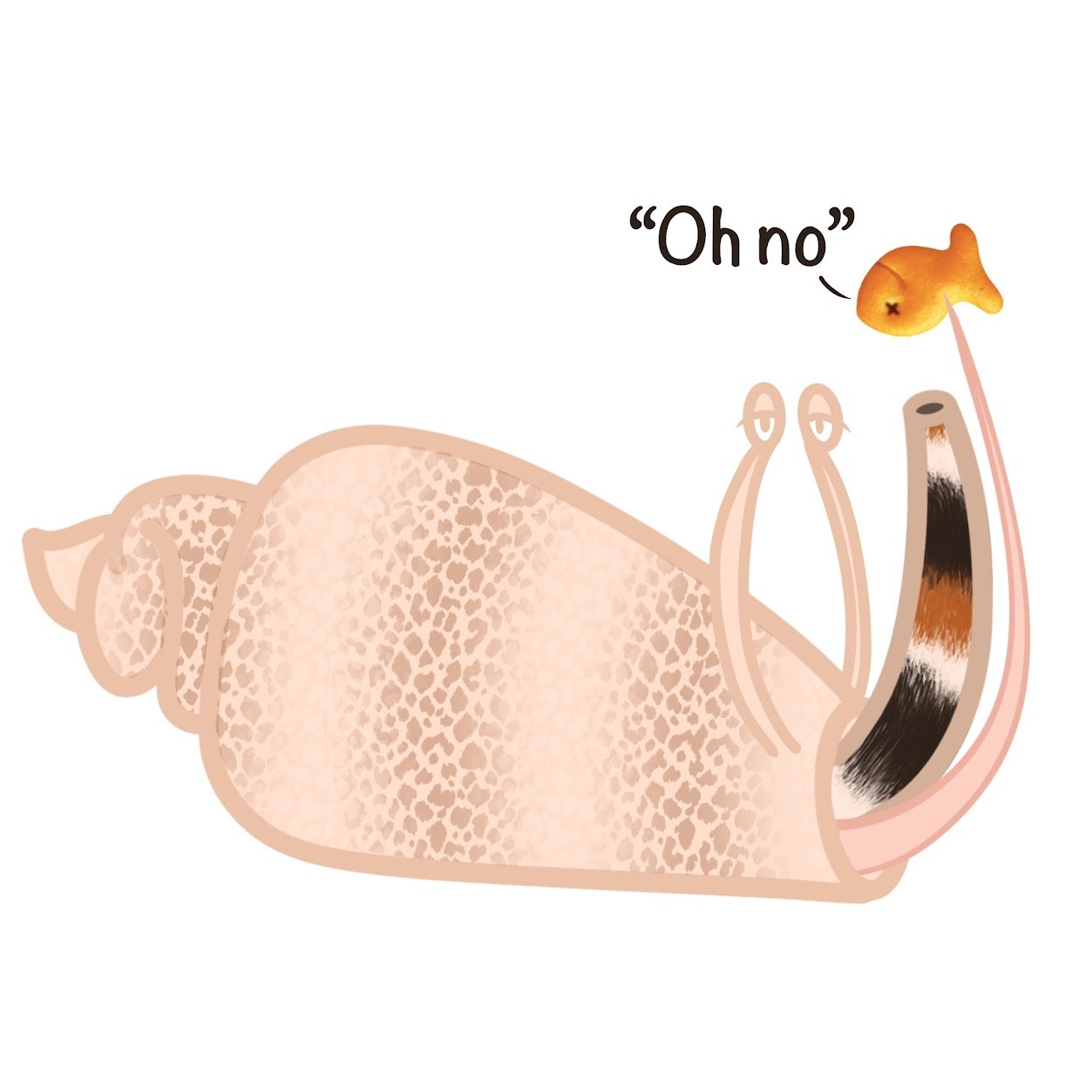
Motor Output- Output leaves the brain or ganglia via motor neurons, which triggers muscle or gland activity.
Action Potential
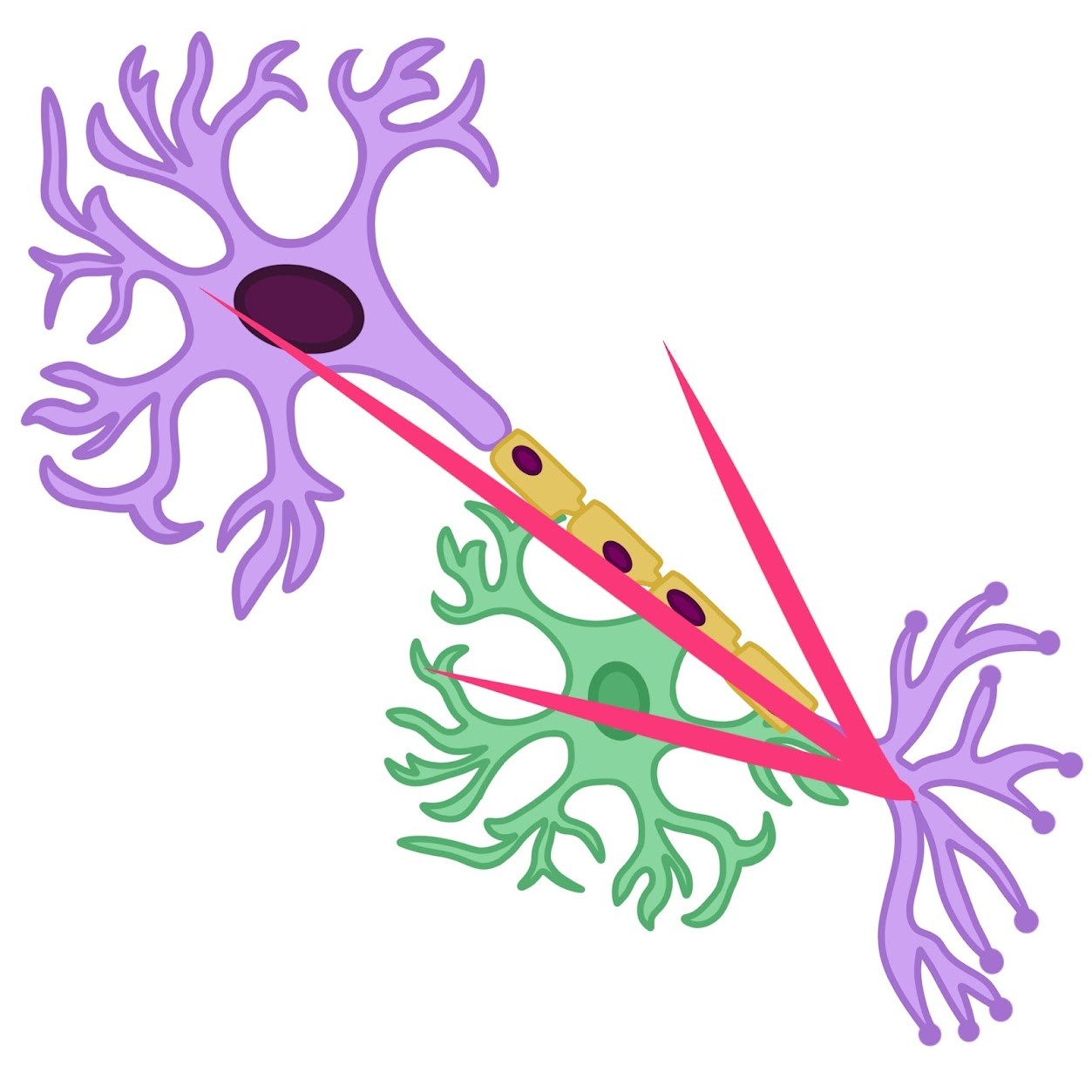
A rapid change in electrical charge across the cell membrane that gets propagated down the axon
Membrane Potential
Electrical charge differences across the plasma membrane; can change in response to neurotransmitters and environmental stimuli to send signals
2 Membrane potentials for neurons
Resting potential & Action potential
Resting Potential
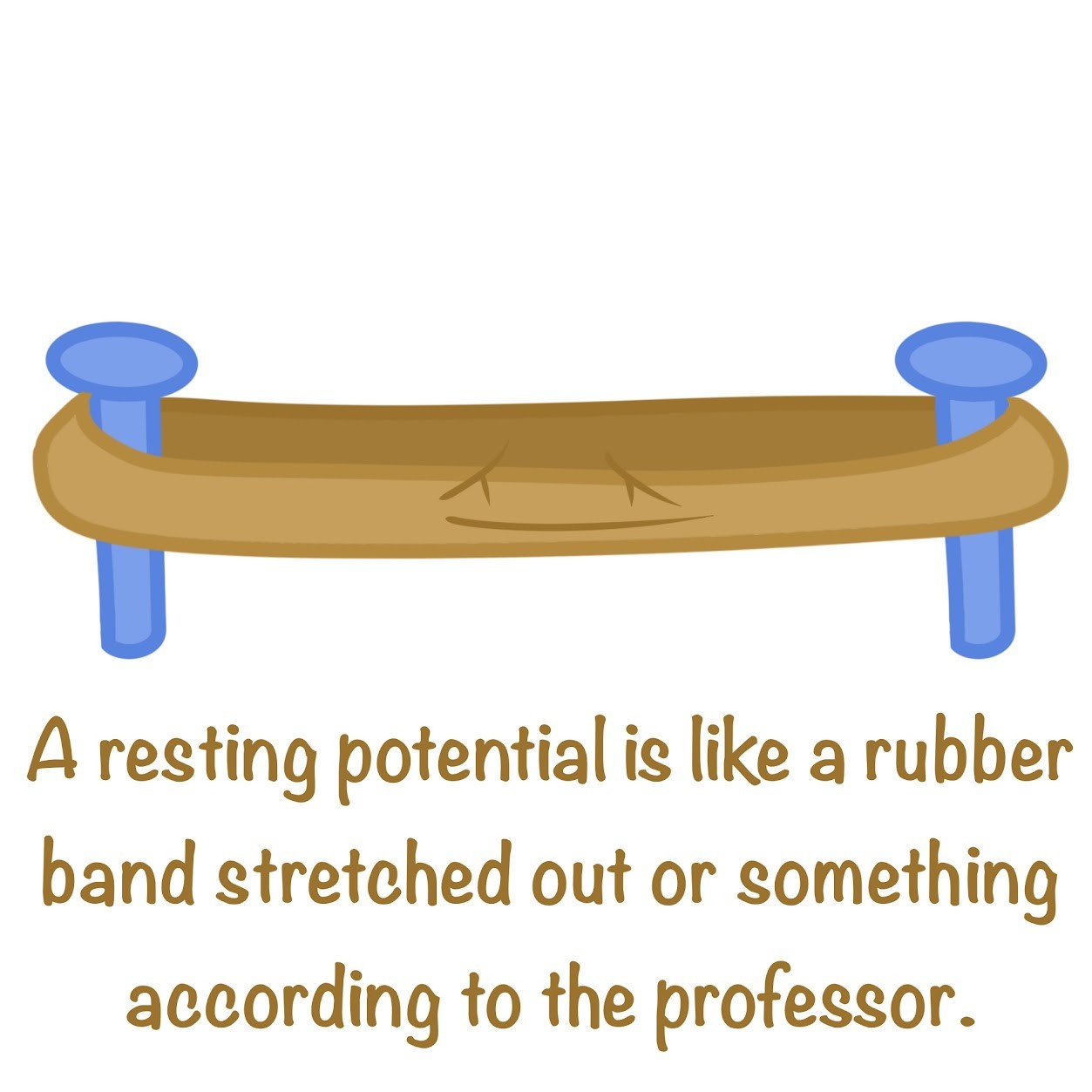
Membrane potential of a neuron not sending signals (always negative, typically between -60 and -80 mV)
Action Potential

Rapid changes in membrane potential of a neuron that transmits signals (always positive, typically between +30 and +50 mV)
Can ions move through membranes on its own?
No
Lipid bilayer of all cells (including neurons) is _____ to charged molecules/ions
Impermeable
3 configurations of ion channels
Open, closed, inactive
Voltage-gated ion channels
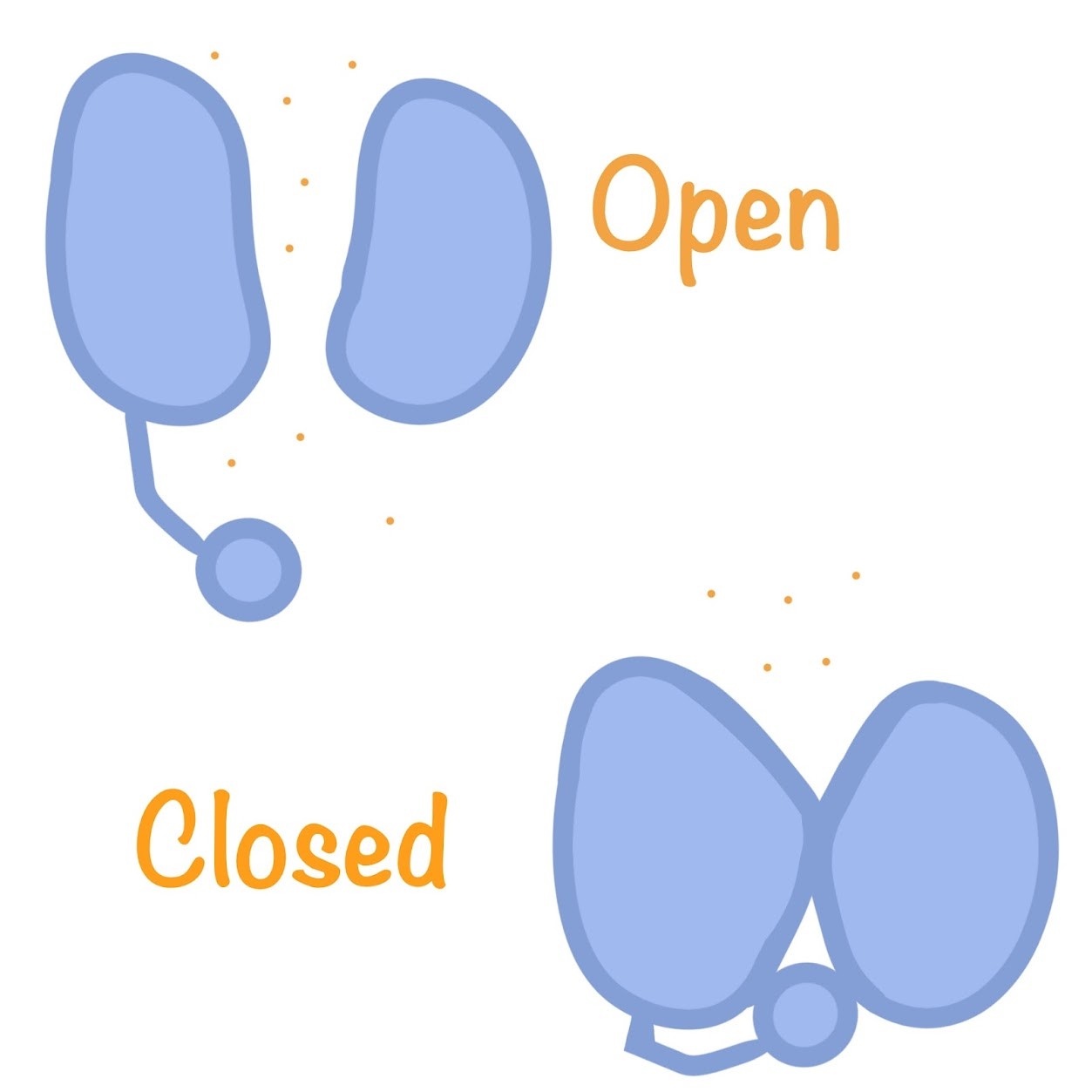
Ion channels that open/close in response to a change in voltage
Resting membrane potential (voltage) is due to
Attraction of opposite charges established by an unequal distribution of ions
Potassium (K+) concentration is higher
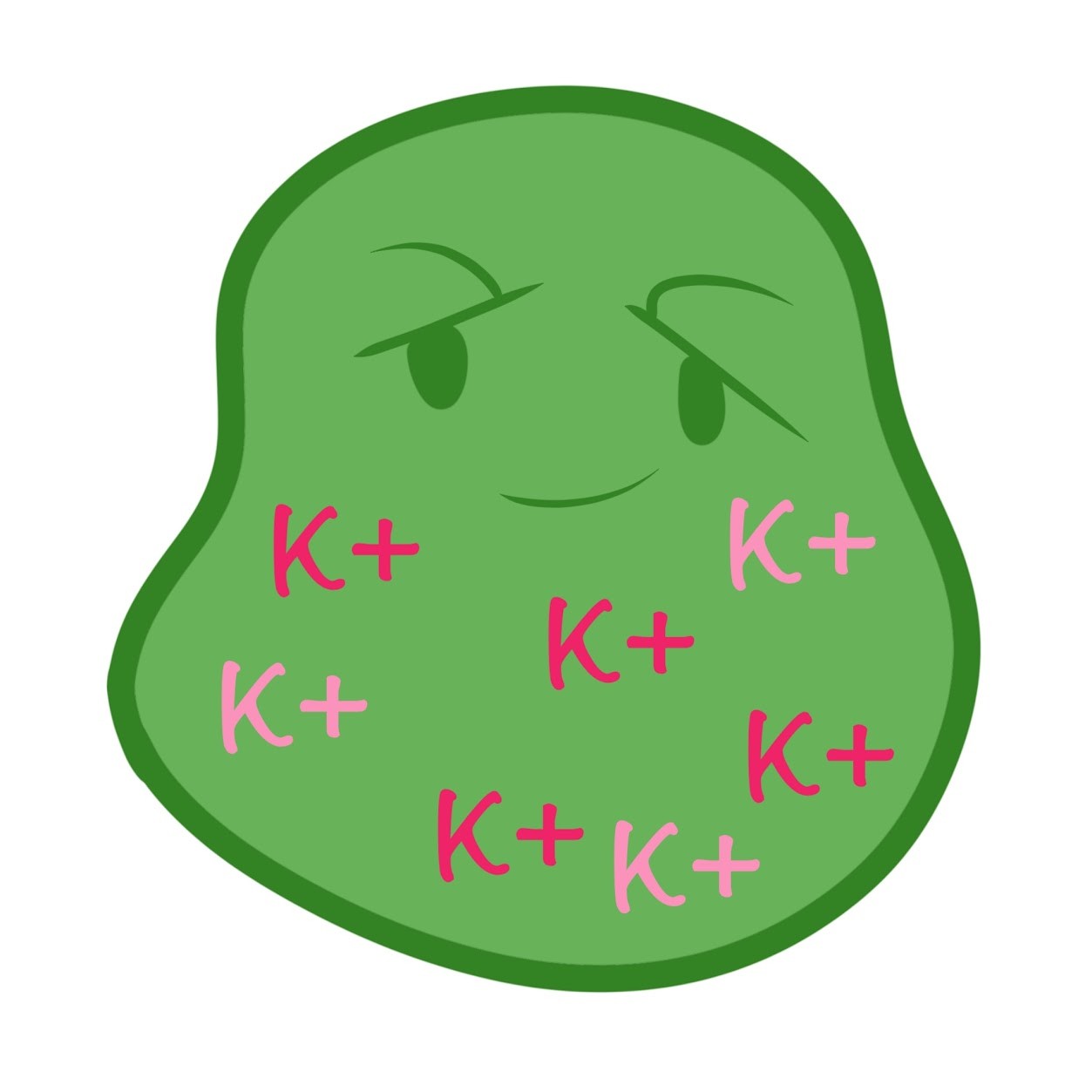
Inside the cell
Sodium (Na+) concentration is higher
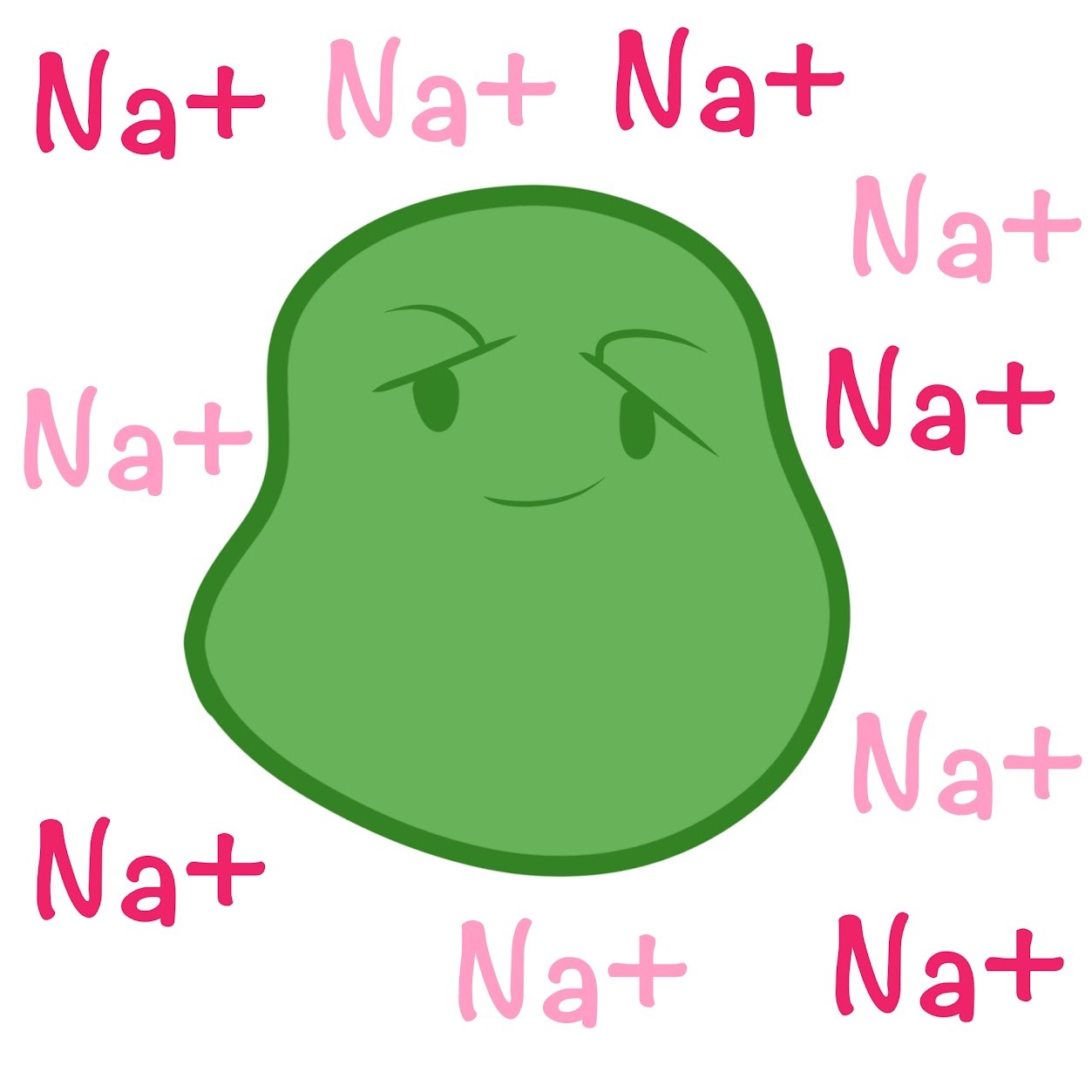
Outside the cell
Concentration gradients across the plasma membrane are the result of
Na-K Pumps & Selective Permeability
Na-K pumps use the energy from ATP to pump _ Na+ out of the cells
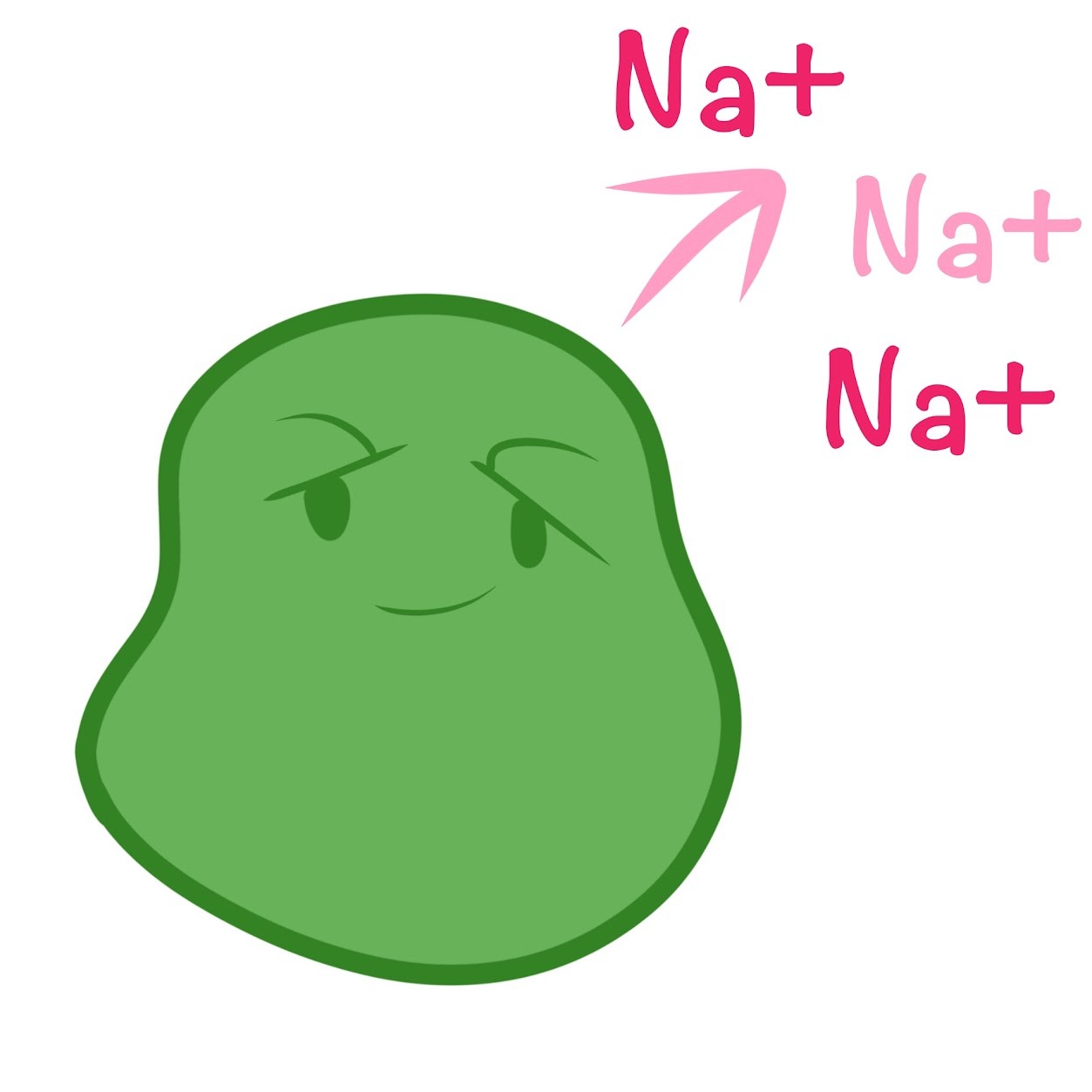
3
Na-K pumps use the energy from ATP to pump _ K+ into the cell
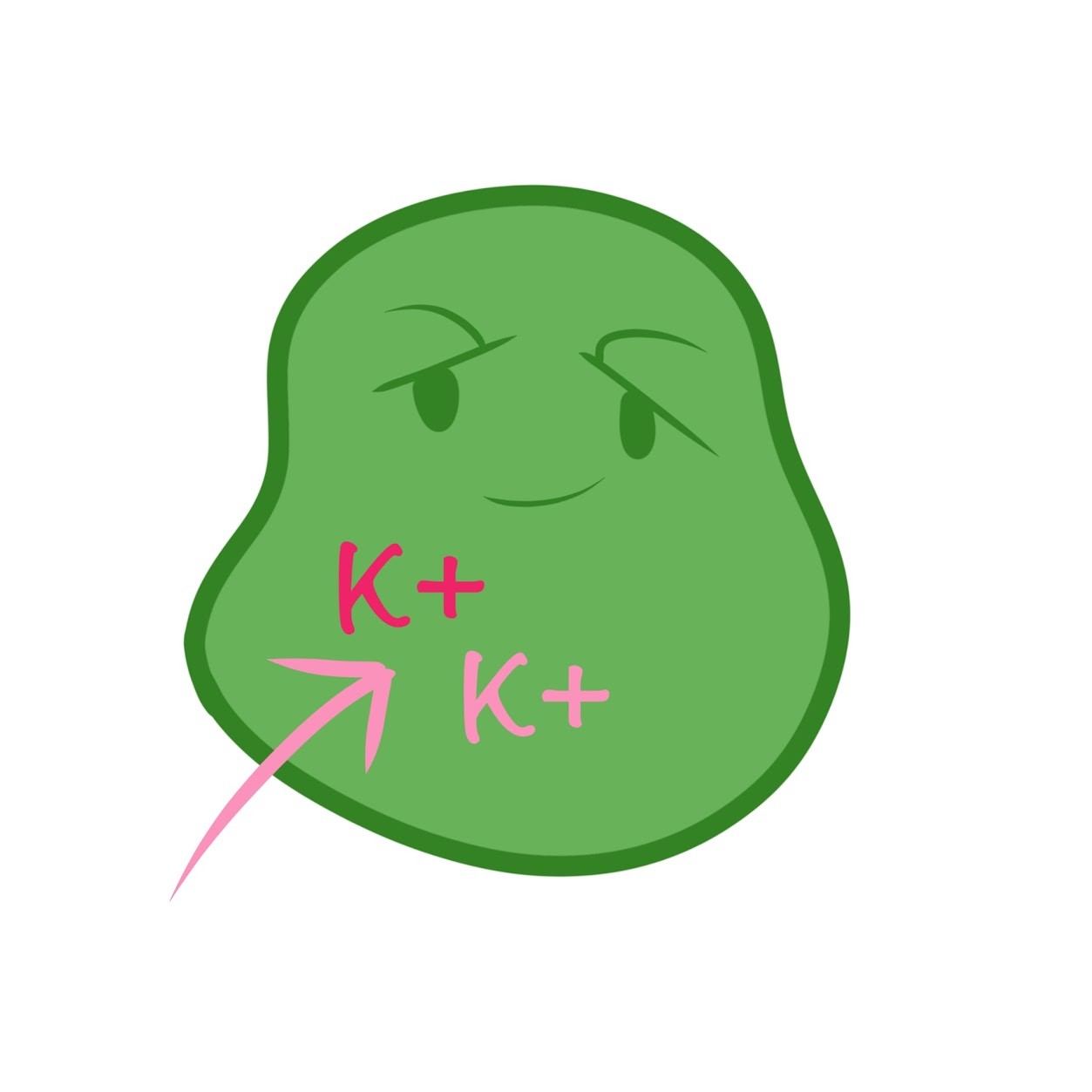
2
What does not contribute to the resting potential of a neuron?
Voltage-gated ion channels
A neuron at resting potential contains ___ open K+ channels
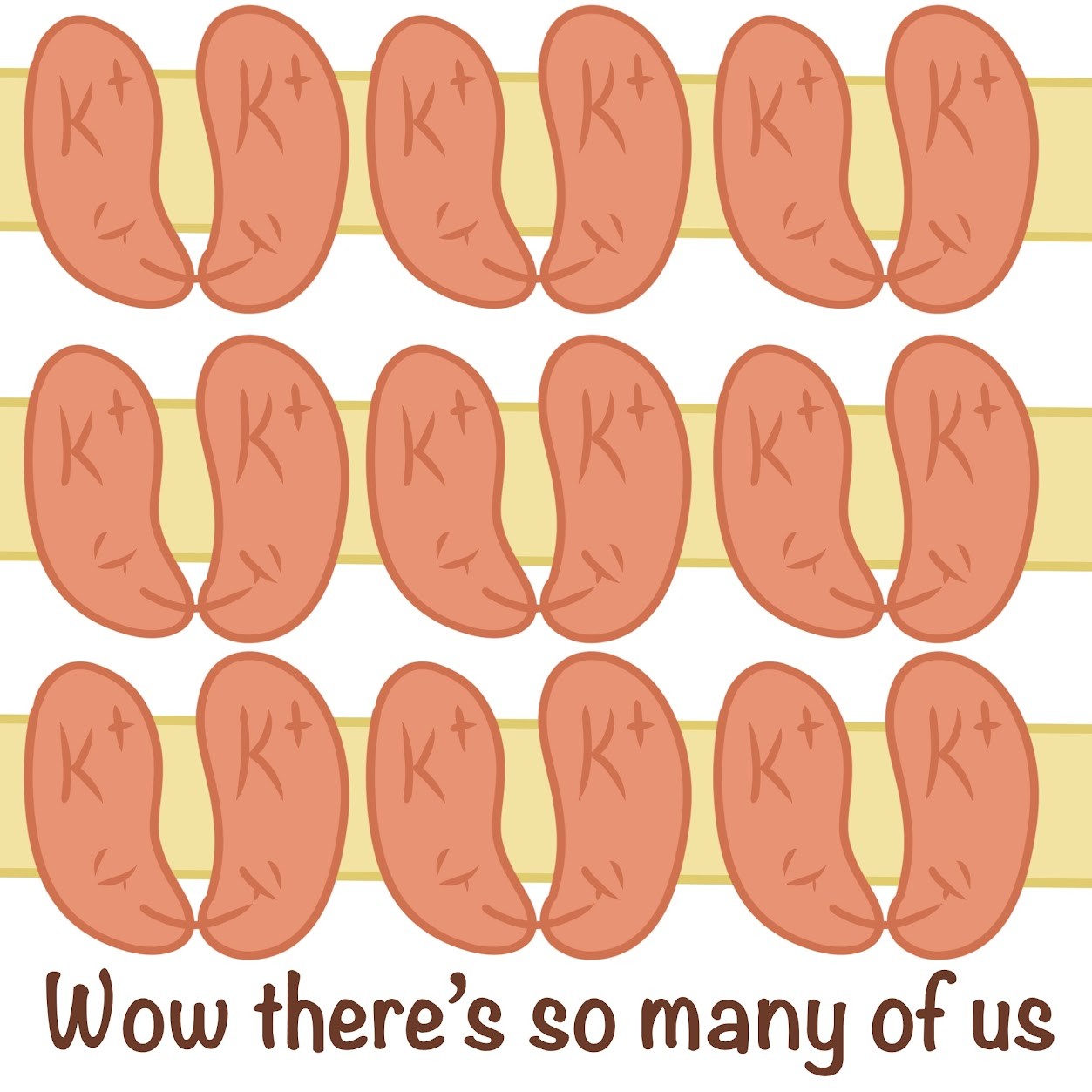
many
A neuron at resting potential contains ___ open Na+ channels
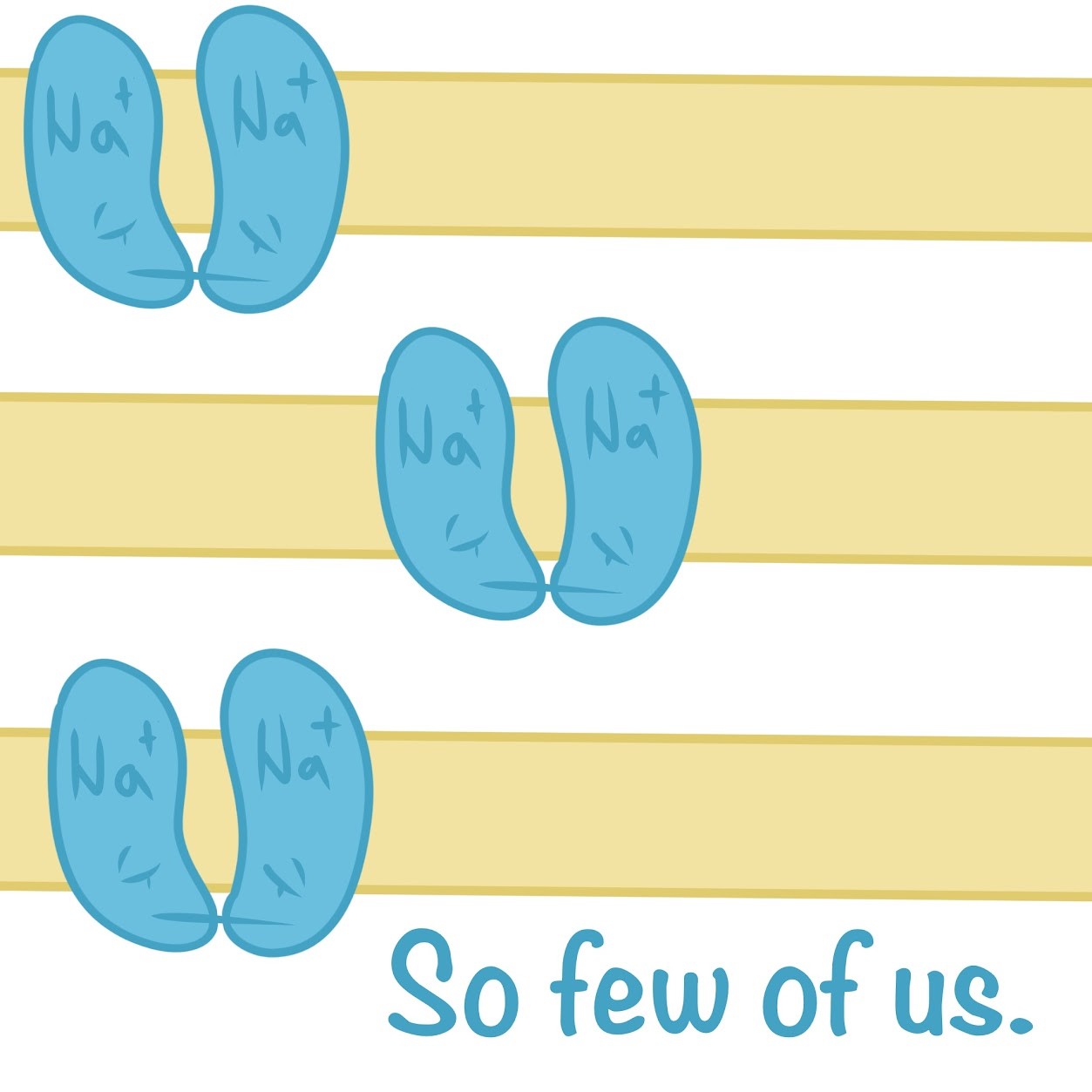
few
K+ diffuses out of the cell much ____ than Na+ diffuses in
more
Resting potential generates a buildup of ____ charge within the neuron (is the major source of membrane potential)
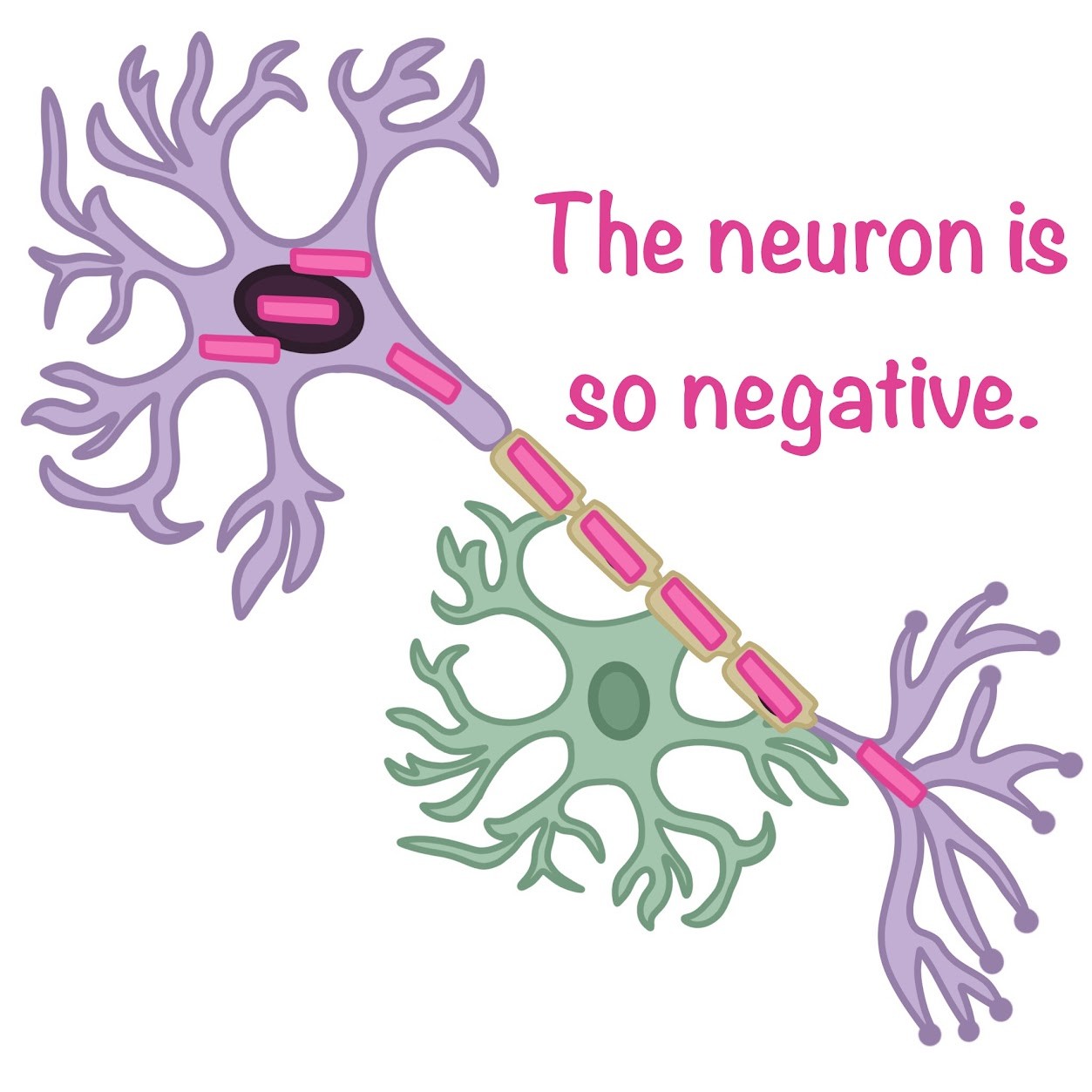
negative
The opening of ion channels in the plasma membrane converts _____ potential to _____ potential
chemical; electrical
K+ diffuses out of the cell until
the electrical gradient counterbalances the chemical gradient
Signal transmission from one neuron to another is initiated by
A chemical (neurotransmitter)
The chemical signal gets converted to an _____ signal through a rapid reversal in charge
electrical
At the axon terminus, the electrical signal is
converted back to chemical (neurotransmitter) signal
Receipt of neurotransmitter induces the opening of

ion channels
When positive ions enter the cell, what occurs?

Depolarization of the membrane to its threshold potential
What happens when depolarization is triggered?
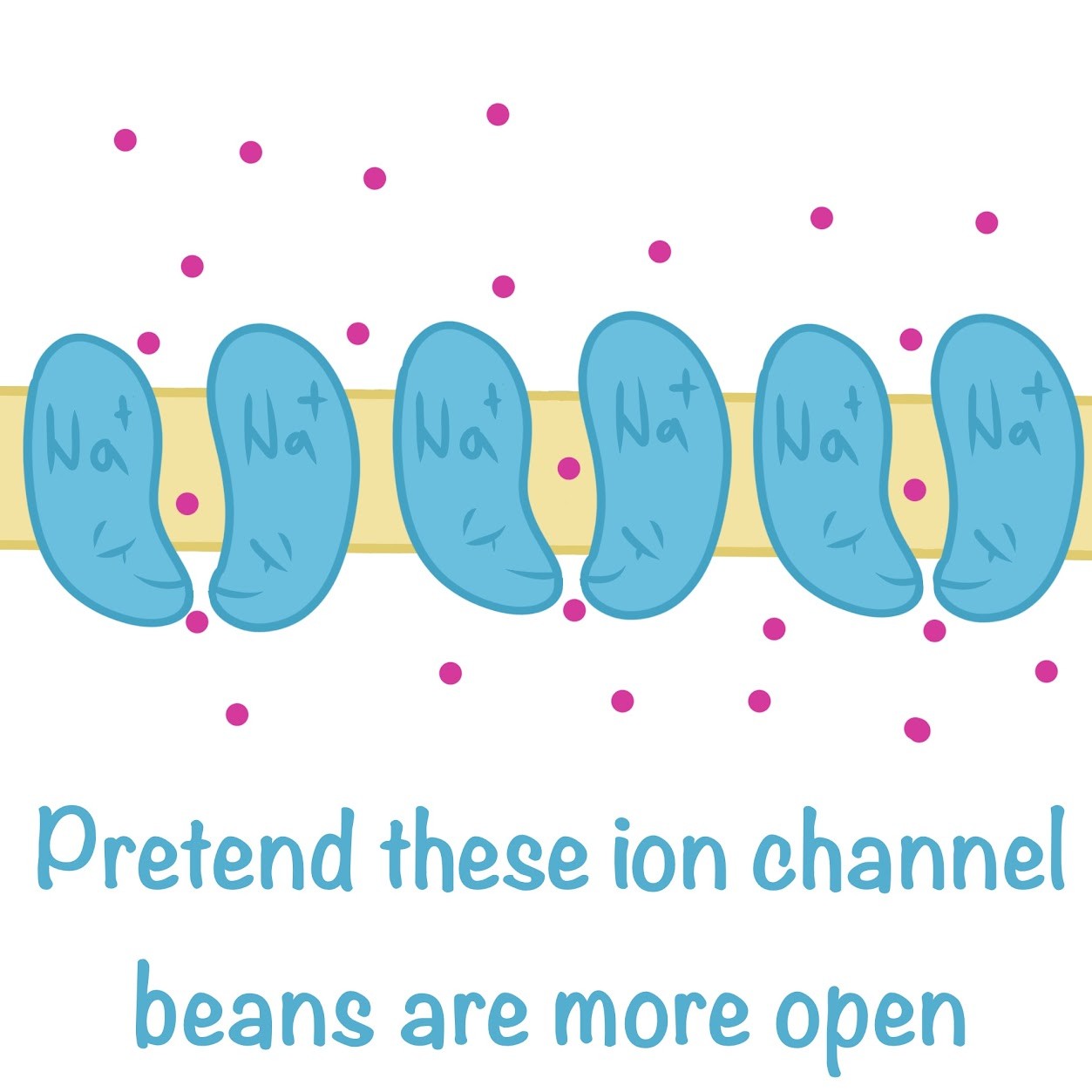
Voltage-gated Na channels open in the axon hillock, initiating an "all-or-nothing" event known as the action potential
What happens during repolarization?
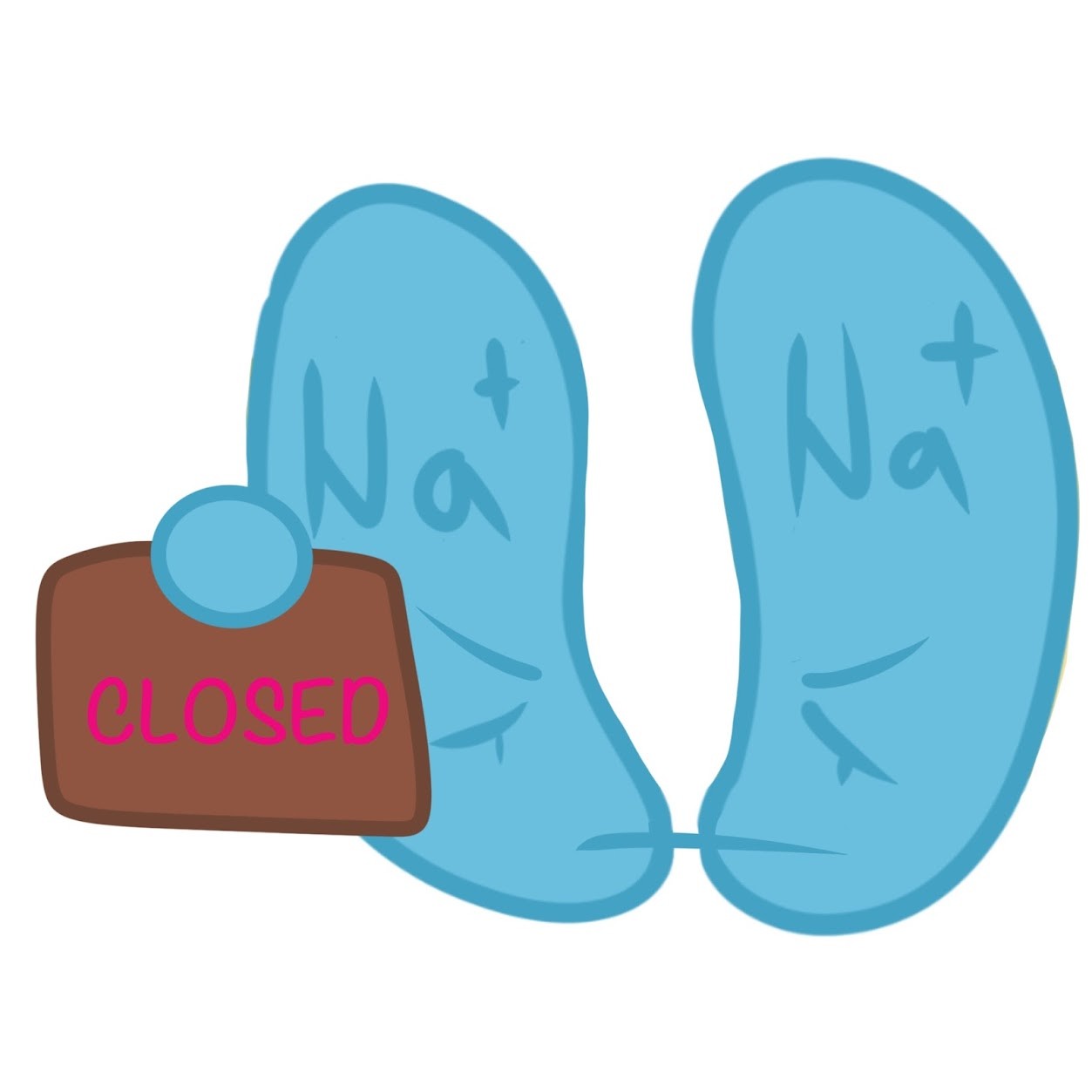
Voltage-gated Na+ channels close (become inactivated) and cannot be reopened for a brief time (the refractory period)
What occurs at the same time as repolarization?
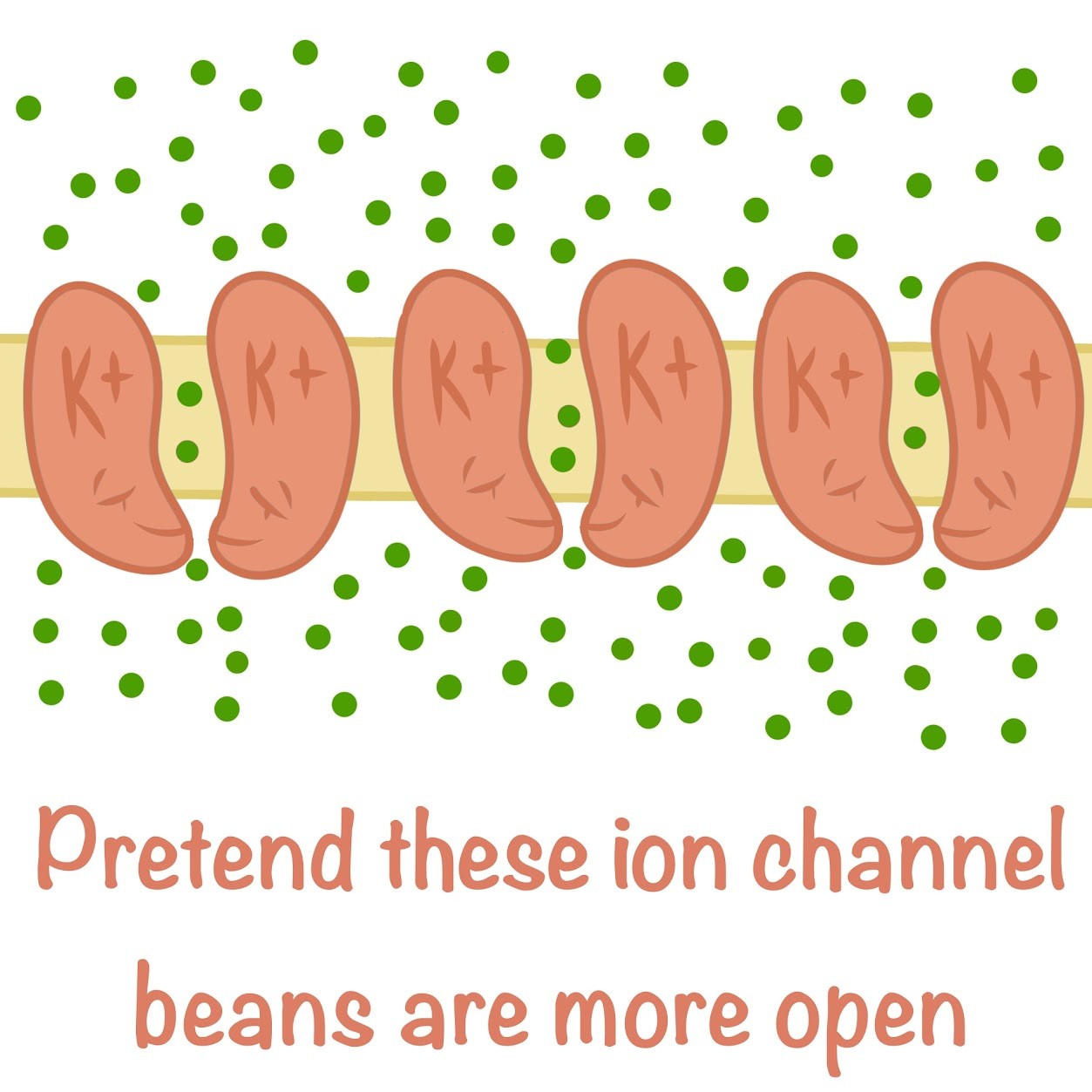
Hyperpolarization
What occurs during hyperpolarization?
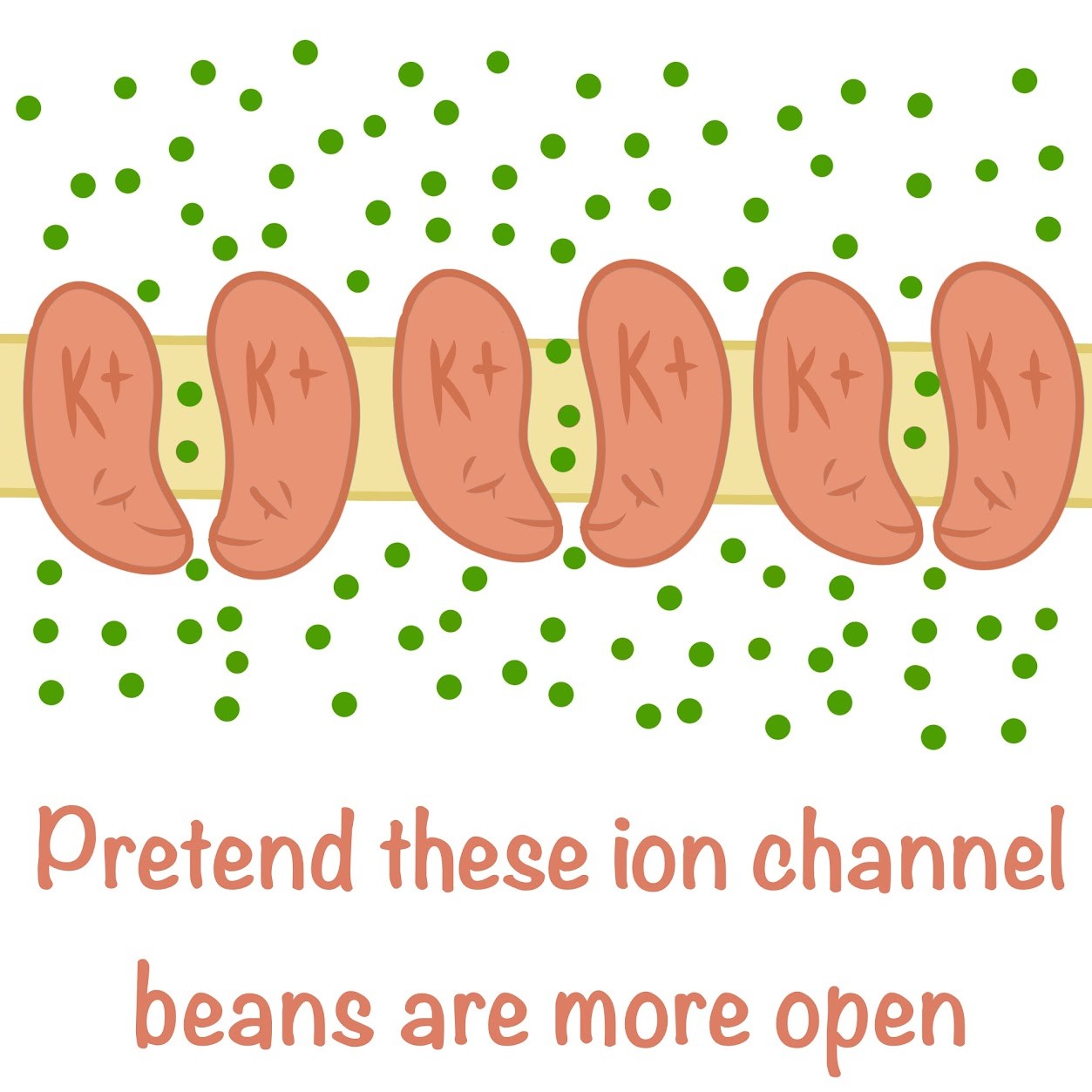
Voltage gated K+ channels open, allowing K+ to rush out of the cell; causes the potential to become more negative than the resting potential
What direction do action potentials travel in?
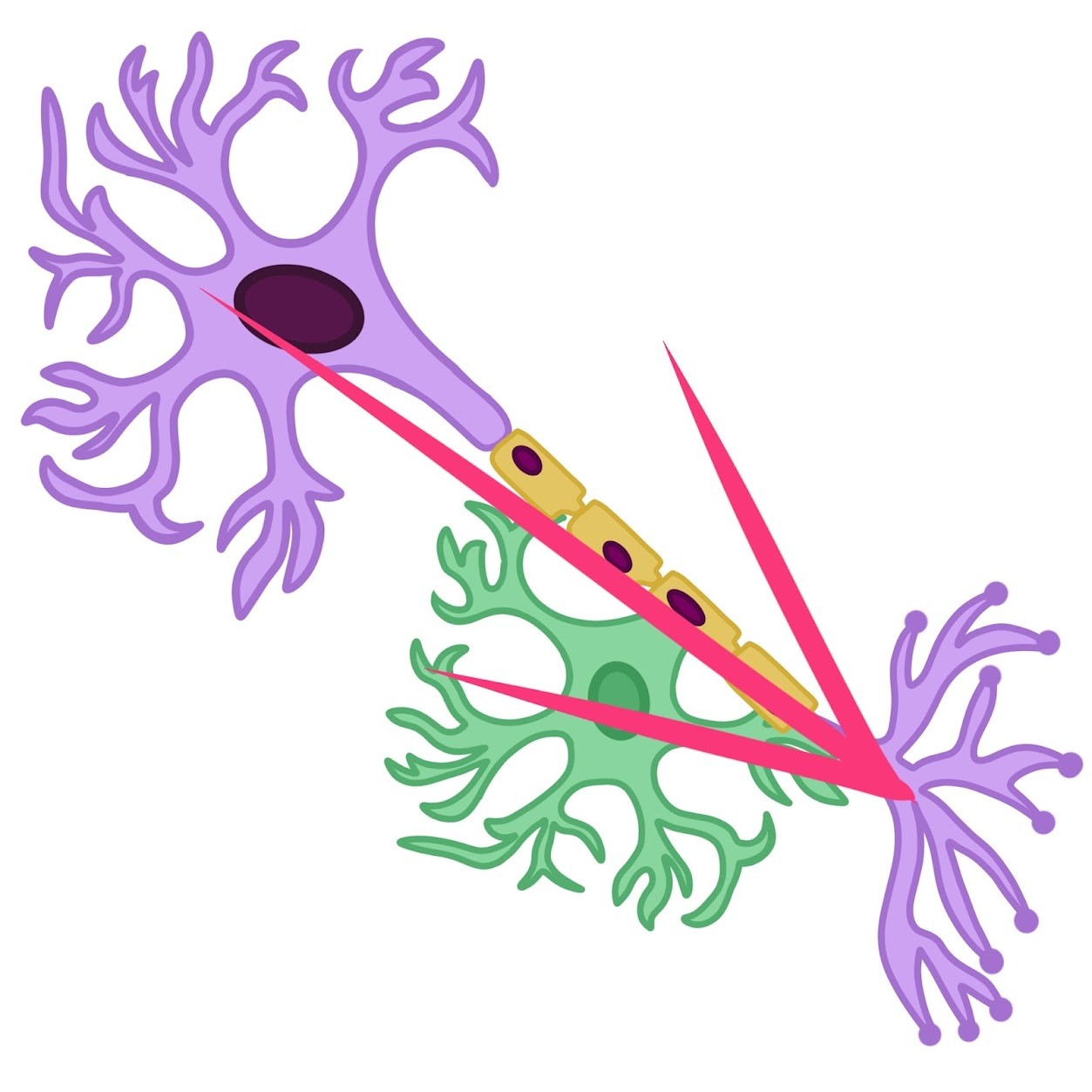
Towards the synaptic terminals
What prevents the action potential from traveling backward?
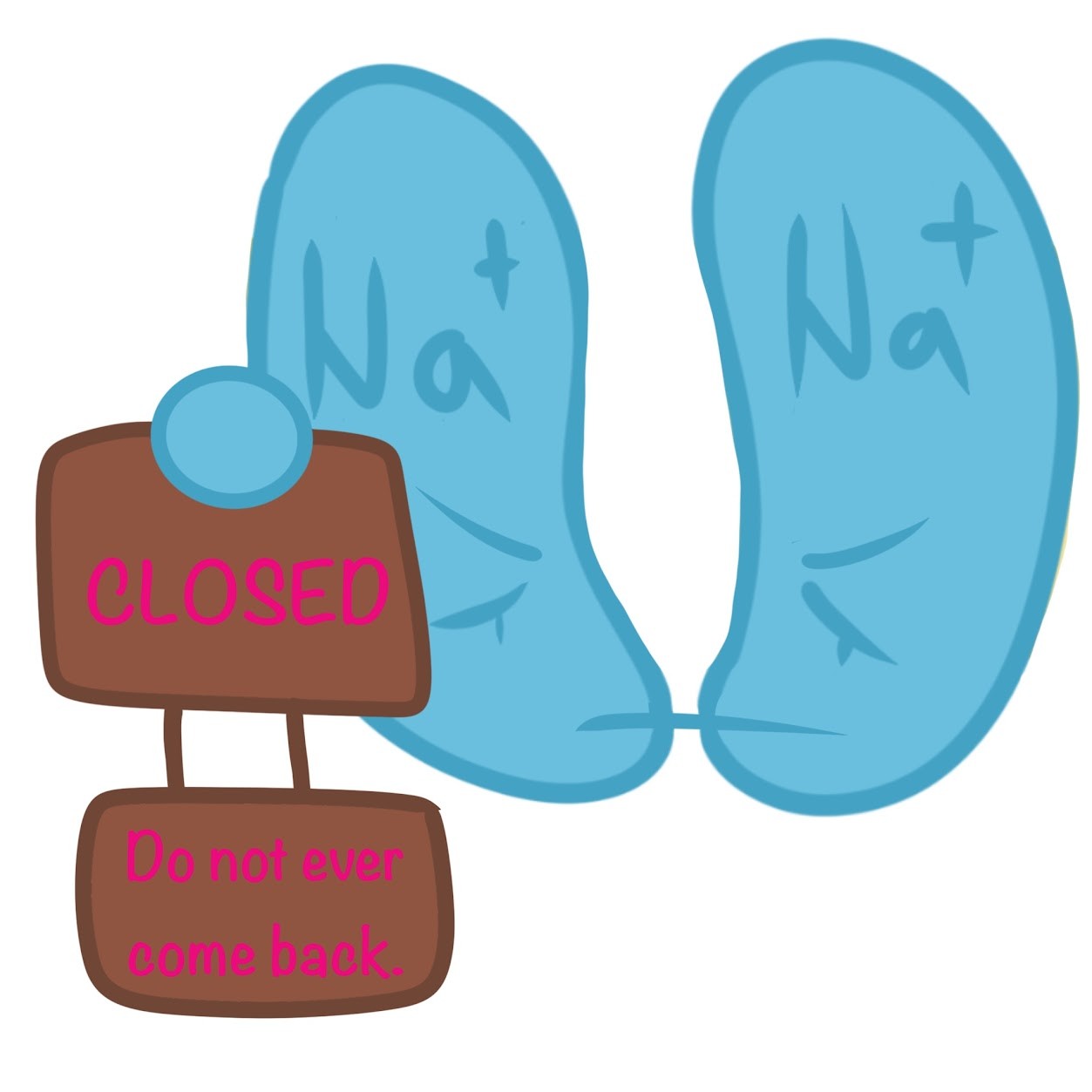
Inactivated Na+ channels behind the zone of depolarization
The speed of action potentials increases with the axon's
Diameter
Why is the speed of action potentials increased in vertebrates?
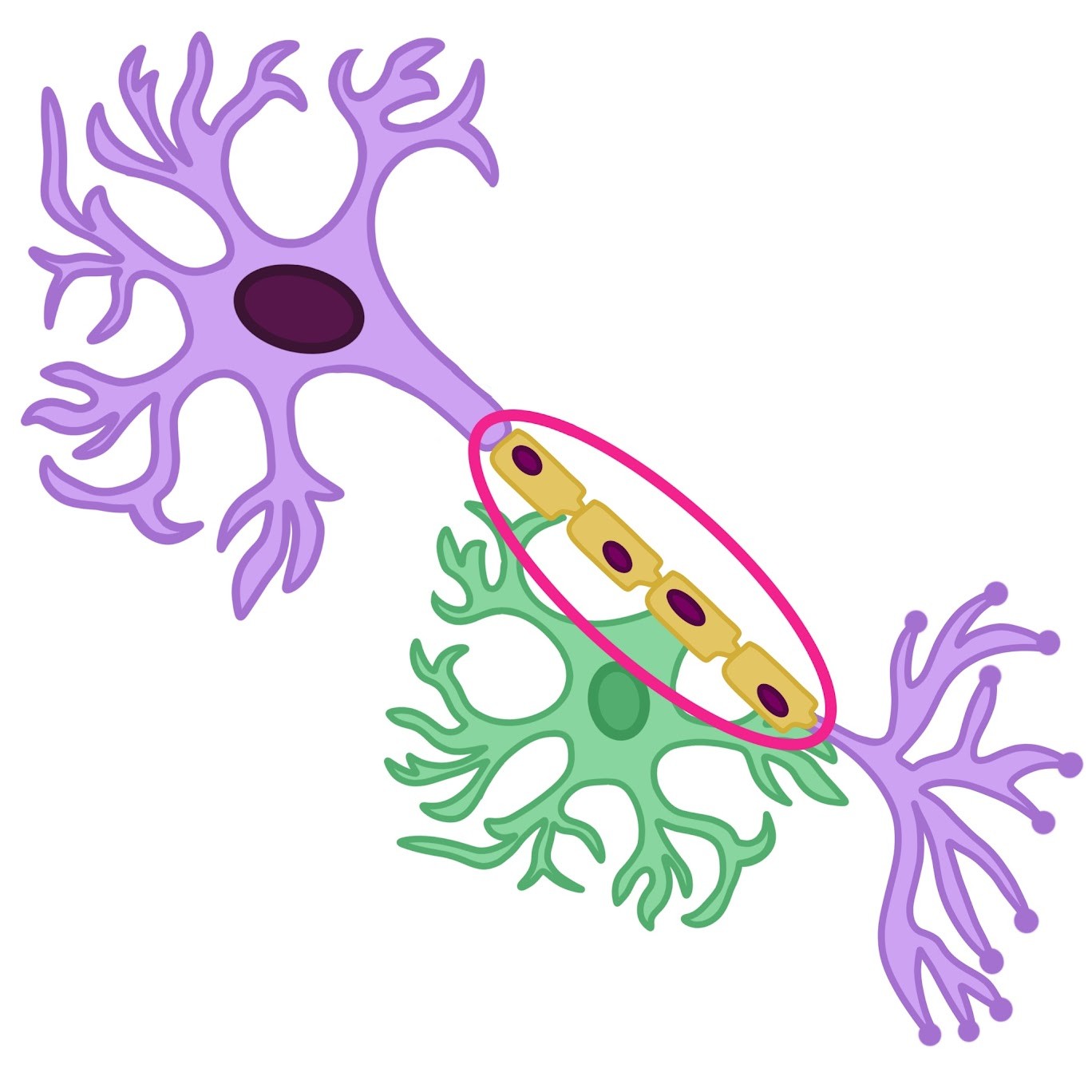
Axons are insulated by a myelin sheath
The CNS myelin sheath
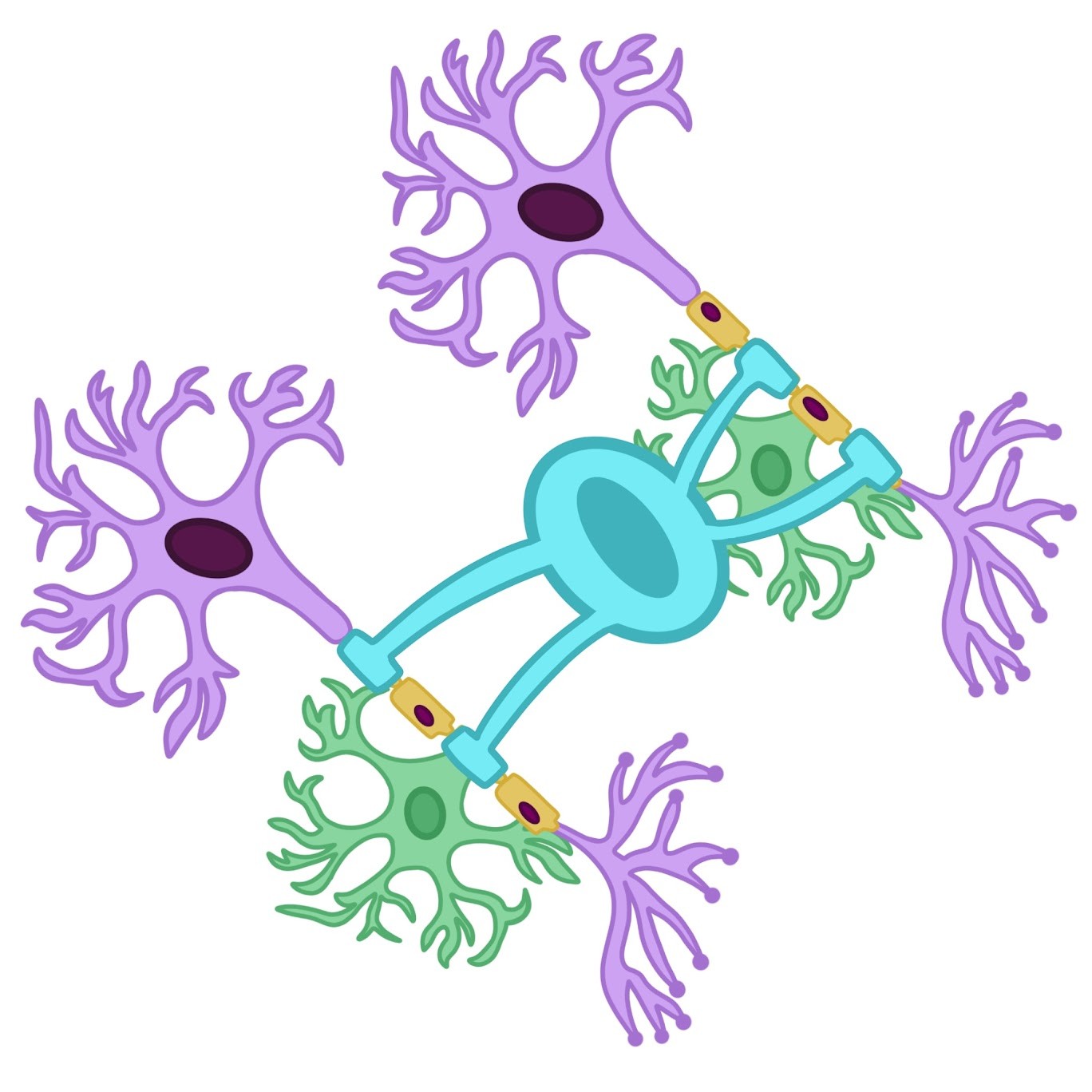
Oligodendrocytes
The PNS myeline sheath
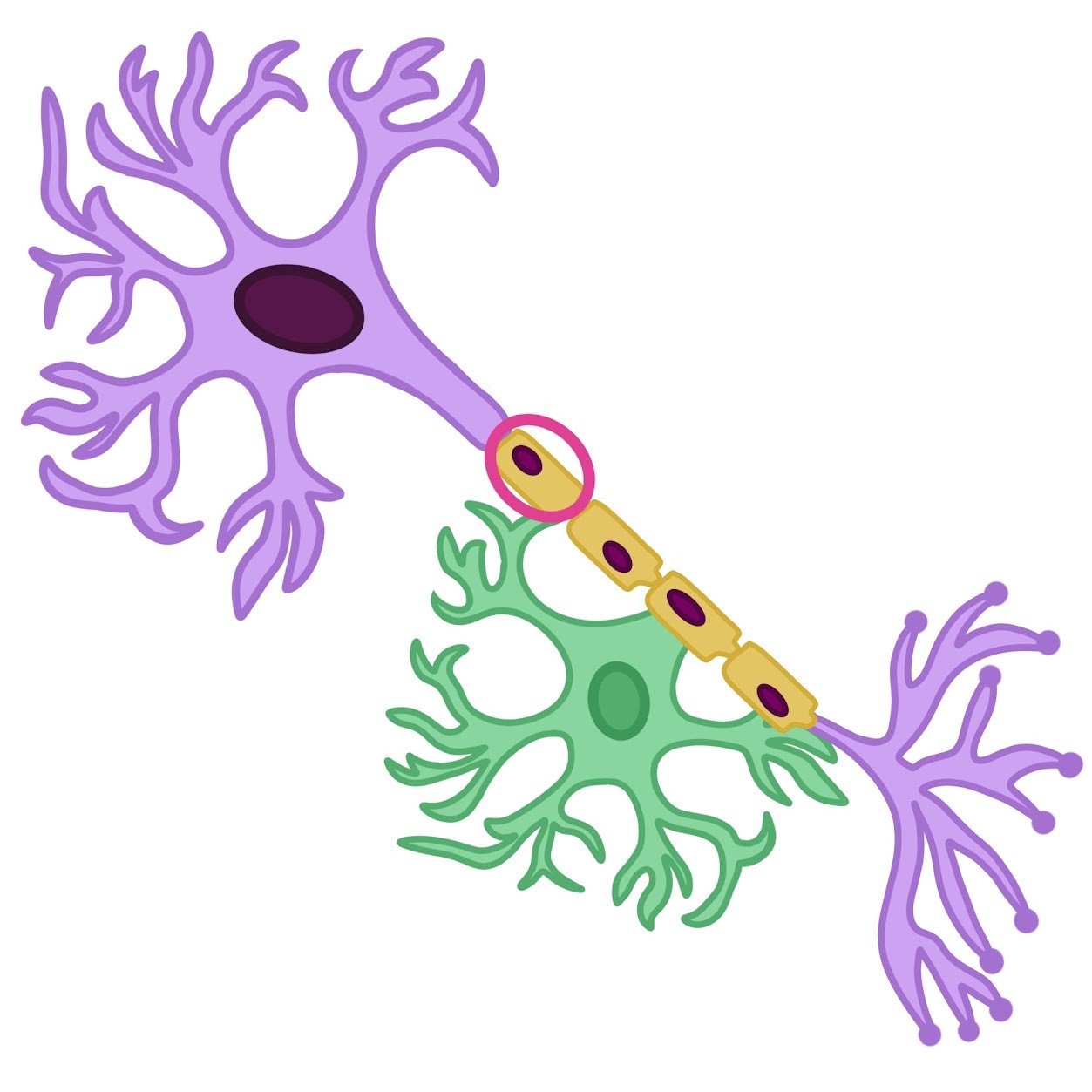
Schwann cells
Where are voltage-gated Na+ channels found?
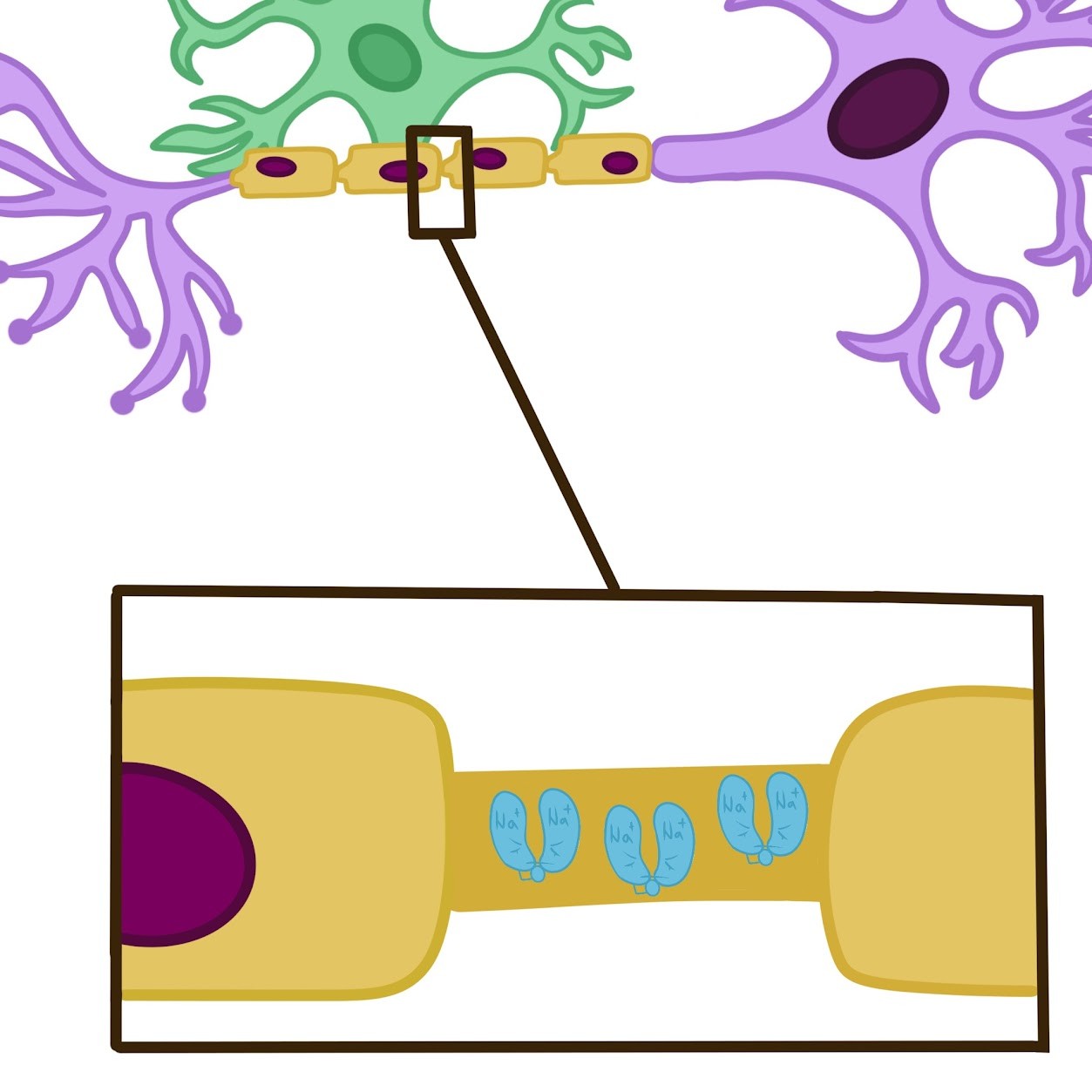
Nodes of Ranvier (gaps between myelin sheath)
Action potentials are formed only at the
Nodes of Ranvier
Saltatory Conduction
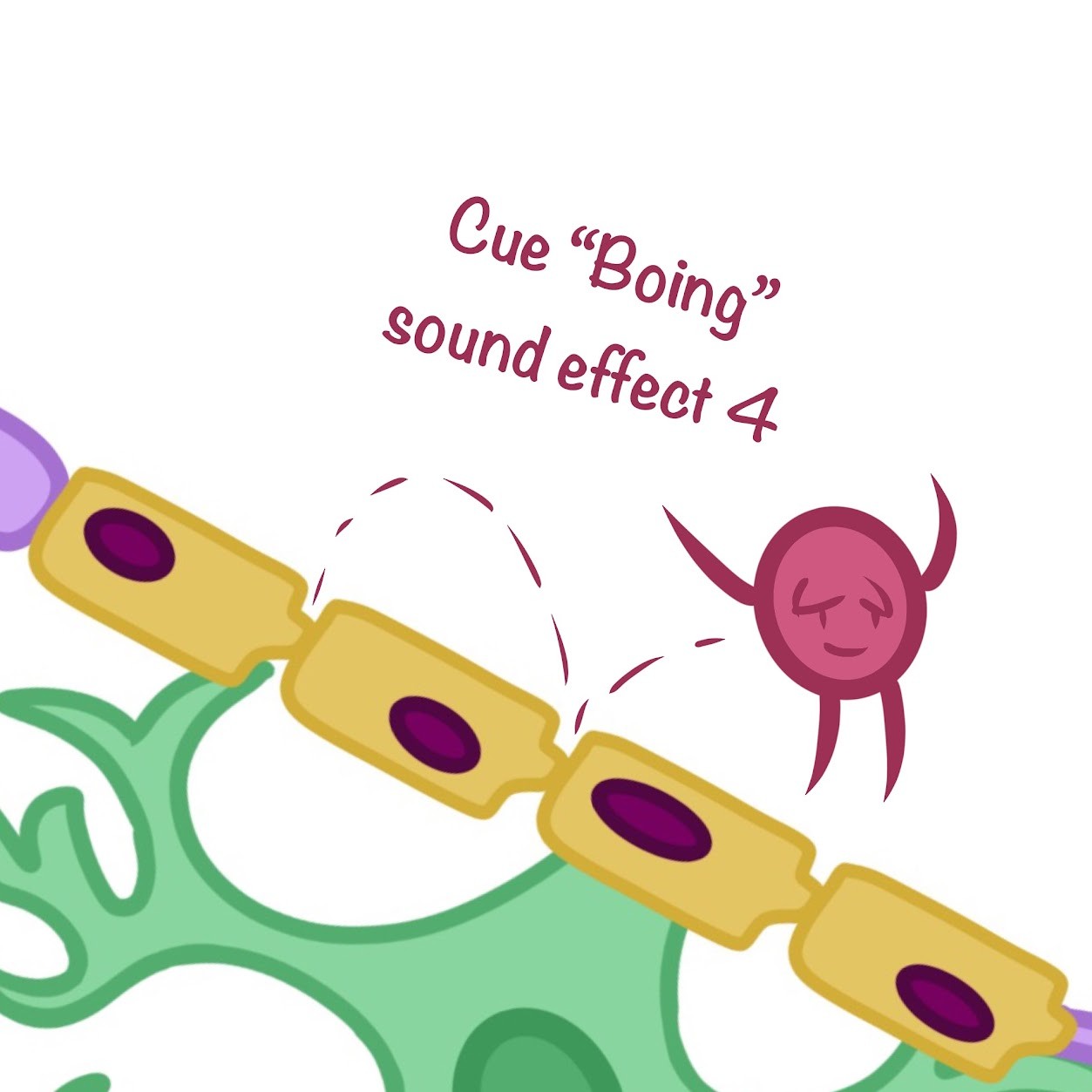
Electrical current jumps between the nodes of Ranvier; facilitates a much faster speed of conduction & saves energy
In a typical motor neuron, what is the correct sequence in which these structures usually become involved in transmitting an electron?
Dendrites, cell body, axon hillock, axon, synaptic terminals
During synaptic transmission, the action potential causes what channels to open?
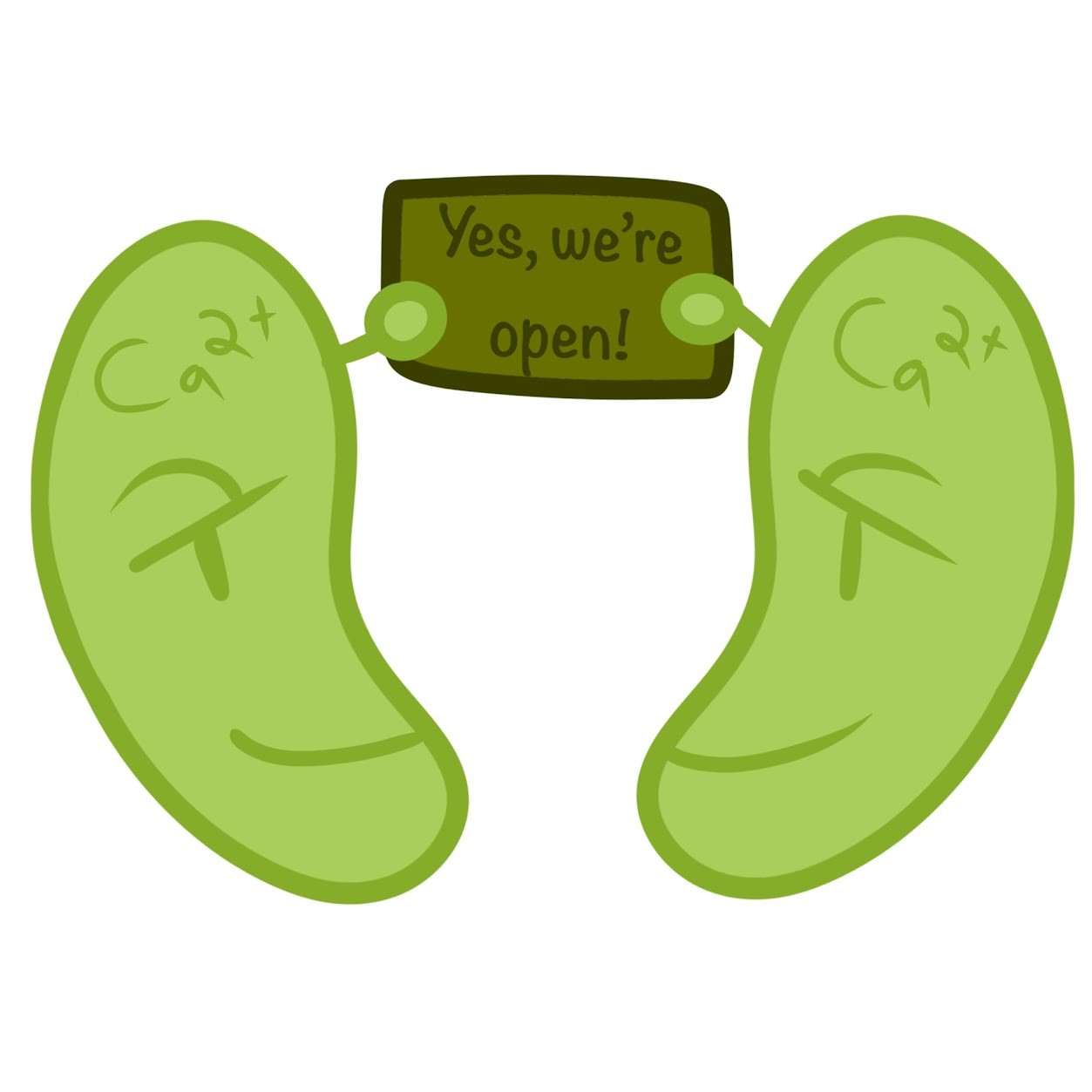
Ca2+ channels
After Ca2+ channels open, what happens?
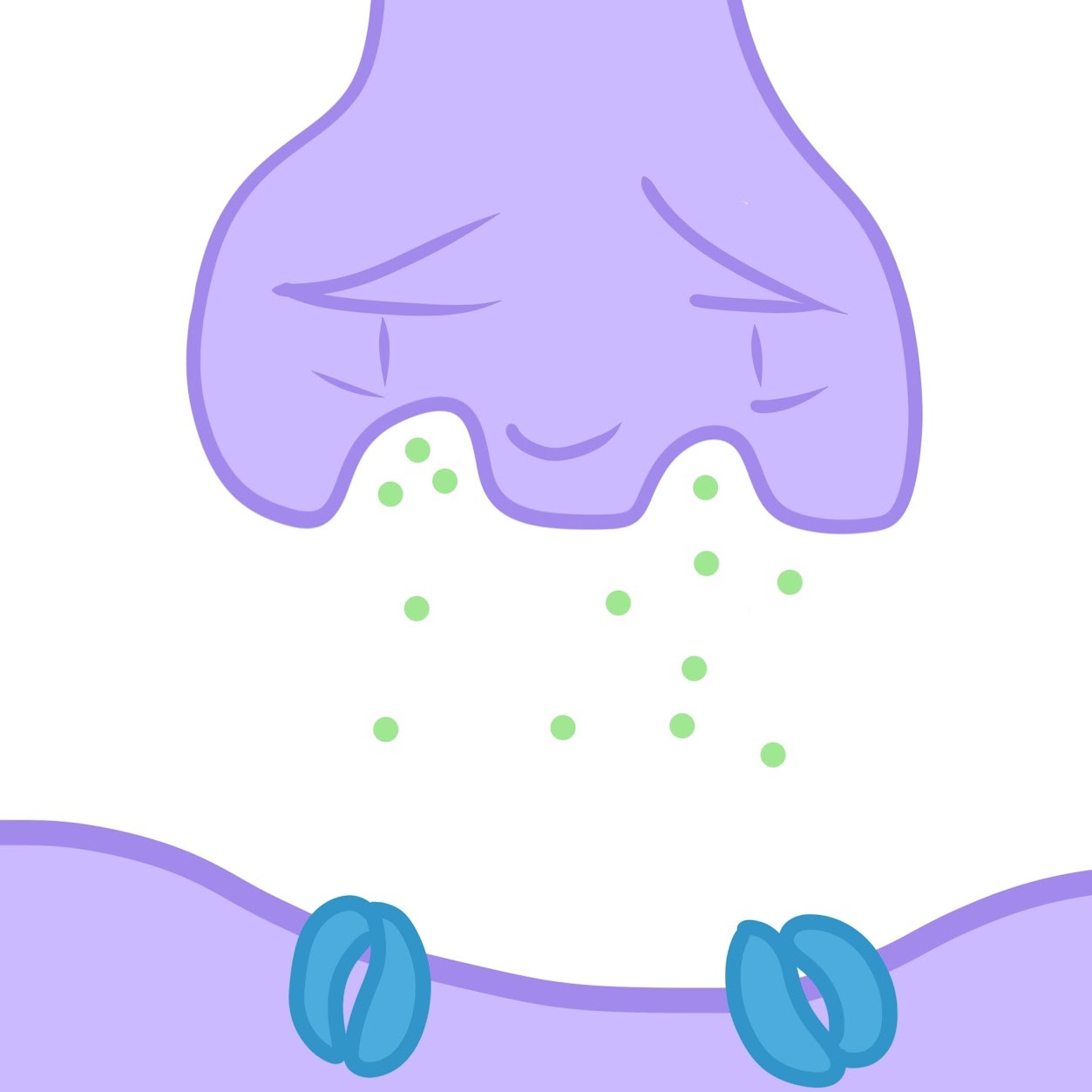
Synaptic vessels containing neurotransmitter fuses with plasma membrane at synapse, releasing neurotransmitter within the synaptic cleft
What causes a graded potential?
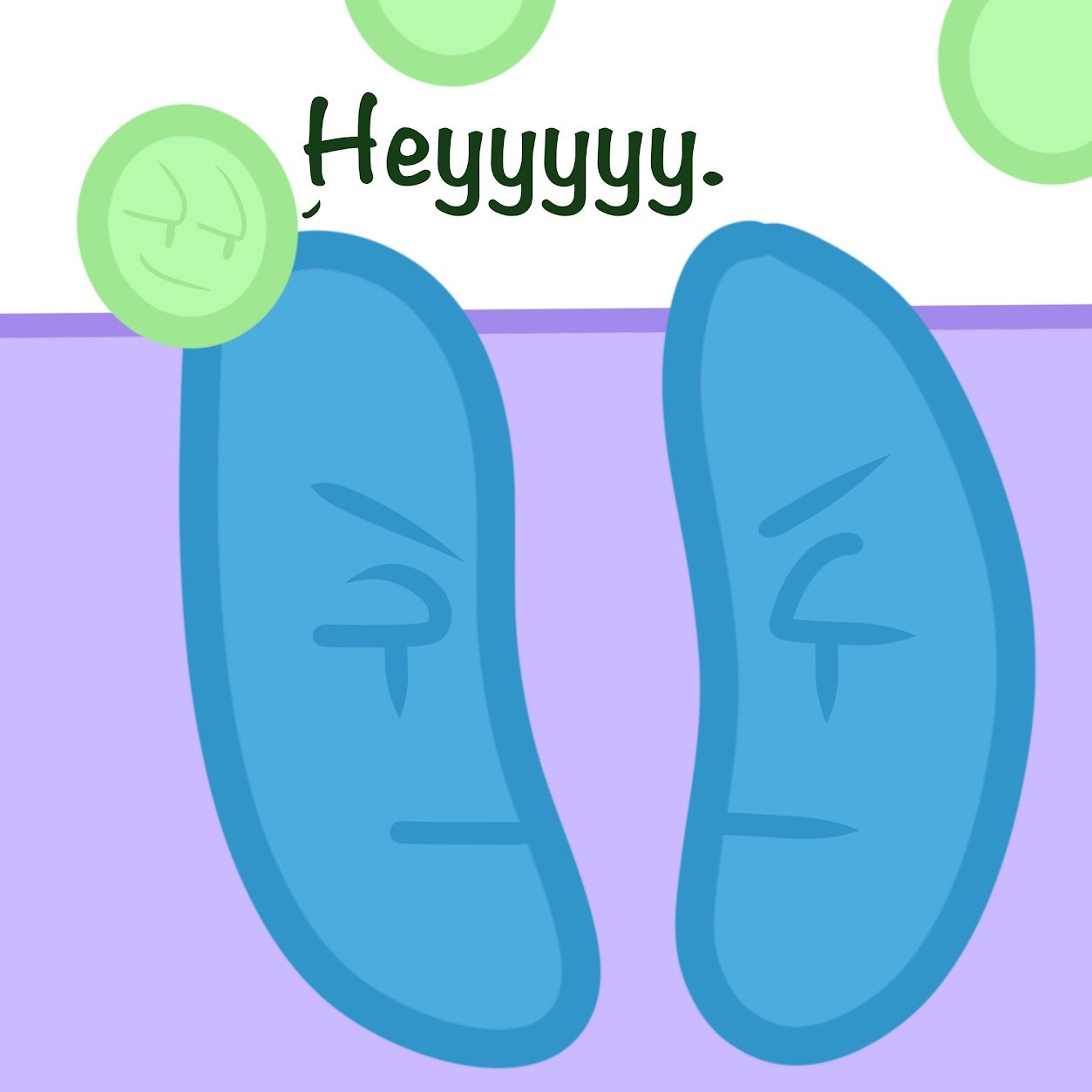
Binding of neurotransmitter to ligand-gated ion channel on post-synaptic neuron
Regarding synaptic transmission, where is an action potential triggered at?
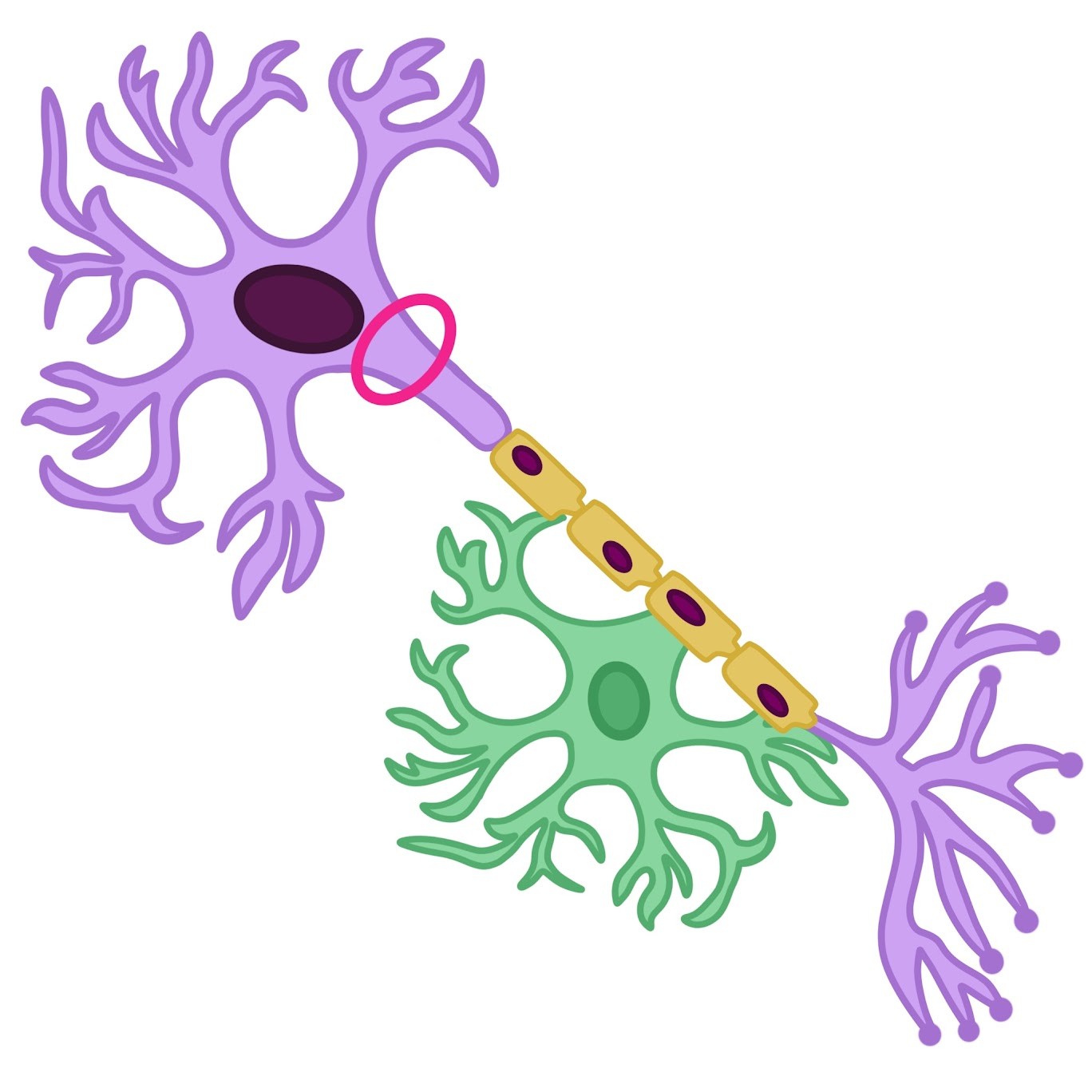
The axon hillock
Regarding synaptic transmission, what is the signal terminated by?
Reuptake, enzymatic degradation, and diffusion
Central Nervous System
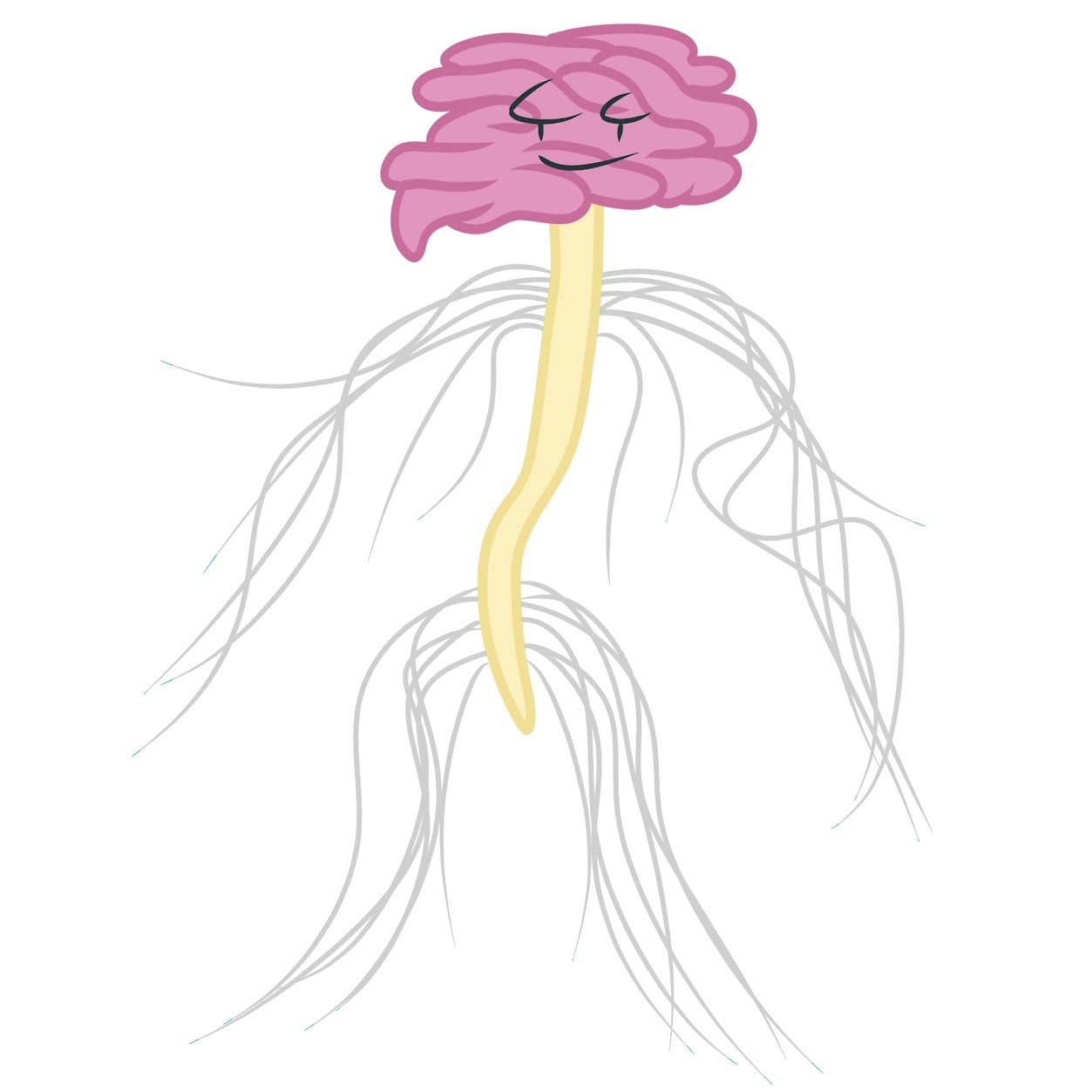
Where integration takes place; includes the brain and a nerve cord (spinal cord)
Peripheral Nervous System
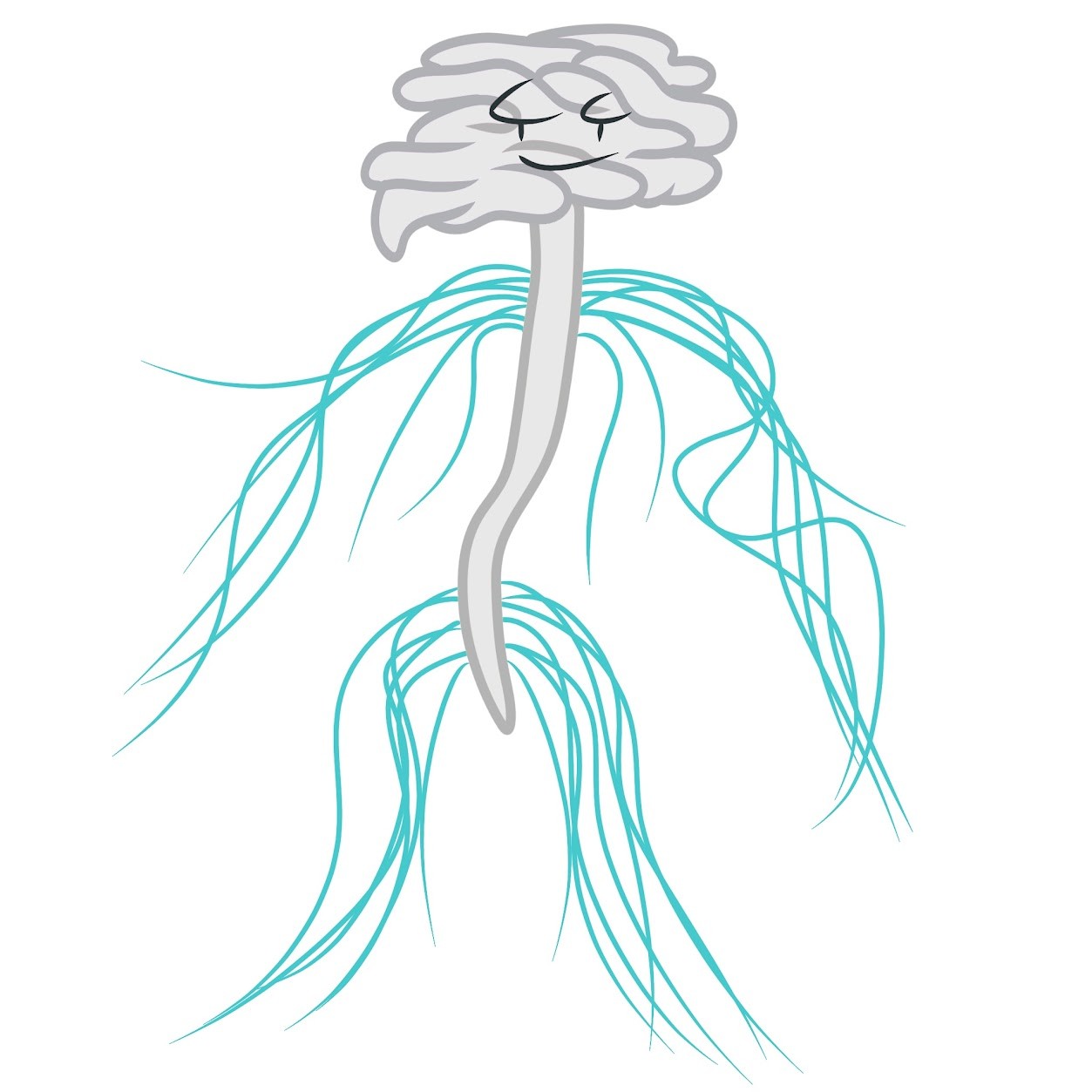
Carries information to and out of the CNS; includes peripheral sensory and motor nerves; regulates movement and the internal environment
What types of matter does the CNS contain?
Gray and white matter
Gray matter
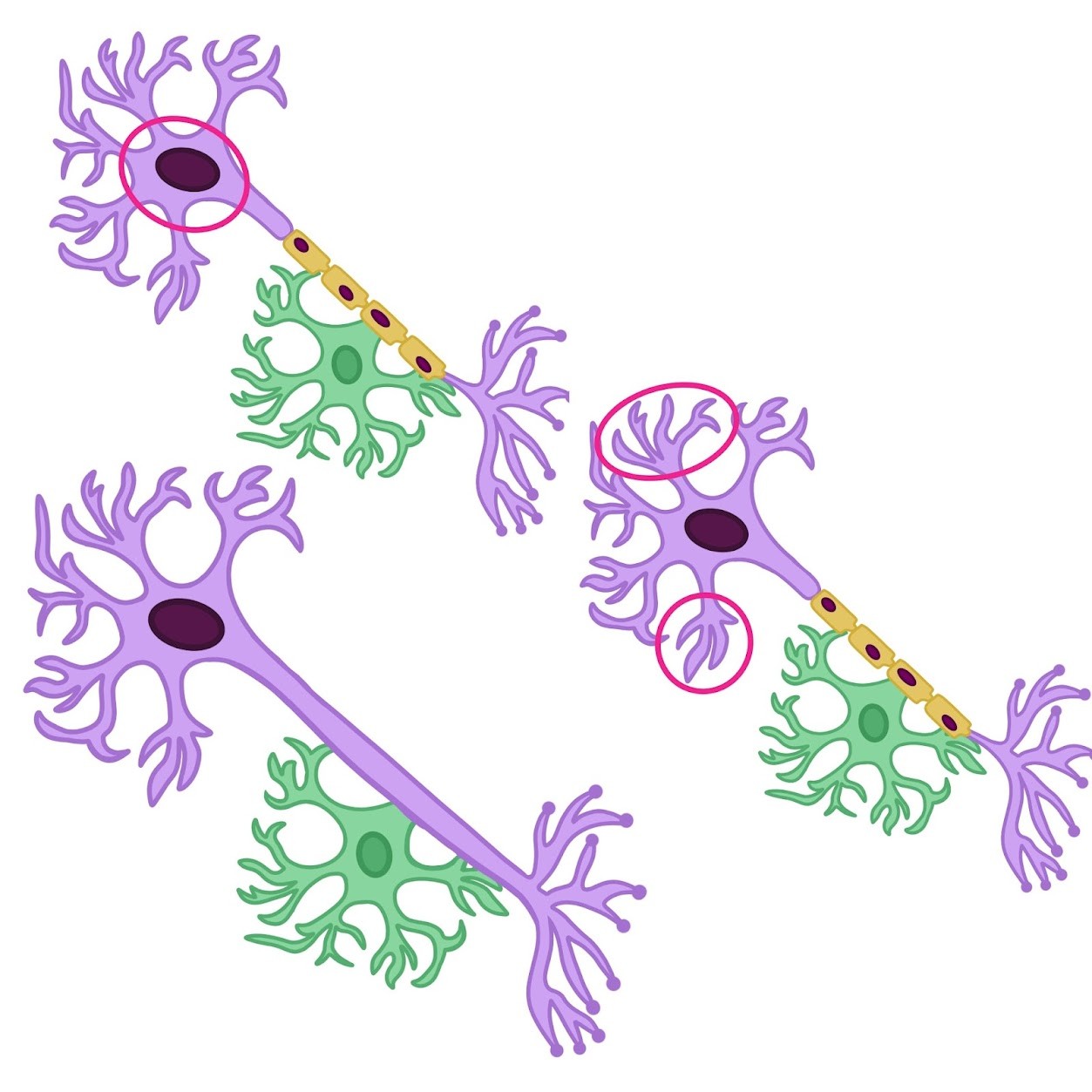
Consists of neuron cell bodies, dendrites, and unmyelinated axons; where integration takes place
White matter
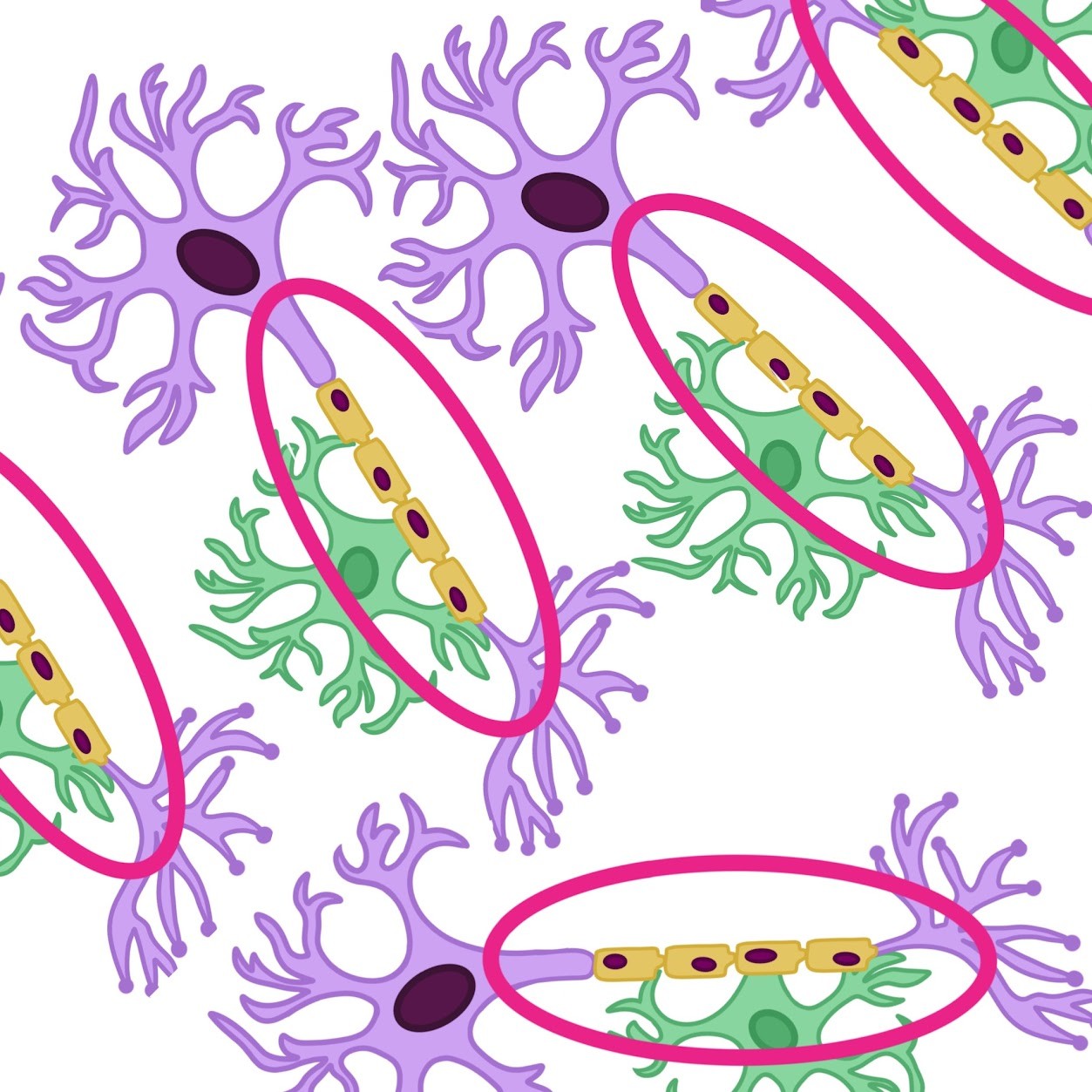
Consists of bundles of myelinated axons
Meninges
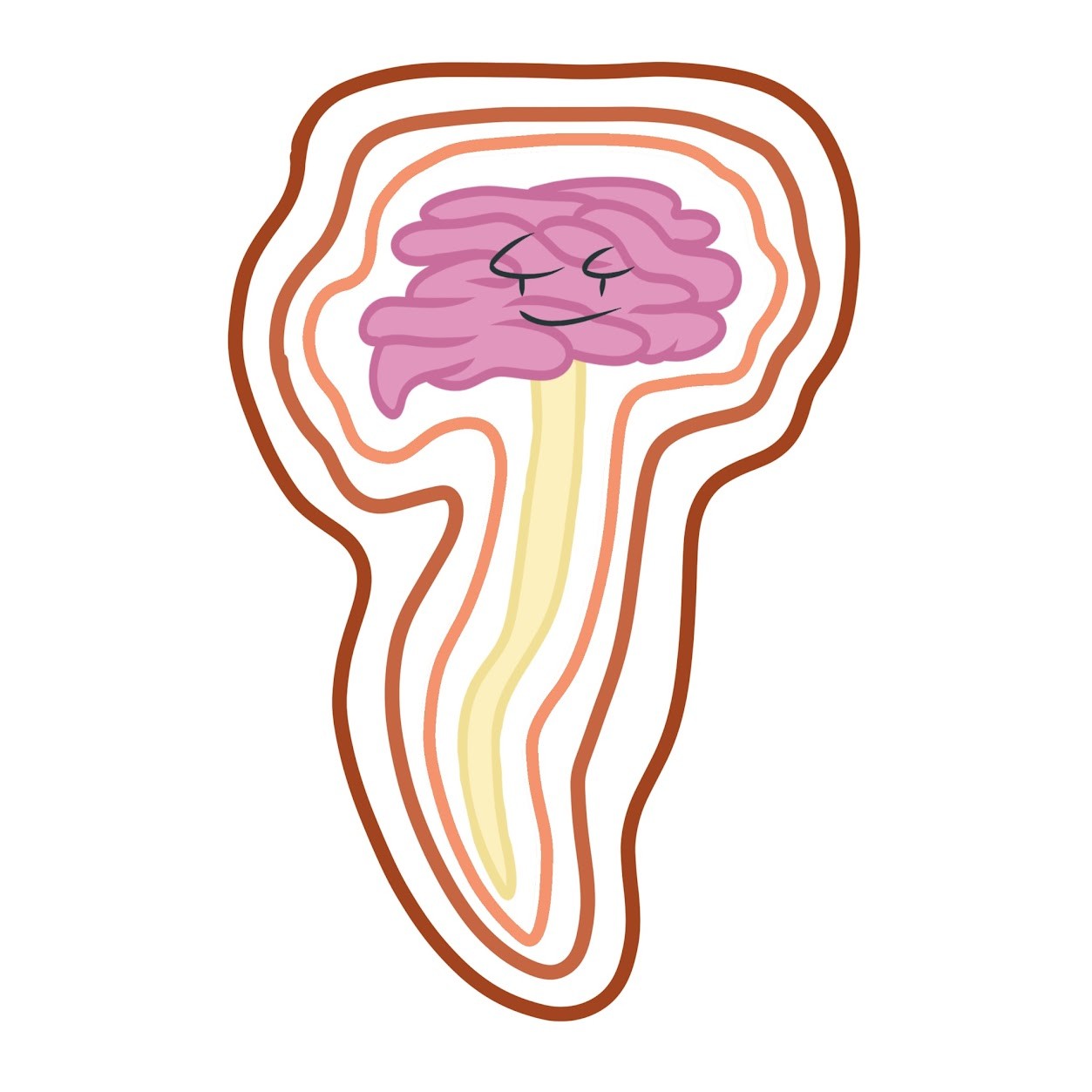
3 protective membranes wrapping the brain and spinal cord
Cerebrospinal fluid
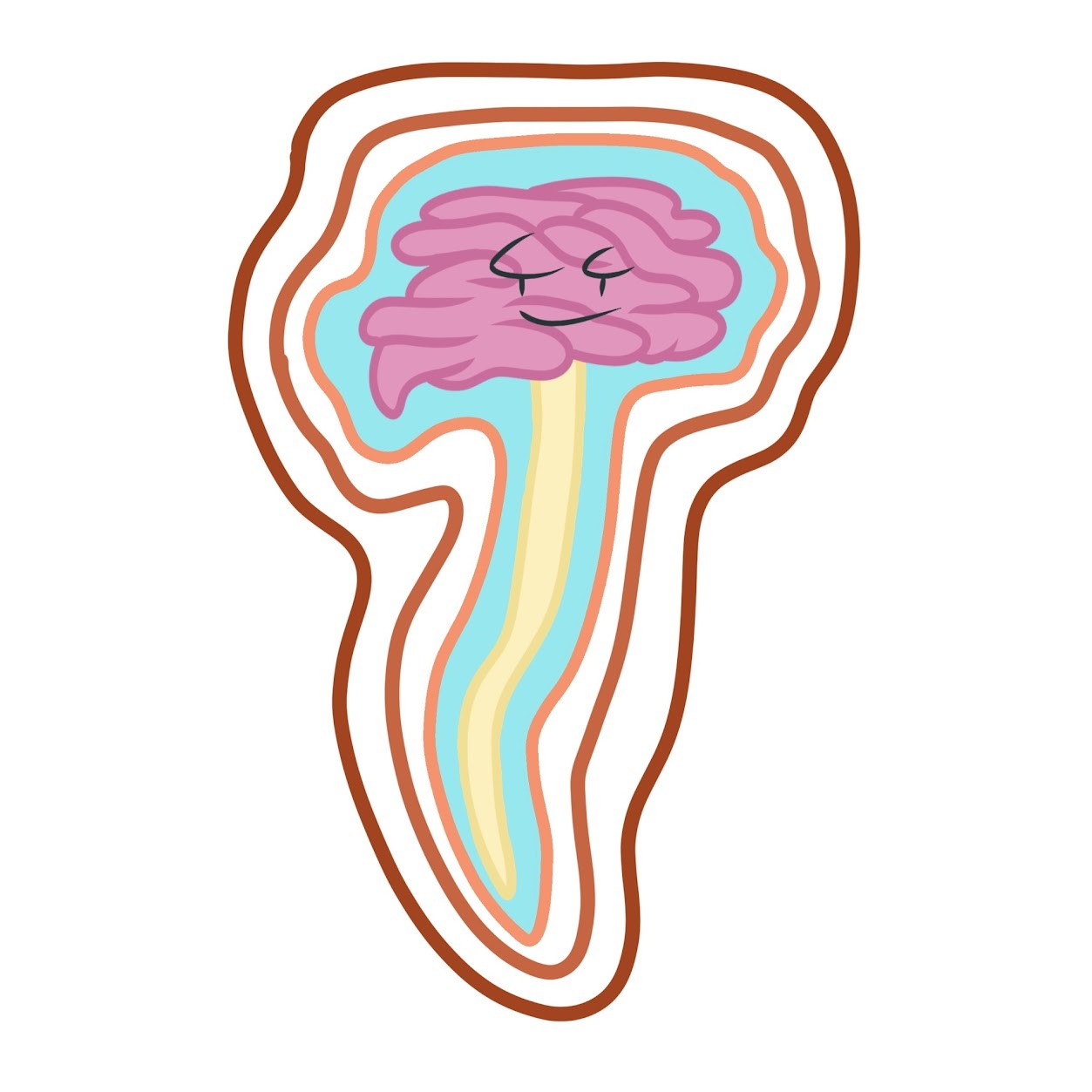
Fills the spaces between the meninges, the central canal of the spinal cord, and the ventricles of the brain
Cerebrospinal fluid functions
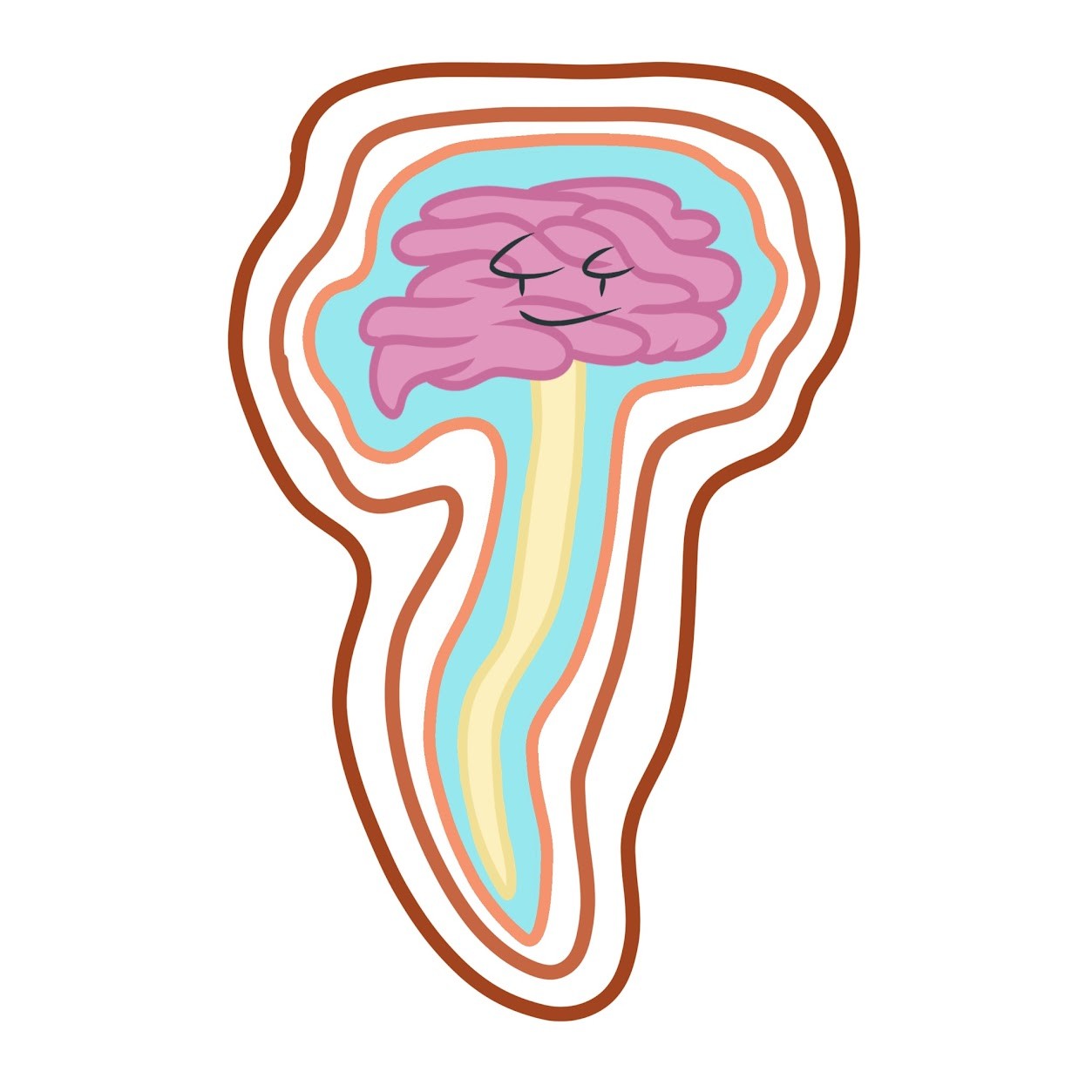
-Filtered from arterial blood
-Cushions the brain and spinal cord
-Provides nutrients
-Removes wastes by draining into veins
Spinal Cord
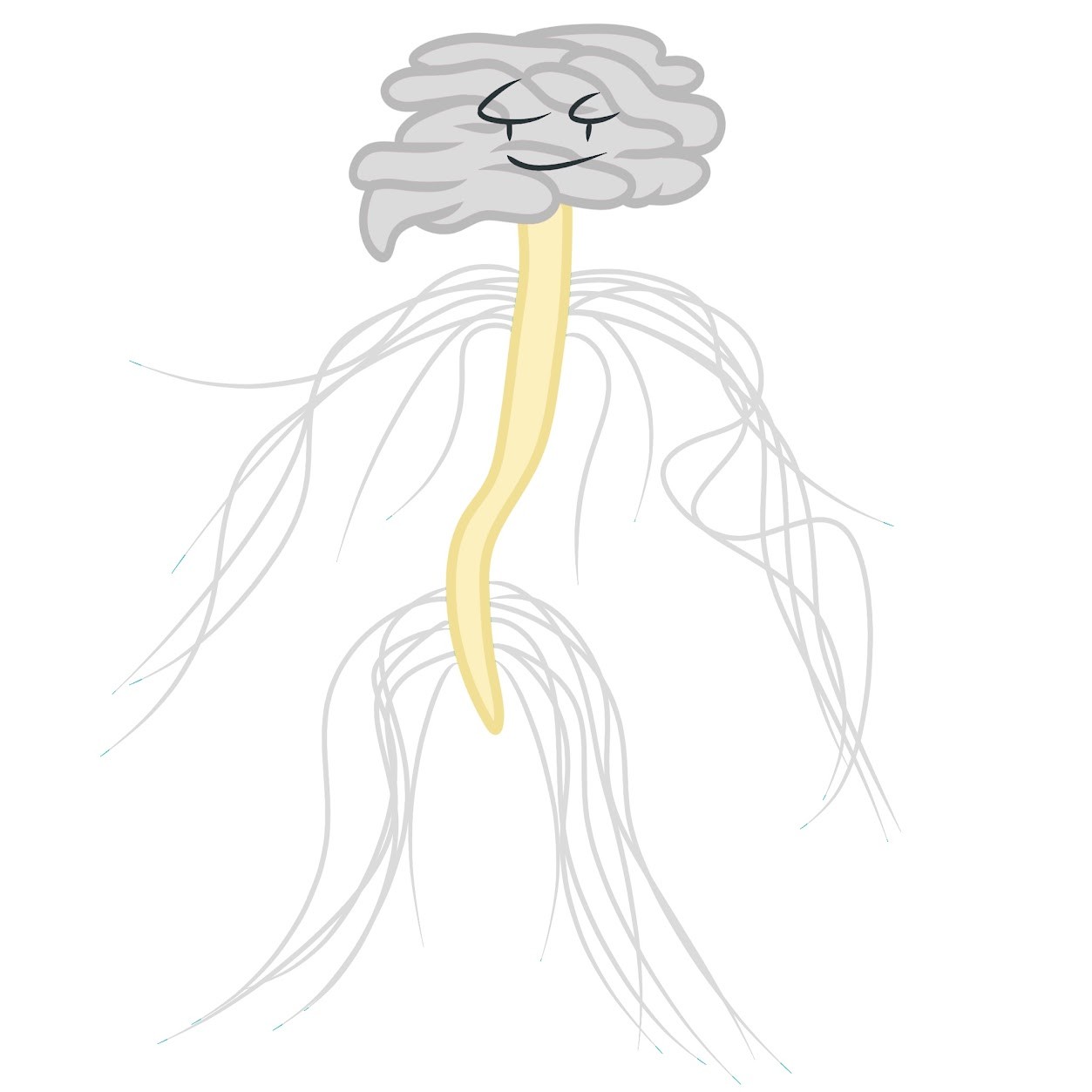
Conveys information to and from the brain; produces reflexes independently of the brain
Reflex
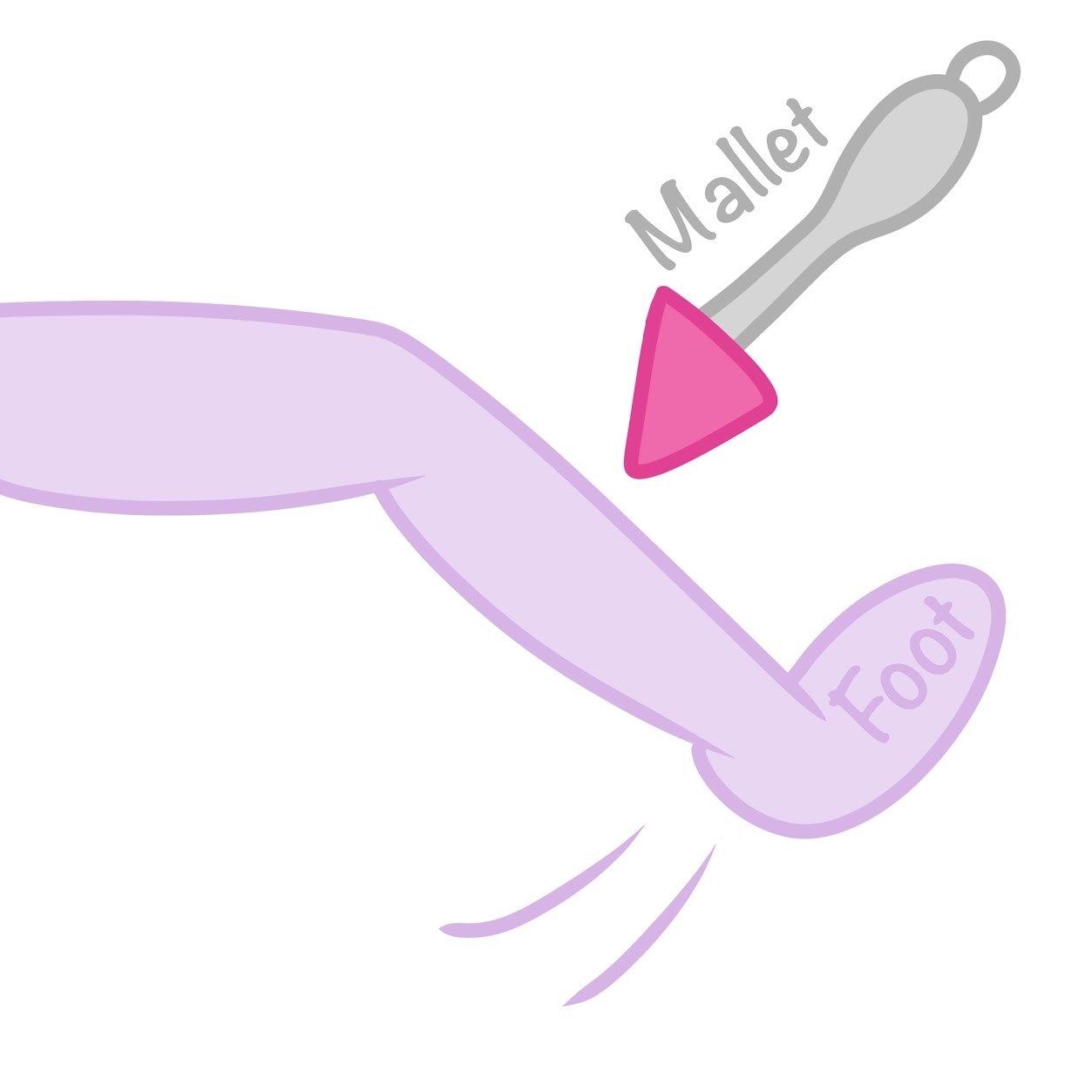
The body's automatic response to a stimulus (ex. doctor using a mallet to trigger a knee-jerk reflex)
Afferent neurons

transmit information to the CNS
Efferent neurons
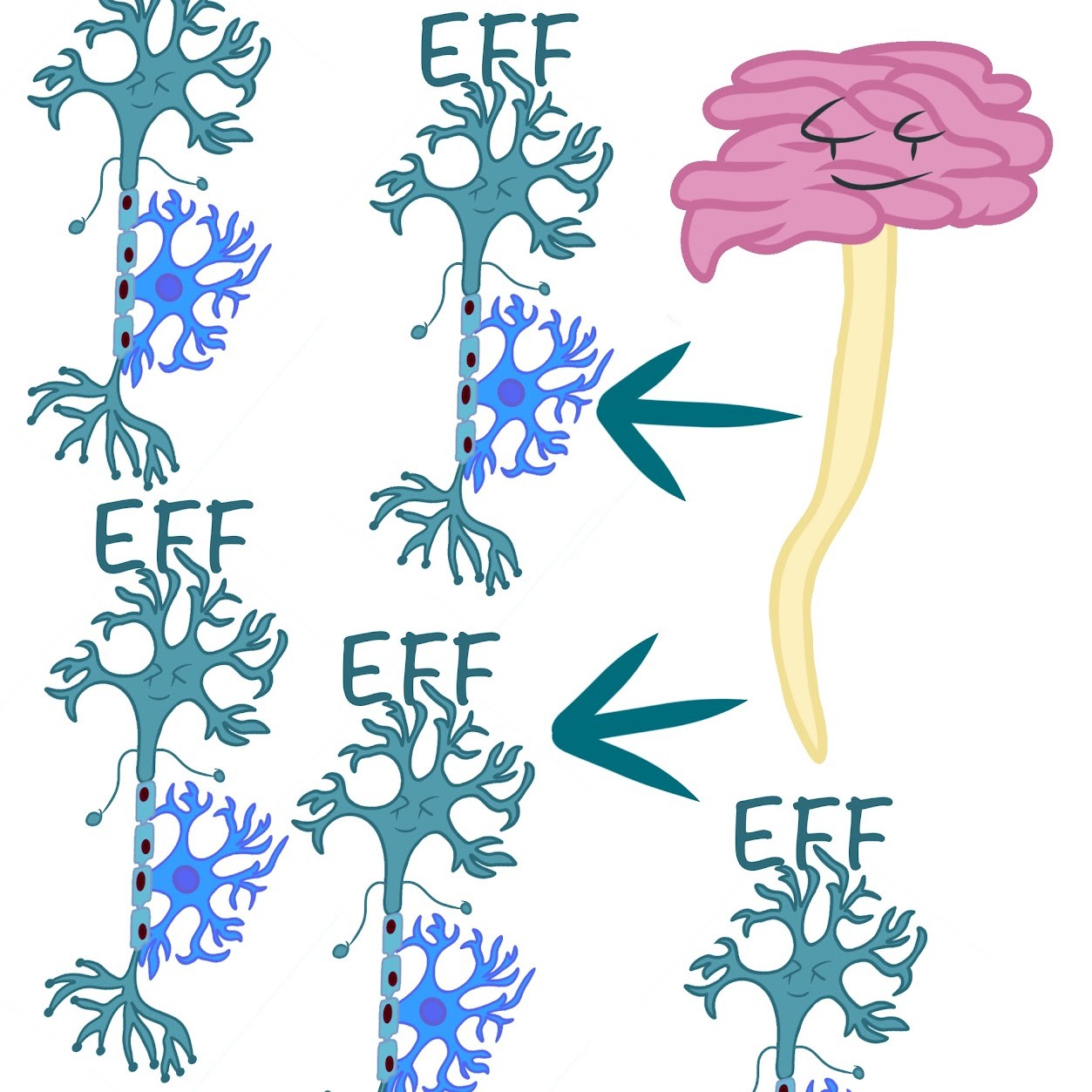
transmit information away form the CNS
Autonomic Nervous System
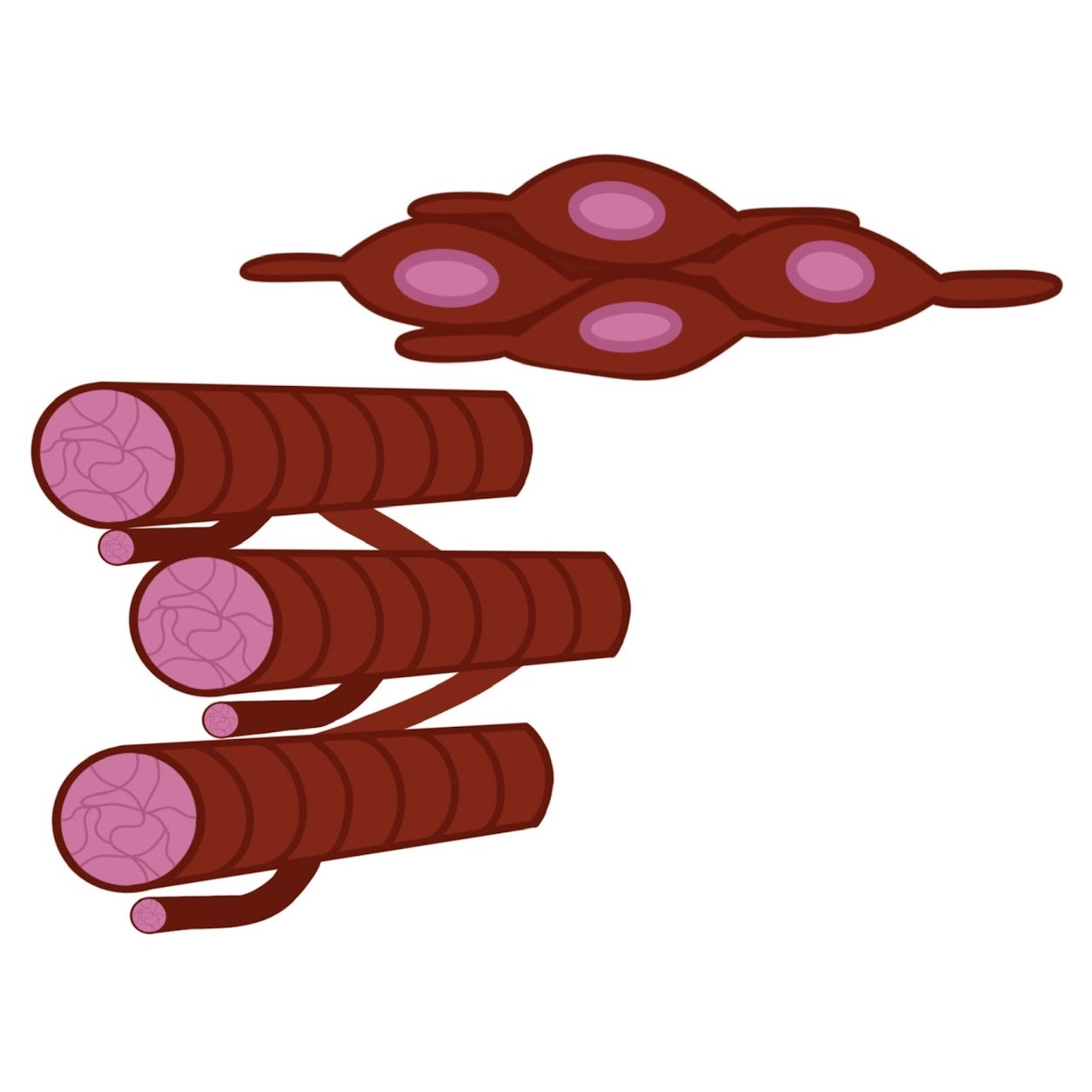
Regulates smooth and cardiac muscles/glands; generally involuntary
Sensory-Somatic (motor) Nervous System
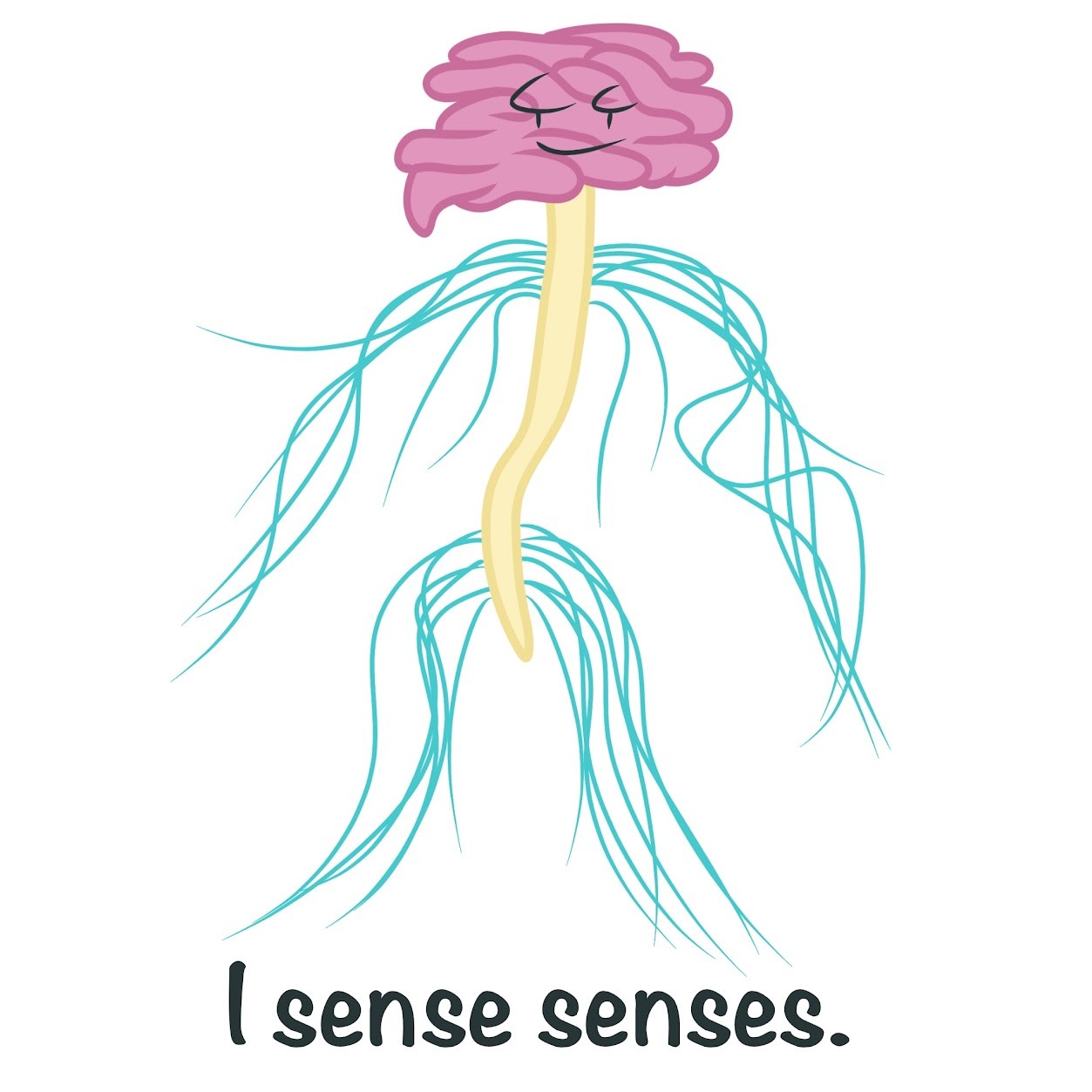
Transmits sensory information from the skin, muscles, and sensory organs to CNS and returns motor commands to the muscles; can be voluntary
2 components of the Autonomic Nervous System
Sympathetic & Parasympathetic
Sympathetic Nervous System
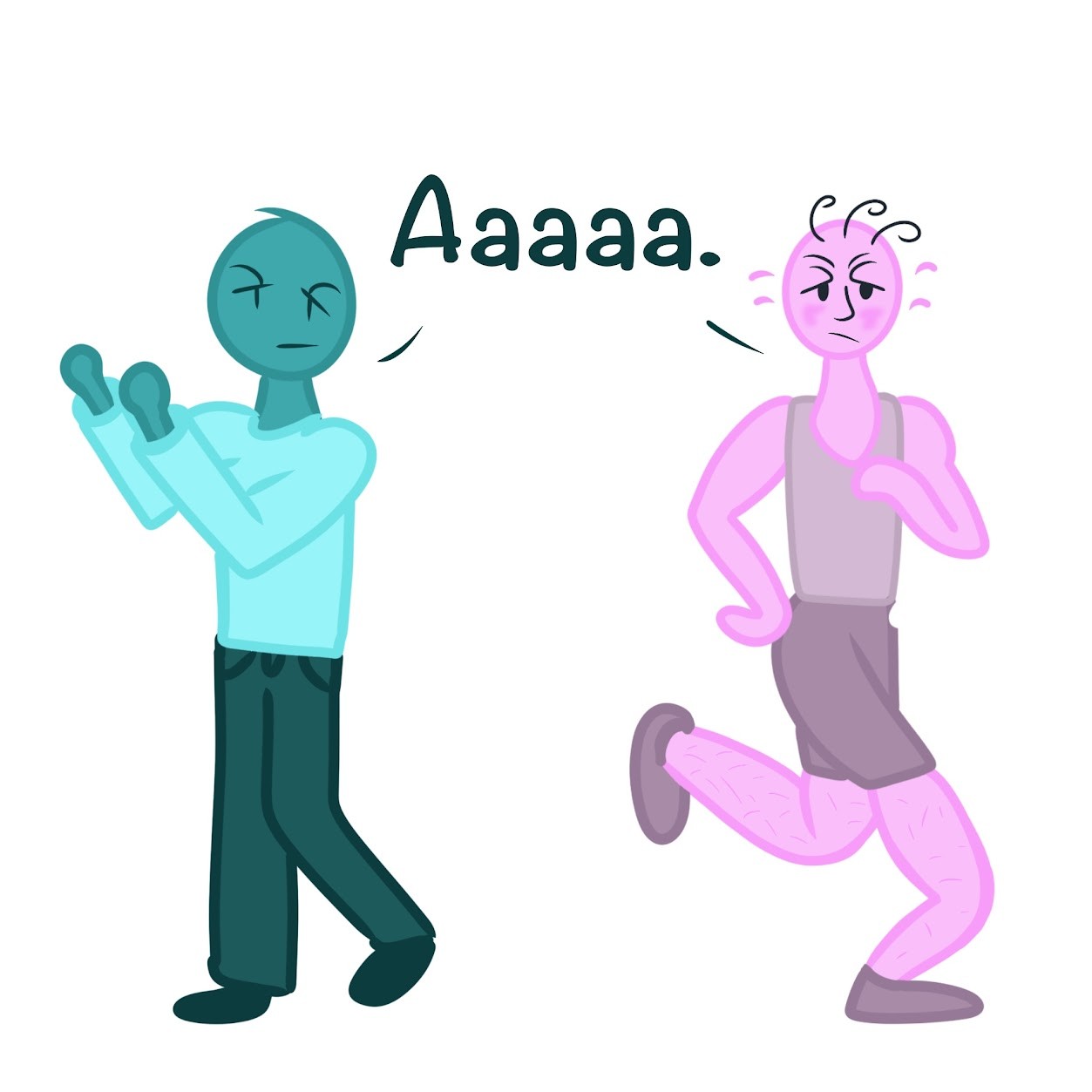
Regulates arousal and energy generation (fight or flight)
Sympathetic Nervous System examples
Dilating pupils, inhibiting salivation, increasing heart rate, dilating bronchi
Parasympathetic Nervous System

Has antagonistic effects on target organs and promotes calming and a return to "rest and digest" functions
Sensory processes
Convey information about an animal's environment to its brain where it's processed to elicit a response
Examples of sensory related processes on a star-nosed mole
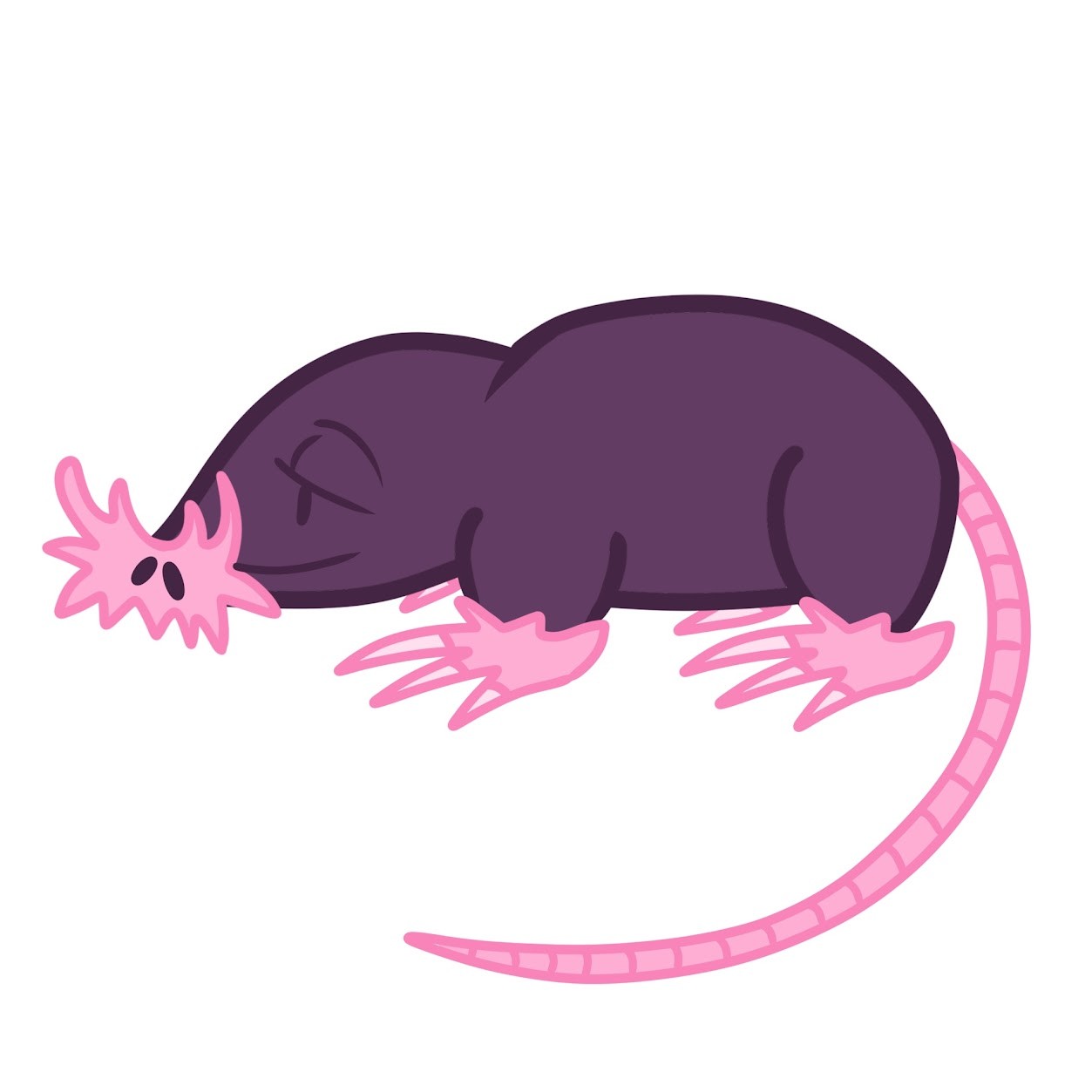
-Great excavators
-30,000 sense organs
-Fastest eating animal
-Can smell underwater via air bubbles
Our 5 special senses
Vision, Hearing, Equilibrium (balance/body position), Olfaction (smell), Gustation (taste)
Olfaction
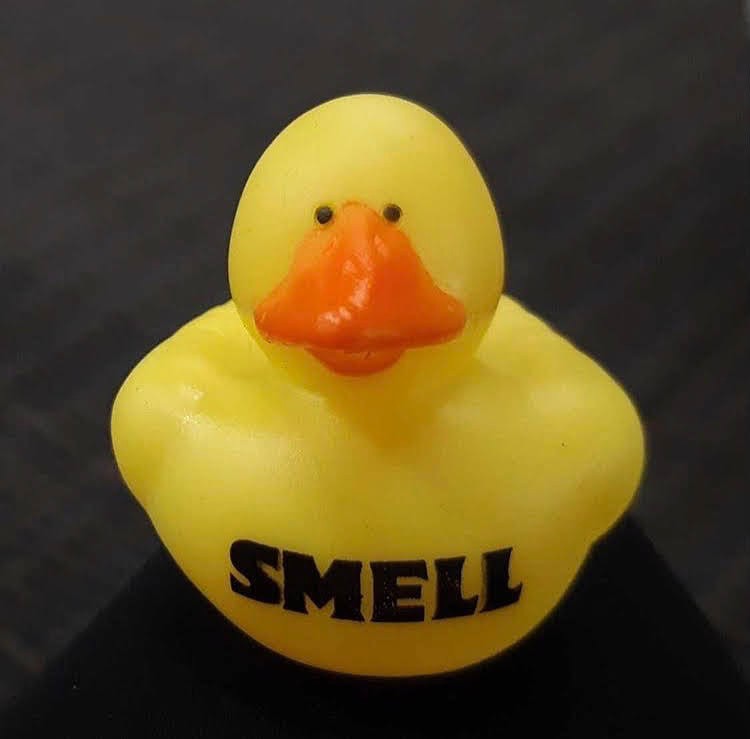
Sense of Smell
Gustation
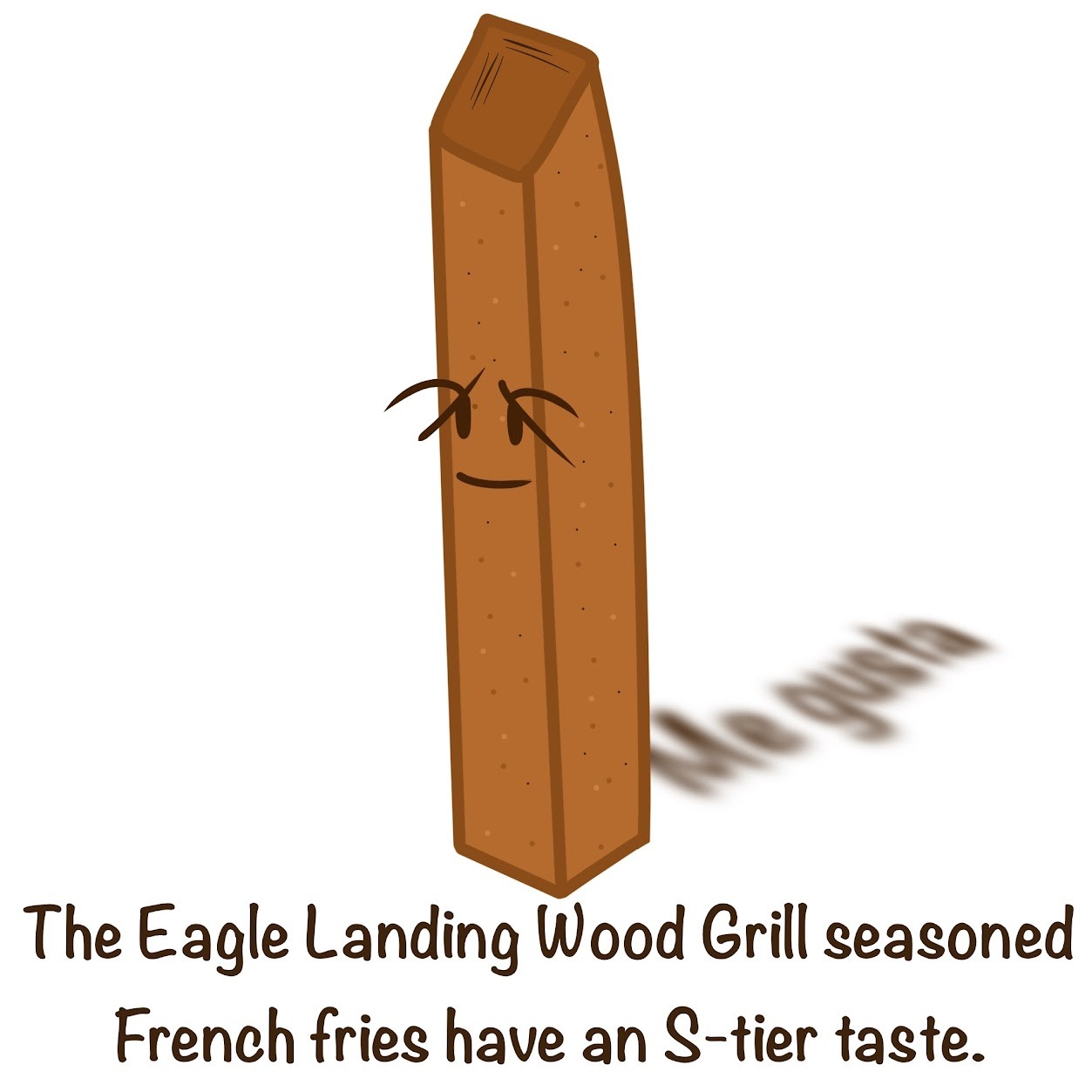
Sense of Taste
Somatosensation
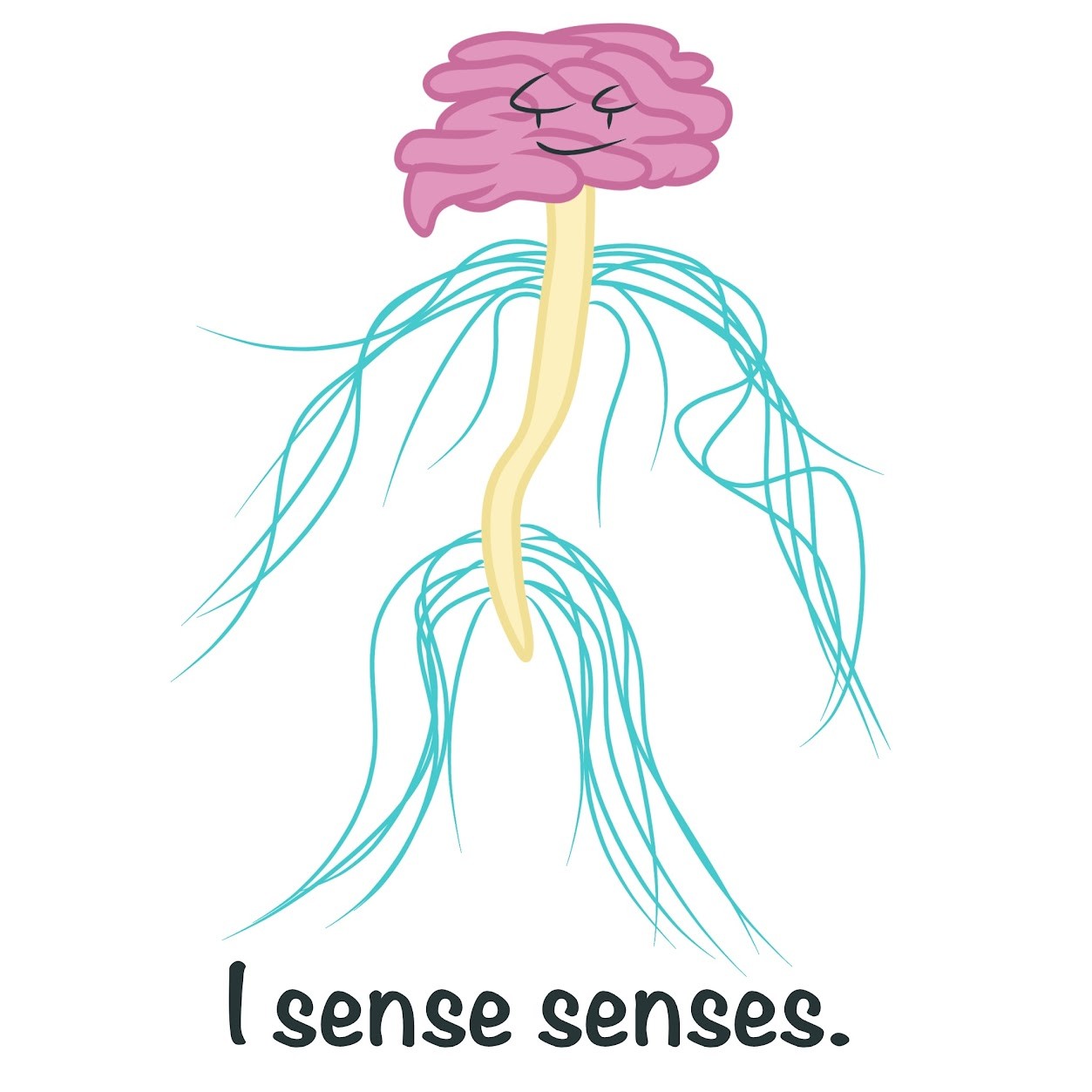
General senses, respond to stimuli like temperature, pain, pressure, and vibration; also includes sense of limb position and movement
4 basic functions of sensory pathways

Reception, Transduction, Encoding & Transmission, Perception
Reception
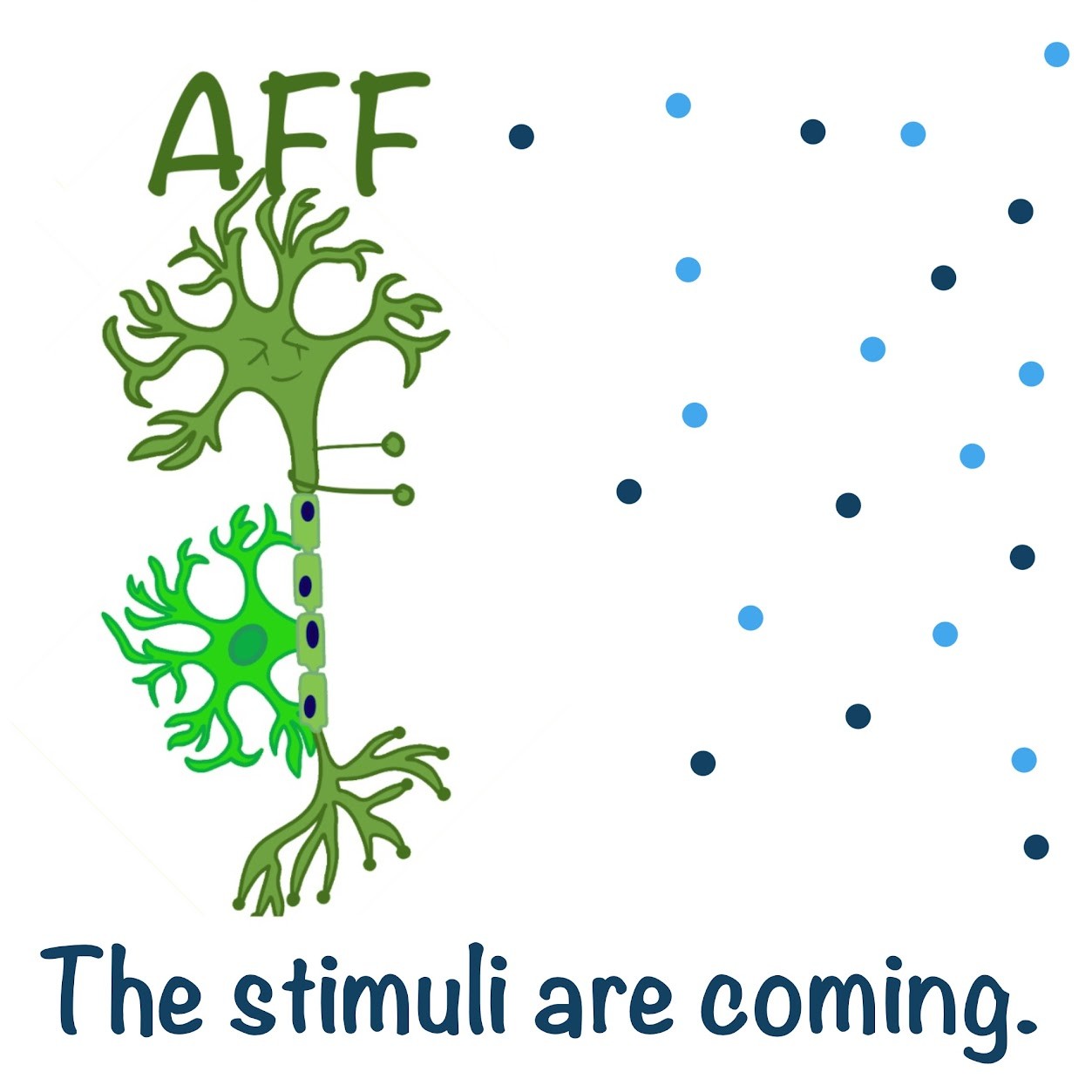
Detection of stimuli by sensory receptors both inside and outside the body
Sensory receptors can be:
-specialized neurons that directly receive the signal
-specialized (non-neuronal) cells that regulate neurons
In neuronal receptors, the receptor
is the afferent neuron
In non-neuronal receptors, the receptor
regulates afferent neurons
Transduction

The stimulus is converted into a change in membrane potential of a sensory receptor (receptor potential)
Receptor potentials are graded potentials, which means
The magnitude varies with the strength of the stimulus; must be sufficiently strong to induce an action potential
Four aspects of sensory stimuli are encoded by sensory systems
-Type
-Location
-Duration
-Relative intensity
Relative intensity can be encoded and transmitted in 2 ways:
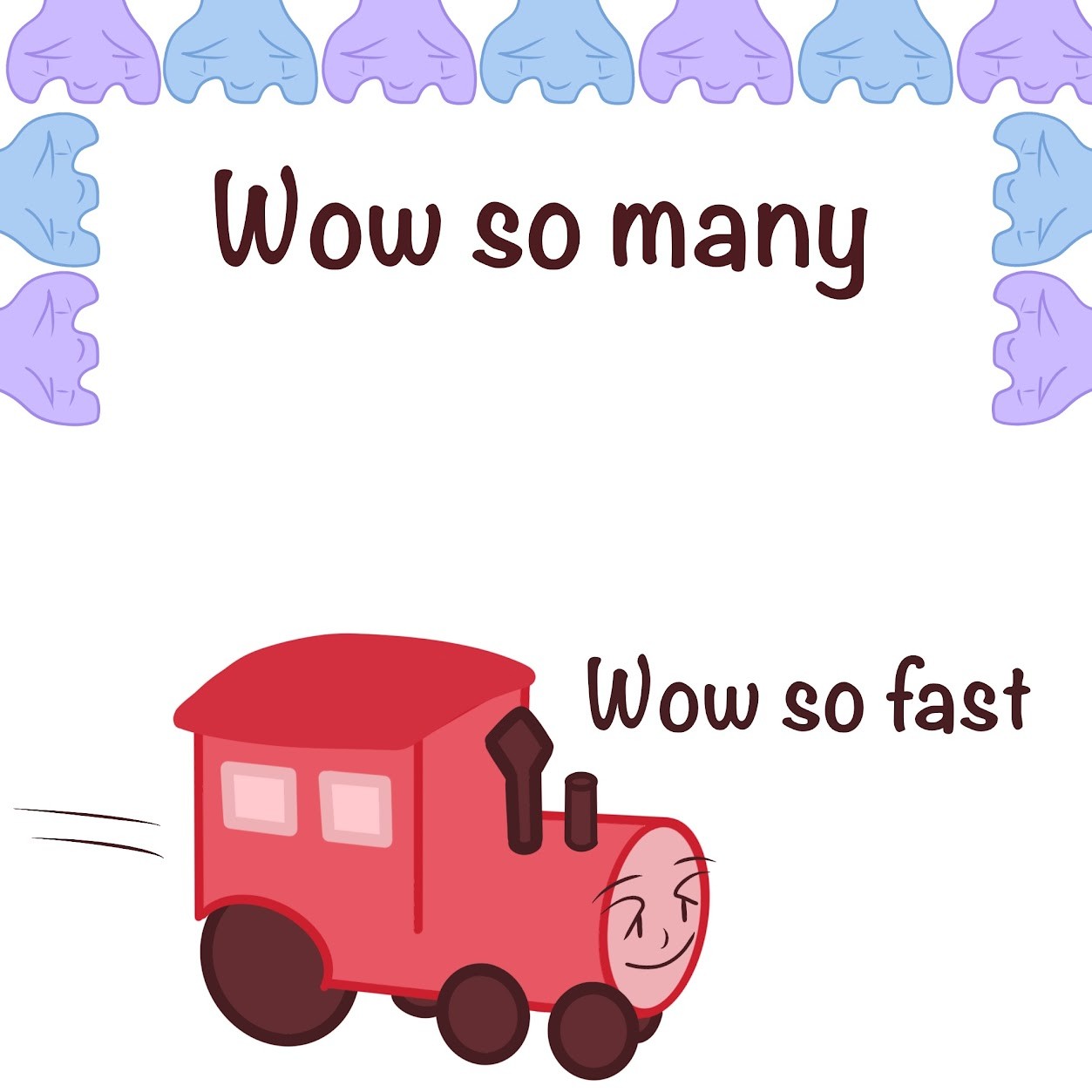
-Number of receptors that get activated (more action potentials from large number of adjacent receptors)
-Rate of action potentials produced by the sensory receptor (more rapid train of action potentials)
Perceptions
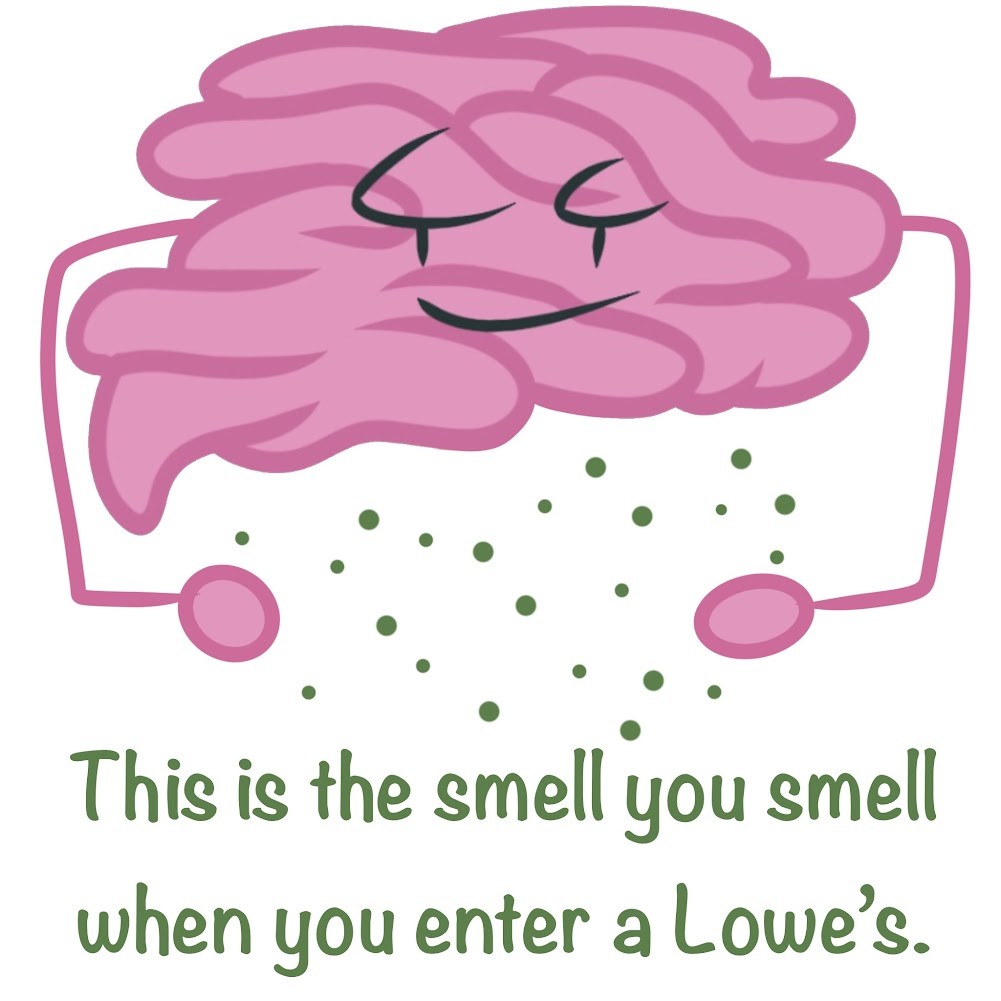
The brain's construction of stimuli and do not exist outside of the brain
Examples of perception
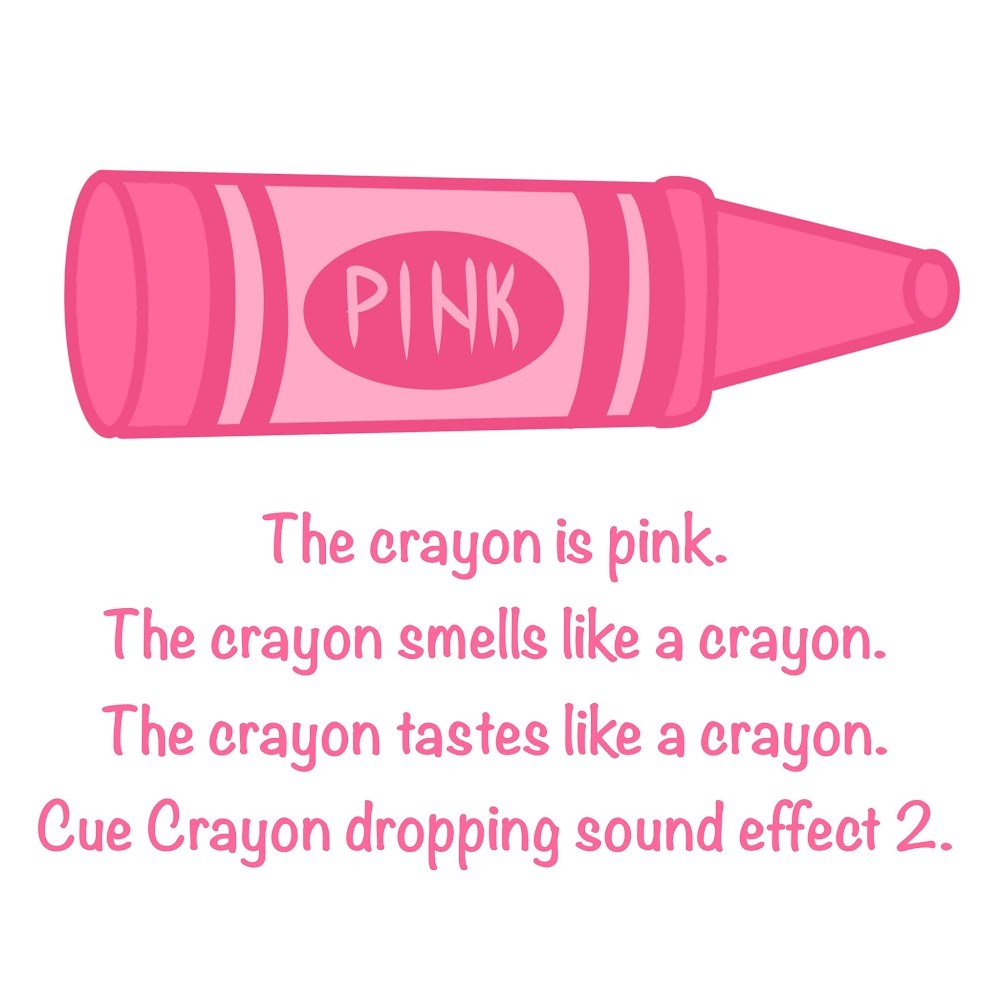
colors, smells, tastes, sounds
5 types of sensory receptors
Mechanoreceptors, Chemoreceptors, Electromagnetic receptors, Thermoreceptors, Pain receptors
Mechanoreceptors
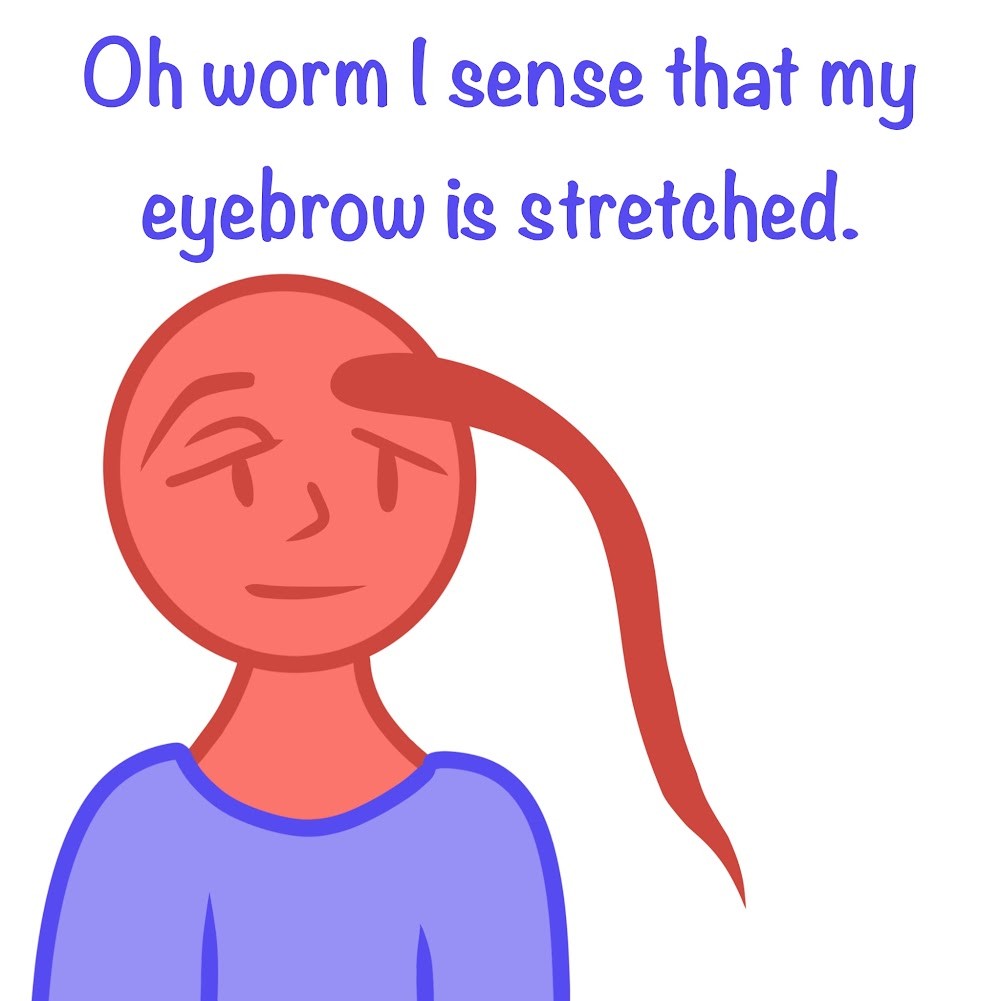
Sense physical deformation caused by stimuli such as pressure, stretch, motion, and sound
What structures are mechanoreceptors linked to?
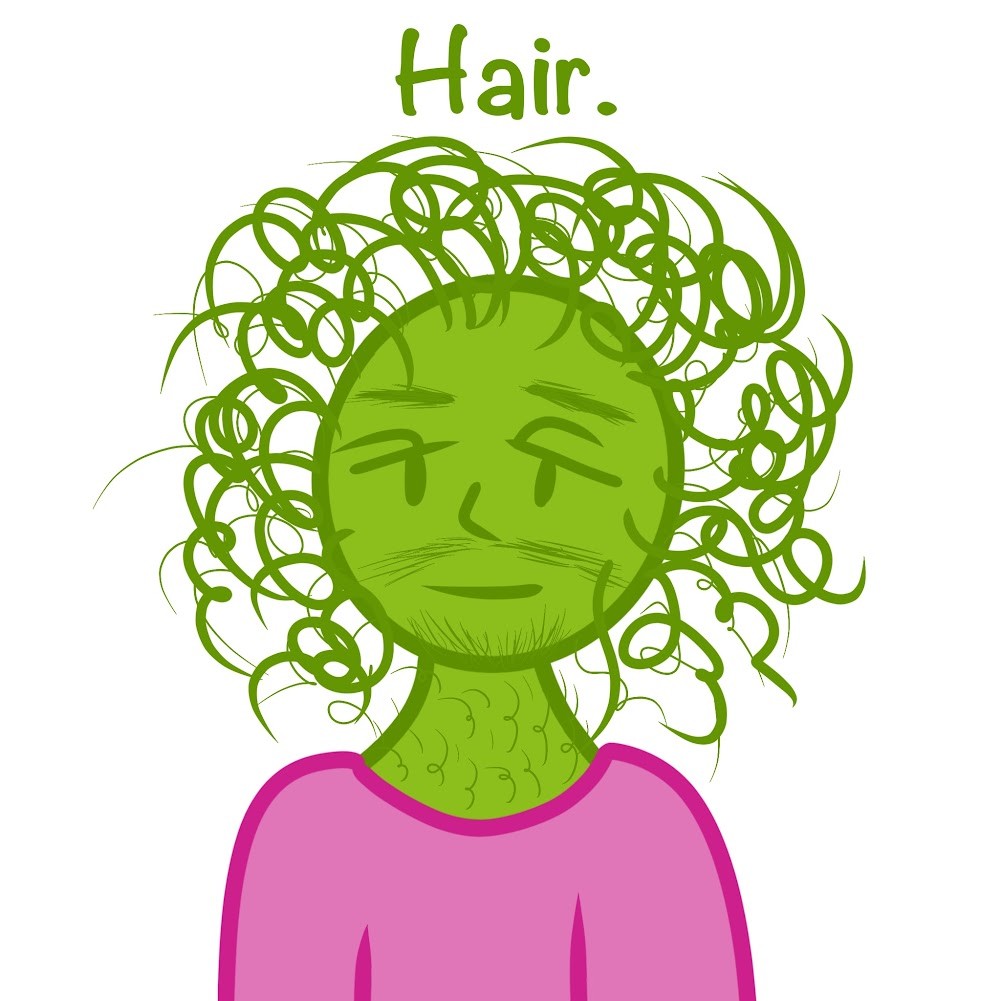
Structures that extend outside the cell (hairs or cilia)
Sense of touch is affected by
location of receptors and surrounding connective tissue
2 types of chemoreceptors
General and specific
General chemoreceptors
Transmits information about the total solute concentration of a solution
Example of general chemoreceptors
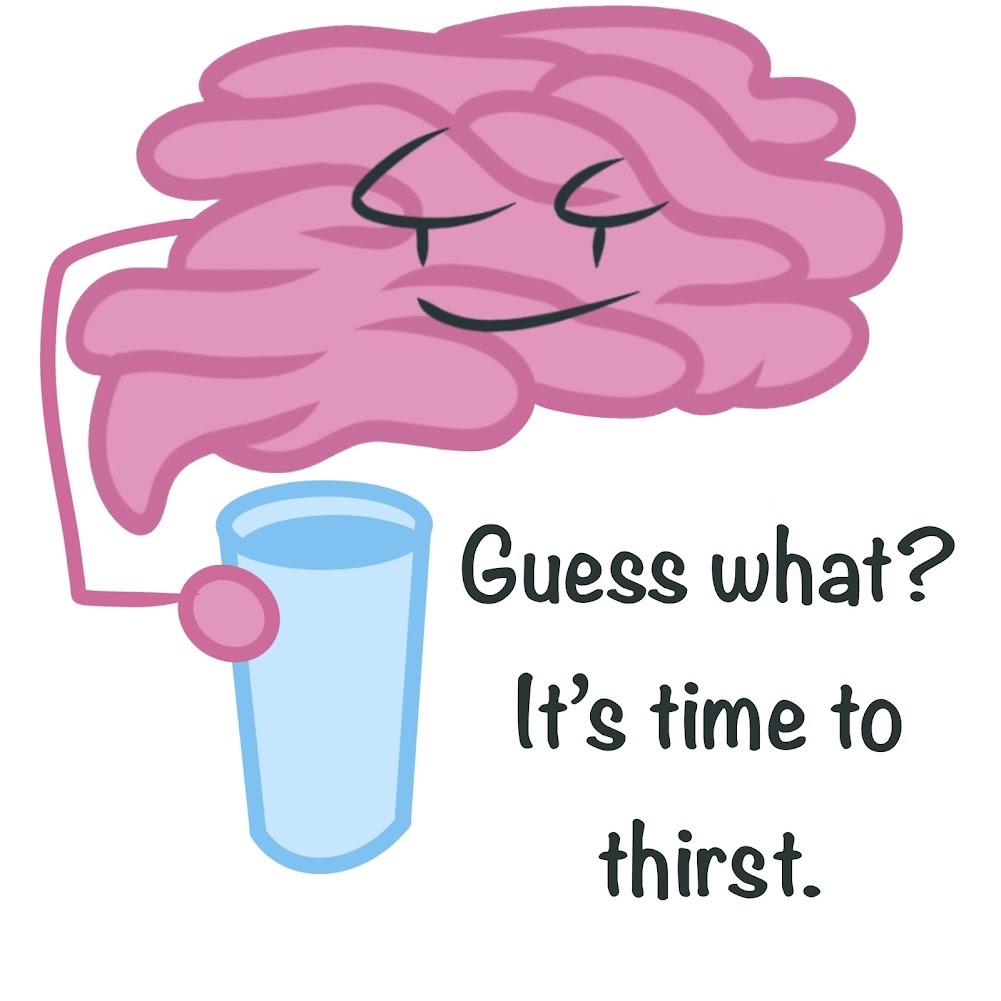
Osmoreceptors in mammalian brain respond to increases in osmolarity and stimulate thirst
Specific chemoreceptors
Respond to individual kinds of molecules
Examples of specific chemoreceptors
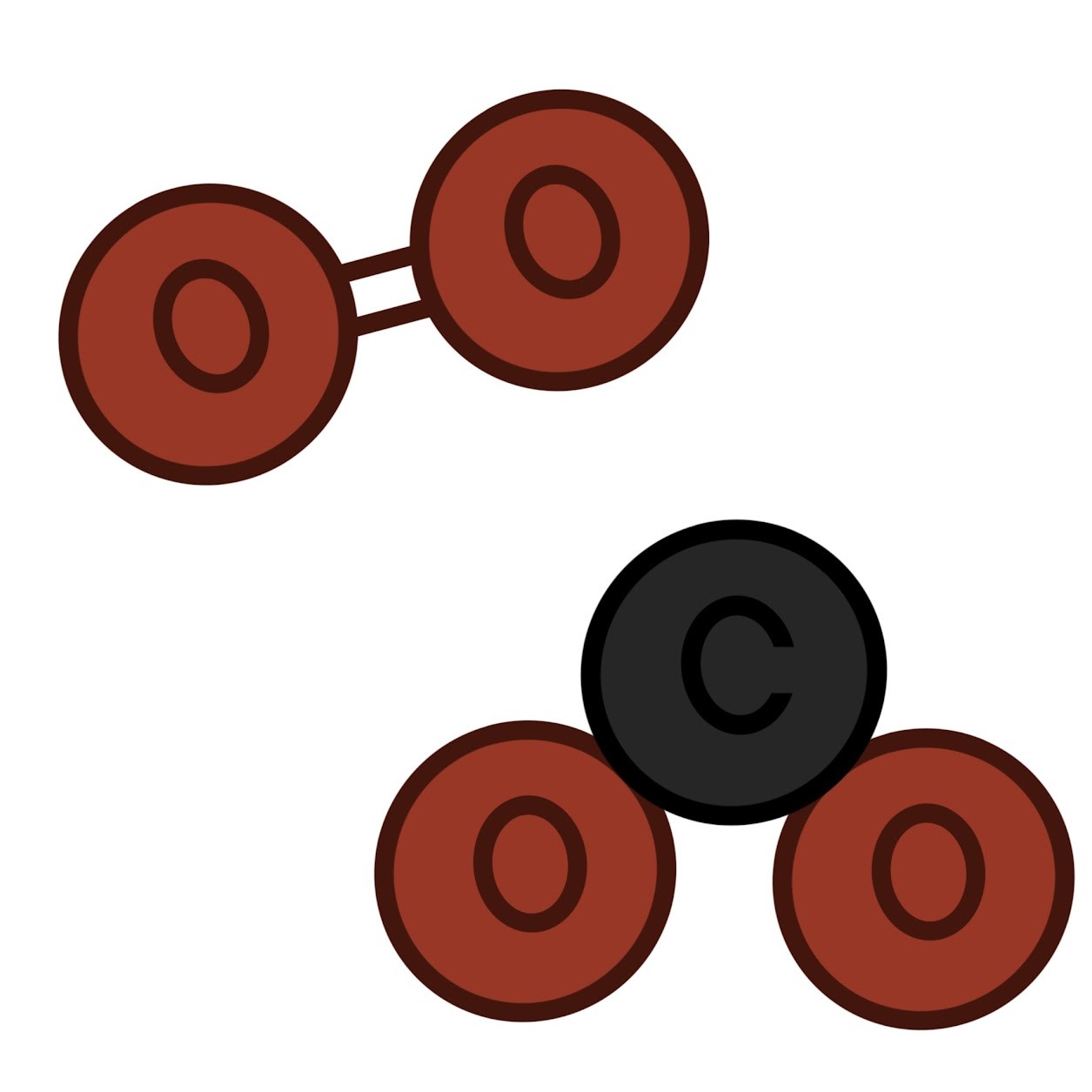
glucose, CO2, O2, animo acids
Electromagnetic Receptors
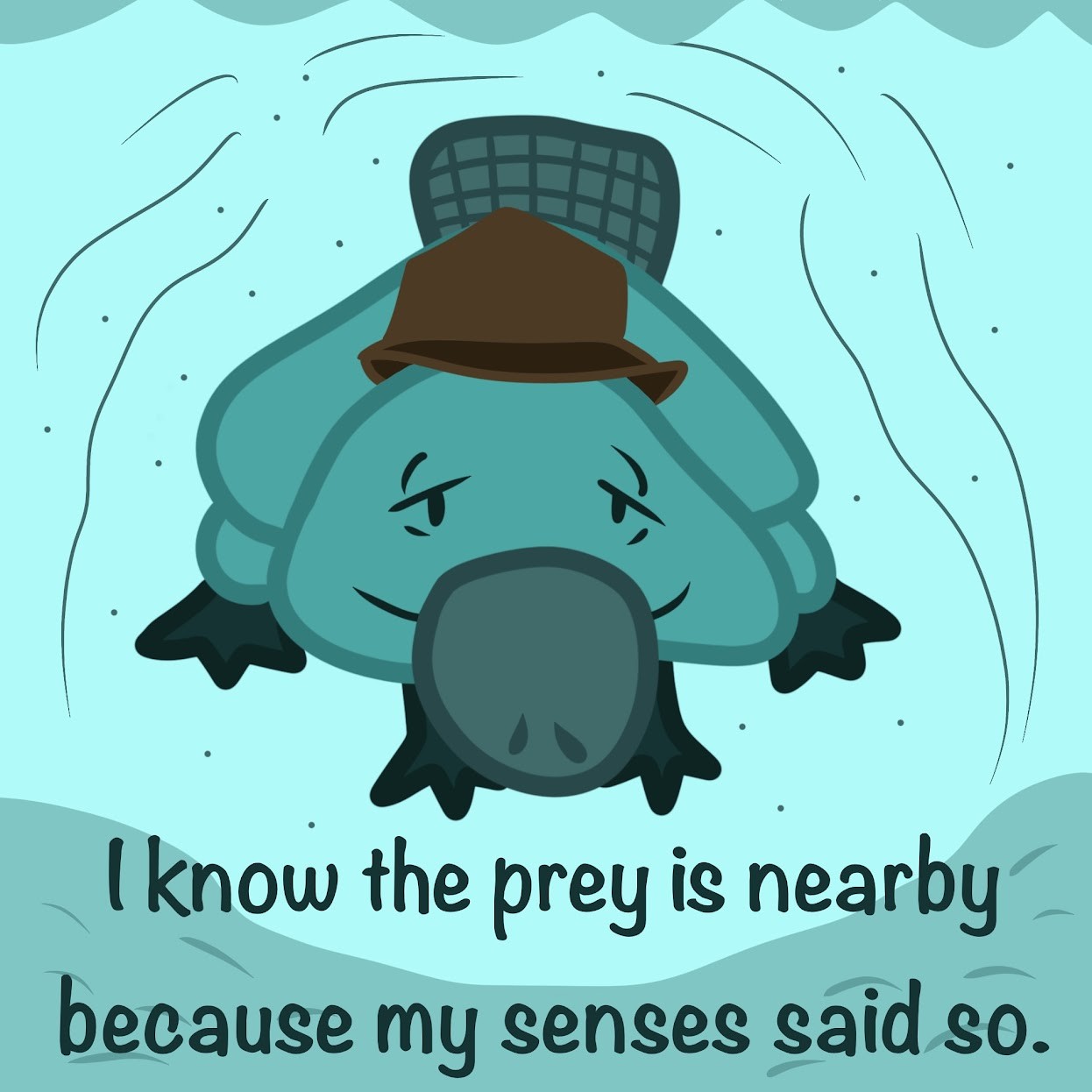
Detect electromagnetic energy such as light, electricity, and magnetism
How do animals migrate?
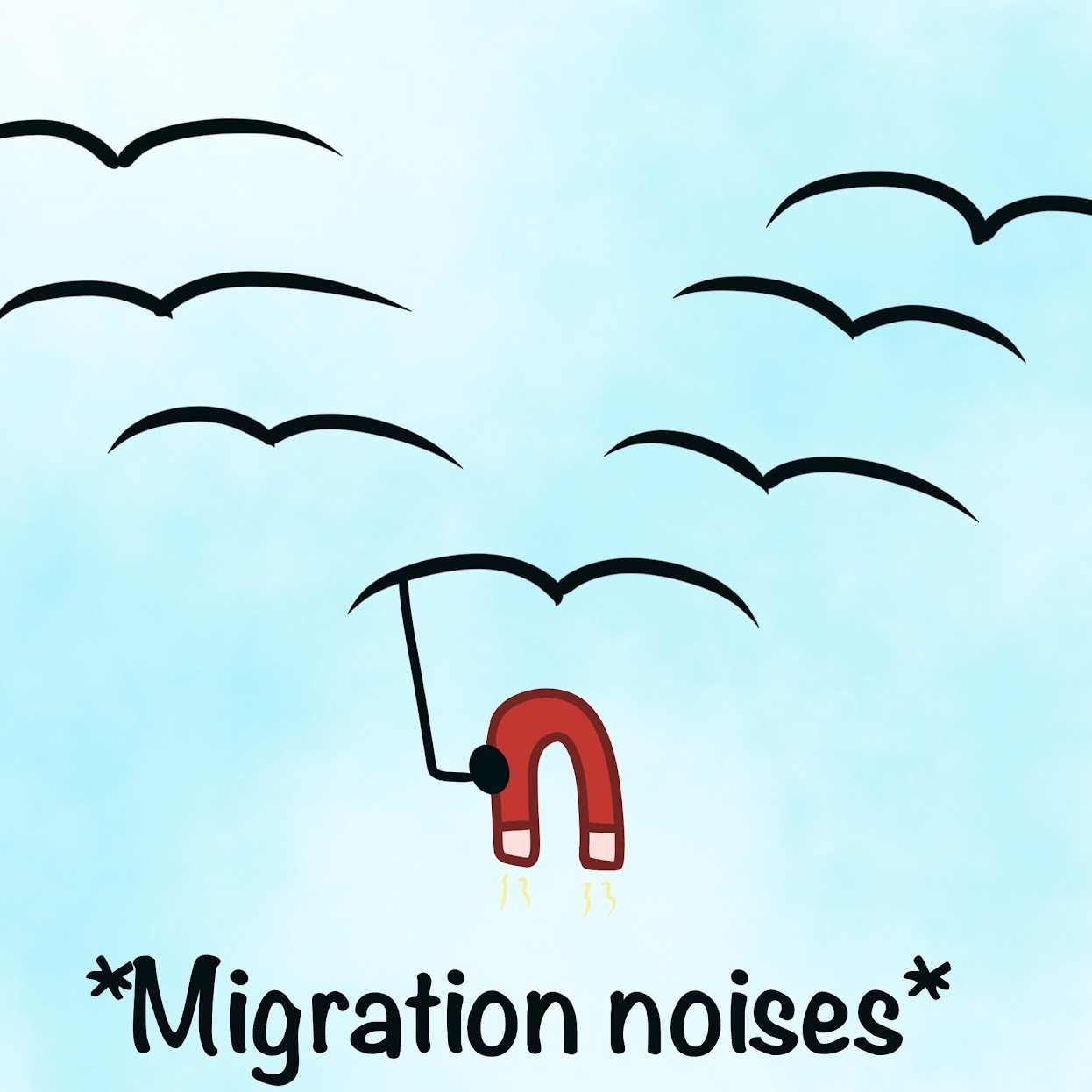
By using the Earth's magnetic fields to orient themselves
Thermoreceptors
Detect heat or cold
Snakes have sensitive infrared receptors that do what?
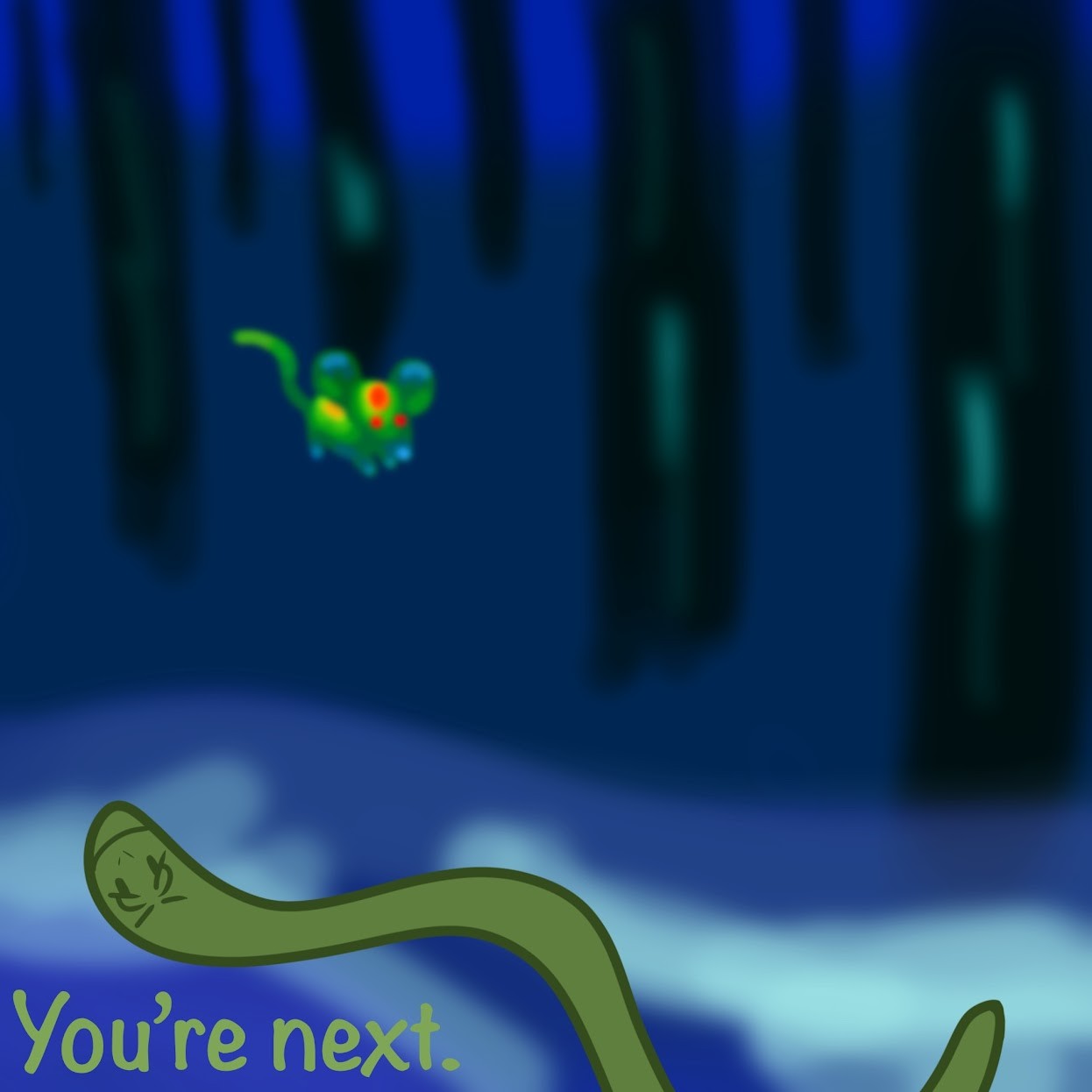
Detect body heat of prey against a colder background
Examples of chemicals that can mimic heat or cold

Capsaicin (found in hot peppers) and menthol
Pain receptors (nociceptors)
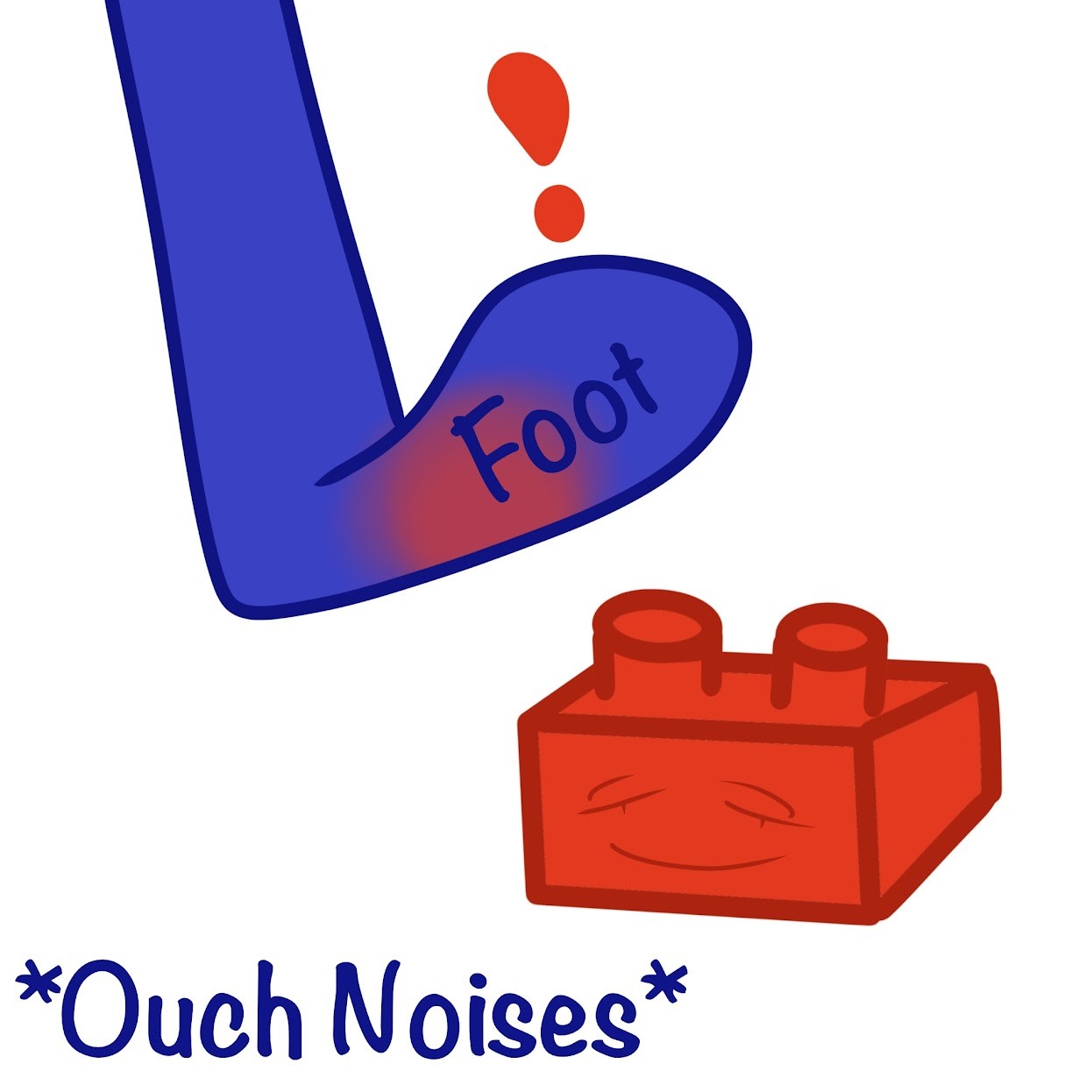
Class of naked dendrites in the epidermis that responds to excess heat, pressure, or chemicals released from damaged or inflamed tissues
Hearing (audition)
Perception of sound; form of mechanoreception
Vestibular System

Perception of body movement and balance/equilibrium; form of mechanoreception
Sound waves
Pressure waves that move through a medium, such as air or water
Wavelength/frequency corresponds to
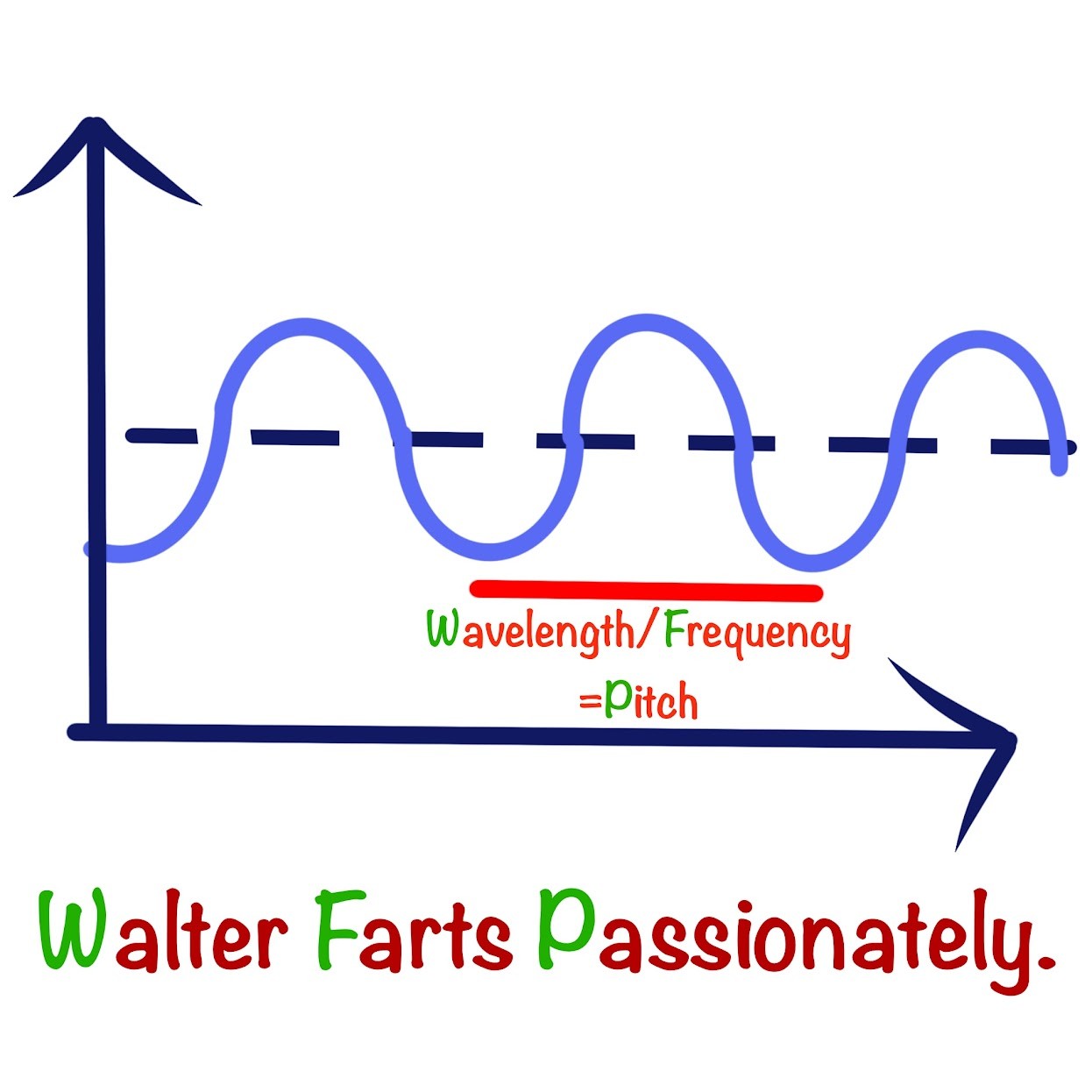
Pitch
Amplitude corresponds to
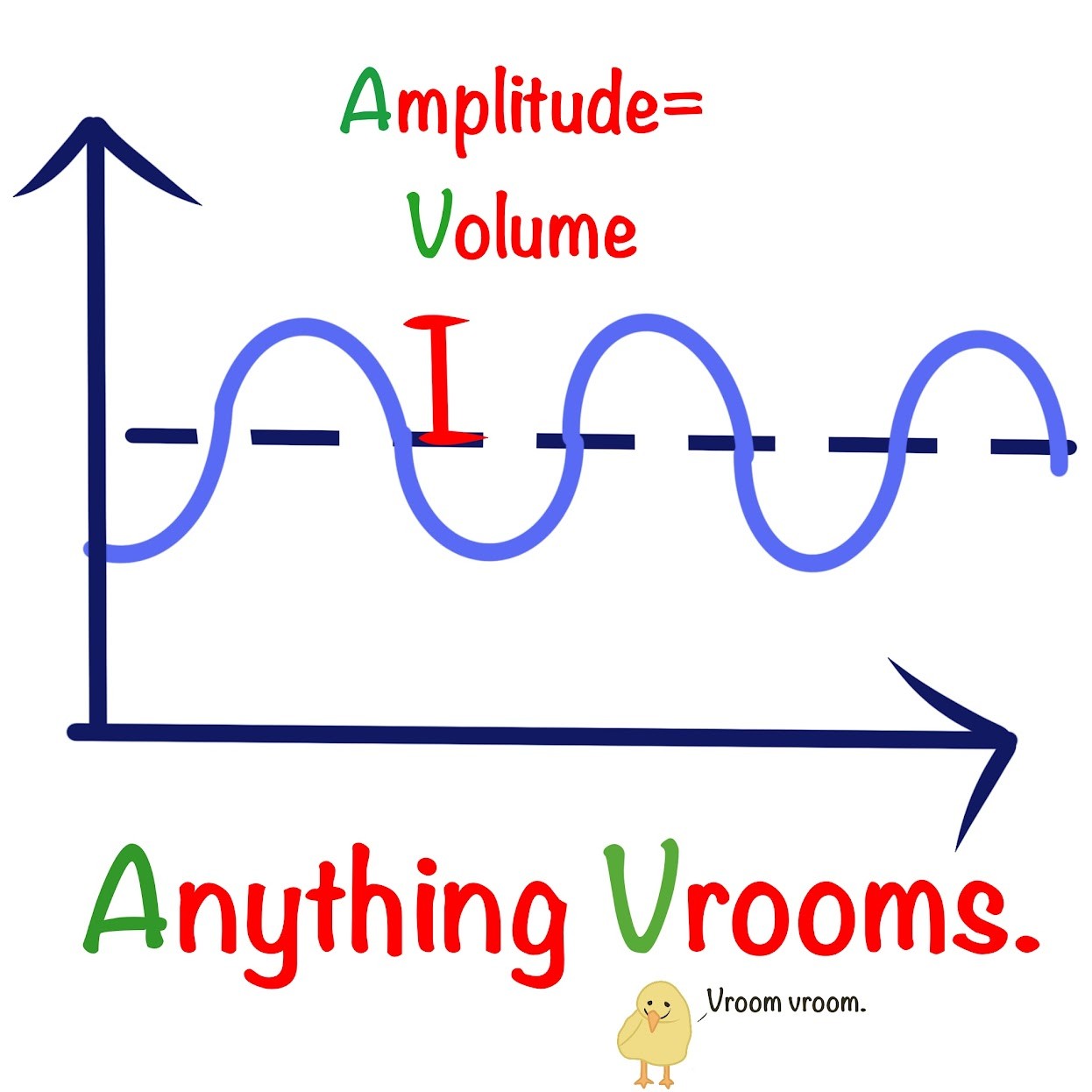
Volume
1st step of ear sound processing
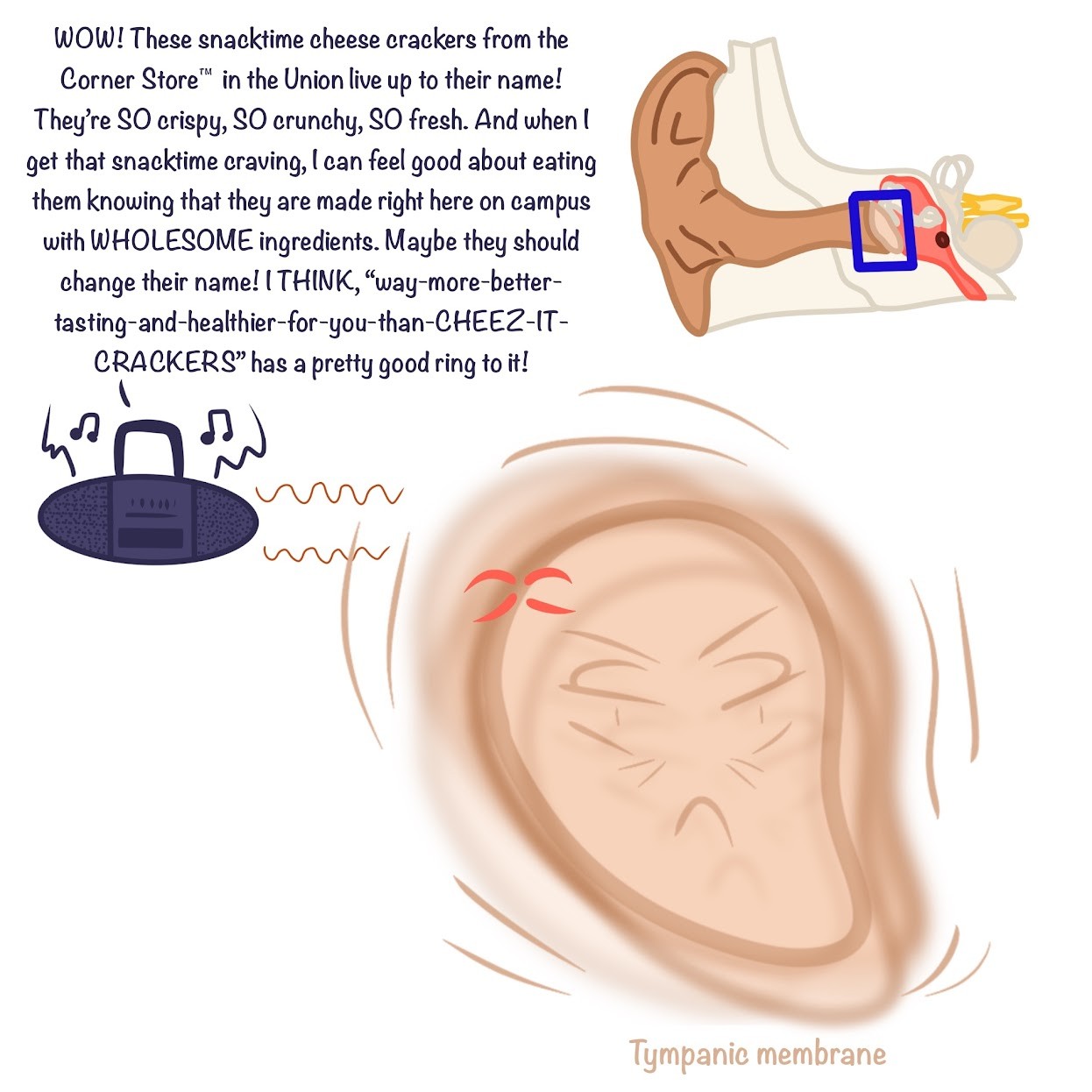
Vibrating objects create percussion waves in the air that cause the tympanic membrane to vibrate
2nd step of ear sound processing
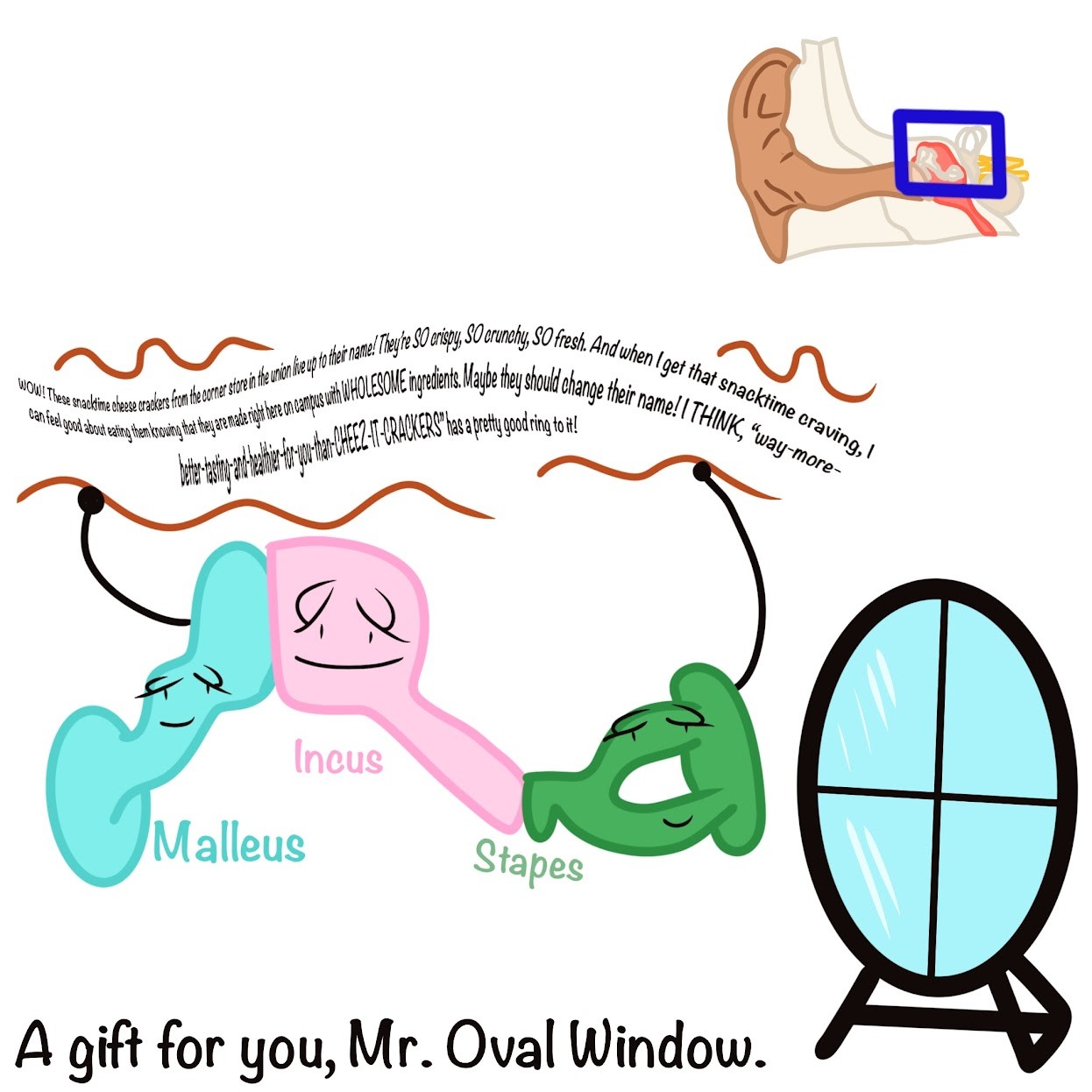
The 3 bones of the middle ear transmit the vibrations to the oval window
3rd step of ear sound processing

These vibrations create pressure waves in the fluid in the cochlea that ultimately exit via the round
4th step of ear sound processing
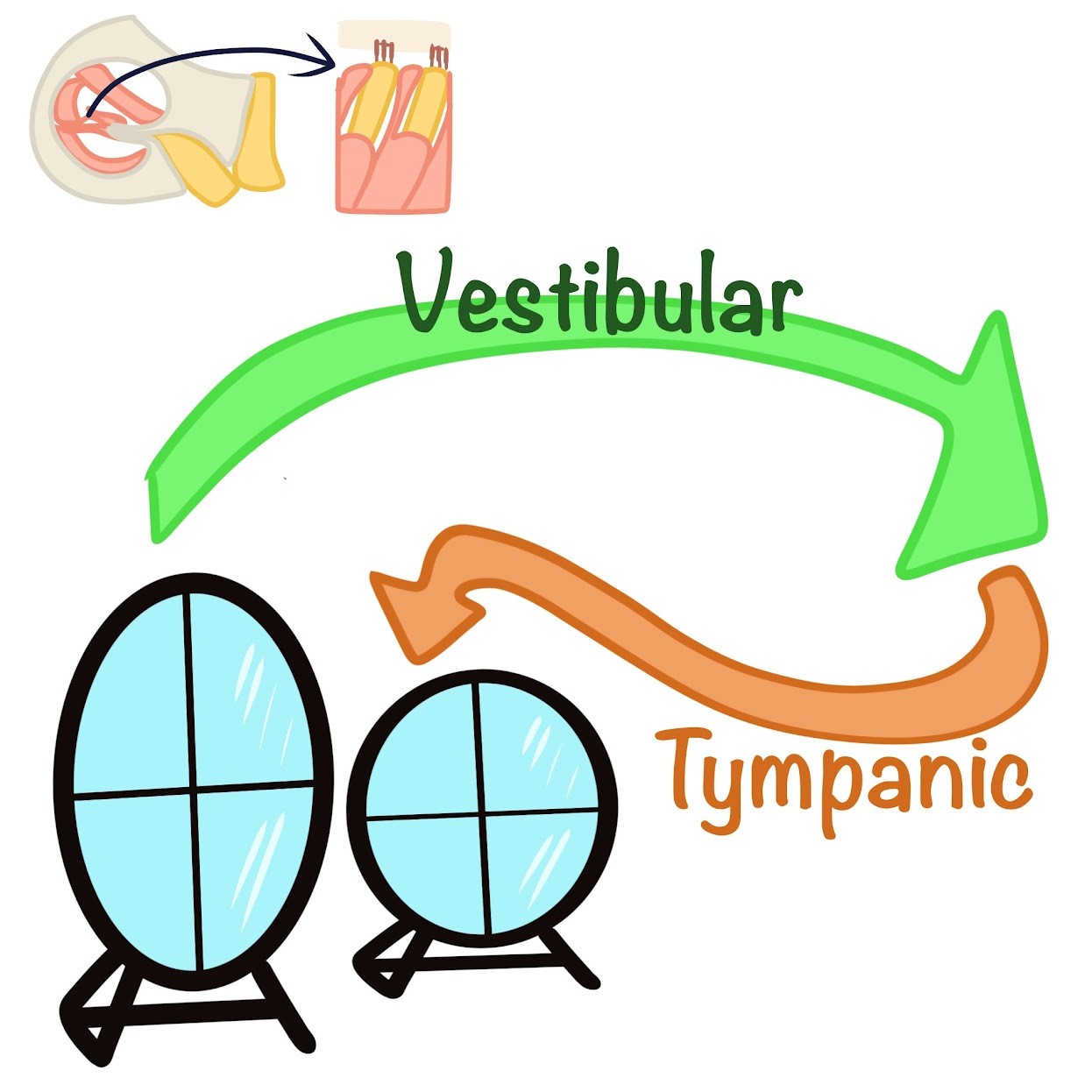
The pressure waves from the oval window move through vestibular canal and return via the tympanic canal to exit through the round window
5th step of ear sound processing
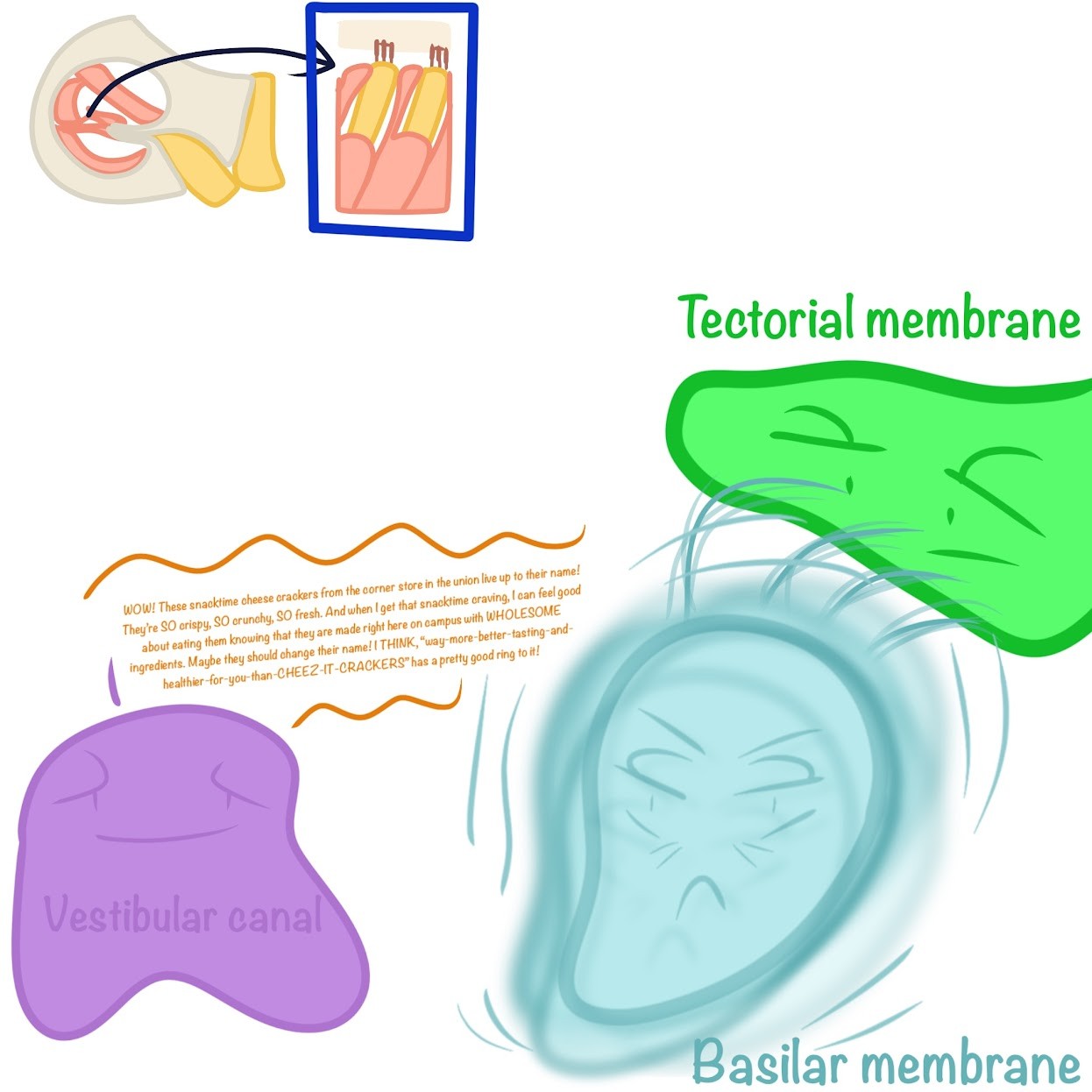
Pressure waves in the vestibular canal cause the basilar membrane to vibrate, bending its hair cells against the stationary tectorial membrane
6th step of ear sound processing
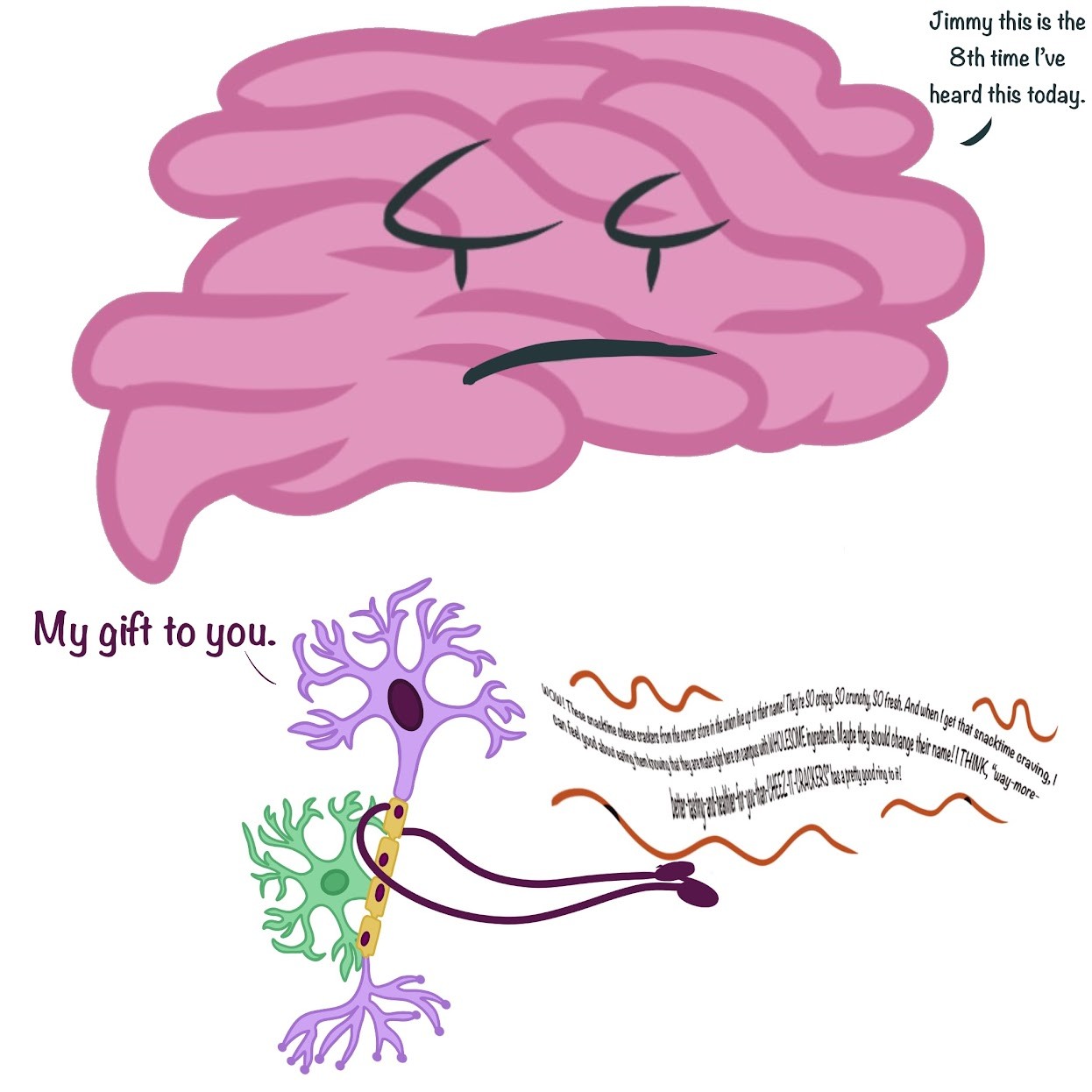
This depolarizes the membranes of mechanoreceptors (hair cells) and sends action potentials to the brain via the auditory/cochlear nerve
The mechanism of pitch is based on
The location along the basilar membrane where the hair cells are stimulated
Where do higher frequency sounds vibrate in the basilar membrane?
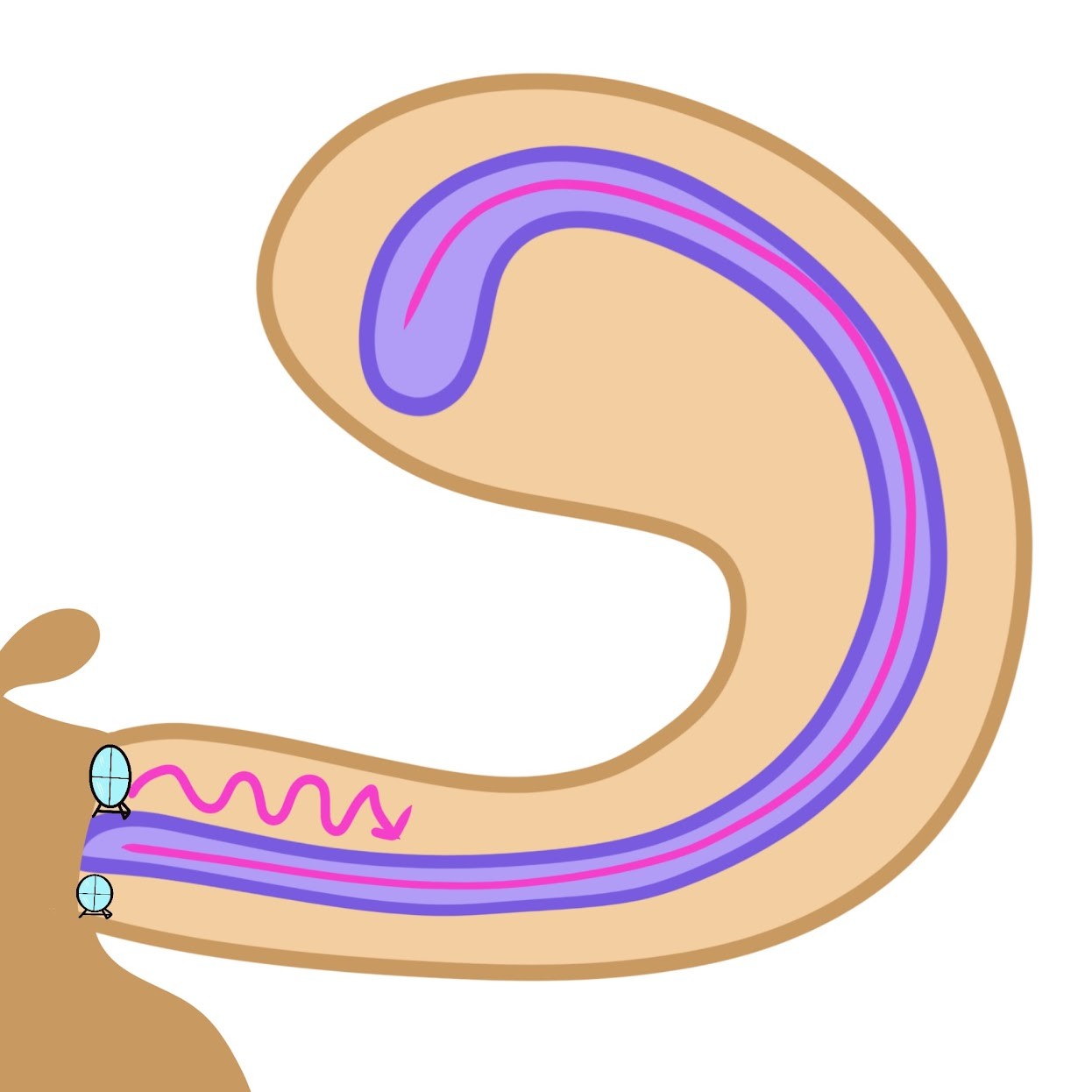
Near the entrance port
Where do lower frequency sounds vibrate in the basilar membrane?
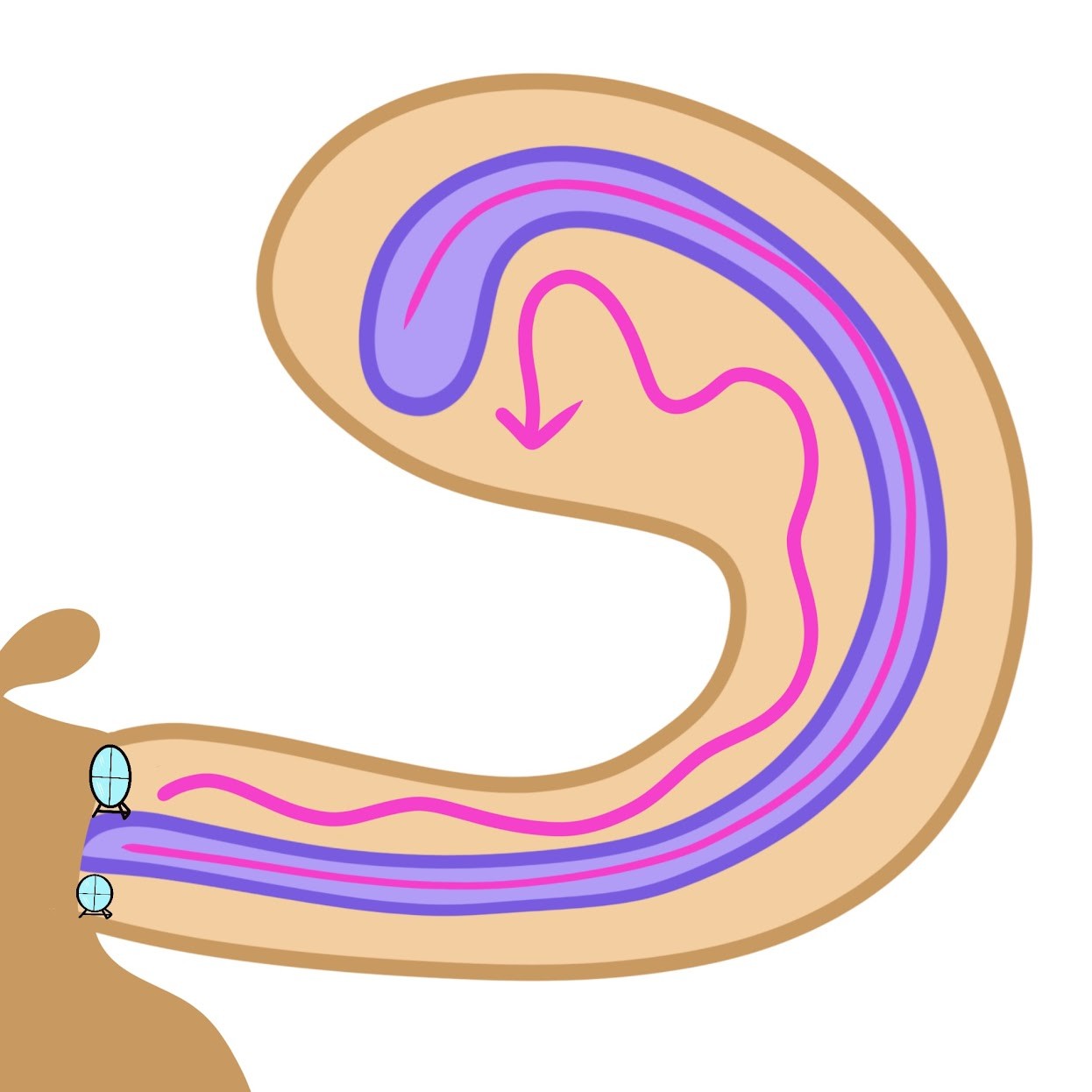
Further along the membrane
Which section of the ear detects body movement, position, and balance?
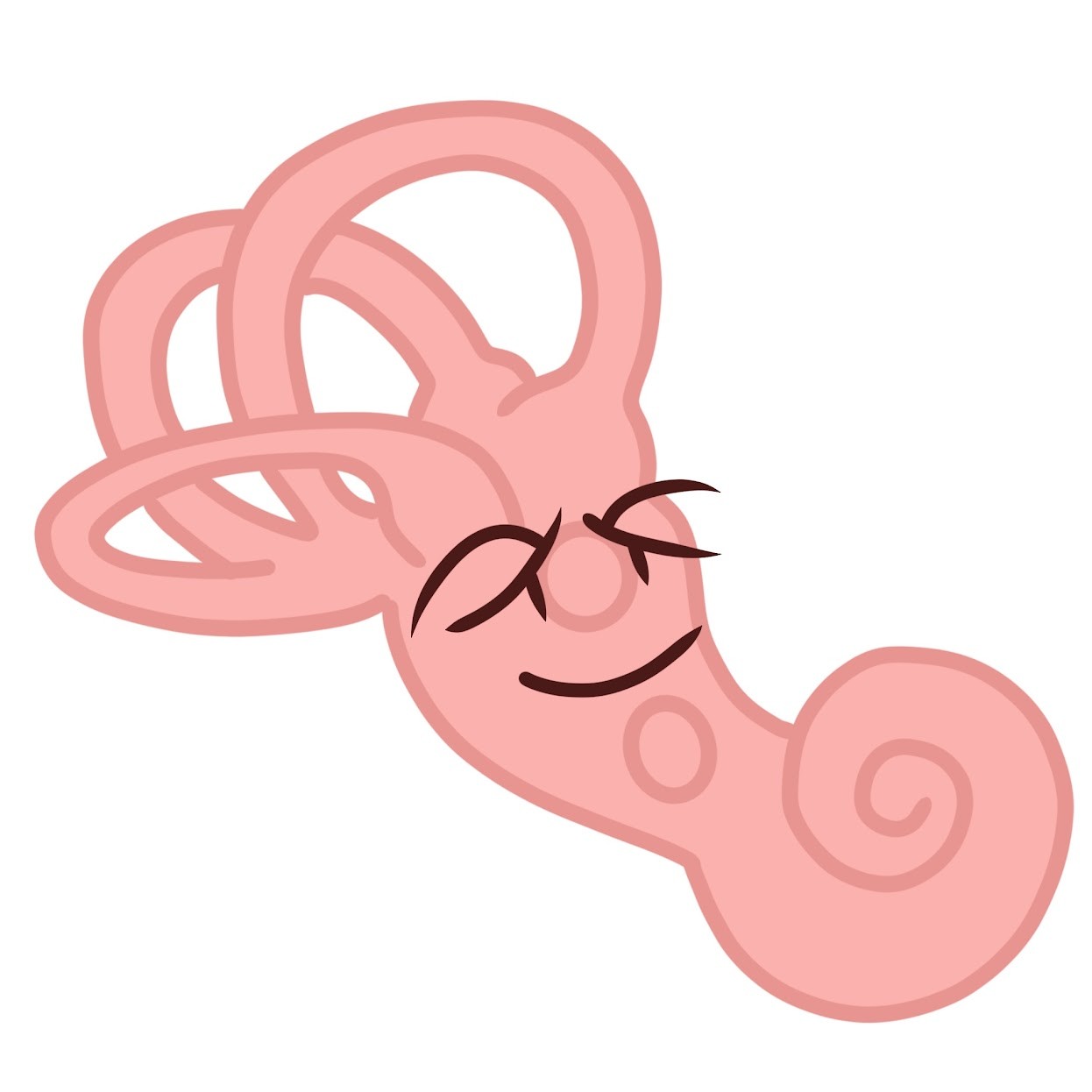
The inner ear
Utricle & Saccule
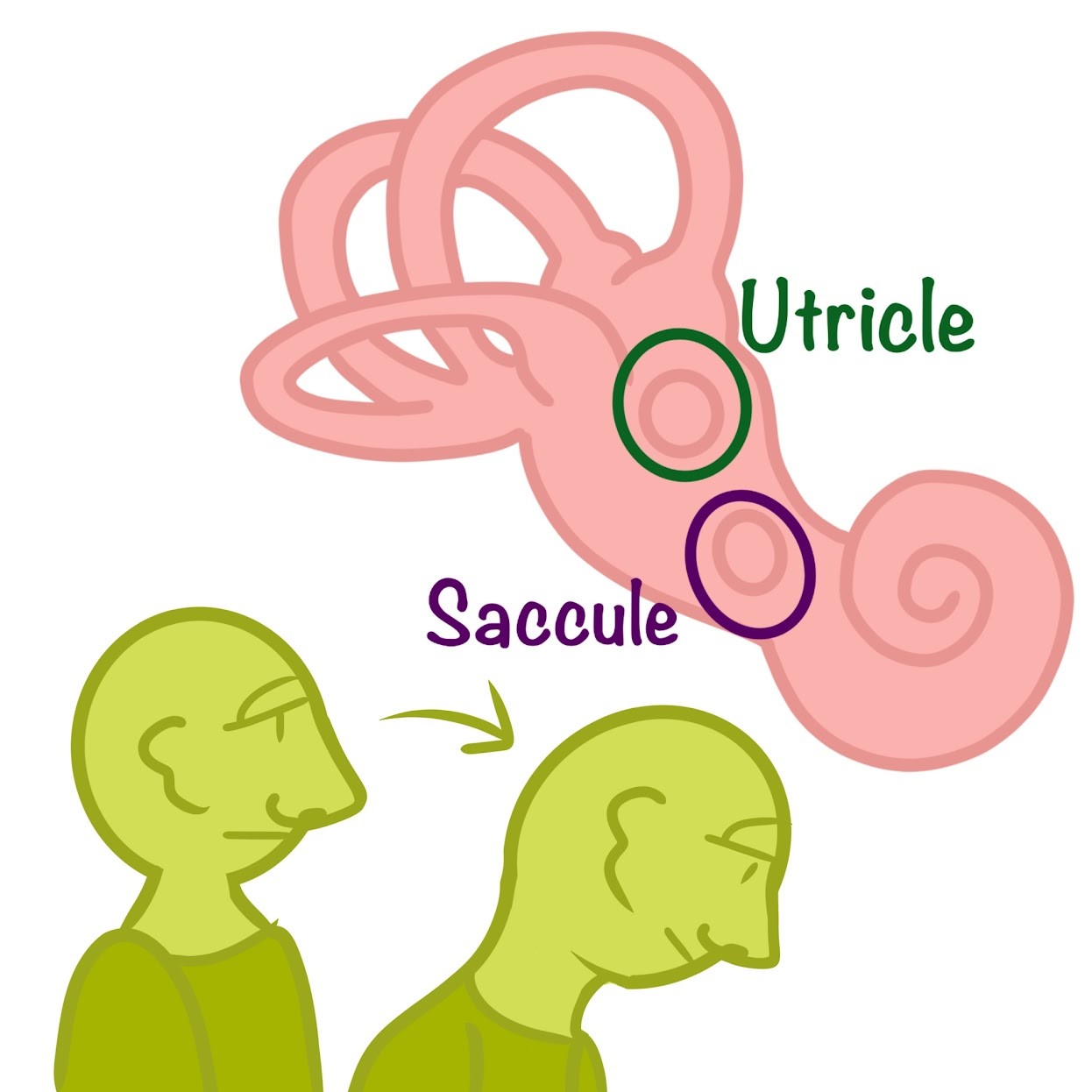
Contain granules (otoliths/ear stones) that allow us to perceive position relative to gravity or linear movement/acceleration
3 semicircular canals
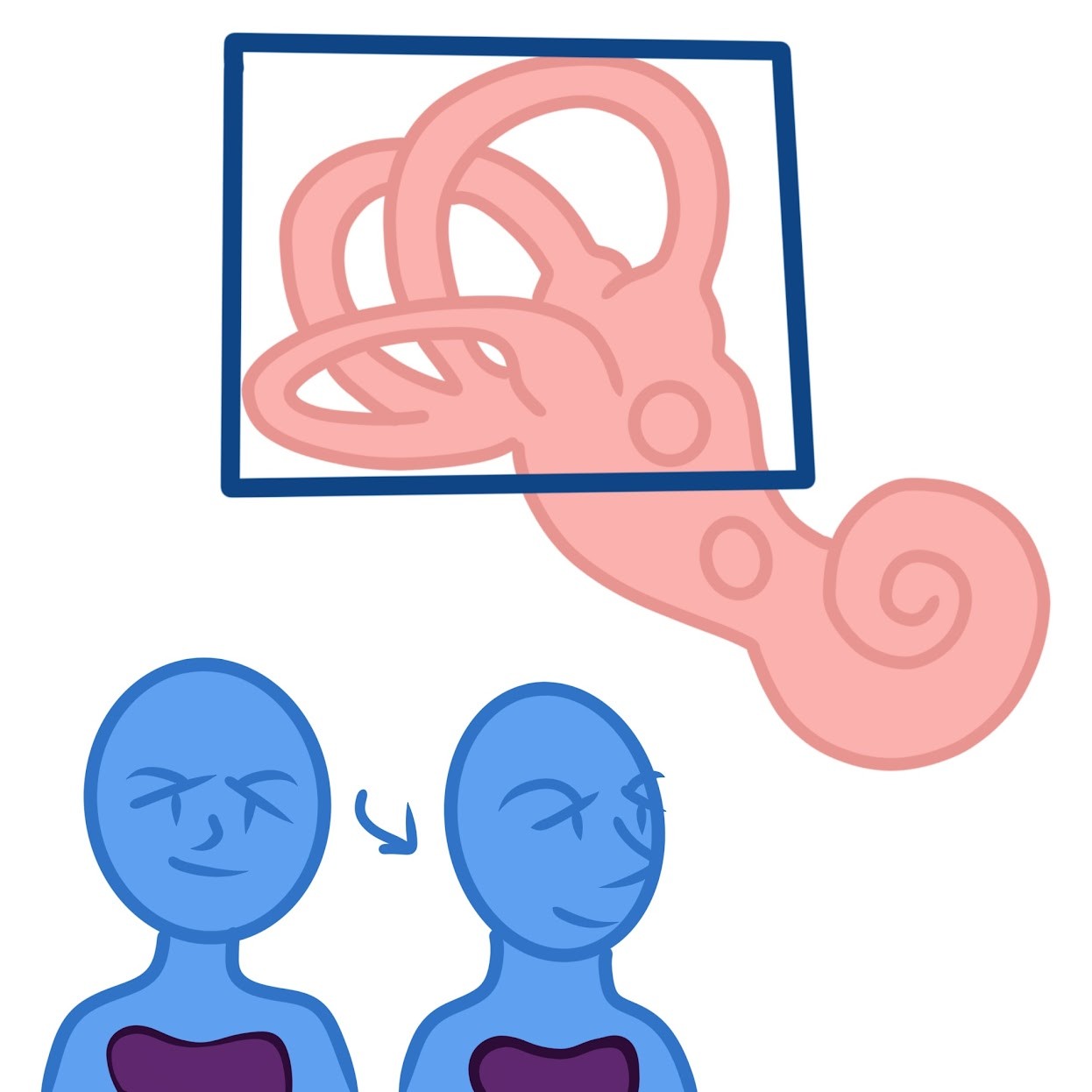
Contain fluid and detect angular movement in any direction (turning of the head, rotational acceleration)
Otoliths move in response to
Gravity or linear acceleration
What is the gelatinous cap in the semicircular canals?
Cupula
What is different about a fish's ears?

They only have a pair of inner ears near the brain
Lateral Line System

A system that contains mechanoreceptors with hair cells that detect and respond to water movement; present in fish and aquatic amphibians
How does vision begin?
When a photon of light shifts the configuration of a single chemical bond in retinal within photoreceptors
Cornea/Lens
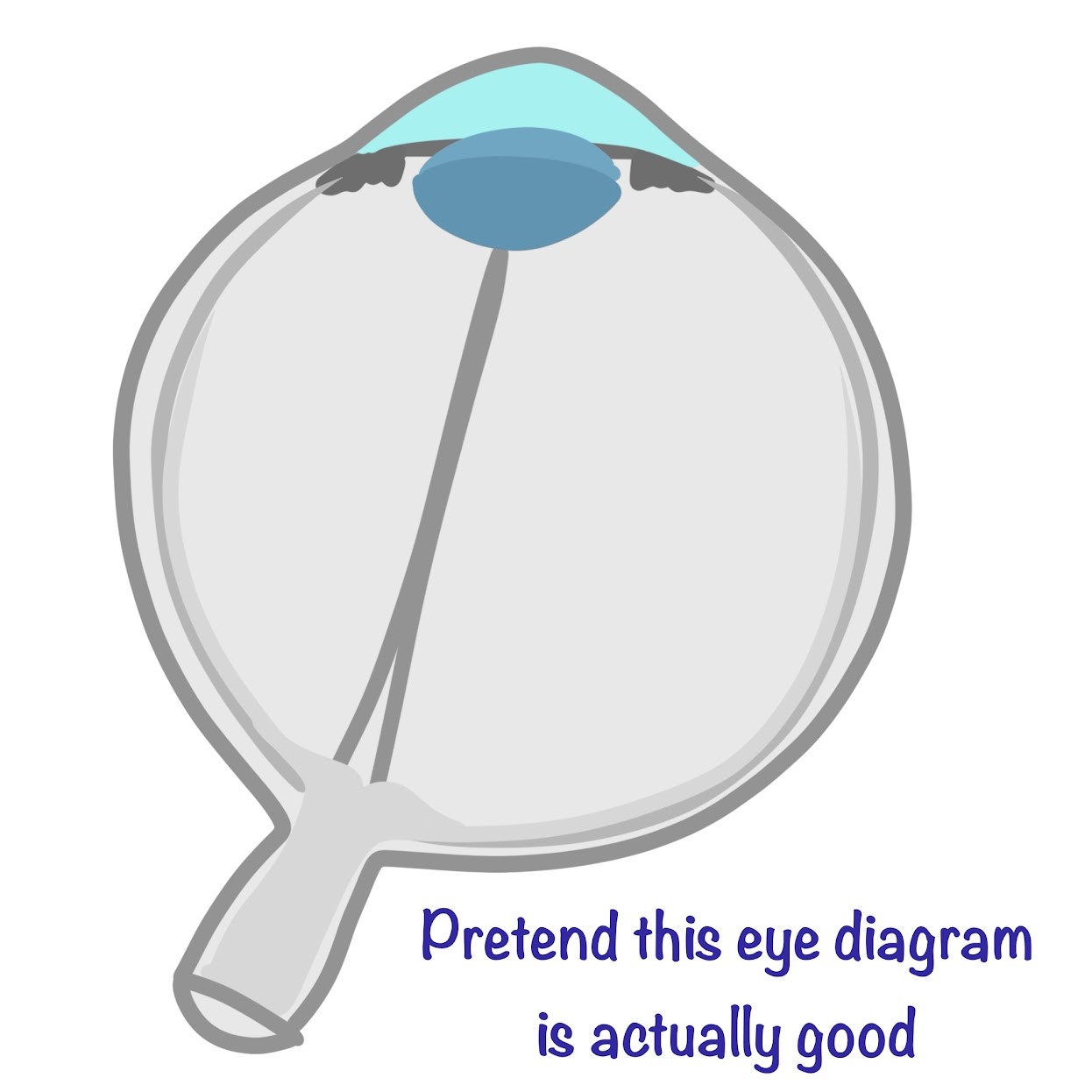
Refract light to focus on retina
Iris
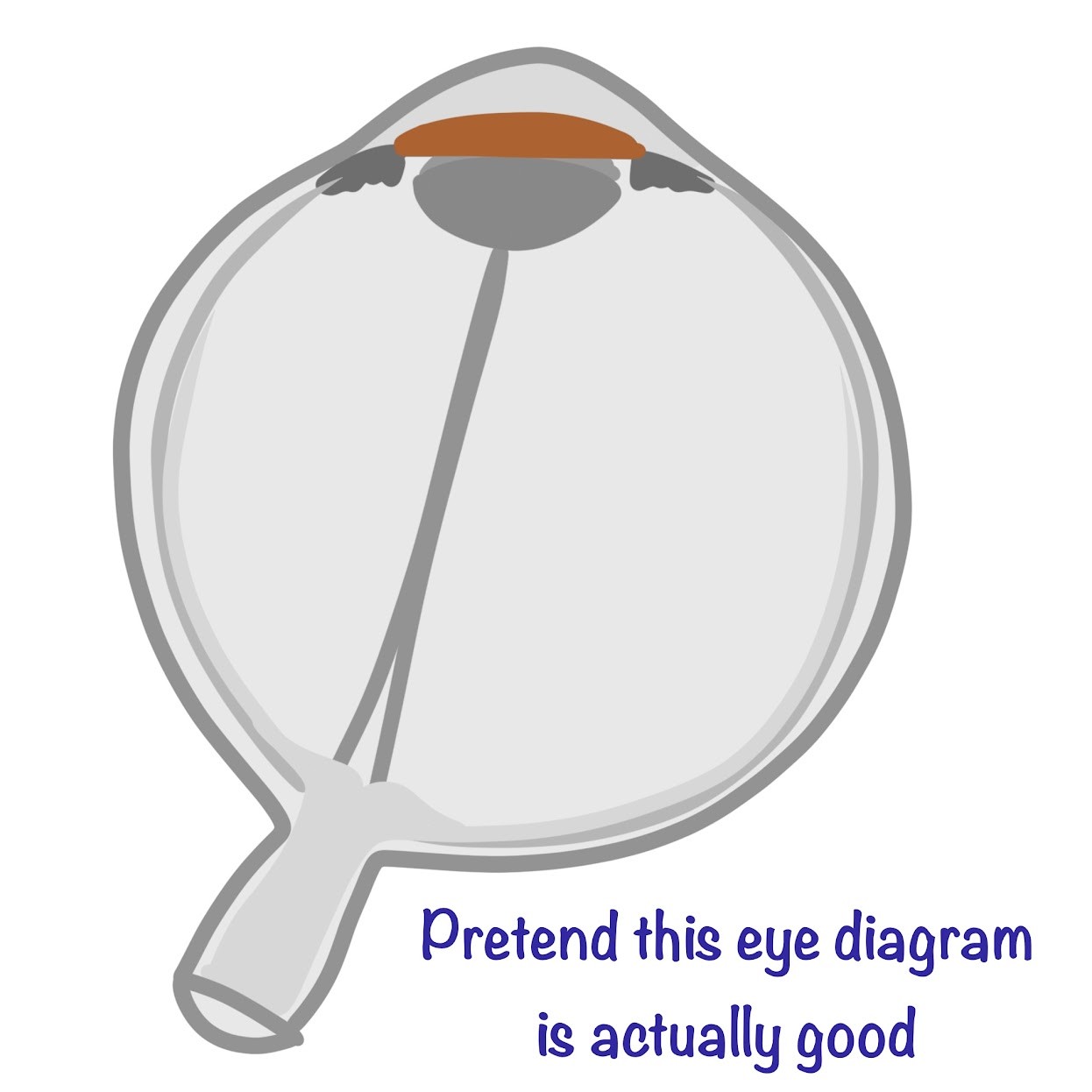
Circular muscle that regulates the amount of light through the pupil
Retina
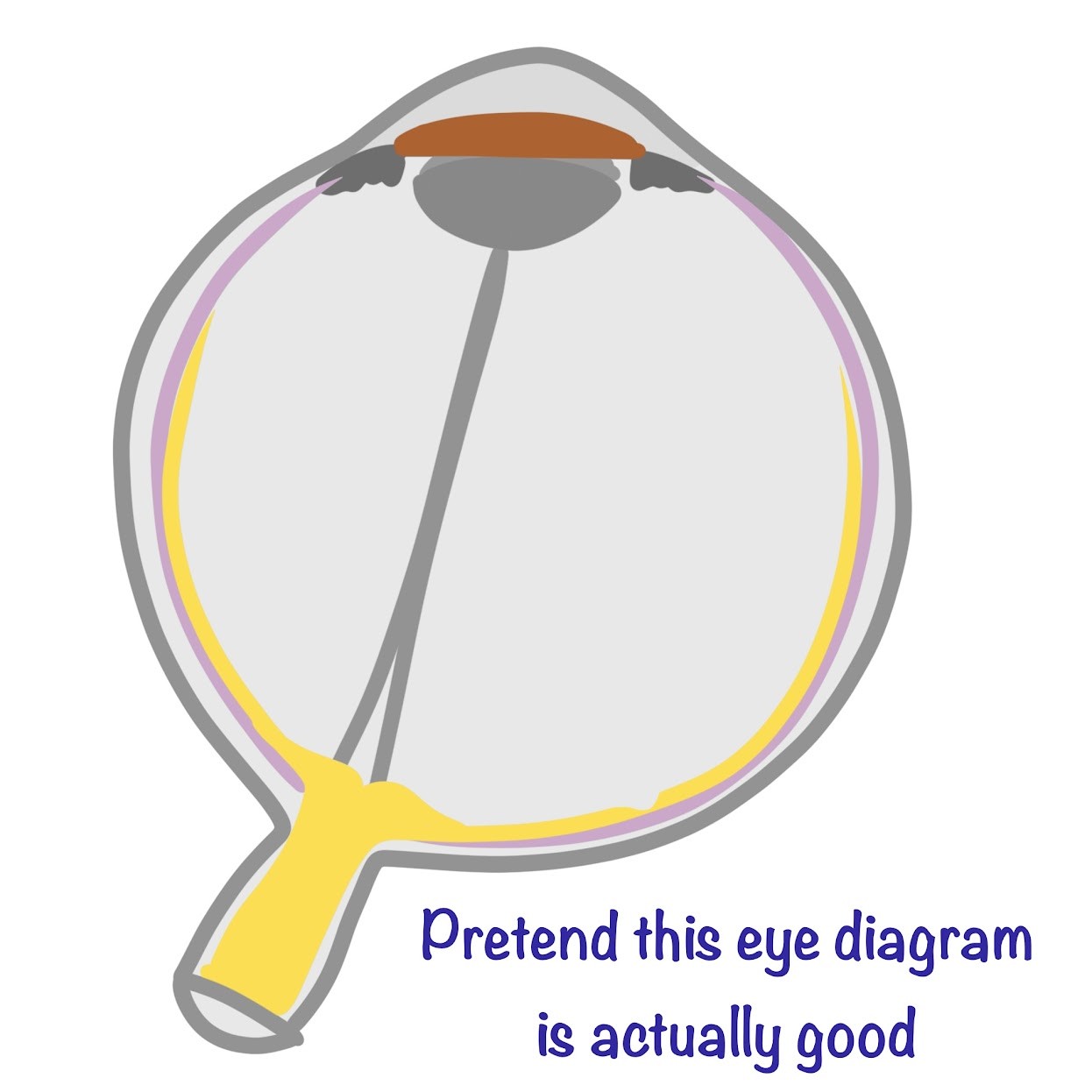
Inner surface along the back of the eye where photoreceptors are located
Fovea
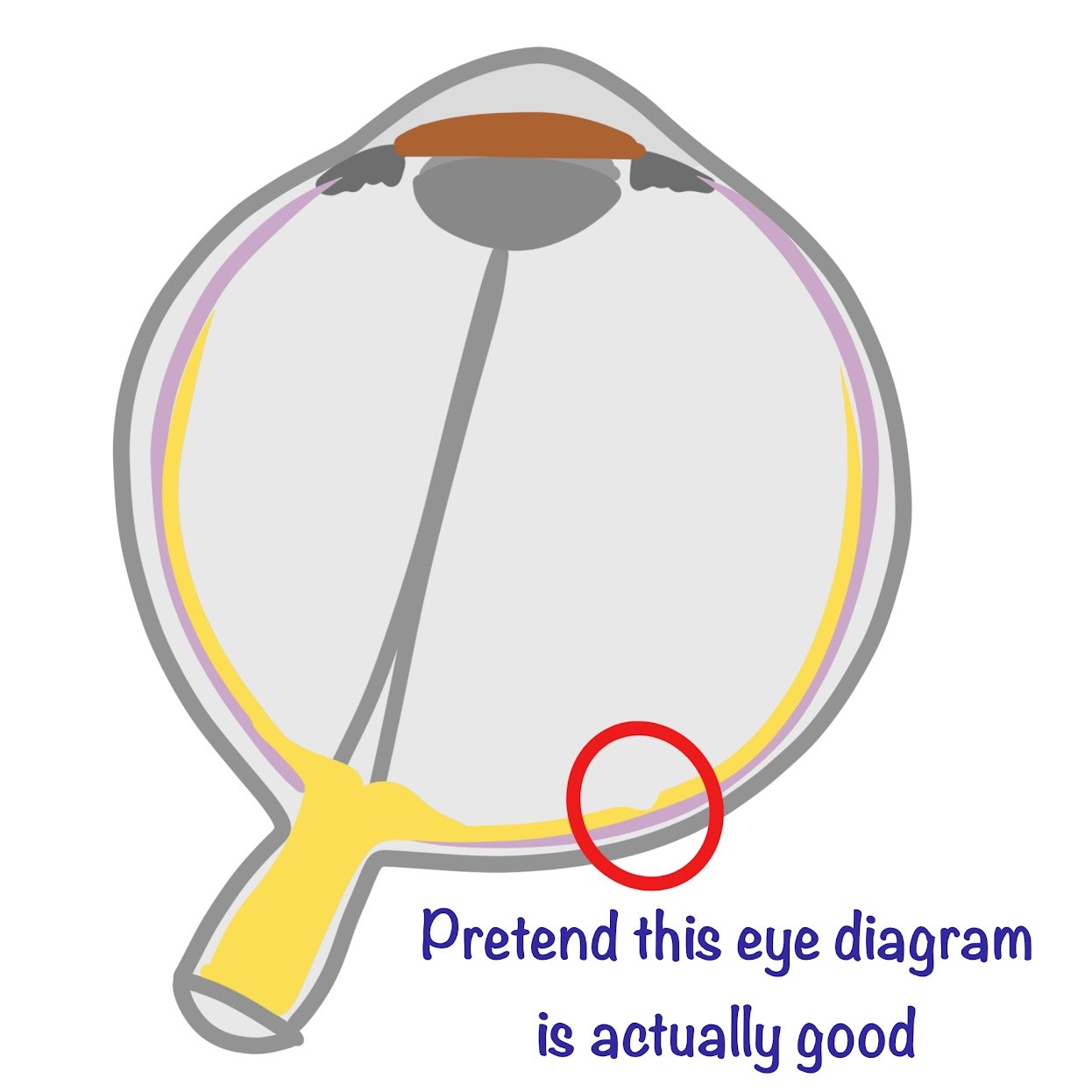
Area of retina with the best visual activity
The 2 fluid-filled spaces in an eye
Aqueous humour and virteous humour
Which comes first, nerves or photoreceptors?
Nerves
1st step of retina processing
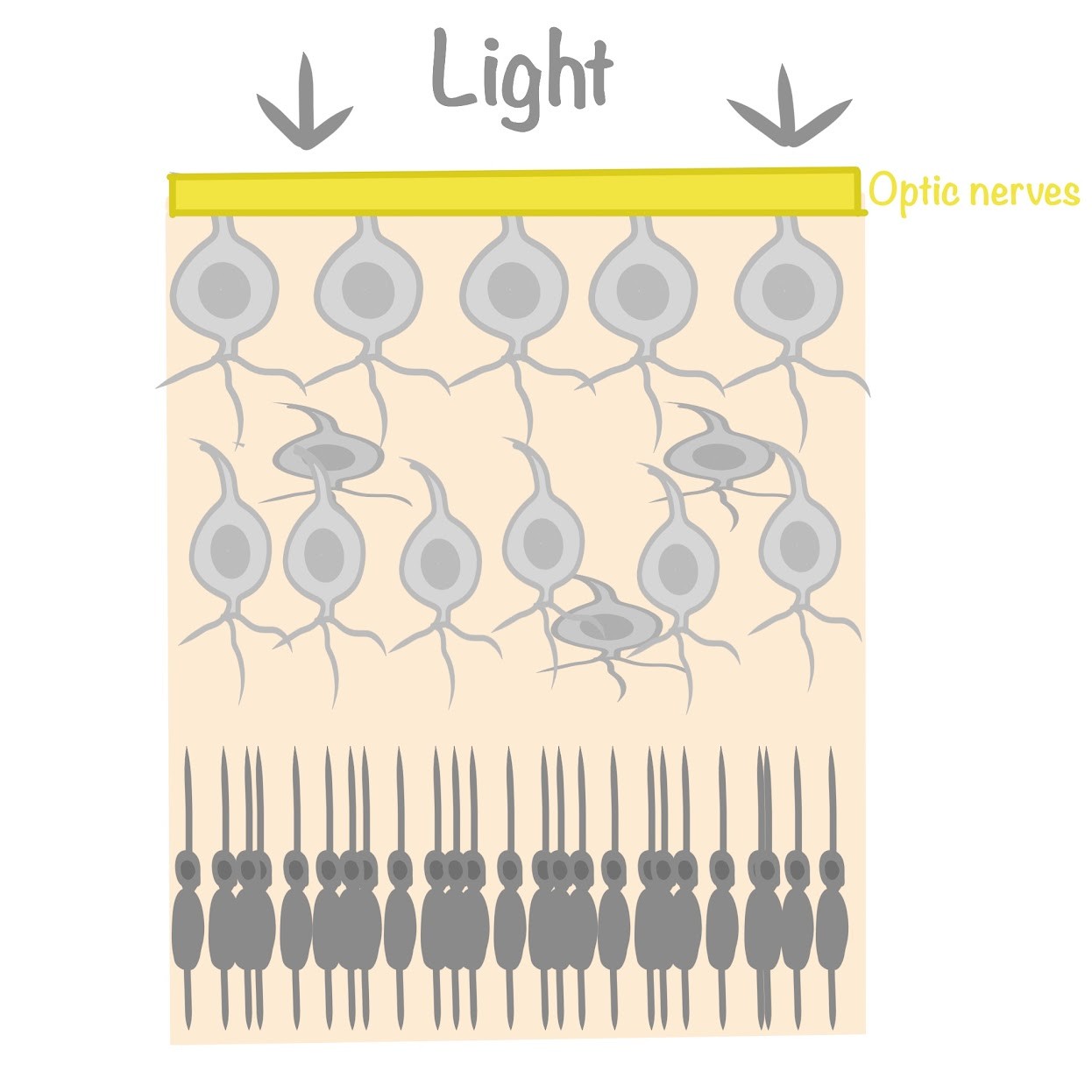
Light traveling to retina passes through largely transparent layers of nerves
2nd step of retina processing
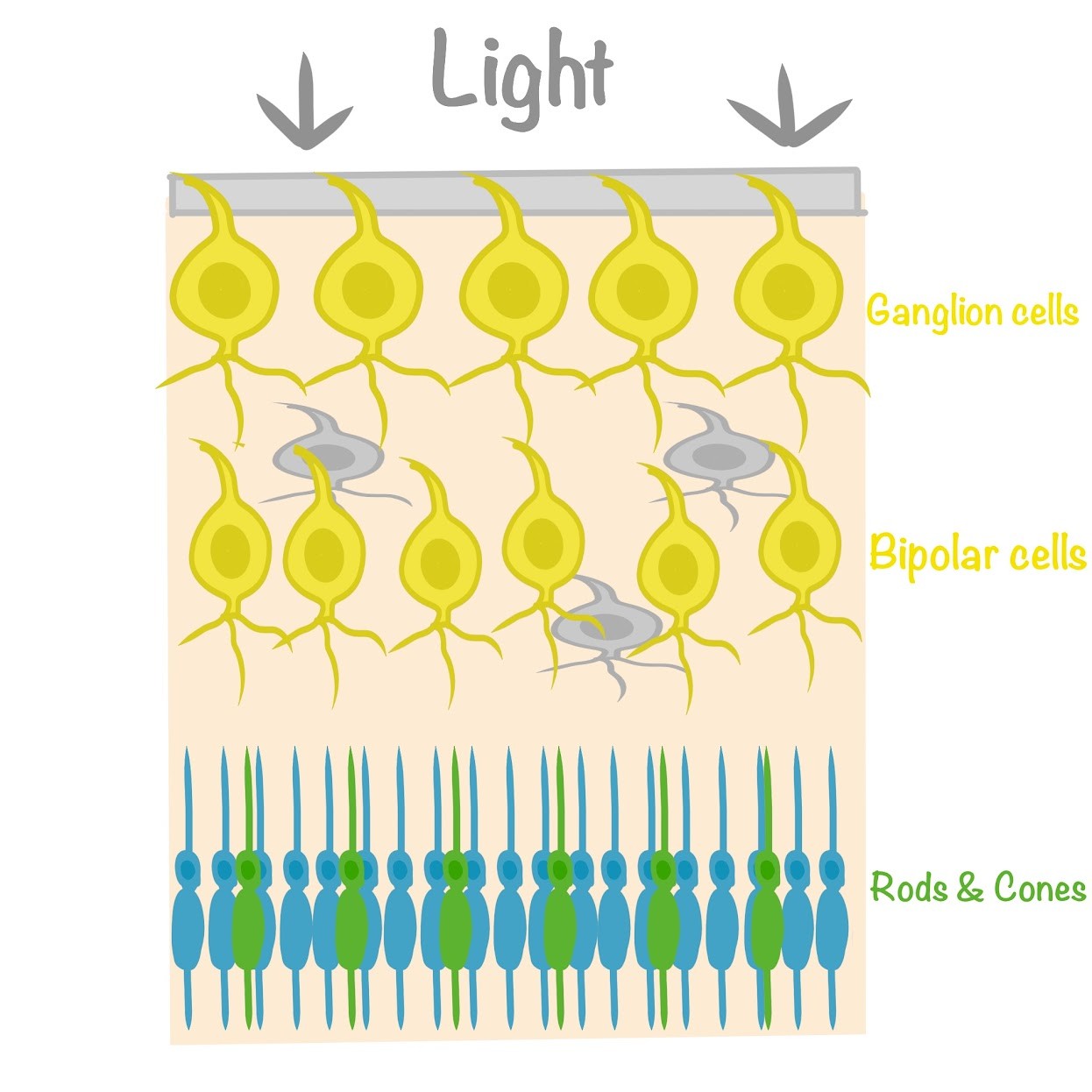
Light is received by photoreceptors (rods & cones); bipolar cells relay signals to ganglia
What is the purpose of Amacrine and Horizontal cells?
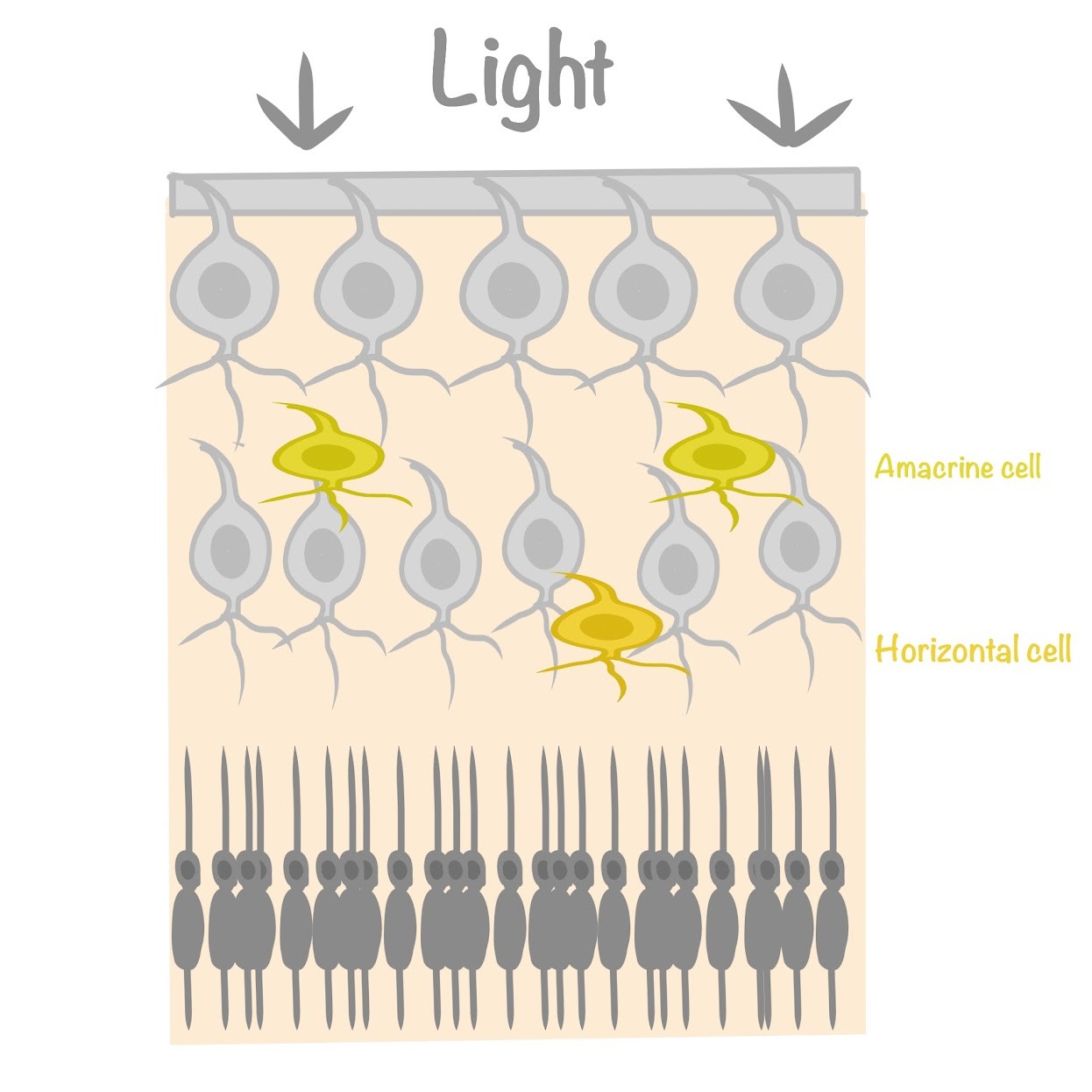
They help integrate info across the retina
Pain.

Agony.
Where are rods located?
In the periphery of the retina
Rods

Detects dim light; does not distinguish colors; enables peripheral and night vision
Where are cones located?
Near the center of the retina
Cones

Responds to bright light; enables color and daytime vision
Where are visual pigments?
Embedded in a stack of membranous discs housed in the outer segment of photoreceptors
What absorbs light?
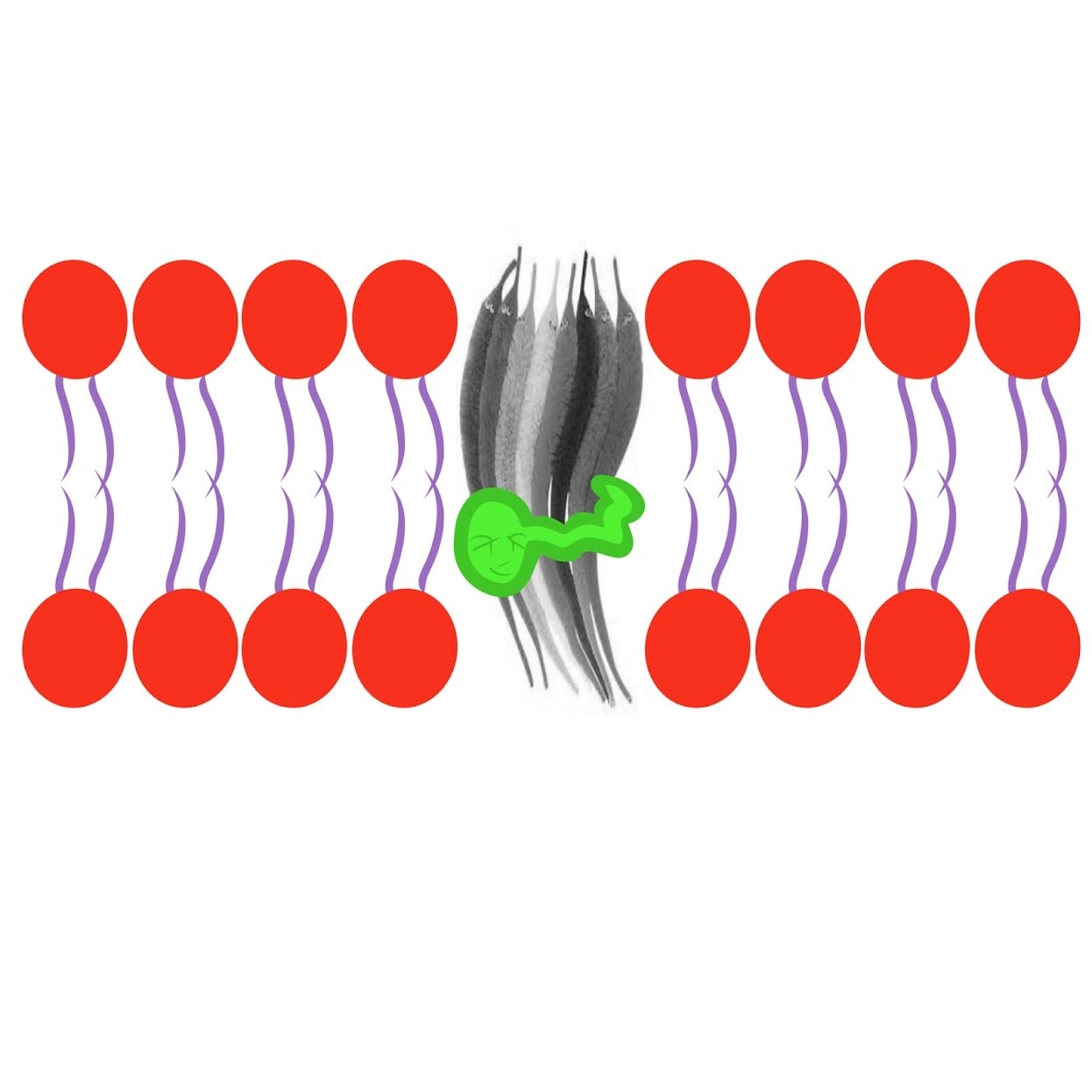
Retinal
What is retinal bound to?
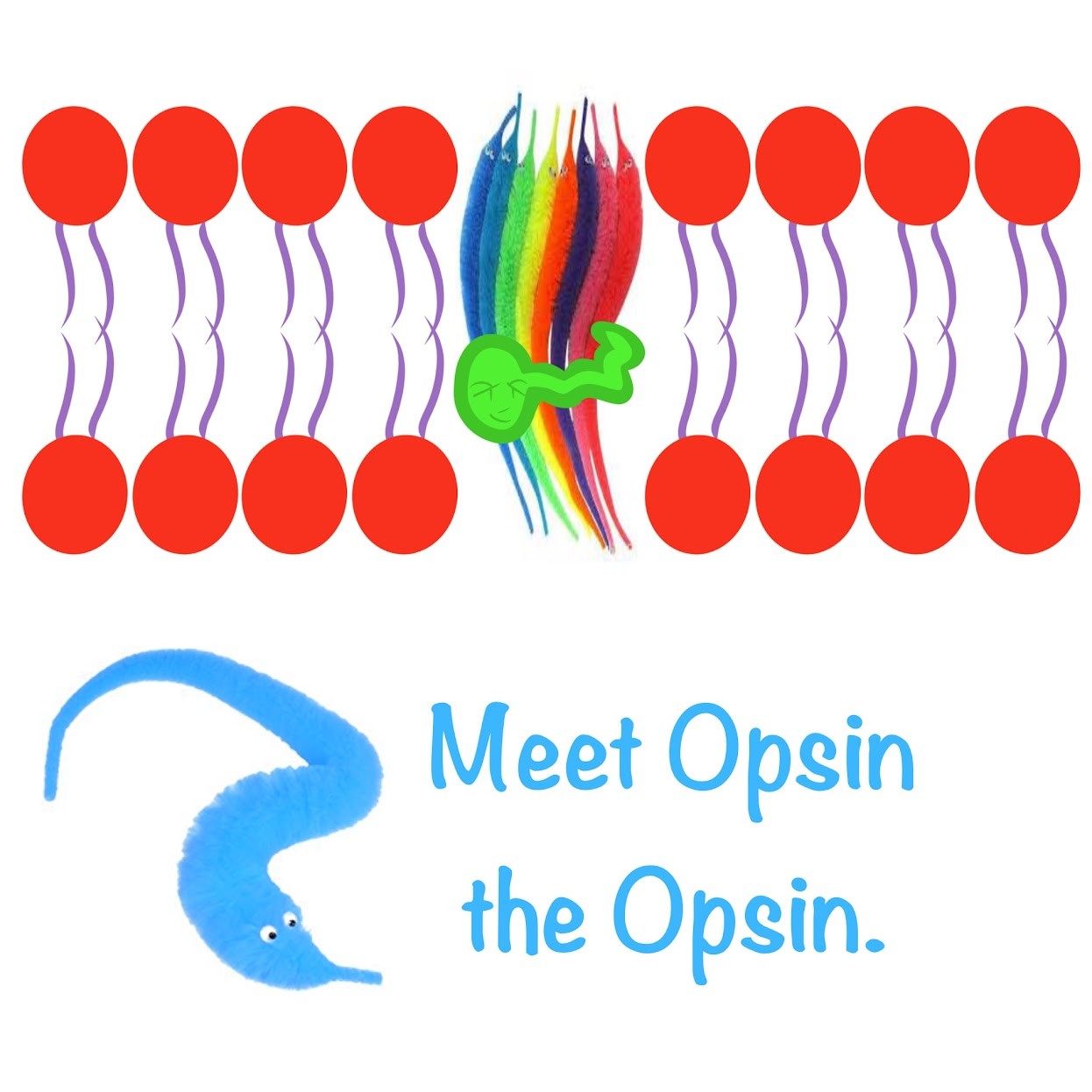
The protein opsin
What forms the visual pigment rhodopsin?
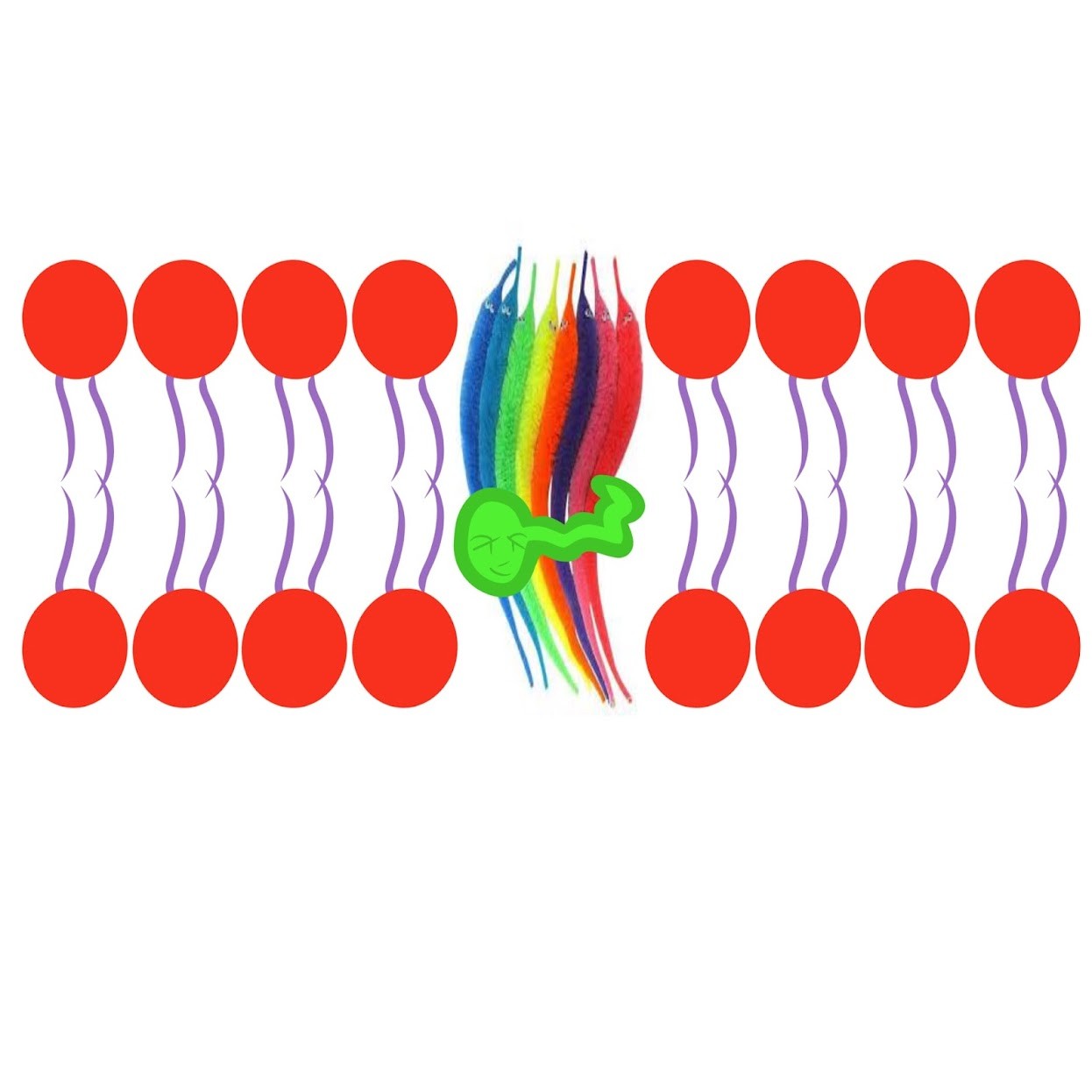
Retinal & opsin
Light shifts the retinal isomer from _____ to _____ (which destabilizes and activates opsin)
cis to trans
In signal transduction, the signal is passed to a G-protein called _____, which triggers a series of downstream events.
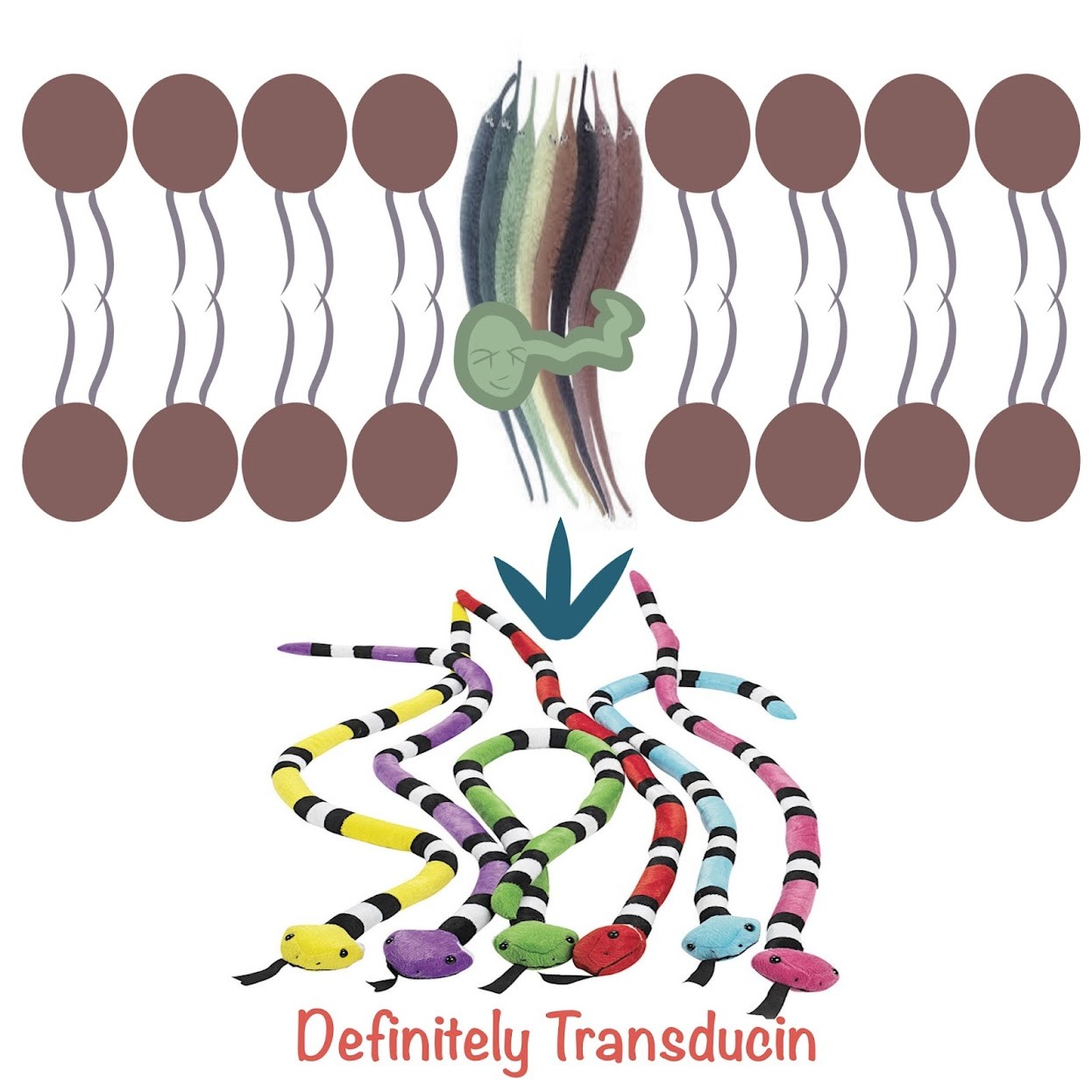
Transducin
What does Transducin activate?
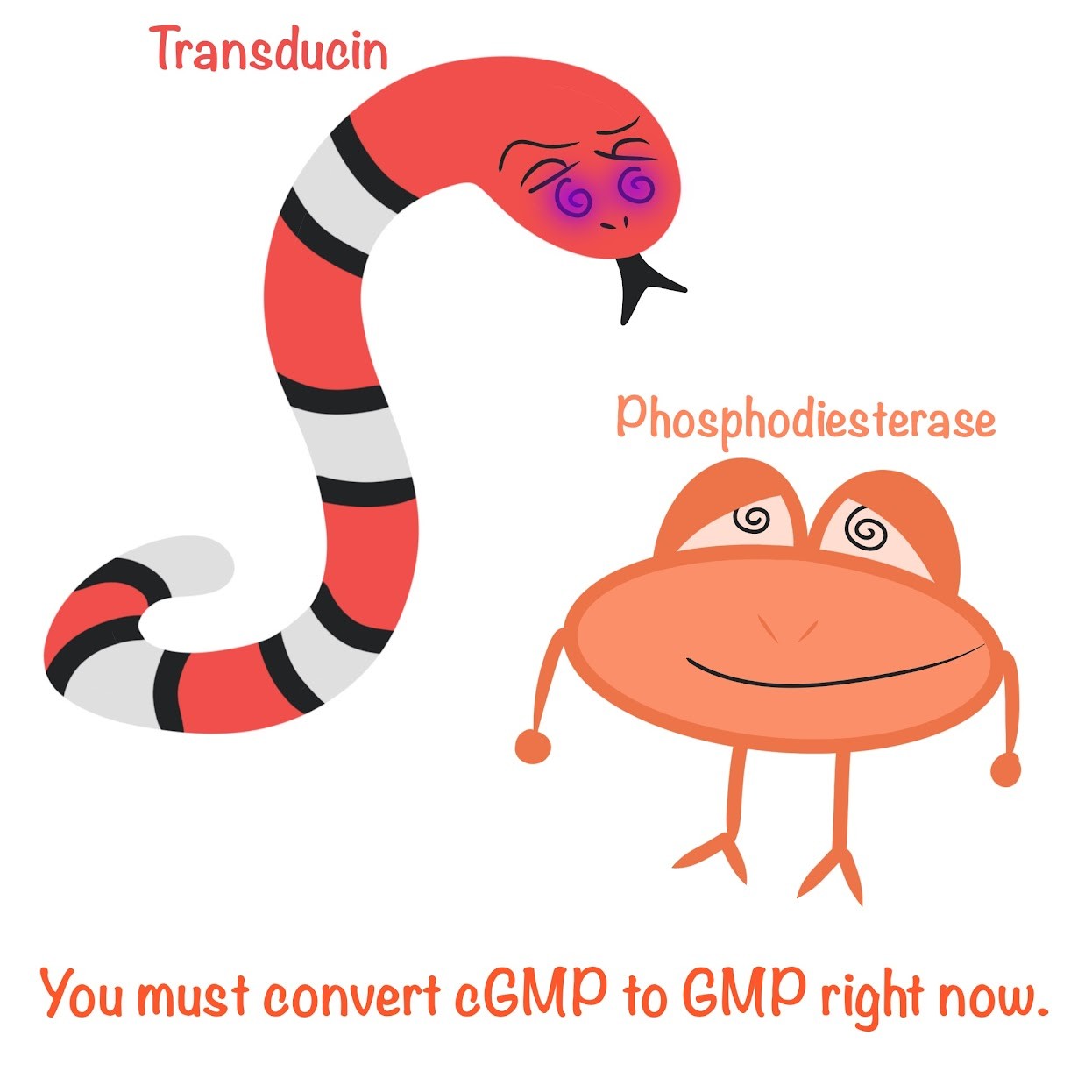
Phosphodiesterase
Phosphodiesterase
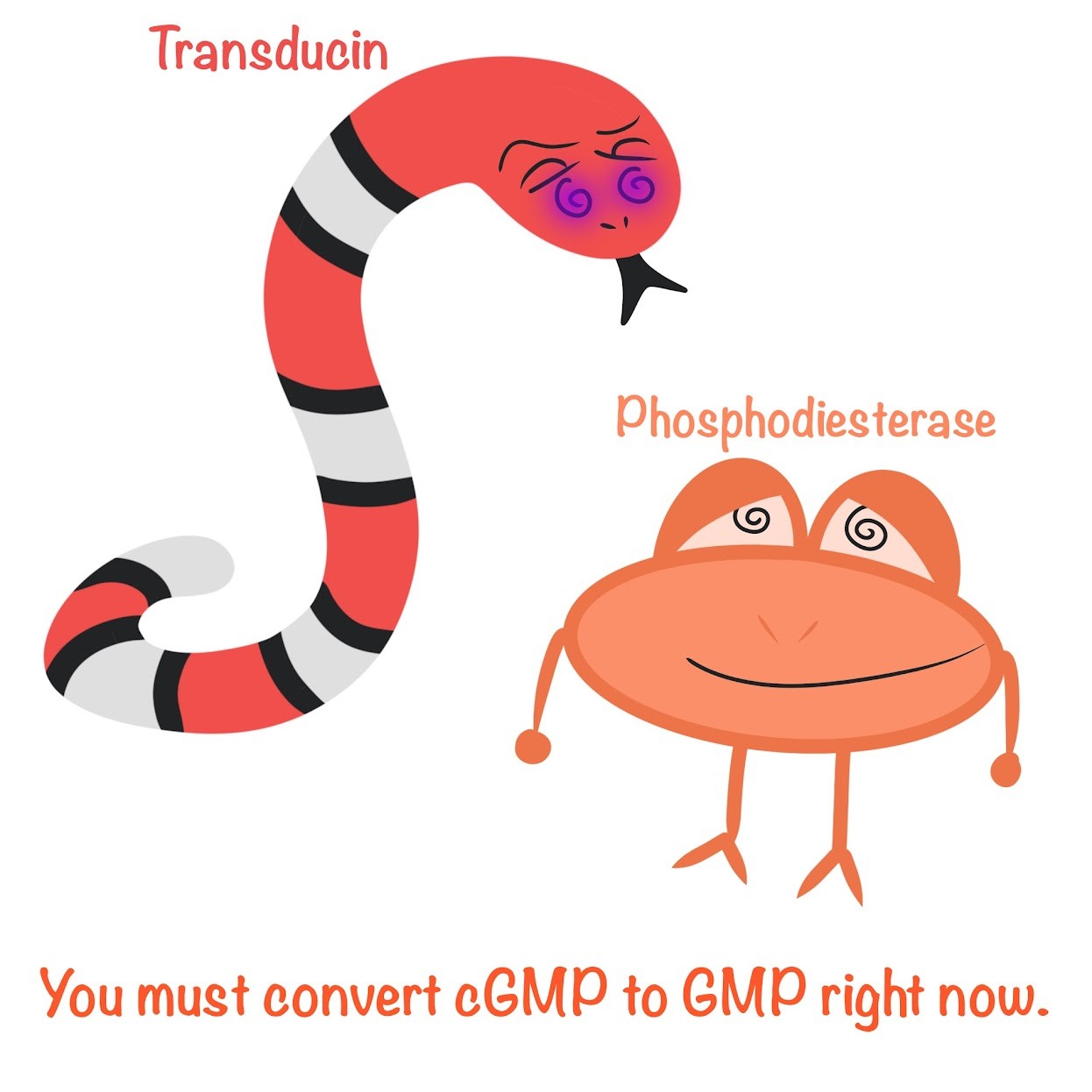
converts cGMP to GMP
A decrease in cGMP
closes open Na+ channels in the cell membrane
In the dark, what happens to rods & cones?

They are depolarized and release the neurotransmitter glutamate into synapses with bipolar cells
In the light, what happens to rods & cones?

They are hyperpolarized, shutting off the release of glutamate
Why are rods & cones Not Like Other Sensory Neurons™?
Other sensory neurons become depolarized by exposure to a stimulus
Who has good color vision?
Fish, amphibians, reptiles, birds, primates
Mammals are nocturnal and usually have a high proportion of _____ in the retina for good night vision
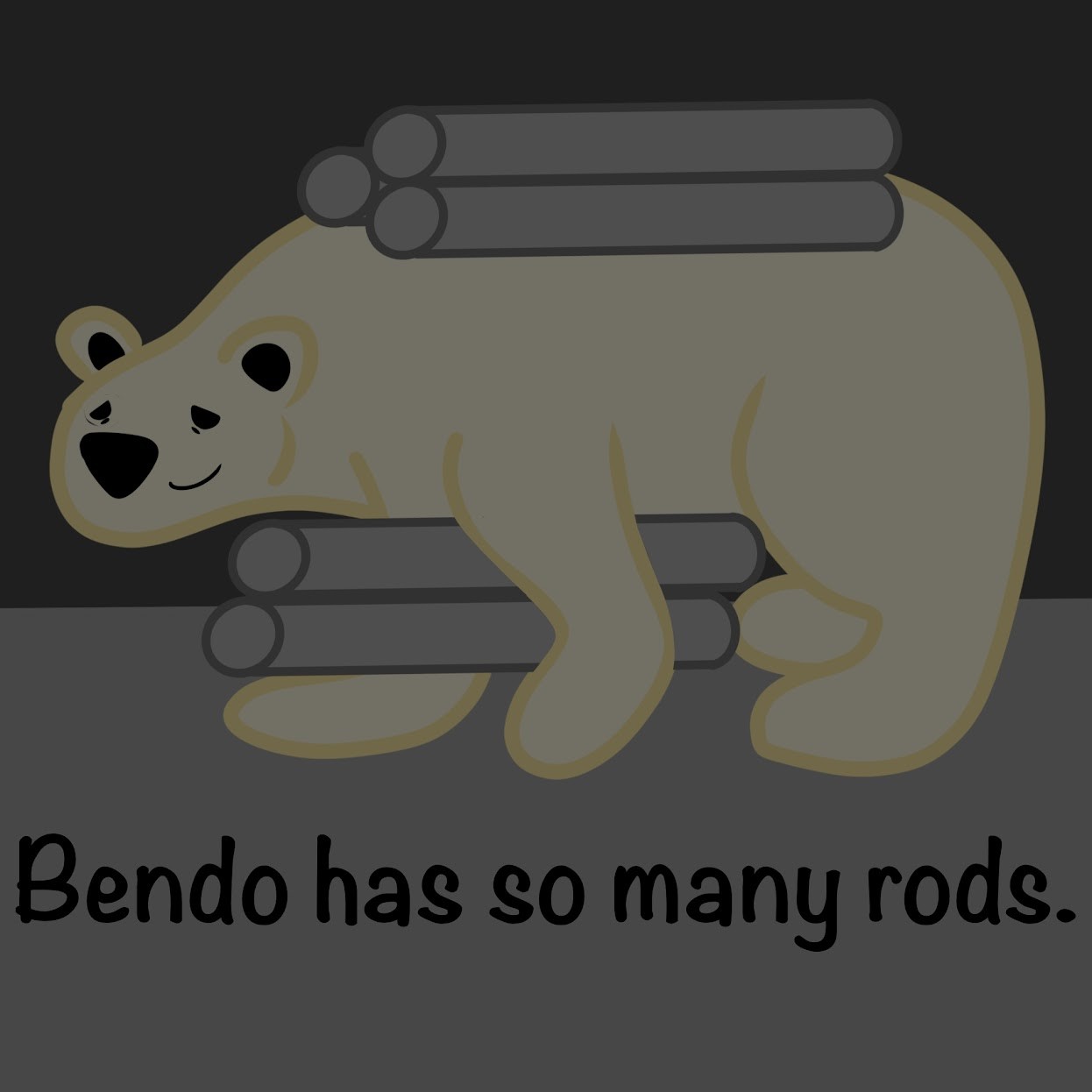
rods
Photopsins
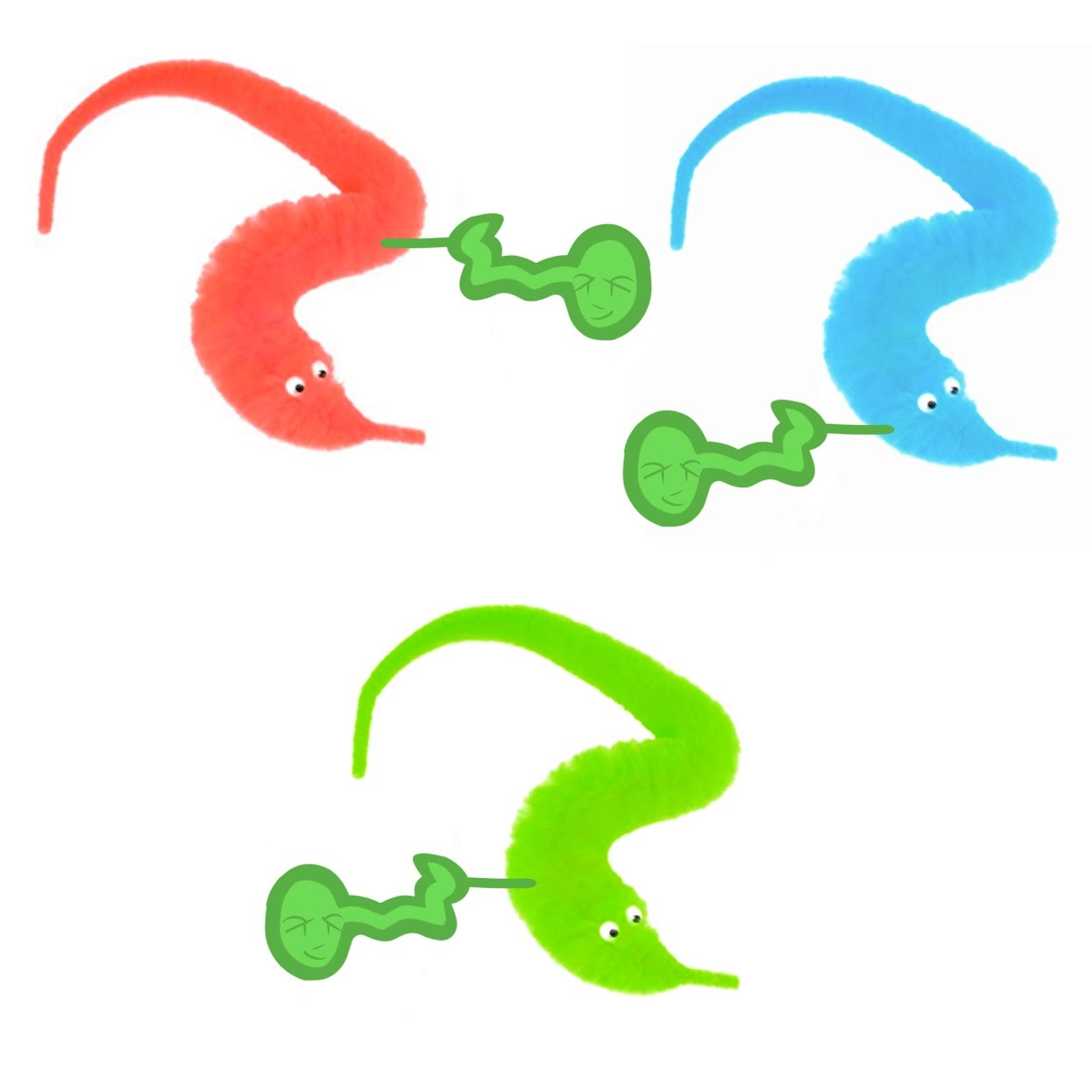
Cones with different visual pigments (red, green, blue) that are formed when retinal binds to three distinct opsin proteins
Gustation relies on the detection of chemicals called
Tastants
Olfaction relies on the detection of molecules called
Odorants
Is there a distinction between taste and smell in aquatic animals?
No
Where are the taste receptors on insects?
Sensory hairs located on the feet and mouth parts
5 taste perceptions
Sweet, sour, salty, bitter, umami
Evolutionary role of sweet foods convey
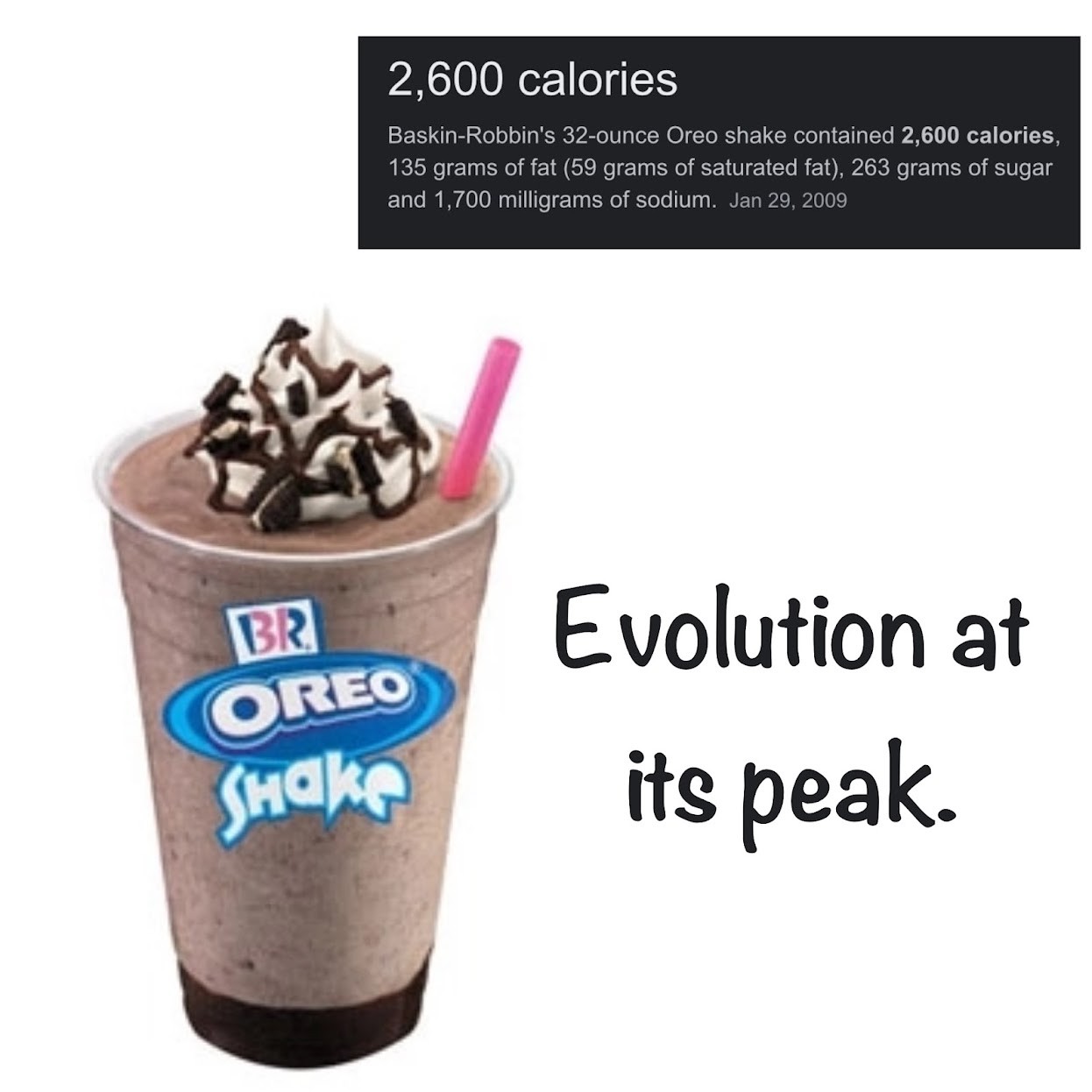
Highly Caloric foods
Evolutionary role of sour foods convey

Spoiled food
Evolutionary role of salty foods convey

ion/water homeostasis
Evolutionary role of bitter foods convey

Toxicity
Evolutionary role of Umami (savory, brothy, meaty) foods convey

High in protein
Hormones
Chemical signals that are secreted into the circulatory system and communicate regulatory messages within the body
2 ways/criteria of animal cell communication
The type of secreting cell & the route taken by the signal in reaching its target
5 forms of signaling

Endocrine, paracrine, autocrine, synaptic, neuroendocrine
Which 2 types of signaling are secreted by neurons?
Synaptic & Neuroendocrine
Which 2 types of signaling are local regulators?
Paracrine & Autocrine
Endocrine signaling
-Maintains homeostasis
-Mediate responses to stimuli
-Regulates growth & development
Local regulators
Molecules that act over short distances, reaching target cells solely by diffusion
Paracrine signaling
Target cells lie near the secreting cells
Autocrine signaling
Target cell is also the secreting cell
3 classes of local regulators
Polypeptides, gases, fatty acids
Prostaglandins
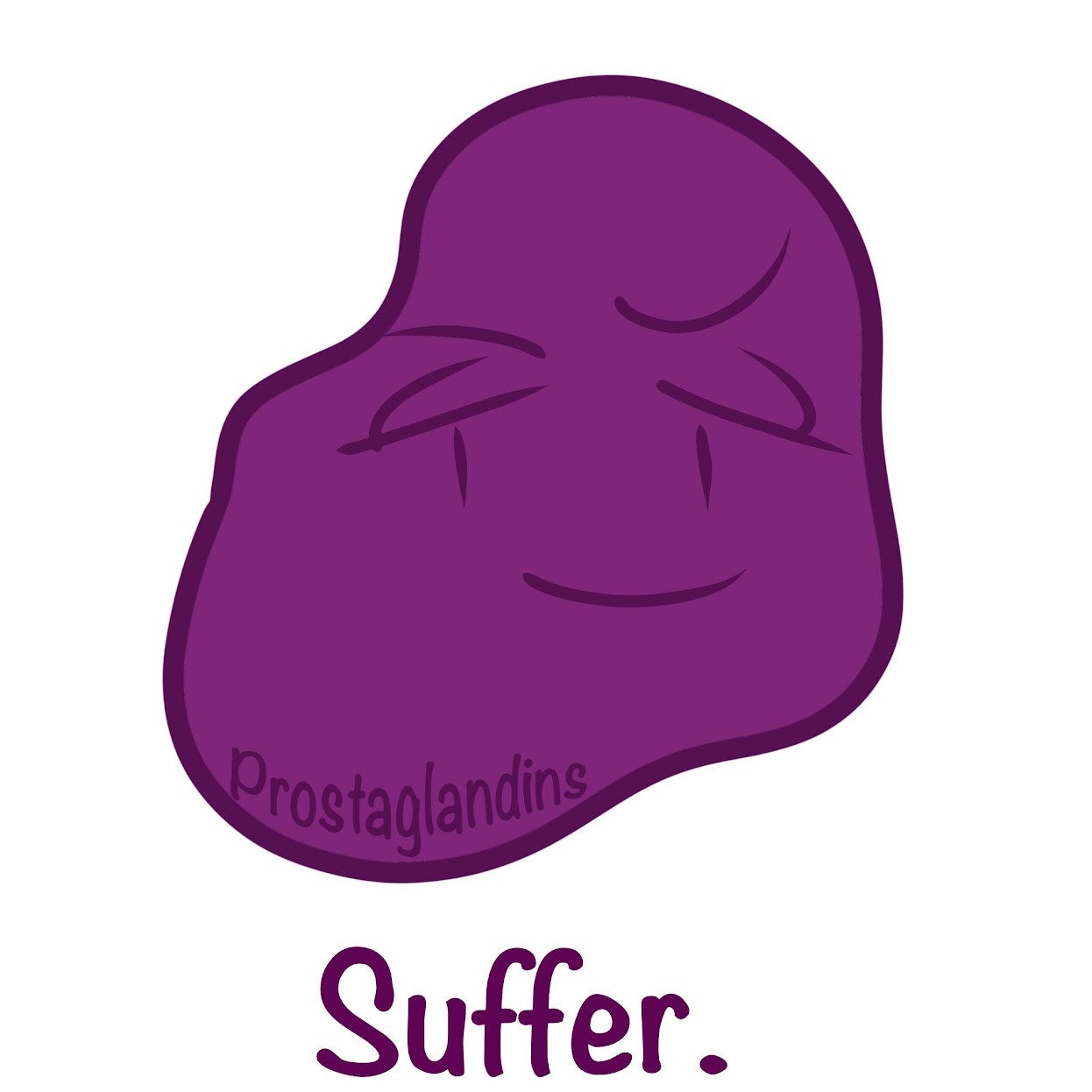
An example of local regulators that promote fever and inflammation, intensify the sensation of pain, and help aggregation of platelets (early step in forming blood clots)
Synaptic signaling
Neurons form specialized junctions with target cells (synapses), where neurons secrete neurotransmitters that diffuse short distances and bind to receptors on target cells
Neuroendocrine Signaling
Specialized neurosecretory cells secrete neurohormones that travel to target cells via the bloodstream
Step 1 of simple endocrine pathways
Hormones are released from an endocrine cell
Step 2 of simple endocrine pathways
Hormones travel through the bloodstream
Step 3 of simple endocrine pathways
Hormones interact with specific receptors on/within a target cell
Step 4 of simple endocrine pathways
Hormones elicit a physiological response
Example of Simple Endocrine Pathways
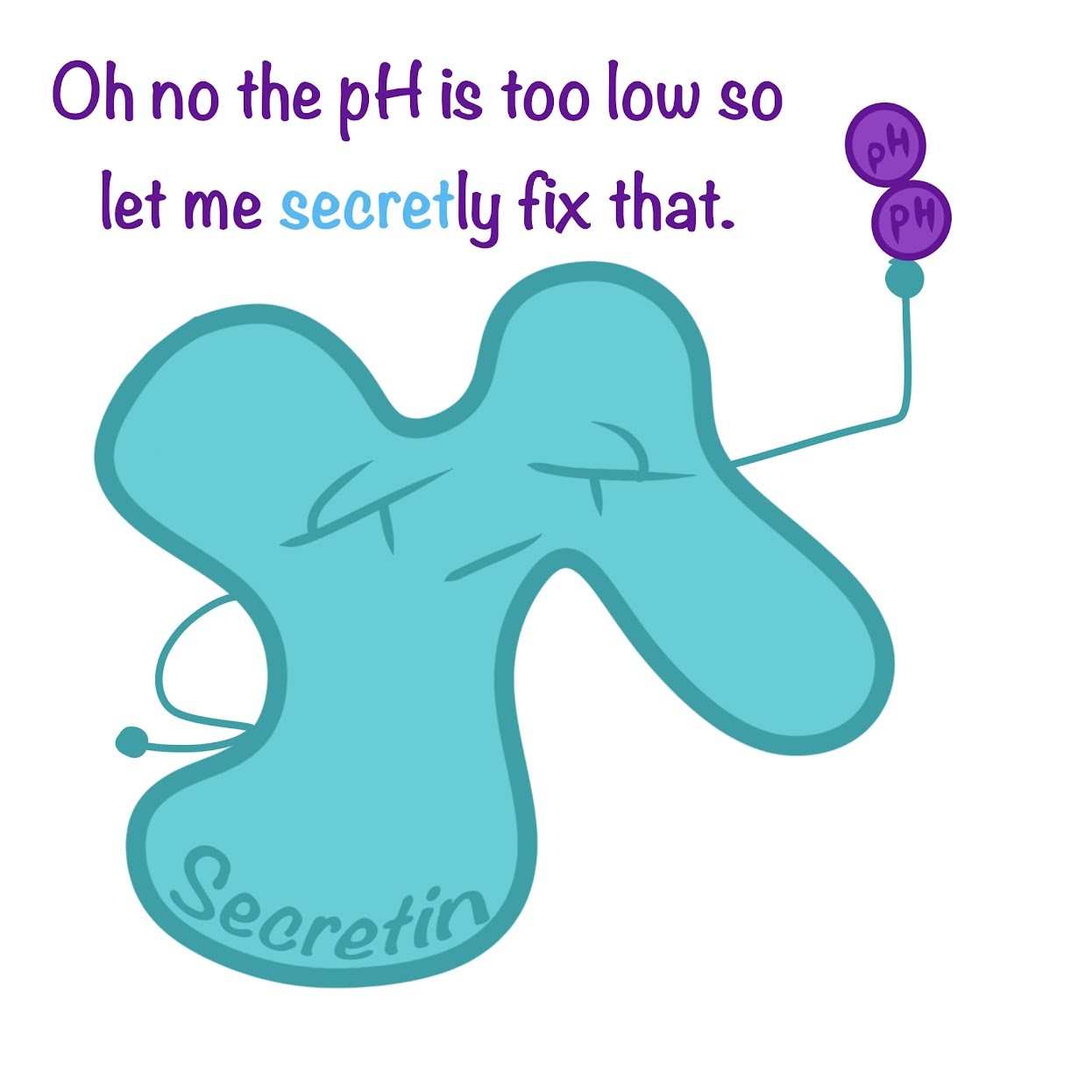
Buffering pH in the duodenum during digestion via the hormone secretin
Step 1 of simple Neuroendocrine pathways
A stimulus is received by a sensory neuron
Step 2 of simple Neuroendocrine pathways
Neurosecretory cell is stimulated
Step 3 of simple Neuroendocrine pathways
The neurosecretory cell secretes a neurohormone
Step 4 of simple Neuroendocrine pathways
The neurohormone enters the bloodstream and travels to target cells
Example of simple Neuroendocrine pathways

Oxytocin signaling by suckling infant
Pheromones
Signaling chemicals released by animals into the environment for communicating with members of the same species
Functions of Pheromones
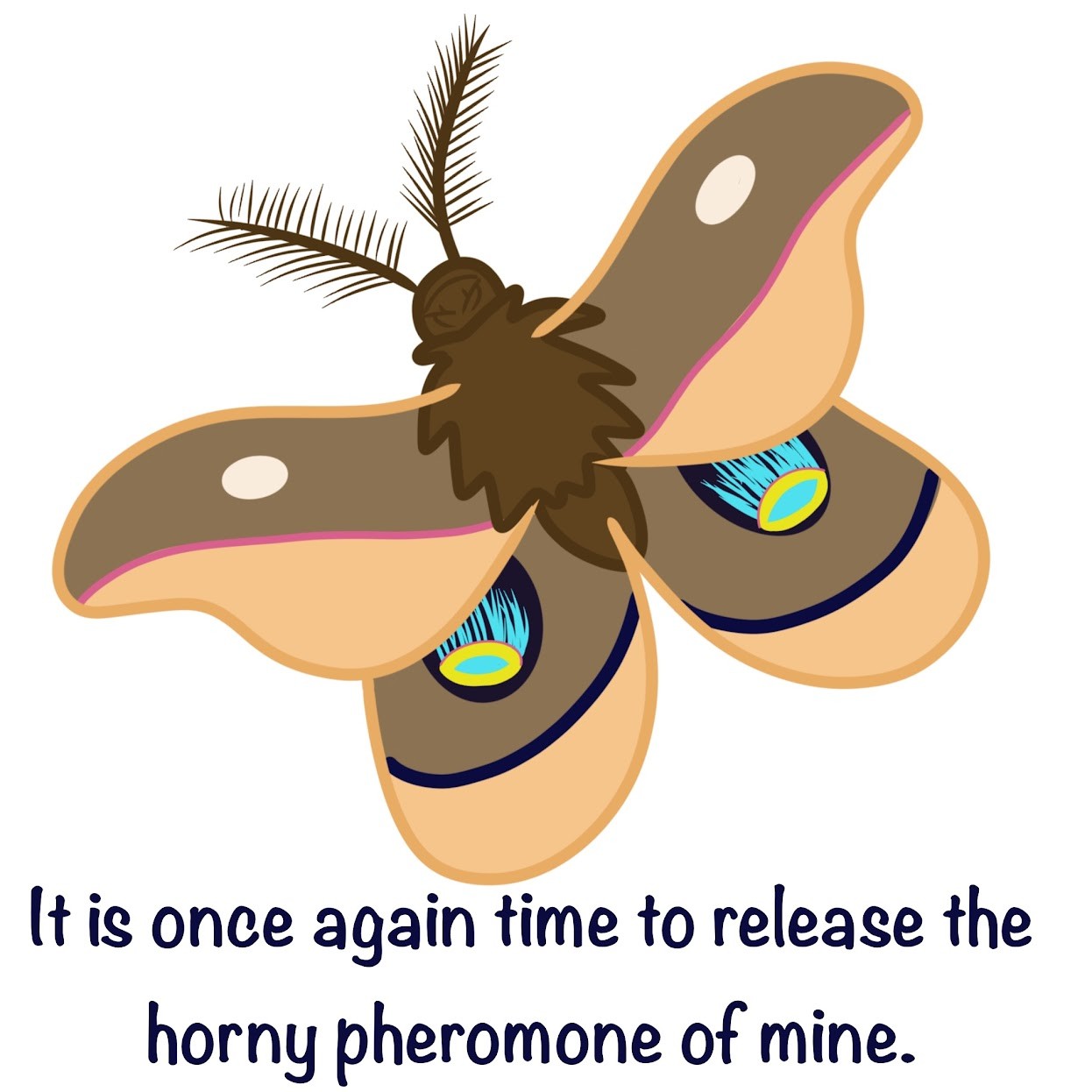
-Marking trails leading to food
-Defining territories
-Warning of predators
-Attracting potential mates
3 major classes of hormones
Polypeptides (proteins/peptides), Amines (from amino acids Tyr & Trp), Lipid (steroids from cholesterol)
Which classes of hormones are water-soluble?
Polypeptides and amines
Which passes through cell membranes better, lipid-soluble or water-soluble hormones?
Lipid-soluble
The solubility of a hormone correlates with
The location of receptors inside or on the surface of target cells
Water-soluble hormones and the bloodstream
Secreted by exocytosis, travels freely in the bloodstream
Lipid-soluble hormones and the bloodstream
Diffuses across cell membranes, travel in the bloodstream bound to transport proteins, and diffuse through the membrane of target cells
Water-soluble hormones and receptors
Binds to cell-surface receptors that then trigger a signal transduction cascade to elicit a specific response
Lipid-soluble hormones and receptors
Binds to receptors in the cytoplasm or nucleus that form hormone-receptor complexes that directly regulate gene transcription
True or False: Hormones always act on only a single cell type or tissue.
False
True of False: Cells may have receptors for more than one hormone.
True
What two regions of the brain are central to endocrine regulation?
Hypothalamus and pituitary gland
Hypothalamus
Receives information from the nervous system and initiates responses through the endocrine system
Posterior Pituitary
Stores and secretes hormones that are made in the hypothalamus
Anterior Pituitary
Makes and releases hormones under regulation of the hypothalamus
What are the 2 hormones stored and released from the posterior pituitary that act directly on non-endocrine tissues?
Oxytocin & Antidiuretic hormone
Oxytocin
Regulates milk secretion by the mammary glands and regulates uterine contractions
Antidiuretic hormone (ADH)
Acts on kidney tubules to regulate kidney function
Anterior Pituitary Hormones
Controls diverse processes such as metabolism, osmoregulation, and reproduction
What controls all anterior pituitary hormones?
Hormones secreted by the hypothalamus
Which three hormones directly increase blood pressure and volume?
Angiotensin II, antidiuretic hormone (ADH), aldosterone
What monitors hormonal regulation of the excretory system?
Osmoreceptors in the hypothalamus (detects the concentration of electrolytes in extracellular fluid)
What is activated when blood pressure drops?
The renin-angiotensin-aldosterone system (RAAS)
What produces most of the sex hormones?
Gonads (testes & ovaries)
The 3 sex hormones
Androgens, Estrogens, Progesterone
Alex Eats Pies.
Androgens
Stimulate development and maintenance of the male reproductive system
What is responsible for male secondary sex characteristics (lower voice, hair growth, more muscle/bone mass)?
Testosterone
Estrogens & Progesterone
Responsible for maintenance of the female reproductive system and the development of female secondary sex characteristics
Most important for maintenance of female reproductive system
Estradiol
Which of the sex hormones is primarily involved in preparing and maintaining the uterus in mammals?
Progesterone
Sex hormones are controlled by what?
Gonadotropins
What releases gonadotropins?
Anterior pituitary
Follicle-stimulating hormone (FSH)
stimulates gamete production
Luteinizing hormone (LH)
Stimulates gonads to produce hormones and triggers ovulation
What controls gonadotropin release?
Hypothalamus (by secreting the gonadotropin-releasing hormone)
What is central to maintaining metabolic balance?
Synthesis and breakdown of glycogen
The synthesis and breakdown of glycogen is regulated by which 2 antagonistic pancreatic hormones?
Glucagon & Insulin
Glucagon is produced by
Alpha cells
Insulin is produced by
Beta cells
Islets
Clusters of pancreatic alpha and beta cells
Insulin
Permits entry of glucose into cells and stimulates storage of glucose as glycogen within the liver
Glucagon
Induces the liver to breakdown glycogen and release glucose to the blood
Type 1 Diabetes
Caused by a deficiency of insulin; autoimmune disease results in destruction of beta cells; appears during childhood and controlled by insulin injections
Type 2 Diabetes
Caused by a decreased response to insulin; generally appears after age 40; controlled by diet, exercise, and medication
What happens when cells are unable to take up enough glucose to meet metabolic needs?
Shift to fat metabolism → accumulation of acidic metabolites and low pH; high blood glucose levels → hyperosmotic condition → severe fluid loss from tissues → diabetic coma